phenotype
description: composite of the organism's observable characteristics or traits resulting from the interaction of its genotype with the environment
278 results
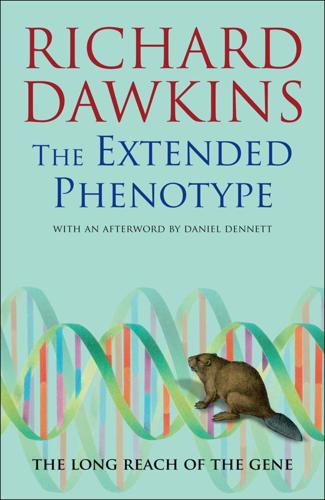
The Extended Phenotype: The Long Reach of the Gene
by
Richard Dawkins
Published 1 Jan 1982
This is more subtle and more useful than to say that ‘we call the resultant object a body’. Of course genes are not directly visible to selection. Obviously they are selected by virtue of their phenotypic effects, and certainly they can only be said to have phenotypic effects in concert with hundreds of other genes. But it is the thesis of this book that we should not be trapped into assuming that those phenotypic effects are best regarded as being neatly wrapped up in discrete bodies (or other discrete vehicles). The doctrine of the extended phenotype is that the phenotypic effect of a gene (genetic replicator) is best seen as an effect upon the world at large, and only incidentally upon the individual organism—or any other vehicle—in which it happens to sit. 7 Selfish Wasp or Selfish Strategy?
…
Genes that achieve sexually attractive phenotypic effects when compared with their alleles are favoured, and it is trivial whether those phenotypic effects are ‘conventional’ or ‘extended’. This is underlined by the interesting observation that bower bird species with especially splendid bowers tend to have relatively drab plumage, while those species with relatively bright plumage tend to build less elaborate and spectacular bowers (Gilliard 1963). It is as though some species have shifted part of the burden of adaptation from bodily phenotype to extended phenotype. So far the phenotypic effects we have been considering have extended only a few yards away from the initiating genes, but in principle there is no reason why the phenotypic levers of gene power should not reach out for miles.
…
A mutant gene arose which, when present in the body of a male mouse, had phenotypic expression in the bodies of female mice with whom he came in contact. The route of action of the gene on its final phenotype was long and complex, but not noticeably more so than routes of genetic action within bodies customarily are. In conventional within-body genetics, the chain of causation leading from gene to observed phenotype may have many links. The first link is always RNA, the second is protein. A biochemist may detect the phenotype that interests him at this second link stage. Physiologists or anatomists will not pick up the phenotype that interests them until more stages have been passed.

The Barbell Prescription: Strength Training for Life After 40
by
Jonathon Sullivan
and
Andy Baker
Published 2 Dec 2016
Three years from now, this lesion will clamp off the blood flow to Phil’s left ventricle in the middle of a Die Hard movie marathon. He’ll breathe his last in the cardiac ICU 6 weeks later, age 58. Same genotype. Very different phenotypes. More specifically, Will and Phil have different aging phenotypes and different death phenotypes. Phil’s aging phenotype is an unsightly and miserable catastrophe, while his brother’s is an exemplar of healthy aging. Will’s death phenotype is be envied: he’s healthy, vigorous, active and happy until the minute a tired, tiny vessel in his brainstem switches him off in the middle of a great final adventure at the end of his ninth decade, many years from now.
…
In other words, during development, childhood, and adolescence, Will and Phil demonstrate astonishingly similar phenotypes. Because their phenotypes are heavily influenced by their genotypes, this is not surprising. It is the genes, after all, that provide the source code for our biological development and overall constitution. Let’s fast-forward about 55 years. What has happened to the genotypes of Will of Phil? Nothing. They still share exactly the same genotype (a few cosmic rays, transposons and viral infections notwithstanding). But when we step out of our time machine, we find that their phenotypes are vastly different. Will has the more uncommon phenotype. He’s an avid sportsman.
…
Instead, the distribution is skewing away from Will and toward Phil.7 The “average” human genotype has not changed substantially in many thousands of years, but in the postmodern era, the human phenotype of industrialized nations has undergone a staggering and destructive transformation.8 Will’s Healthy Aging Phenotype is more achievable than at any time in human history. But Phil’s Sick Aging Phenotype, as defined below, is well on the way to becoming the norm. Because this is a phenotypic transformation, and not a genotypic one, most scientists and physicians have concluded that the blame for this slow-motion public health catastrophe falls squarely on environmental and behavioral variables.9 I believe this conclusion is correct in general, although there remains considerable controversy about the particulars, especially with regard to the role of cultural influences, medical interventions, and diet.10 It appears the modern aging phenotypes are profoundly sensitive to a number of external and behavioral variables.
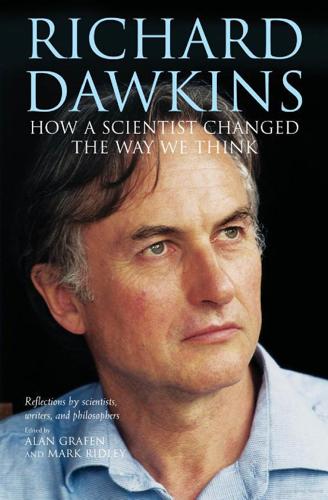
Richard Dawkins: How a Scientist Changed the Way We Think
by
Alan Grafen; Mark Ridley
Published 1 Jan 2006
The Surrey puma question can now be answered: the scratch marks (even allowing for media misrepresentation) were not themselves a puma or for that matter a dog. They were certainly the phenotypic expression of genes for scratching behaviour. Yet, in the absence of any evidence that they affect the survival of scratch-generating genes, they do not deserve the description of extended phenotype. For the 1999 edition of The Extended Phenotype, the subtitle was changed; it now reads The long reach of the gene. The case of the caddis is an example of this too, as it shows how genes sitting in the larva are responsible for producing a structure detached from it.
…
But the definition of the gene as a protein-encoding stretch of DNA is more recent than its definition as that which is responsible for a phenotypic difference, and it is not surprising that the modern molecular definition has not fully supplanted the older operational definition. Experimental geneticists invoke genes to explain observed phenotypic differences. A pink-eyed fly differs from a red-eyed fly because the former possesses a gene for pink eyes inherited from both parents whereas the latter has inherited at least one gene for red eyes. In a similar way, evolutionary biologists often invoke genes to explain hypothetical phenotypic differences in an attempt to understand the nature of adaptation by natural selection.
…
Communication acts appear closer to the concept of genotype (things transmitted) whereas the conscious and unconscious effects of these acts on our internal state appear closer to phenotype (effects that influence what is transmitted). In the history of genetics, the phenotype was apparent and the genotype hidden. But this relation seems to be reversed for memetics. Memes are observed, rather than inferred from their effects, whereas their effects are in large part hidden. The phenotype/genotype distinction works fairly well for genes, but there are many unresolved problems in its application to memes. For example, let’s suppose that there is a body of lore preserved and updated by the Medieval Guild of Propagandists about what techniques are effective in changing public opinion, and that this body of lore is passed from master to apprentice.
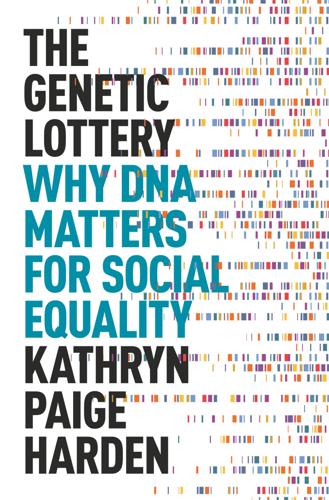
The Genetic Lottery: Why DNA Matters for Social Equality
by
Kathryn Paige Harden
Published 20 Sep 2021
Estimates of heritability do provide information on whether genes cause a phenotype. But these designs don’t provide information about what mechanisms connect genotypes and phenotypes, and the relevant mechanisms might not be intuitively “biological” processes. Jencks’s thought experiment about red-headed children has become a meme in discussions about genetics. It’s an enduring idea, I think, because it intuitively captures three ideas that are worth unpacking in more detail—(1) causal chains, (2) levels of analysis, and (3) alternative possible worlds. First, the red-headed child example makes clear that genes can be connected to phenotypes via long causal chains.2 In this example, a variant of the MC1R gene codes for pheomelanin, which makes one’s hair visibly red.
…
The number of copies of each SNP is multiplied by the strength of its relationship to educational attainment, and then everything is added up across all the SNPs that have been measured in your genome (figure 3.1). This composite is a polygenic index. FIGURE 3.1. Creating a polygenic index. Figure reproduced from Daniel W. Belsky and K. Paige Harden, “Phenotypic Annotation: Using Polygenic Scores to Translate Discoveries from Genome-Wide Association Studies from the Top Down,” Current Directions in Psychological Science 28, no. 1 (February 2019): 82–90, https://doi.org/10.1177/0963721418807729. Correlations between individual SNPs and a phenotype are estimated in a “Discovery GWAS” with a large sample size. Many GWAS have samples that exceed millions of people. Then, a new person’s DNA is measured.
…
What you discover in one group isn’t expected to apply to another group, and if you study a different group, you might discover different genes. This expectation is clearly borne out by the data. Looking across a diverse set of phenotypes ranging from HDL cholesterol to schizophrenia, polygenic indices based on analyses of European ancestry populations are less strongly related to phenotypes measured in other populations, particularly African ancestry groups.24 When researchers have used an educational attainment GWAS to construct a polygenic index in White-identified, European-ancestry samples from the UK or Wisconsin or New Zealand, then the score “worked”—it captured more than 10 percent of the variance in educational attainment in those samples.
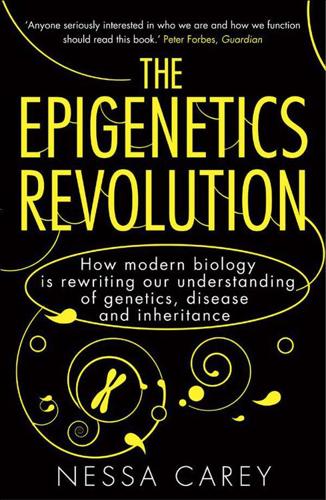
Epigenetics Revolution: How Modern Biology Is Rewriting Our Understanding of Genetics, Disease and Inheritance
by
Nessa Carey
Published 31 Aug 2011
Of mice and men (and women) These data are consistent with a model where epigenetic changes could account for at least some of the reasons why MZ twins aren’t phenotypically identical, but there’s still a lot of supposition involved. That’s because for many purposes humans are a quite hopeless experimental system. If we want to be able to assess the role of epigenetics in the problem of why genetically identical individuals are phenotypically different from one another, we would like to be able to do the following: Analyse hundreds of identical individuals, not just pairs of them; Manipulate their environments, in completely controlled ways; Transfer embryos or babies from one mother to another, to investigate the effects of early nurture; Take all sorts of samples from the different tissues of the body, at lots of different time points; Control who mates with whom; Carry out studies on four or five generations of genetically identical individuals.
…
Taken together, the most straightforward interpretation of these data is that epigenetic inheritance has taken place. In other words, an epigenetic modification (probably DNA methylation) was transferred along with the genetic code. This transfer of the phenotype from one generation to the next wasn’t perfect – not all the offspring looked exactly the same as their mother. This implies that the DNA methylation that controls the expression of the agouti phenotype wasn’t entirely stable down the generations. This is quite analogous to the effects we see in suspected cases of human transgenerational inheritance, such as the Dutch Hunger Winter. If we look at a large enough number of people in our study group we can detect differences in birth weight between various groups, but we can’t make absolute predictions about a single individual.
…
It’s far more likely that there is the transmission of an epigenetic modification at the AxinFu gene from either parent to offspring. These model systems have been really useful in demonstrating that transgenerational inheritance of a non-genetic phenotype does actually occur, and that this takes place via epigenetic modifications. This is truly revolutionary. It confirms that for some very specific situations Lamarckian inheritance is taking place, and we have a handle on the molecular mechanism behind it. But the agouti and kinked tail phenotypes in mice both rely on the presence of specific retrotransposons in the genome. Are these special cases, or is there a more general effect in play? Once again, we return to something that has a bit more immediate relevance for us all.
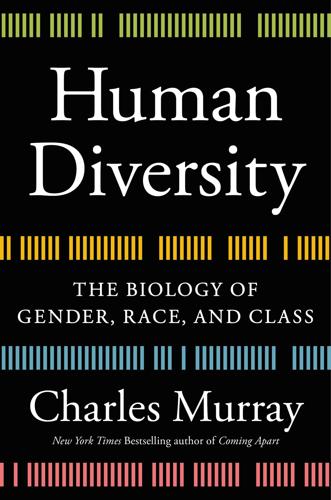
Human Diversity: The Biology of Gender, Race, and Class
by
Charles Murray
Published 28 Jan 2020
Along with prior work on how FT influences behavior, this work highlights FT as an important developmental mechanism contributing to sex differences in neuroanatomy.”107 There’s more on this topic that I will not try to cover (the note has some more sources for the curious), nor will I try to cover the continuing debate about the details.108 My limited point is that the debate is being conducted within a consensus among neuroscientists that the male brain is more lateralized than the female brain. The differences are consistent with observed phenotypic sex differences in visuospatial and verbal skills. Sex Differences in Emotional Cognition and Memory I promised that I would give you a glimpse of the progress that is being made in directly linking sex differences in the brain to sex differences in the phenotype. I chose progress in understanding sex differences in emotional response because an extensive technical literature has been accumulating and because of the intriguing links between the female phenotypic advantage in certain kinds of memory and the greater female vulnerability to depression.[109] The story that is emerging has not reached the level of settled science, but progress has been remarkable.
…
The greater lateralization of the male brain has been documented by a variety of evidence about sex differences in structural connectivity and functional connectivity. These findings bear on phenotypic sex differences in visuospatial and verbal skills. Differences in the functioning of the amygdala, hypothalamus, and other regions of the limbic system appear to have links with phenotypic sex differences in memory and vulnerability to depression. These topics barely scratch the surface. For example, I described sex differences in memory as they are related to the amygdala. Researchers are now integrating the findings on the phenotypic sex differences in memory, spatial abilities, and perceptual processing (the temporal order in which a scene and its individual features are recognized) into an explanation that invokes sex differences in the amygdala, hippocampus, and lateralization, all mediated by the locus coeruleus in the brain stem and the adrenal glands (more precisely, the catecholamine system).135 For those of you who want to get a broader sense of how much has been done and is under way in research on sex differences in the brain and are prepared to cope with some densely technical material, I recommend a 2019 review article, “Sex Differences in the Developing Brain.”136 Probably the takeaway with the most long-term importance is that it’s still early days.
…
A Personal Interpretation of the Material in Part I I reserve an entire chapter at the end of the book for my own interpretation of larger issues, but I also end Parts I, II, and III with personal statements of my reading of the material. Males and females are different. A lot different. The distinctions that show up in the phenotypic evidence on personality, abilities, educational choices, vocational choices, and career paths are interconnected both conceptually and empirically. The links between these phenotypic differences and the sex differences in the brain are still only partly understood, but what we have learned so far also hangs together. I expect that the more we learn, the more closely phenotypic differences will match up with genetic differences. I will also assert without trying to demonstrate it that this coherent picture fits seamlessly within the context of evolutionary pressures over millions of years that shaped Homo sapiens.
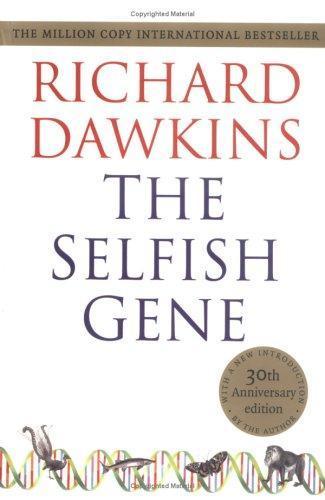
The Selfish Gene
by
Richard Dawkins
Published 1 Jan 1976
Beneficial means that they make the embryo likely to develop into a successful adult, an adult likely to reproduce and pass those very same genes on to future generations. The technical word Phenotype is used for the bodily manifestation of a gene, the effect that a gene, in comparison with its alleles, has on the body, via development. The phenotypic effect of some particular gene might be, say, green eye colour. In practice most genes have more than one phenotypic effect, say green eye colour and curly hair. Natural selection favours some genes rather than others not because of the nature of the genes themselves, but because of their consequences-their phenotypic effects. Darwinians have usually chosen to discuss genes whose phenotypic effects benefit, or penalize, the survival and reproduction of whole bodies.
…
To solve our problem, we have to begin by purging our minds of old attitudes that covertly take the individual organism for granted; otherwise we shall be begging the question. The instrument with which we shall purge our minds is the idea that I call the extended phenotype. It is to this, and what it means, that I now turn. The phenotypic effects of a gene are normally seen as all the effects that it has on the body in which it sits. This is the conventional definition. But we shall now see that the phenotypic effects of a gene need to be thought of as all the effects that it has on the world. It may be that a gene's effects, as a matter of fact, turn out to be confined to the succession of bodies in which the gene sits.
…
More, an orthodox chromosomal gene and a virus that is transmitted inside the host's egg would agree in wanting the host to succeed not just in its courtship but in every detailed aspect of its life, down to being a loyal, doting parent and even grandparent. The caddis lives inside its house, and the parasites that I have so far discussed have lived inside their hosts. The genes, then, are physically close to their extended phenotypic effects, as close as genes ordinarily are to their conventional phenotypes. But genes can act at a distance; extended phenotypes can extend a long way. One of the longest that I can think of spans a lake. Like a spider web or a caddis house, a beaver dam is among the true wonders of the world. It is not entirely clear what its Darwinian purpose is, but it certainly must have one, for the beavers expend so much time and energy to build it.

Blueprint: The Evolutionary Origins of a Good Society
by
Nicholas A. Christakis
Published 26 Mar 2019
The effects of genes are thus hard to discern—because there are many ways genes can influence phenotypes, especially in the case of behaviors. To complicate matters, just as many genes can affect a single phenotype (making that trait polygenic), a single gene can affect many phenotypes—for example, a gene that affects obesity might also affect the ability to process cholesterol. This is known as pleiotropy. Given all this complexity, it is important to understand a bit of shorthand when speaking about genes. When scientists say that there is a gene or genes “for” a trait, it means that variations in a genotype correspond to variations in a phenotype, not necessarily that a specific gene is solely responsible for a specific phenotype.
…
The study of genetics and heredity began with how genotypes (genes and their variants) shape phenotypes (an organism’s physical appearance and function). But phenotypes eventually came to be seen as any manifestations of genes, moving beyond physical appearance to include the way the brain works and, ultimately, human personalities and behaviors. Using a variety of techniques, such as studying twins and analyzing tiny variations in DNA, behavior geneticists have explored whether the genome as a whole and also certain genes in particular help to explain complex phenotypes like neuroticism, decision-making, and friendliness. So broad and powerful is the impact of genes on behavior that, in 2000, psychologist Eric Turkheimer formulated this “first law” of behavior genetics: “All human behavioral traits are heritable.”26 One extraordinary study combined data from 2,748 publications involving over fourteen million twin pairs and 17,804 human traits.
…
The environment inside the body can affect the availability of substances to interact with those molecules. And even the environment outside the body—both physical (like rain or sunshine) and social (like being surrounded by friends or foes)—can modify how genes are expressed or activated. Still, although a gene may lead to one phenotype in one environment and a different phenotype in another, scientists generally first look at the gene and the phenotype to see if there is a relationship. If there is, then they can explore whether and how this relationship depends on measurable environmental factors.29 It’s increasingly clear that genes and the environment interact to shape our lives as individuals, not just our evolution as a species.
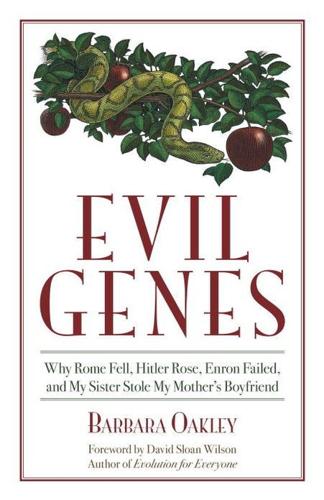
Evil Genes: Why Rome Fell, Hitler Rose, Enron Failed, and My Sister Stole My Mother's Boyfriend
by
Barbara Oakley Phd
Published 20 Oct 2008
Depending on the stress and our genetic predisposition, we can be pushed toward depression, eating disorders, drug abuse, or cancer.8 If a person already has a mild form of a personality disorder, he or she can be pushed into a full-blown version. Intermediate Phenotype Intermediate phenotype is a concept used by researchers who are wrestling with the relationship between genes and phenotype. To understand “intermediate phenotype,” it's helpful to remember that there is often an intermediate case between a full-blown manifestation of a disease and a less harmful variant. In personality disorders, intermediate phenotypes, sometimes called endophenotypes, are used to describe people with subclinical symptoms of diseases like schizophrenia or borderline personality disorder. The stipulation for an intermediate phenotype is that it be found in mildly ill but not “certifiable” siblings and other relatives, and that it even be found in some psychiatrically well relatives.
…
A medical imaging technique that involves figuring out the size, shape, and function of organs such as the amygdala and cingulate cortex and then evaluating the same person's genes to see how they compare. intermediate phenotype. Phenotype generally refers to a trait you can see on the outside of a body, such as red hair. Intermediate phenotype is related to a trait or part on the inside of the body, such as the liver or the amygdala. Many times it's easier to see if a gene has an effect on the intermediate phenotype inside the body than on the phenotype visible outside the body. junk DNA. Molecules of DNA that seem to serve no useful purpose and lie around generally being bored. Occasionally, however, they turn out to control important activities in the cell.
…
Egan's study was one of the first times that a correlation of an intermediate phenotype with a gene was shown to clarify how a gene related to a complex clinical diagnosis.9 “What's so surprising,” marvels Daniel Weinberger, Egan's colleague at the National Institute of Mental Health, “is that it works.”10 It appears that the next step beyond imaging genetics may relate to the synergistic use of genotyping, neuroimaging, and intermediate phenotypes. It will be exciting to see what future studies reveal when these techniques are applied to antisocial personality disorder, other related syndromes, and their subclinical “intermediate phenotypes.” Faced with the overwhelming variety of phenotypes that can arise from this mixture of genes and environment, it's hard to know where to even begin looking at a person's genome to determine which alleles might be key in motivating behavioral traits.

The Gene: An Intimate History
by
Siddhartha Mukherjee
Published 16 May 2016
Penetrance: The proportion of organisms that carry a particular variant of a gene that also expresses the associated trait or phenotype. In medical genetics, penetrance refers to the proportion of individuals carrying a genotype that manifest the symptoms of an illness. Phenotype: The set of an individual’s biological, physical, and intellectual traits, such as skin color or eye color. Phenotypes can also include complex traits, such as temperament or personality. Phenotypes are determined by genes, epigenetic alterations, environments, and random chance. Protein: A chemical comprised, at its core, of a chain of amino acids that is created when a gene is translated.
…
To explain the intersection of genetics, natural selection, and evolution in formal terms, Dobzhansky resurrected two important words—genotype and phenotype. A genotype is an organism’s genetic composition. It can refer to one gene, a configuration of genes, or even an entire genome. A phenotype, in contrast, refers to an organism’s physical or biological attributes and characteristics—the color of an eye, the shape of a wing, or resistance to hot or cold temperatures. Dobzhansky could now restate the essential truth of Mendel’s discovery—a gene determines a physical feature—by generalizing that idea across multiple genes and multiple features: a genotype determines a phenotype But two important modifications to this rule were necessary to complete the scheme.
…
First, Dobzhansky noted, genotypes were not the sole determinants of phenotypes. Obviously, the environment or the milieu that surrounds an organism contributes to its physical attributes. The shape of a boxer’s nose is not just the consequence of his genetic heritage; it is determined by the nature of his chosen profession, and the number of physical assaults on its cartilage. If Dobzhansky had capriciously trimmed the wings of all the flies in one box, he would have affected their phenotypes—the shape of their wings—without ever touching their genes. In other words: genotype + environment = phenotype And second, some genes are activated by external triggers or by random chance.
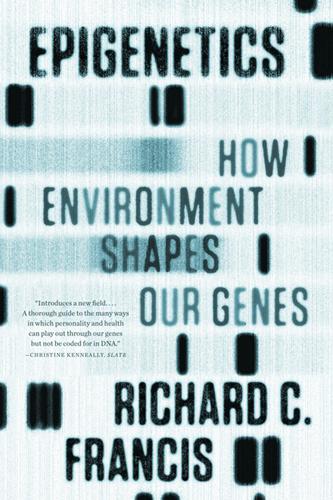
Epigenetics: How Environment Shapes Our Genes
by
Richard C. Francis
Published 14 May 2012
James Barker proposed that when the fetus receives insufficient nutrition through the placenta, it becomes programmed in the womb for a thrifty phenotype.9 As was proposed for the thrifty-genes hypothesis, those with a thrifty phenotype have a more efficient metabolism than babies born at a normal birth weight. But the thrifty phenotype can result from diverse genetic backgrounds and without the aid of specific obesity genes. It is, rather, simply a function of the intrauterine environment. The thrifty phenotype works out well in traditional non-Western cultures where the postnatal environment is often one of scarcity. In those cases, the prenatal environment predicts the postnatal environment in an adaptive way.
…
Problems arise, however, if the postnatal environment is enriched food-wise relative to the prenatal environment. When this mismatch occurs, thrifty phenotypes result in obesity and its consequences. The Barker hypothesis nicely accounts for the correlation between low birth weight and adult obesity and has been bolstered by much, though certainly not all, subsequent research.10 But what is the nature of this so-called programming? Barker himself has little interest in the mechanism through which this effect of the uterine environment occurs. Others, though, have pursued mechanistic investigations of thrifty phenotypes, and, as is usually the case, the initial studies have been conducted on nonhuman mammals—especially mice, rats, and sheep.
…
Roux, Wilhelm sainthood, criteria for schizophrenia: in Dutch famine cohort gene mutation and stress biasing and Scruggs, Jan sea urchins self-esteem, maternal style and self-nonself distinction, in immune system self-organization, of developmental processes September 11, 2001, terrorist attacks sex-linked traits see also X chromosome sexual development: genomic imprinting and Kallmann syndrome and Silver-Russell syndrome small interfering RNAs (siRNAs) Smith, Clement social inheritance social interactions: gene regulation and in gorillas infant-parent relationship in somatic mutation theory (SMT) of cancer somatic stem cells cancer and, see somatic mutation theory (SMT) of cancer spatial cognition sperm cells: in egg fertilization epigenetic attachments removed in production of sperm development spina bifida stamping, genetic stature, genomic imprinting and stem cells blood induced pluripotent neural see also embryonic stem cells; somatic stem cells stress, maternal stress axis hyperresponsiveness in, see stress biasing stress biasing epigenetic gene regulation and maternal style and in mice and rat studies in primates stress response to chronic stressors fight or flight hyperactivity of, see stress biasing in monozygotic twins substance abuse maternal style and Suomi, Steven tactile stimulation Tanganyika, Lake Tasmanian devils cancer in, see devil facial tumor disease (DFTD) healing capacity of immune response in Tatum, Edward teratocarcinoma cells testes endocrine disruptors and steroid abuse and shrinkage of testosterone competitive interactions and Thailand, diet and obesity in “thrifty genes” hypothesis thrifty phenotype thymine tigons tissue-based theory of cancer Toguchi, Audrey Toronto zoo totipotent cells traits: genes as linked to sex-linked transcription transcription factors transdifferentiation transgenerational epigenetic processes translation translocation tumor suppressor genes Turner neurocognitive phenotype Turner syndrome unipotent cells viable yellow (Avy) agouti allele Vietnam Veterans Memorial Vietnam War vinclozolin Vindicated (Canseco) violence, steroid use and vision, color, see color vision vitalism vitamin B12 Waddington, Conrad war, epigenetic changes induced by Washington, George Watson, James Wayne, John weed killers Weismann, August Western lifestyle: obesity and stress in Wilhelmina Gasthuis Hospital Wilms’ tumor Wolf, Caspar Friedrich womb, see fetal environment World Trade Center, 9/11 attack on World War I, shell shock in World War II: battle fatigue in Dutch famine in, see Dutch famine Wright, Sewall X chromosome opsins on see also sex-linked traits X inactivation epigenetic processes in histones in in marsupials methylation in randomness in X-inactivation center (Xic) X-inactive-specific transcript (Xist) XO females “X-women,” Y chromosome zebras zinc zorse zygote epigenesis theory of in preformationist theory in stem cell controversy as totipotent Copyright © 2011 by Richard C.
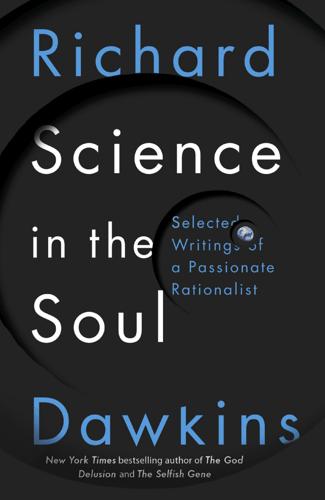
Science in the Soul: Selected Writings of a Passionate Rationalist
by
Richard Dawkins
Published 15 Mar 2017
Deeper consideration, however, shows that the truth is almost the exact opposite. It is central and essential to Darwinian (as opposed to Lamarckian) evolution that there shall be causal arrows flowing from genotype to phenotype, but not in the reverse direction. Changes in gene frequencies are not passive book-keeping records of phenotypic changes: it is precisely because (and to the extent that) they actively cause phenotypic changes that evolution of the phenotype can occur. Serious errors flow, both from a failure to understand the importance of this one-way flow,*18 and from an over-interpretation of it as inflexible and undeviating ‘genetic determinism’.
…
Direction (order) imposed on random variation by natural selection Darwinism – the non-random selection of randomly varying replication entities by reason of their ‘phenotypic’ effects – is the only force I know that can, in principle, guide evolution in the direction of adaptive complexity. It works on this planet. It doesn’t suffer from any of the drawbacks that beset the other five classes of theory, and there is no reason to doubt its efficacy throughout the universe. The ingredients in a general recipe for Darwinian evolution are replicating entities of some kind, exerting phenotypic ‘power’ of some kind over their replication success. In The Extended Phenotype I referred to these necessary entities as ‘active germ-line replicators’ or ‘optimons’.
…
In The Extended Phenotype I referred to these necessary entities as ‘active germ-line replicators’ or ‘optimons’. It is important to keep their replication conceptually separate from their phenotypic effects, even though, on some planets, there may be a blurring in practice. Phenotypic adaptations can be seen as tools of replicator propagation. Gould disparages the replicator’s-eye view of evolution as preoccupied with ‘book-keeping’. The metaphor is a superficially happy one: it is easy to see the genetic changes that accompany evolution as book-keeping entries, mere accountant’s records of the really interesting phenotypic events going on in the outside world. Deeper consideration, however, shows that the truth is almost the exact opposite.
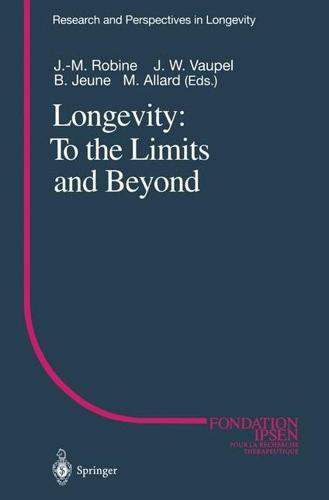
Longevity: To the Limits and Beyond (Research and Perspectives in Longevity)
by
Jean-Marie Robine
,
James W. Vaupel
,
Bernard Jeune
and
Michel Allard
Published 2 Jan 1997
Indeed, when compensatory adaptation takes place in a "fit" organism, it is most likely to bring it downhill. Natural Selection and Aging Let us come back to the phase space of an organism, adding the time dimension, and let us consider the complete phenotype in one block, unfolded in space and time. The pre-reproductive section of the phenotype has been perfected by natural selection, whereas the post-reproductive part of the phenotype has been neglected. A hallmark of natural selection optimization is a good homeostatic capacity, an adequate response to challenges, giving the impression that every situation has been predicted, that all the components of the organism are useful, well coordinated and under control.
…
The genetic approach is especially valuable in the analysis of aging because genetic manipulations leading to a stable alteration of genotype also lead to a stable alteration of phenotype in the organism. This phenotypic alteration can now be studied at many levels from the in vivo effects on life expectancy, to altered biochemical and physi010gical processes and even to studies at the level of the molecule. Also the genetic approach is unbiased by the interests and prior expectations or hypotheses of the investigator in that virtually any gene in the organism that leads to the desired phenotypic change can be identified and studies as a causal determinant oflongevity extension. Genetic approaches lead to more than a finding; they lead to an altered strain or stock that can be shared with other laboratories.
…
QTLs for life expectancy were identified on linkage groups (LGs) II (near the stP101 molecular marker), IV (near stP5) and X (near stP61), and QTLs for fertility were identified on LGs II (near maP1), III (near stP19) and IV (near stP51). The QTLs for life expectancy accounted for almost all of the genetic variance (only 23 % of the phenotypic variance). The QTLs for mean fertility accounted for 85 % of the genetic variance and 45 % of the phenotypic variance. Additional QTLs for other life history traits were also mapped in these crosses. There was no evidence for epistatic effects between QTLs but several loci were observed to have effects on the QTLs identified. No QTLs were pleiotropic (having effects on different life history traits) with the exception of negatively correlated, pleiotropic effects between life expectancy and internal hatching associated with a QTL near the stP5 marker.
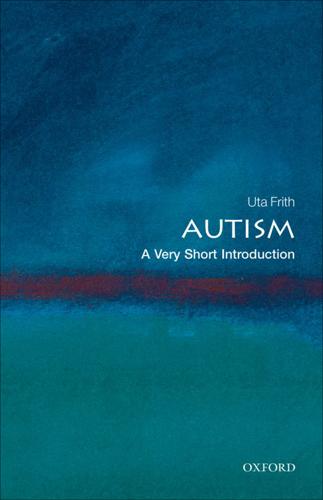
Autism: A Very Short Introduction
by
Uta Frith
Published 22 Oct 2008
Even if autism is extremely variable as far as its causes and as far as the resulting behaviour patterns are concerned, there is some common denominator. This is a cognitive phenotype. Perhaps there are more than one common pathway and more than one cognitive phenotype. This would be the case if distinct subgroups on the autism spectrum could be identified. What if each of the five big ideas defined a cognitive phenotype? Basically you can think of a cognitive phenotype as encapsulating one of the big ideas. Perhaps this division would make the search for the causes of autism simpler. Could there be five types of autism?
…
Let’s take another example. Do David, Gary, and Edward show a cognitive phenotype of weak central coherence? This phenotype represents individuals who by preference will focus attention on details and cannot easily be distracted away. A battery of tests is again needed—tests of the right difficulty level, reliability, and validity. These would probably include tests of attention and tests of intelligence. One of the aims of the weak central coherence idea is after all to explain an uneven pattern of intelligence. We might suspect that Gary would not have this phenotype—he did not have outstanding abilities or narrow interests—but David probably would.
…
Sometimes quite strong and sometimes very watered down symptoms can be seen in the relatives. The observation of very mild autistic features in relatives is greater than might be expected by chance. This has given rise to the idea that there is indeed a broader phenotype of autistic disorders. This means that the genes that are responsible for this phenotype might exist in quite a large number of people, hardly any of whom are autistic themselves. Perhaps these genes predispose them to have children with ASD. This idea is plausible, but as yet speculative. Are we all—or at least all men—a little bit autistic?
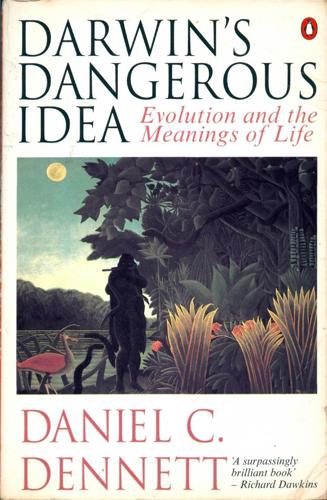
Darwin's Dangerous Idea: Evolution and the Meanings of Life
by
Daniel C. Dennett
Published 15 Jan 1995
But now we introduce just one "minor" change: suppose that although the individual organisms start out with different wirings (whichever wiring was ordered by their particular genotype or genetic recipe) — as shown by their scatter on the fitness landscape — they have some capacity to adjust or revise their wiring, depending on what they encounter during their lifetimes. (In the language of evolutionary theory, there is some "plasticity" in their phenotypes. The phenotype is the eventual body design created by the genotype in interaction with environment. Identical twins raised in different environments would share a genotype but might be dramatically different in phenotype.) Suppose, then, that these organisms can end up, after exploration, with a design different from the one they were born with. We may suppose their explorations are random, but they have an innate capacity to recognize (and stay with) a Good Trick when they stumble upon it.
…
Remember Orgel's Second Rule! In his account of Biomorph Land, Dawkins stresses that a tiny — indeed minimal — change in the genotype (the recipe) can produce a strikingly large change in the phenotype (the resulting individual organism), but he tends to slight one of the major implications of this: if a single step in the genotype can produce a giant step in the phenotype, intermediate steps for the phenotype may be simply unavailable, given the mapping rules. To take a deliberately extreme and fanciful example, you might think that if a beast could have twenty-centimeter tusks and forty-centimeter tusks, it would stand to reason that it could also have thirty-centimeter tusks, but the rules {118} for tusk-making in the recipe system may not allow for such a case.
…
The trouble with the diagram is that it needs more dimensions, so we can compare the steps in genotype space (the typographical steps in the Library of Mendel) to the steps in phenotype space (the design innovations in Design Space) and then evaluate these differences on a fitness landscape. As we have seen, the relations between recipe and result are complex, and many possibilities might be illustrated. We saw in chapter 5 that a small typographical change in the genome could in principle have a large effect on the phenotype expressed. We also saw, in chapter 8, that some typographical changes in the genome can have no effect at all on the phenotype — there are over a hundred different ways of "spelling" lysozyme, for instance, and hence more than a hundred equivalent ways of spelling the order for lysozyme in DNA codons.
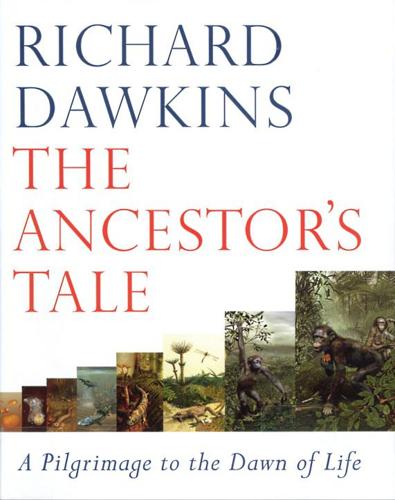
The Ancestor's Tale: A Pilgrimage to the Dawn of Evolution
by
Richard Dawkins
Published 1 Jan 2004
But beaver genes have special phenotypes quite unlike those of tigers, camels or carrots. Beavers have lake phenotypes, caused by dam phenotypes. A lake is an extended phenotype. The extended phenotype is a special kind of phenotype, and it is the subject of the rest of this tale, which is a brief summary of my book of that title. It is interesting not only in its own right but because it helps us to understand how conventional phenotypes develop. It will turn out that there is no great difference of principle between an extended phenotype like a beaver lake, and a conventional phenotype like a flattened beaver tail.
…
The allele makes the difference when its phenotype is compared with the corresponding phenotype, at the end of the correspondingly long chain of causation that proceeds from the alternative allele. Gene differences cause phenotypic differences. Gene changes cause phenotypic changes. In Darwinian evolution alleles are selected, vis-a-vis alternative alleles, by virtue of the differences in their effects on phenotypes. The beaver's point is that this comparison between phenotypes can happen anywhere along the chain of causation. All intermediate links along the chain are true phenotypes, and any one of them could constitute the phenotypic effect by which a gene is selected: it only has to be 'visible' to natural selection, nobody cares whether it is visible to us.
…
Selection drives evolution only to the extent that the alternative types owe their differences to genes. If the differences are not inherited, differential survival has no impact on future generations. For a Darwinian, phenotypes are the manifestations by which genes are judged by selection. When we say that a beaver's tail is flattened to serve as a paddle, we mean that genes whose phenotypic expression included a flattening of the tail survived by virtue of that phenotype. Individual beavers with the fiat-tailed phenotype survived as a consequence of being better swimmers; the responsible genes survived inside them, and were passed on to new generations of flat-tailed beavers.
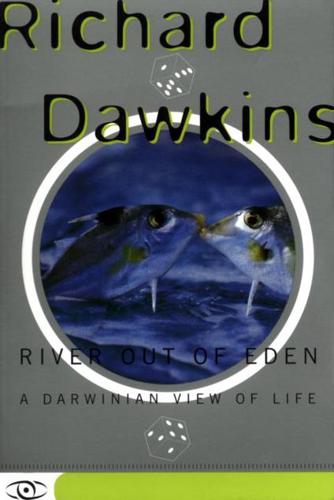
River Out of Eden: A Darwinian View of Life
by
Richard Dawkins
Published 28 Feb 1995
But now, after many generations of evolution, we move on to Threshold 2, the Phenotype Threshold. Replicators survive not by virtue of their own properties but by virtue of causal effects on something else, which we call the phenotype. On our planet, phenotypes are easily recognized as those parts of animal and plant bodies that genes can influence. That means pretty well all bits of bodies. Think of phenotypes as levers of power by which successful replicators manipulate their way into the next generation. More generally, phenotypes may be defined as consequences of replicators that influence the replicators' success but are not themselves replicated.
…
More generally, a planet will come to contain replicators whose consequences (phenotypes) have beneficial effects, by whatever means, on the replicators' success at getting copied. Once the Phenotype Threshold is crossed, replicators survive by virtue of proxies, their consequences on the world. On our planet, these consequences are usually confined to the body in which the gene physically sits. But this is not necessarily so. The doctrine of the Extended Phenotype (to which I have devoted a whole book with that title) states that the phenotypic levers of power by which replicators engineer their long-term survival do not have to be limited to the replicators' "own" body.
…
The DNA molecule itself is not right- or left-handed, but its phenotypic consequence is. Left-handed and right-handed shells may not be equally successful at the business of providing the outer protection for snail bodies. Because snail genes ride inside the shells whose shape they help to influence, genes that make successful shells will come to outnumber genes that make unsuccessful shells. Shells, being phenotypes, do not spawn daughter shells. Each shell is made by DNA, and it is DNA that spawns DNA. DNA sequences influence their phenotypes (like the direction of coiling of shells) via a more or less complicated chain of intermediate events, all subsumed under the general heading of "embryology."

Genesis: The Deep Origin of Societies
by
Edward O. Wilson
Published 19 Mar 2019
It is phenotypic flexibility, the amount of change in a phenotype (the trait prescribed by a gene) through differences in the environment. The kind and amount of flexibility—since these are also genetic traits—can also evolve. At one extreme, the genes prescribing flexibility can be shaped by natural selection to allow only one trait out of many conceivable, such as one eye color inherited by a particular person. At the opposite extreme, flexibility can also evolve to generate multiple possible responses, each fitted to a particular challenge from the environment. In this case the phenotypic flexibility still prescribes a rigidly genetic rule, as in eat fresh food, avoid spoiled food (unless you are a blowfly or a vulture).
…
M., 125 Early Cretaceous Period, 35 Early Jurassic Period, 70 Enceladus (moon), 34 environment: heredity vs., 19–20 mutations and, 19 eukaryotic cells, origin of, 31, 32, 34–35 Europa (moon), 34 eusocial insect colonies, 35–38, 64, 65 castes and, 60, 63, 67–68, 78, 84–85, 95 competition among, 86–87, 91–93 policing in, 90–91 queens in, see queens, in eusocial colonies eusociality, 35, 36, 67 altruistic origin of, 63 among insects, see eusocial insect colonies basic change in genetic code as necessary for, 83–86 competition in, 86–87, 91–93 cooperation in, 93–94 division of labor in, 85–86 evolution of, 63–66, 68–70, 72, 73, 74–78, 82–83, 85–86 in humans, 60, 69 kin selection and, 100–103 kinship and, 63–64, 72, 75 late appearance of, 68, 71, 76 origin of, 99 policing in, 90–91 preadaptation and, 72, 74–75, 115–16 rarity of, 63, 64, 68, 70, 71, 76, 82–83 sexual reproduction and, 63 superorganisms in, 78 worker population size and, 89–90 Eustenogaster fraterna (wasp), 94 Evans, Howard E., 72 evolutionary biology, 10–11 evolution by natural selection, 17–18 altruism and, see altruism composite (mosaic), 111, 113 dragon challenge of, 44, 48 of eusociality, 63–66, 68–70, 72, 73, 74–78, 82–83 genes and, 87 great transitions of, see great transitions of evolution groups and, see group selection heredity vs. environment in, 19–20 homosexuality and, 69 individuals and, 18, 26, 48, 87 kin selection and, 36, 99–100 multilevel, 18, 48 phenotypic flexibility and, 22–24, 26–27 rate of change in, 22 as scientific fact, 21 speed of change in, 44, 46 see also biological evolution experimentation, 21, 48, 78, 88–89, 91–92, 103 extinctions, 107 feeding groups, 52, 54–55, 56, 57 field observation, 21, 48, 78, 88–89, 103 fire, control of, 112, 113–14, 115, 123 fire ants (Solenopsis invicta), 89–90 Fire Ants, The (Tschinkel), 89 flexibility, phenotypic, 22–24, 26–27 French Guiana, 60 Gadagkar, Raghavendra, 93 Gat, Azar, 119 genes, 88 group selection and, 87 mutations of, see mutations natural selection and, 18, 87 genes, frequency of, in populations, 17 genome, eusociality as requiring basic change in, 83–86 genome mapping, 90 gods, 10, 11 great transitions of evolution, 31–40 altruism as necessary for, 45, 47–48 Gromphadorhina (hissing cockroaches), 98 groups: altruism and, see altruism competition between, 81, 112 cooperation in, see cooperation as defense against predators, 55, 56, 57, 58 individual vs. group benefit in, 87 kin selection and, 36 origin of, 18, 31, 35–38, 46 potential immortality of, 60 reciprocity and, 36, 38 see also eusociality; societies group selection, 26–27, 79–106 altruism and, 81–82, 86 competition and, 86–87, 88–89, 90 cooperation and, 86, 89–90 division of labor and, 85–86 genes and, 87 in human evolution, 116 individuals and, 18, 48 social evolution and, 90 social traits and, 88 warfare and, 118 grouse, 52 Haldane, J.
…
“night talk” among, 123–25 Ju/’hoansi San, 122 Jupiter, 34 Kapheim, Karen M., 83–84 Kenyanthropus, 110 Kibale National Park, Uganda, 117 kin selection, 36, 99–100 eusociality and, 100–103 kinship: altruism and, 36, 81–82, 99–100 cooperation and, 38 eusociality and, 63–64, 72, 75 knockout mutations, 82–83 Kronauer, Daniel, 91 labor, division of, 85–86 in human evolution, 114, 115–16 Lake Vostok, 34 language: origins of, 31, 38, 40 as uniquely human characteristic, 38 Late Cretaceous Period, 70 leks, 52 life, extraterrestrial, 34 life, origin of, 31, 32 competing theories of, 33–34 Liostenogaster fralineata (wasp), 94 “living fossils,” 22 lungfishes, 23–24, 25 manakins, 52 Mars, 34 mating swarms, 51–52, 56 McAvoy, Alex, 101–2 Mesozoic Era, 66, 70, 71, 111 metamorphosis, 65 Michener, Charles D., 72 microbes, 32 Middle Triassic Period, 70 Mitani, John, 117 mitochondria, 32, 34–35 modularity, 54–55, 57 and formation of subgroups, 57 monastic orders, 69 mosaic (composite) evolution, 111, 113 mud dauber (sphecid) wasps, 69, 73, 74–75 multicellular organisms, origin of, 31, 35 multilevel selection, 18, 48 murmurations, 52, 54–55, 56, 57 mutations: environment and, 19 knockout, 82–83 Myrmica ruginodis, 84–85 myths, 124 Nalepa, Christine, 98 natural selection: genes and, 18 individuals and, 18, 26–27, 47–48 see also evolution by natural selection Neanderthals, 111 neuroscience, 10–11 Nile bichir (Polypterus bichir), 23–24, 25 Nowak, Martin A., 101–2 nuclear membranes, 32, 34–35 Old World monkeys, investment strategies of, 59–60 On the Origin of Species (Darwin), 24, 26, 81 organelles, 32, 34–35 organized religions, 10 human condition and, 10 monastic orders in, 69 tribalism and, 10 Paleogene Epoch, 70 paleontology, paleontologists, 10–11, 64 Paleozoic Era, 23, 66, 68, 71 Pan paniscus (bonobos), 109, 116 Pan troglodytes, see chimpanzees Pemphigus obesinymphae (aphid), 92–93 “personality” castes, 95–96, 97 phenotypes, 22 phenotypic flexibility, 22–24, 26–27 pheromones, 94 philosophy, 9 ultimate question of, 17 Plains Indians, berdache system of, 69 policing, in eusocial colonies, 90–91 Polypterus bichir (Nile bichir), 23–24, 25 population genetics, 87 populations, of species, 17, 18 preadaptation: eusociality and, 72, 74–75, 115–16 progressive care of young and, 72, 74–75 predators, cooperation as defense against, 55, 56, 57, 58 prepared learning, 23 primates, 108 evolution of, 107 Pristomyrmex punctatus (ant), 91–92 Proceedings of the National Academy of Sciences, USA, 101–2 prokaryotic cells, 32 Pruitt, Jonathan N., 95, 96 Psaronius (tree fern), 71 psychology, 10–11 queens, in eusocial colonies, 67, 68, 73, 78, 84–85 in fire ants, 89–90 genetic mutation in, 85 virgin, 52, 85 quorum sensing, 57–58 race, 20, 22 ravens, reciprocity among, 36, 38 reciprocity, 36, 38 “relicts,” 22 reproductive (royal) castes, 60, 84–85 see also queens, in eusocial colonies restraint, altruistic, 47–48 ribosomes, 32, 34–35 Rising Star Cave, South Africa, 111 Robinson, Gene M., 83–84 Ropalidia marginata (wasp), 93 Saturn, 34 savannas, human evolution and, 112, 113 science: experimentation in, 21, 48, 78, 88–90, 91–92, 103 field observation in, 21, 48, 78, 88–89, 103 human condition and, 9 scientific theory, testing of, 77 Scolytidae (bark beetles), 68 sexual reproduction: DNA exchange in, 31, 35 eusociality and, 63 invention of, 35 mating swarms in, 51 social behavior, 9 evolution of, 71–72, 73, 74–75 in insects, 71–72 origin of, 77 see also eusociality social evolution, 87, 90, 121 competition and, 112 group selection and, 90 social insects, 26, 64, 70 colonies of, see eusocial insect colonies competition in, 91–93 cooperation in, 93–94 evolution of larvae in, 84–85 policing and, 90–91 worker population size and, 89–90 social intelligence, 123 social interaction, 125 social mammals, cooperation among, 58–59 social spiders, 95 social wasps, 67, 93–94 societies: biological evolution of, 18 see also eusociality; groups societies, evolution of: in chironomid midges, 51 evidence for, 51–61 societies, origin of, 31, 32, 35–38 altruism and, 48 sociobiology, sociobiologists, 22, 64, 99, 103 solitary bees, as preadapted to eusociality, 75, 77–78 speciation, 110 see also evolution by natural selection species: definition of, 17, 18 populations of, 17, 18 sphecid (mud dauber) wasps, 69, 73, 74–75 Sphecomyrma, 111 Standen, Emily M., 24 starlings, 52, 54–55, 56, 57 stingless bees (tribe Meliponini), 70 storytelling, 122, 123–25 superorganisms, 18, 78 termites, 18, 24, 64, 67, 69, 70 cockroaches as ancestors of, 96, 98–99 eusocial colonies of, 35–38, 60 evolution of eusociality in, 96–97 Teseo, Serafino, 91 theory, scientific testing of, 77 Theridiidae (cobweb spiders), 95 thrips, 64, 69 Tianmen Mountain, 44 tribalism, 10 Tschinkel, Walter R., 89 Tsuji, Kazuki, 91 vervets, reciprocity among, 36 vespid wasps, 68, 73 warfare, 120 among chimpanzees, 116–18 group selection and, 118 among human societies, 118–19, 120–21, 121 wasps, see also specific species wasps, social, 64 evolution of eusociality in, 73 Wiessner, Polly W., 123–25 Wilson, David Sloan, 87 wolves, pack competition among, 89 worker castes, 24, 60, 67–68, 78, 84–85 Yanomamö, 119, 121 Yellowstone National Park, 89 young, progressive care of, 72, 74–75 ALSO BY EDWARD O.

A Devil's Chaplain: Selected Writings
by
Richard Dawkins
Published 1 Jan 2004
Whereas genes are to be found in precise locations on chromosomes, memes presumably exist in brains, and we have even less chance of seeing one than of seeing a gene (though the neurobiologist Juan Delius has pictured his conjecture of what a meme might look like75). As with genes, we track memes through populations by their phenotypes. The ‘phenotype’ of the Chinese junk meme is made of paper. With the exception of ‘extended phenotypes’ such as beaver dams and caddis larva houses, the phenotypes of genes are normally parts of living bodies. Meme phenotypes seldom are. But it can happen. To return to my school again, a Martian geneticist, visiting the school during the morning cold bath ritual, would have unhesitatingly diagnosed an ‘obvious’ genetic polymorphism.
…
Our Martian geneticist would have to work quite hard to discover that no genes are involved in the genesis of the roundhead phenotype. The Martian geneticist’s eyes would also pop out on stalks (assuming they weren’t on stalks to begin with) at the contemplation of certain styles of clothing and hairdressing, and their inheritance patterns. The black skullcapped phenotype shows a marked tendency towards longitudinal transmission from father to son (or it may be from maternal grandfather to grandson), and there is clear linkage to the rarer pigtail-plaited sideburn phenotype. Behavioural phenotypes such as genuflecting in front of crosses, and facing east to kneel five times per day, are inherited longitudinally too, and are in strong linkage disequilibrium with the previously mentioned phenotypes, as is the red-dot-on-forehead phenotype, and the saffron robes/shaven head linkage group.
…
Inheritance in the drawing experiment is Lamarckian (Susan Blackmore calls it ‘copying the product’). In the origami experiment it is Weismannian (Blackmore’s ‘copying the instructions’). In the drawing experiment, the phenotype in every generation is also the genotype – it is what is passed on to the next generation. In the origami experiment, what passes to the next generation is not the paper phenotype but a set of instructions for making it. Imperfections in the execution of the instructions result in imperfect junks (phenotypes) but they are not passed on to future generations: they are non-memetic. Here are the first five instructions in the Weismannian meme-line of instructions for making a Chinese junk: 1.

Overdiagnosed: Making People Sick in the Pursuit of Health
by
H. Gilbert Welch
,
Lisa M. Schwartz
and
Steven Woloshin
Published 18 Jan 2011
This leads to a key distinction that is relevant to genetic testing: the distinction between genotype and phenotype. The complete set of genetic instructions contained in your DNA is your genotype. The human that others can observe—your physical, biochemical, and behavioral characteristics—is your phenotype. You don’t experience your genotype; you experience your phenotype. And it is the combination of your genotype, your environment, and luck that determines your phenotype. Genetic testing attempts to predict your phenotype based solely on your genotype. While there’s really no reason to have a genetic test to predict an aspect of your phenotype you already know about—you wouldn’t, for example, do a genetic test to see if you had blue eyes—some genetic-testing companies are in fact promoting tests just like this.
…
In fact, they recognized that the concept of penetrance itself was far more complicated. It was not clear whether penetrance should refer to the probability that the gene will lead to the symptomatic phenotype (disease) or to the probability that it will lead to the asymptomatic phenotype of iron overload. They considered both probabilities and determined that penetrance was incomplete both from genotype to asymptomatic phenotype and even more so from genotype to symptomatic phenotype. Less than half of those inheriting C282Y from both parents develop the biochemical abnormality of iron overload, and less than half of those with iron overload go on to develop the clinical disease.13 Figure 9.3 presents a more accurate picture of the disorder.
…
But if you don’t like Brussels sprouts, do you really care whether this preference is mediated by your genes or your environment? And if you do like Brussels sprouts, would you stop eating them if you found out that you were missing the liking-Brussels-sprouts gene? Geneticists are the first to point out that phenotype trumps genotype.3 Abnormal gene does not equal disease The only compelling reason to test the genotypes in healthy individuals is to predict their future phenotypes, specifically, whether or not they will develop particular diseases (or pass them on to their children). But what is true for individual characteristics is also true for diseases. While some diseases are determined solely by the presence or absence of specific genes, most reflect the interaction among genetics, environment, and pure chance.

Practical Manual of Thyroid and Parathyroid Disease
by
Asit Arora
,
Neil Tolley
and
R. Michael Tuttle
Published 2 Jan 2009
Oncogenesis and molecular targeted therapy in thyroid cancer MEN2B 918 883 804+806 804+904 MEN2A 635 637 FMTC 609 611 618 620 634 790 791* V804L 891 532 533 630† 768 V804M 844 912 Fig. 9.3 Correlation of specific RET codon mutations with the phenotypic expression of hereditary MTC. *Development of pheochromocytoma has not been reported. †Distinction between MEN2A and FMTC cannot be made. Adapted from: Kouvaraki, MA, et al. RET proto-oncogene: a review and update of genotype-phenotype correlations in hereditary medullary thyroid cancer and associated endocrine tumors. Thyroid 2005;15:531–44. methionine to a threonine. This initiates tyrosine kinase activity, although a ligand is still required for full activation of the receptor.185 These different mechanisms of RET oncogene activation may account for the phenotypic variation between MEN2A and MEN2B.
…
Pseudopseudohypoparathyroidism cases inherit the abnormal gene from the father. They have the AHO phenotype but biochemistry is normal. Occasionally, only severe heterotopic ossification rather than the full AHO phenotype is seen. This is termed progressive osseous heteroplasia (POH) when it affects muscles, joints and connective tissue, or osteoma cutis when it only affects skin. Type II pseudohypoparathyroidism is very different. Although the basic biochemistry is similar, the renal cAMP response to PTH infusion is normal, other hormone systems are not involved, there is no family history and there is no AHO phenotype. Chronic vitamin D deficiency produces a similar picture.
…
Parathyroid hormone resistance Pseudohypoparathyroidism is a rare autosomal dominant condition first recognized by Albright in 1942. Patients have biochemical features consistent with hypoparathyroidism (i.e. hypocalcaemia and hyperphosphataemia) but the PTH levels are elevated. This represents resistance to PTH action.86 There are two key elements to the diagnosis. The phenotypic features, termed the Albright hereditary osteodystrophy (AHO) phenotype, consist of: • somatic features: short stature, brachydactyly, rounded facies • developmental delay • heterotopic ossification. The biochemical features include: • hypocalcaemia with hyperphophataemia • elevated PTH levels • lack of renal cAMP and phosphaturic response to PTH infusion • reduced tissue response to GHRH, TSH, LH and FSH hormones.
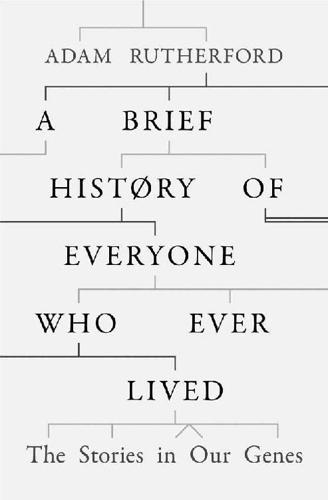
A Brief History of Everyone Who Ever Lived
by
Adam Rutherford
Published 7 Sep 2016
They contain their own chromosome, a small loop of DNA separate from the vast majority contained within the nucleus of a cell. Mitochondrial DNA (which is sometimes written as mtDNA) is of great interest to geneticists and genealogists as it is only ever passed on from mother to child, and thus can exclusively chart a matrilineage. phenotype The phenotype is the physical manifestation of a gene or genotype. For example, a particular version of the gene MC1R (the genotype) will mean your phenotype will be a redhead. protein The primary functional biological molecules in living things. They are made up of simple molecules called amino acids assembled into long strings. These fold up to make a three-dimensional structure, and often assemble with other proteins in cells to enact their function.
…
One version seems to subtly affect how an individual responds to an anaesthetic that dentists frequently use. This is just one gene, with many versions and it has a variable phenotype, though we can mostly see the outcome with fiery clarity. Even when we know the genome intimately, and the patterns of inheritance, and the history of the DNA, and the migration patterns of the people who carried it, and evolutionary pressures that led to the perpetuation of the genes and the phenotype – even when we know all that, how it manifests can still be mysterious and surprising. Anyone who says differently is selling something. The British are coming While we’re in the north-east of Europe, let me indulge in some national pride to scrutinize this sceptred isle, and the finest genetic analyses of a people yet undertaken: just who are the British?
…
We like it because it’s one of a very small handful of traits that has a relatively straightforward relationship between the DNA and its outcome – the genotype and the phenotype. There are basically two types of earwax, sticky and dry. The gene that determines these two states is called ABCC11, which comes in two alleles to give them their more scientific and less revolting descriptor. The gene is 4,576 base pairs long, and at position 538 there is either a G or an A. If you have a G, the code writes the amino acid glycine, and if you have an A you get an arginine. This simple change slightly nudges the protein into a different shape, and the shape switches the nature of the wax. The inheritance of this terribly important phenotype plays out in a human ear in a straightforward Mendelian way.
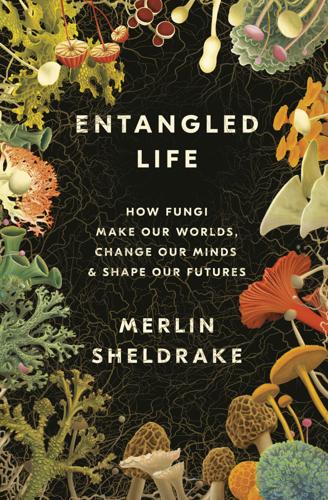
Entangled Life: How Fungi Make Our Worlds, Change Our Minds & Shape Our Futures
by
Merlin Sheldrake
Published 11 May 2020
It’s possible to make sense of this sort of shape-shifting within a scientific framework. In The Extended Phenotype, Richard Dawkins points out that genes don’t just provide the instructions to build the body of an organism. They also provide instructions to build certain behaviors. A bird’s nest is part of the outward expression of the bird’s genome. A beaver’s dam is part of the outward expression of a beaver’s genome. And an ant’s death grip is part of the outward expression of the genome of Ophiocordyceps fungi. Through inherited behaviors, Dawkins argues, the outward expression of an organism’s genes—known as its “phenotype”—extends into the world. Dawkins was careful to place “stringent requirements” on the idea of the extended phenotype.
…
Dawkins was careful to place “stringent requirements” on the idea of the extended phenotype. Although it is a speculative concept, he dutifully reminds us, it is a “tightly limited speculation.” There are three crucial criteria that have to be met to prevent phenotypes becoming too extended (if a beaver’s dam is an expression of the beaver’s genome, then what about the pond that forms upstream of the dam, and the fish that live in the pond, and…). First, extended traits must be inherited—Ophiocordyceps, for example, inherits a pharmacological talent for infecting and manipulating ants. Second, extended traits must vary from generation to generation—some Ophiocordyceps are more precise manipulators of ant behavior than others.
…
Psilocybin-producing mushrooms, like LSD, do so too, but in the most intimate possible setting: the inside of our own minds. * * * — IN THE CASE of Ophiocordyceps, an infected ant’s behavior can be thought of as fungal behavior. The death grip, summit disease—these are extended characteristics of the fungus, part of its extended phenotype. Can the alterations in human consciousness and behavior brought about by psilocybin mushrooms be thought of as part of the extended phenotype of the fungus? The extended behavior of Ophiocordyceps leaves an imprint in the world in the form of fossilized scars on the underside of leaves. Can the extended behavior of psilocybin mushrooms be thought of as leaving an imprint in the world in the form of ceremonies, rituals, chants, and the other cultural and technological outgrowths of our altered states?
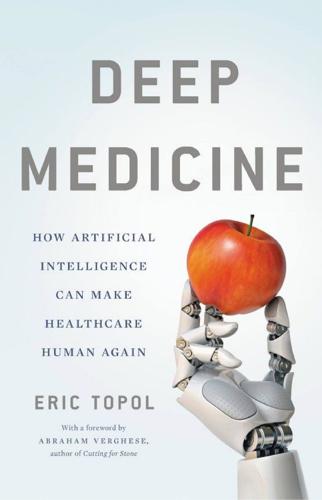
Deep Medicine: How Artificial Intelligence Can Make Healthcare Human Again
by
Eric Topol
Published 1 Jan 2019
It took twenty seconds for a form of AI called natural-language processing to ingest the boy’s electronic medical record and determine eighty-eight phenotype features (almost twenty times more than the doctors had summarized in their problem list). Machine-learning algorithms quickly sifted the approximately 5 million genetic variants to find the roughly 700,000 rare ones. Of those, 962 are known to cause diseases. Combining that information with the boy’s phenotypic data, the system identified one, in a gene called ALDH7A1, as the most likely culprit. The variant is very rare, occurring in less than 0.01 percent of the population, and causes a metabolic defect that leads to seizures.
…
This might include all of one’s medical, social, behavioral, and family histories, as well as one’s biology: anatomy, physiology, and environment. Our biology has multiple layers—our DNA genome, our RNA, proteins, metabolites, immunome, microbiome, epigenome, and more. In the biomedical research community, the term that is frequently used is “deep phenotyping”; we saw an example of the approach in the case of the newborn boy with status epilepticus. Deep phenotyping is both thick, spanning as many types of data as you can imagine, and long, covering as much of our lives as we can, because many metrics of interest are dynamic, constantly changing over time. A few years ago, I wrote a review in which I said we needed medical data that spanned “from prewomb to tomb.”3 A former mentor told me that I should have called the span “from lust to dust.”
…
Woebot had more users in its first few months than would see a psychologist in a hundred years.8 Until recent years, our assessment of behavior, mood, and cognition was largely subjective, during brief episodic visits in a contrived, clinical environment. When this did occur, it usually was to respond to mental health difficulties rather than to prevent them. Table 8.1 lists some of the various and still proliferating ways we can now collect objective data to deeply phenotype mood and mental health state. The term “digital phenotyping” conveys the point that each feature can be digitized and produce a variety of metrics. Most of these can be obtained passively via smartphones in a patient’s real world. With the addition of connected sensors, many of the physiological parameters can be unobtrusively gathered, often on a continuous basis.

A Hunter-Gatherer's Guide to the 21st Century: Evolution and the Challenges of Modern Life
by
Heather Heying
and
Bret Weinstein
Published 14 Sep 2021
In biology, we speak of plasticity, often phenotypic plasticity, to refer to the many outcomes that are possible from the same starting materials. Roughly speaking, a genotype (say, the alleles for brown eyes) produces a phenotype (the actual brown eyes). Phenotype is the observable form of an organism. For many traits, though, a particular genotype encodes information for a range of possible phenotypes,17 and interactions with the molecular, cellular, gestational, and external environment determine what phenotype will actually be produced. Phenotypic plasticity allows individuals to respond in real time to changing environments, to avoid being canalized into set patterns and lifeways by their genes.
…
Design constraint trade-offs also reveal that you can’t be both the most robust and the most efficient. Less intuitively, you also can’t be fastest and bluest.23 Humans do a great job of evading some trade-offs, of course. For instance, we have addressed the fast-versus-impenetrable trade-off by building outside of ourselves—by having extended phenotypes.24 The domestication of horses, and advent of castles, allowed some humans to be both fast and impenetrable. And as we discussed in chapter 1, we seem to have beaten the odds when it comes to the trade-off between specialists and generalists. Humans are a broadly generalist species, with the capacity for individuals—and cultures—to go deep and specialize in myriad contexts and skill sets.
…
Zebra finch chicks, whose parents “told” them about high temperatures while they were still in their eggs, alter their begging behavior as nestlings, and when they become adults, they prefer hotter nest sites.21 Even our critically important aortic arch, the first arterial branch off the heart that takes oxygenated blood to the body, has several common anatomies within human populations, which can develop from highly similar genetic starting gates.22 Plasticity provides the possibility of alternate phenotypes, often through simple rules that do not prescribe precise outcomes. The result, ever more so with increasing levels of complexity, is exploration of new territory, literal and metaphorical.23 One place that plasticity manifests in humans is the wide variety of approaches to parenting across cultures.
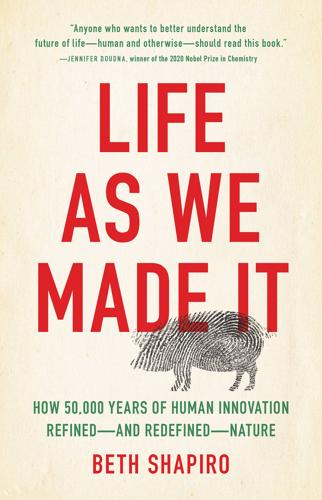
Life as We Made It: How 50,000 Years of Human Innovation Refined--And Redefined--Nature
by
Beth Shapiro
Published 15 Dec 2021
We know exactly what genetic change we want to make to induce the desired phenotype—hornlessness—and we can make that change with pinpoint precision. With gene editing, we can move the naturally occurring hornless phenotype from Angus to Holstein in a single generation, improving animal welfare without disrupting the traits that make Holstein cows fantastic milk producers. The gene-edited hornless Holstein is not transgenic—the trait evolved naturally in cattle. And because the hornless allele has been in our cattle for hundreds of generations, we know exactly what phenotype to expect: a healthy, fertile, hornless animal whose meat and milk are as safe to consume as they have been for thousands of years.
…
Today’s DNA sequencing technologies can pinpoint specific genes that achieve a desired phenotype, but breeding is too imprecise to take advantage of this information. A new family of technologies loosely referred to as genetic engineering, and a new field of research—synthetic biology—that takes advantage of genetic engineering technologies, can improve our experimental precision. Using genetic engineering technologies, dog breeders could repair a disease-causing mutation without sacrificing breed-specific traits, and cattle breeders could move disease resistance between breeds without also introducing phenotypes that are locally maladaptive. Synthetic biology also expands our experimental horizons.
…
The intent was not to create something new. The polled allele, which causes the hornless phenotype, evolved in cattle centuries, if not millennia, ago. The firm knew that the polled allele could be bred into Holsteins using traditional approaches, but that this would lead to a deterioration in the quality of the Holstein breed as milk producers that would take generations to recover. Precision genetic engineering using programmable nuclease was the perfect solution. And, because the allele and its phenotype were well described and already part of the food chain, the FDA would almost certainly agree that the gene-edited Holsteins qualified for GRAS—generally regarded as safe—status.
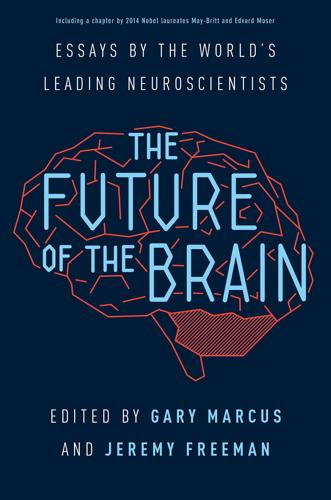
The Future of the Brain: Essays by the World's Leading Neuroscientists
by
Gary Marcus
and
Jeremy Freeman
Published 1 Nov 2014
If there is a one-to-one correspondence between DNA and the phenotype, then every somatic cell in the body (which contains exactly the same genotype) would be identical. Instead, the phenotypes of cells vary from brain cells (neurons) to liver cells. Because of this, Waddington proposed that the mechanisms through which a genotype produces a phenotype should be termed epigenetics. Considering that cellular phenotypes undergo dramatic plasticity during development while the genotype of these cells remains stable implicit in Waddington’s definition is the notion that a phenotype can be altered without changes to the genotype.
…
Interestingly, these same features of organization can be altered by the sensory driven activity that the developing organism is exposed to. Because cortical field size and connectivity can be changed through different mechanisms, this implies that in a given lineage, some aspect of brain organization owes its particular phenotype to genes, activity-dependent mechanisms, or some combination of both. However, a similar phenotype in a different mammal may have arisen by a very different combination of these factors. From a personal rather than scientific standpoint, the final important thing I’ve learned is don’t be taken in by the boondoggle, don’t get caught up in technology, and be very suspicious of “initiatives.”
…
The many neural cell types, although traditionally defined by the complex morphologies of axons and dendrites first glimpsed under the microscopes of Camillo Golgi and Santiago Ramón y Cajal, can also be defined by a process of discrete counting. Indeed, all of the cells in the body share (very closely) the same genome, the differences between them being due to the different levels of expression of the different genes. From the Central Dogma of Molecular Biology we know that gene expression, which accounts for the phenotypic differences between the body’s genetically identical cells proceeds as DNA →(transcription) Messenger RNA →(translation) Protein and thus, by counting the numbers of each messenger RNA in a cell, we can determine its cell type. The same goes for tracking the history of molecular expression in the cell over time, for example, to observe changes in gene expression that accompany learning and memory; except here you need not only to count molecules but also to label these molecules with time stamps—digital strings that encode the current time.
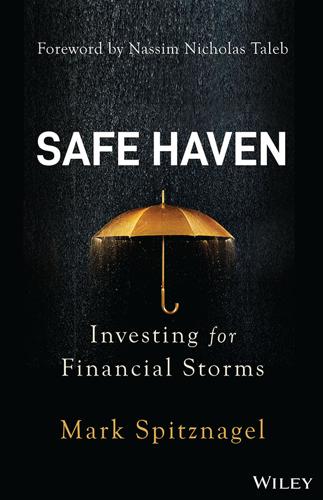
Safe Haven: Investing for Financial Storms
by
Mark Spitznagel
Published 9 Aug 2021
Indeed, not all safe havens are even safe havens—and certainly very few, if any, are cost‐effective. But we owe it to ourselves to find out, and to at least establish a criterion for measuring them against each other. PHENOTYPES We need a safe haven concept, or definitions to determine whether something should be included in the safe haven category. We need to describe that essential cartoon safe haven form. We start with phenotypes—the expression of an organism's observable traits or responses as it interacts with its environment. This is also the best way to approach the cartoon essence of safe havens. How a safe haven interacts with its environment, or its functional essentialism, is another way of saying its payoff relative to the dynamics of the broad macroeconomic environment in which it lives.
…
THE GREAT DILEMMA FIRST PRINCIPLES MODUS TOLLENS DEDUCTIVE DICE Chapter Two: Nature's Admonition THE SWISS FAMILY BERNOULLI THE SAINT PETERSBURG PARADOX EMOLUMENTUM MEDIUM THE GEOMETRIC AVERAGE THE OTHER SAINT PETERSBURG PARADOX CONCAVITY OF CURVE THE LOGARITHMIC RHINE FALLS Chapter Three: The Eternal Return AN EXISTENTIAL IMPERATIVE INTO THE MULTIVERSE DICE WITH SCHRÖDINGER'S DEMON (N = ∞) DICE WITH NIETZSCHE'S DEMON (N = 1) THE HUSTLE OF NON‐ERGODICITY MAGIC TRICK OR MATH TRICK? SIDE BETS A GLIMPSE OF TREASURE Part Two: What Comes After Chapter Four: A Taxonomy ESSENTIALISM MORE DIFFERENT THAN ALIKE PHENOTYPES RISK‐MITIGATION IRONY IMPOSTERS THE DOGMA OF DIVERSIFICATION INDUCTIVE DICE Chapter Five: Holism THE CUCKOO IN THE CLOCK KEEPING BOTH EYES CLINICAL TRIALS THE COST‐AND‐EFFECT RELATIONSHIP RESHUFFLING AGNOSTICISM OFFENSIVE DEFENSE A NARROW, BROKEN WINDOW FRAME LOOKING DOWN THE TRACK THE GREAT PIRATES Chapter Six: Bold Conjectures EPISTEMOLOGY NEPTUNE OR VULCAN?
…
This led him, of course, to a theory of natural selection and his opus, On the Origin of Species. What Aristotle and Darwin observed in the natural world can guide us in our study of safe havens. The diversity and change within the safe haven species is so great that it, too, could form new ones. Its members have their own different phenotypes, making some far more advantaged or cost‐effective (fitter) than others. Thus, we have our own safe haven species problem: Can we identify a safe haven “essence” and use it to classify them? Or are they all just individual things—each one of a kind? Further confounding the problem, our classifications are a moving target.

Darwin Among the Machines
by
George Dyson
Published 28 Mar 2012
“This tendency to act on any thing which can have importance for survival is the key to the understanding of the formation of complex instruments and organs and the ultimate development of a whole body of somatic or non-genetic structures.”28 Once the concept of translation from genotype to phenotype is given form, Darwinian evolution picks up speed—not just the evolution of organisms, but the evolution of the genetic language and translation system that provide the flexibility and redundancy to survive in a noisy, unpredictable world. A successful interpretive language not only tolerates ambiguity, it takes advantage of it. “It is almost too easy to imagine possible uses for phenotype structures—because the specification for an effective phenotype is so sloppy,” wrote A. G. Cairns-Smith in his Seven Clues to the Origin of Life. “A phenotype has to make life easier or less dangerous for the genes that (in part) brought it into existence.
…
This brings us back to Butler versus Darwin, because during this extended evolutionary prelude Lamarckian, not neo-Darwinian, selection would have been at work. We should think twice before dismissing Lamarck because Lamarckian evolution may have taken our cells the first—and most significant—step toward where we stand today. Genotype and phenotype may have started out synonymous and only later become estranged by the central dogma of molecular biology that allows communication from genotype to phenotype but not the other way. Life, however, arrives at distinctions by increments and rarely erases its steps. Remnants of Lamarckian evolution may be more prevalent, biologically, than we think—not to mention Lamarckian tendencies among machines.
…
“With present speed, it may take 10,000 generations (about 80 machine hours on the IBM 704. . .) to reach an average game quality higher than 1,” Barricelli estimated, this being the quality expected of a rank human beginner playing for the first few times.24 In 1963, using the large Atlas computer at Manchester University, this objective was achieved for a short time, but without further improvement, a limitation that Barricelli attributed to “the severe restrictions . . . concerning the number of instructions and machine time the symbioorganisms were allowed to use.”25 In contrast to the IAS experiments, in which the numerical symbioorganisms consisted solely of genetic code, the Tac-Tix experiments led to “the formation of non-genetic numerical patterns characteristic for each symbioorganism. Such numerical patterns may present unlimited possibilities for developing structures and organs of any kind to perform the tasks for which they are designed.”26 A numerical phenotype had taken form. This phenotype was interpreted as moves in a board game, via a limited alphabet of machine instructions to which the gene sequence was mapped, just as sequences of nucleotides code for an alphabet of amino acids in translating proteins from DNA. “Perhaps the closest analogy to the protein molecule in our numeric symbioorganisms would be a subroutine which is part of the symbioorganism’s game strategy program, and whose instructions, stored in the machine memory, are specified by the numbers of which the symbioorganism is composed,” Barricelli explained 27 In coding for valid instructions at the level of phenotype rather than genotype, evolutionary search is much more likely to lead to meaningful sequences, for the same reason that a meaningful sentence is far more likely to be evolved by choosing words out of a dictionary than by choosing letters out of a hat.

Immortality, Inc.
by
Chip Walter
Published 7 Jan 2020
* * * — TO ACCOMPLISH IMPRESSIVE FEATS such as this, HLI needed two kinds of information: high-resolution sequencing of people’s individual genomes, as well as deep dives into each patient’s personal and medical history. Collectively, this is known as phenotypic data. Phenotypic data synced a patient’s genome with the real world of his or her health and background. Was the person 20 years old or 60? Were they Olympic specimens, or did they have heart problems and arthritis? How tall were they? What did they eat? Were they obese or slim? Where did they come from and what was the health of their parents and siblings like? Did they have any diseases? Did their parents? Combining genomic and phenotypic information created what was known as an “integrated genome,” because it revealed both sides of the same human coin, and helped to match what you experienced in life with the details of your DNA.
…
And if none of those children had come across that particular strain of flu, they would have been just fine. The point for HLI was that the best way to drop medical costs, improve health, and ensure that a killer disease didn’t get you was to understand what secrets your genome held. But again, that would only be possible when huge amounts of the genetic and phenotypic information could be assembled. Now, at the end of 2016, almost three years after HLI’s founding, Venter had upped the stakes and officially set one million integrated human genomes as the company’s goal. Why a million? When Bloom would embark upon his meetings with pharmaceutical companies or insurance conglomerates or federal agencies, he had a nice analogy he liked to use to explain the idea.
…
But it could be worse: What if someone decided to engage you in insights about Zen Buddhism or Sartre’s views on existentialism or even an ounce of biology? That would require a very deep vocabulary, as well as subtle grammar and syntax—which meant, to use the vernacular, you were screwed. The same held true for the genome. Without lots and lots of genomes synced with integrated phenotypic information, good luck comprehending what the strangely linked nucleotides are trying to tell you. You need, in effect, to improve your vocabulary, upgrade your Japanese dictionary. So the Data were important. And HLI had been making progress in those first three years after its founding growing the dictionary: It had gone from zero integrated genomes to 40,000, which was about 37,000 more than anyone else in the world had at the time.

The Patient Will See You Now: The Future of Medicine Is in Your Hands
by
Eric Topol
Published 6 Jan 2015
Health Span The human reference genome, which has been regarded as the platinum standard for genomic variation, has a significant flaw—the individuals who were used to construct it were young without any phenotype. So what we consider as the “anchor” may be riddled with disease-related variants. For example, a major predisposition for clotting disorders is attributed to the gene variant known as Factor V Leiden. But if you look up the Factor V gene in the reference genome, it’s Factor V Leiden! We need a reference genome with rigorous phenotypic characterization to avoid this problem. By collecting a large cohort of individuals with extreme health span (such as in the “Wellderly” project that we’ve been engaged in at Scripps for the past eight years) and performing whole genome sequencing, we can have an assured healthy background reference genome for comparison.
…
Regalado, “Stephen Wolfram on Personal Analytics,” MIT Technology Review, May 8, 2013, http://www.technologyreview.com/news/514356/stephen-wolfram-on-personal-analytics/. 8. N. A. Christakis and J. H. Fowler, Connected (New York, NY: Little, Brown and Co., 2009). 9. “Phenotype,” Wikipedia, accessed August 13, 2014, http://en.wikipedia.org/wiki/Phenotype. 10. “Microphones as Sensors: Teaching Old Microphones New Tricks,” The Economist, June 1, 2013, http://www.economist.com/news/technology-quarterly/21578518-sensor-technology-microphones-are-designed-capture-sound-they-turn-out. 11. G. Slabodkin, “Study: iPhone App for Speech Laterality Just as Reliable as Lab Brain Tests,” FierceMobileHealthcare, February 12, 2013, http://www.fiercemobilehealthcare.com/story/study-iphone-app-speech-laterality-just-reliable-lab-brain-tests/2013-02-12. 12.
…
FIGURE 5.2: The human GIS—multiple superimposed and integrated layers of medical information. Source: Adapted from E. J. Topol, “Individualized Medicine from Prewomb to Tomb,” Cell 157 (2014): 241–253. The Panoromic View Let’s now unpack the human GIS to define and understand each component. The “ome” attached to each denotes the study of something. The phenome refers to all the phenotypic traits of an individual, such as height, weight, and eye and skin color. I like to combine it with one’s social graph, which broadens the “look from the outside” of a person to their social network. The physiome is the collection of one’s physiologic metrics, such as heart rate and blood pressure.
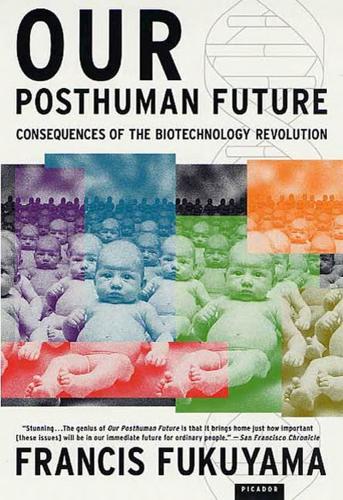
Our Posthuman Future: Consequences of the Biotechnology Revolution
by
Francis Fukuyama
Published 1 Jan 2002
As noted in the discussion of height, environment can change median heights, but it cannot push human heights above or below certain limits, nor can it make women on average taller than men. Those parameters are still set by nature. Moreover, there is very often a linear relationship between environment, genotype, and phenotype that ensures that if the genetic variance is distributed normally, the phenotypic variance will also be distributed normally. That is, the better our diets, the taller we tend to be (within our species-typical limits); height distribution curves still have single median points despite the fact that they are affected by environment. Most human characteristics do not resemble the mountain plant that looks entirely different depending on elevation.
…
In many cases, twins reared apart will nonetheless share many of the same environmental circumstances, making it impossible to disaggregate natural from cultural influences. Among the “shared environments” that a behavior geneticist may overlook is that of the mother’s womb, which has a strong influence on how a given genotype develops into a phenotype, or individual human being. Identical twins necessarily share the same womb, but the same fetus growing up in a different womb might turn out quite differently if the mother is malnourished, drinks, or takes drugs. The second, and less accurate, way of uncovering the natural sources of behavior is to do a cross-cultural survey of a particular trait or activity.
…
One would presumably not want to create a human baby until one had a much higher chance of success, and even then the cloning process might produce defects that wouldn’t show up for years. The dangers that exist for cloning would be greatly magnified in the case of genetic engineering, given the multiple causal pathways between genes and their ultimate expression in the phenotype.16 The Law of Unintended Consequences would apply here in spades: a gene affecting one particular disease susceptibility might have secondary or tertiary consequences that are unrecognized at the time that the gene is reengineered, only to show up years or even a generation later. The final constraint on any future ability to modify human nature has to do with populations.
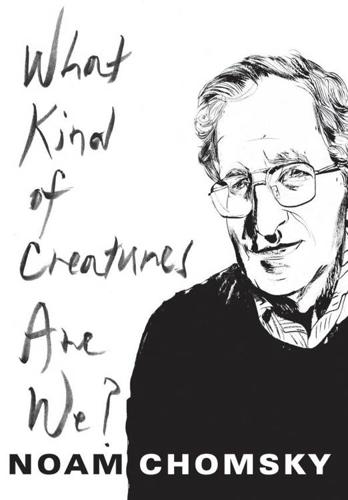
What Kind of Creatures Are We? (Columbia Themes in Philosophy)
by
Noam Chomsky
Published 7 Dec 2015
This gives further reason to conclude that the kind of creatures we are, possessed of the kind of powers for language and thought we possess, should get an evolutionary account of the sort presented in chapter 1 rather than what Chomsky, citing Lewontin in chapter 2, describes as the “storytelling” about gradual evolution from our creaturely ancestors, a mode of explanation that one would indulge in only if one does not pay enough prior and scientific attention to the nature of the phenotype being explained. It is storytelling partly also, as Lewontin is cited as saying, because of the “tough luck” of not having access to any evidence on which these explanations could be based. They are hidden from human cognitive access, another form of our limitation. Thus limits on our cognition are inevitable for a variety of reasons, chief among which is the taking seriously of the sheer fact that we are biological creatures.
…
Not untypical is a current study on evolution of language, where the authors open by writing that “we understand language as the full suite of abilities to map sound to meaning, including the infrastructure that supports it,”9 basically a reiteration of Aristotle’s dictum, and too vague to ground further inquiry. Again, no biologist would study evolution of the visual system assuming no more about the phenotype than that it provides the full suite of abilities to map stimuli to percepts along with whatever supports it. Much earlier, at the origins of modern science, there were hints at a picture somewhat similar to Darwin’s and Whitney’s. Galileo wondered at the “sublimity of mind” of the person who “dreamed of finding means to communicate his deepest thoughts to any other person… by the different arrangements of twenty characters upon a page,” an achievement “surpassing all stupendous inventions,” even those of “a Michelangelo, a Raphael, or a Titian.”10 The same recognition, and the deeper concern for the creative character of the normal use of language, was soon to become a core element of Cartesian science-philosophy, in fact a primary criterion for the existence of mind as a separate substance.
…
The editors of the MIT Invitation to Cognitive Science in which he published these conclusions found them persuasive, as I do, though his analysis, largely ignored, has not impeded the growth of a huge literature of what Lewontin calls “storytelling,” particularly in the case of language. The storytelling typically proceeds without even spelling out the essential nature of the phenotype, a prerequisite to any serious evolutionary inquiry. And it also typically constructs stories about communication, a different though perhaps more appealing topic, because one can at least imagine continuities and small changes in accord with conceptions of evolution that are conventional though dubious at best.

Why Information Grows: The Evolution of Order, From Atoms to Economies
by
Cesar Hidalgo
Published 1 Jun 2015
Looking at industries in lieu of knowledge and knowhow is similar to what biologists do when looking at phenotypes (the physical and functional characteristics of an organism) as expressions of genotypes (the information embodied in an organism’s DNA). Genes, in their simplest definition, are the segments of DNA that code for proteins, while phenotypes are the physical and functional characteristics of organisms, such as the color of your hair or your susceptibility to hypertension. What I will try to do in this chapter is similar to what much of genetics is about, yet instead of trying to establish a connection between phenotypes and genes, I will try to find a connection between the knowledge and knowhow available in a location and the industries that are present in them.
…
What I will try to do in this chapter is similar to what much of genetics is about, yet instead of trying to establish a connection between phenotypes and genes, I will try to find a connection between the knowledge and knowhow available in a location and the industries that are present in them. Phenotypes and genotypes are a useful analogy because they represent a pair of related entities in which one is more easily observable than the other—phenotypes are easier to observe than genes, and industries are easier to observe than knowledge or knowhow. This duality is useful because it implies that we can measure the most visible quantity as a proxy for the other. For instance, mapping the spatial distribution of the genes that cause a person to be tall is currently quite difficult.
…
See also DNA Birth, as time travel, 3–5 Blek, 92 Blue-collar workers, social networks and access to employment, 113 Boltzmann, Elsa, xi Boltzmann, Ludwig, 9, 28, 30 atomic theory, xi–xii, xiii, 18 entropy and, xx, 14, 15–17 origins of physical order and, xii–xiii, xvii, xviii, xxi Bonding social capital, 150–151 Bosch, Carl, 58 Bowling Alone (Putnam), 121, 135 Boyden, Ed, 50, 51, 61 Brain-computer interfaces, 51, 61 Brazil balance of trade with China, 55, 56–57 Fordlandia, 170–171 industry space in, 139, 141 Bridging social capital, 150–151 Bugatti, information embodied in, 11–13, 20 Bureaucratic burden, of linking large organizations, 102–104 Capital economic growth and, 146 human, 148–149, 152, 154–156 physical, 152–156 See also Social capital Car manufacturing personbytes required in, 88 River Rouge complex, 87–88, 89, 105 Carnot, Nicolas, 60 Center for Cancer Systems Biology, 110 Chaos, information behind, 30–31 Chemical systems, ability to process information, 36–37 Chile balance of trade with Korea, 52, 54–55 economic complexity of, 157–159 industry-location matrices, 133 raw material exports and, 55, 58–59, 60 China balance of trade with Brazil, 55, 56–57 economic growth in, 159 migration of manufacturing from United States to, 161–162 Clausius, Rudolf, 27 Coase, Ronald, 90–91, 93, 95, 102, 106, 108, 117 Coding Shannon and, xvii study of information and, xiii–xiv Coleman, James, 117–118 Collaborations, establishing firm-to-firm, 102–103 Collective limits on accumulation of knowledge and knowhow, 81–83 Communication, products vs., 67–68 Communication engineering, theory of, 13–15 Compaq, 95 Competitive advantage, 147–148 Complex products difficulty of creating, 78–79 geographical bias in creation of, 77, 83 networks of firms and, 92–93 production in diverse countries, 134–136 Computation ability of matter to compute, 35–37, 41, 176, 177–178, 181 of information, 13, 14–15, 23–24 knowhow and, 6, 7 Computational capacity, of economy, 75, 180–181 Computer industry French, 122–123 networked nature of, 92, 105, 119–120 standards and cost of market interactions, 95, 100 Computers information processing and, 36 network production of, 92, 105 Computer scientists, information and, xiv Concorde, 122 Context, value of products and, 63–64 Copper exports, 55, 58–59, 60 Corning, 92 Corsair, 92 Cost of firm-to-firm links, 91, 93, 94–95, 102–104 interactions, of health care sector, 104 of market interactions, 95, 100–101 of overbureaucratized networks, 103–104, 106 trust and reduction of transaction, 117–118 Crystallized imagination, 43–47, 178–180 differences in countries’ ability to create, 79 knowledge and knowhow and, 61 physical capital and, 152 practical applications of, 65–71 products as, 44, 49–55 Cyberneticists, xiv Daimler, Gottlieb, 60 Darwin, Charles, 27 DataViva, 139 Davis, Gerald, 101 Davy, Humphry, 59 DEC, 95 Deloitte, 113 Demand crystallized imagination and creation of, 60 as production stimulus, 77–78 Developed countries, level of trust in, 124 Developing countries exploitation narrative and, 55, 58–59, 60 exploitation of foreign creativity by, 60 level of trust in, 124 DeVito, Danny, 130 Diamond, Jared, 169–170 Diesel, Rudolf, 60 Digital communication technologies, 14 Diversification toward related varieties, 135–136 Diversified economies, 180 Diversity, stock vs., 152–154, 162 Division of labor, 87–88 D-Link, 92 DNA decoding richness of information contained in, 22–23, 166–168 information embedded in, 5, 34, 176 Doe, Kelvin, 62 Dorset Eskimos, 170 Dynamic steady state, 28–29 irreversibility of time and, 38 Earth information and uniqueness of, ix–x singularity of complexity of, xix Economic complexity, 145–146 export product ubiquity and, 156–162 measuring, 162–163, 180 Economic development challenge of, 75 knowhow and constraints on spread of, 169–171 wealth vs., 60–61 Economic diversification, product space and, 137–139 Economic growth, economic complexity and, 157–162, 180 Economic growth models, 146–148, 162 human capital and, 148–149 social capital and, 151 Economic order, growth of information and evolution of, xx–xxi Economics, idea of information and, xiv–xv Economic sociology, 111–118 transaction cost theory and, 117–118 Economic value balance of imagination and, 55, 58–59, 60 context of product and, 63–64 Economy computational capacity of, 75, 180–181 describing, 145–146 diversified, 180 knowhow embedded in networks, 167–169 products and characterization of, 155–162 quantization principle and, 168 reproductive limitations of, 168 social networks and, 111–124 as system amplifying practical use of knowledge/knowhow, 68, 69, 70 as system of information growth, 8–9, 177–180 Ecosystems, reproductive limitations of, 168 Eddington, Arthur, 11 Edison, Thomas Alva, 11, 59, 69 Eigen, Manfred, 18 Einstein, Albert, 25, 28, 40, 90 Electricity, practical uses of, 59–60, 69 Energy creation of objects and, 43, 44, 181 information and, 175, 177 information processing and, 43 Engineers, information and, xiv English, as “hub” language, 101 Entropy, 11 Boltzmann and, 14, 15–17 computational ability of matter and, 177 information and, ix, xx, 14–16, 176 information-rich anomalies and, 31 multiplicity-of-states definition, 16–24 second law of thermodynamics and, 27 Shannon and, 14–15, 17–18 solids and, 176, 177 statistical-physics definition, 16–17 steady-state of out-of-equilibrium systems minimizes, 32, 175 Entropy barrier, 40 Equilibrium, order emerging from out-of-equilibrium systems, 29–30 Ernst & Young, 113 Ethiopia, 161 Evolution coevolution of markets and standards, 100 of information and economic order, xix–xx of physical order, 175–181 Experiential learning, 79–80, 81 Exploitation narrative, developing countries and, 55, 58–59, 60 Export diversity, economic complexity and, 157–161, 180 Exports as crystallized imagination, 51–55 diversity of physical and human capital and, 154–156 geographic distribution of industries and, 131–134 knowledge and knowhow embodied in, 52–55 Export structure, product space and, 137–139 Facebook, 92 Familial societies, 115 Family networks formation of, 115–116 low-trust familial societies and, 121–123 trust and, 121–122 Faraday, Michael, 59, 60, 69 Fijitsu, 92 Firmbytes, 89, 107 Firm interactions, social networks and, 93 Firms networks of, 89, 92–93 size of, 89, 91 transaction cost theory of, 89–91, 93 Firm-to-firm links classification of, 94–95 collaborations or large projects and, 102–103 cost of, 91, 93, 94–95 sizes of, 93–94 Ford, Henry, 60, 88, 171 Fordlandia, 170–171 Ford Motor Company, 87–88, 89, 170–171 France, government role in economy, 122–123 Fruit exports, 155 Fukuyama, Francis, 109, 115, 116, 117, 121–122, 122–123, 179 Functions, order and, 63 Gaua Islanders, 170 GDP (gross domestic product), 146 GDP (gross domestic product) per capita, export diversity and, 157–161, 180 Gene analogy, 142 Genetic factors, ability to accumulate knowledge and, 84 Genotypes/phenotypes analogy, 130, 136 Geographic distribution of industries, 131–136 of knowledge and knowhow, 77, 80–81, 127–128 of production of complex vs. simpler products, 77, 83, 134–136 Germany, formation of large networks in, 115, 116 Getting a Job (Granovetter), 112–113 Gibbs, J. Willard, 28 Gorilla Glass screen, 92 Governance, social capital and, 151 Government bureaucratic burden and, 103 role in French economy, 122–123 Granovetter, Mark, 109, 111, 112–113, 114–115, 179 Graphical user interfaces, 120, 142 Guardiola, Josep “Pep,” 73–74 Guitar, augmentation of our capacities and, 66–67 Guns, Germs, and Steel (Diamond), 169–170 Haber, Fritz, 58 Hadza people, 117 Hanaman, Franjo, 59 Hartley, Ralph, xvii Hayek, Friedrich, xiv Health care sector, costs as overbureaucratized network, 104, 106 Heisenberg, Werner, 39 Helmholtz, Hermann von, 28 Hemingway, Ernest, 70 Herr, Hugh, 50–51, 61, 178 Hidalgo, Iris, 3–4 High-trust societies, 115, 120–121, 122, 123 Homophily, formation of social networks and, 114 Honduras, exports, 132 HP (Hewlett-Packard), 142 Human capital, 148–149, 152 export data and diversity of, 154–156 Humans augmentation of capacities, 66–67 computational capacity of matter and, 178, 179–180 as embodiment of knowledge and knowhow, 8 The Human Use of Human Beings (Wiener), 70–71 IBM, 95 Ideas, knowledge/knowhow vs., 61–62 Imagination, crystallized.

Behave: The Biology of Humans at Our Best and Worst
by
Robert M. Sapolsky
Published 1 May 2017
Genotype Versus Phenotype, and the Most Meaningful Level of Selection To appreciate this, let’s contrast genotype and phenotype. Genotype = someone’s genetic makeup. Phenotype = the traits observable to the outside world produced by that genotype.* Suppose there’s a gene that influences whether your eyebrows come in two separate halves or form a continuous unibrow. You’ve noted that unibrow prevalence is decreasing in a population. Which is the more important level for understanding why—the gene variant or the eyebrow phenotype? We know after chapter 8 that genotype and phenotype are not synonymous, because of gene/environment interactions.
…
Maybe a subset of the population belongs to a religion where you must cover your eyebrows when around the opposite sex, and thus eyebrow phenotype is untouched by sexual selection. You’re a grad student researching unibrow decline, and you must choose whether to study things at the genotypic or phenotypic level. Genotypic: sequencing eyebrow gene variants, trying to understand their regulation. Phenotypic: examining, say, eyebrow appearance and mate choice, or whether unibrows absorb more heat from sunlight, thereby damaging the frontal cortex, producing inappropriate social behavior and decreased reproductive success. This was the debate—is evolution best understood by focusing on genotype or phenotype? The most visible proponent of the gene-centered view has long been Dawkins, with his iconic “selfish gene” meme—it is the gene that is passed to the next generation, the thing whose variants spread or decline over time.
…
Amid some evidence for single-gene selection (an obscure phenomenon called intragenomic conflict, which we won’t go into), most people who vote for the importance of gene(s) over phenotype view single-gene selfishness as a bit of a sideshow and vote for the genome level of selection being most important. Meanwhile, there’s the view that phenotype trumps genotype, something championed by Ernst Mayr, Stephen Jay Gould, and others. The core of their argument is that it’s phenotypes rather than genotypes that are selected for. As Gould wrote, “No matter how much power Dawkins wishes to assign to genes, there is one thing he cannot give them—direct visibility to natural selection.”
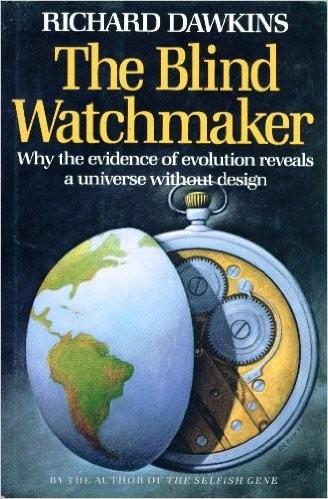
The Blind Watchmaker; Why the Evidence of Evolution Reveals a Universe Without Design
by
Richard Dawkins
Published 1 Jan 1986
It is trivially easy to select for a particular genetic formula, so long as you can read the genes of all the animals. But natural selection doesn’t choose genes directly, it chooses the effects that genes have on bodies, technically called phenotypic effects. The human eye is good at choosing phenotypic effects, as is shown by the numerous breeds of dogs, cattle and pigeons, and also, if I may say so, as is shown by Figure 5. To make the computer choose phenotypic effects directly, we should have to write a very sophisticated pattern-recognition program. Pattern-recognizing programs exist. They are used to read print and even handwriting. But they are difficult, ‘state of the art’ programs, needing very large and fast computers.
…
These diverging processes are best thought of as locally autonomous in the manner of the ‘recursive’ procedure of Chapter 3, rather than as coordinated in some grand central design. ‘Action’, in the sense used in this chapter, is what a geneticist is talking about when he mentions the ‘phenotypic effect’ of a gene. DNA has effects upon bodies, upon eye colour, hair crinkliness, strength of aggressive behaviour and thousands of other attributes, all of which are called phenotypic effects. DNA exerts these effects initially locally, after being read by RNA and translated into protein chains, which then affect cell shape and behaviour. This is one of the two ways in which the information in the pattern of DNA can be read out.
…
In 1995 he became the first Charles Simonyi Professor of the Public Understanding of Science at Oxford University. Richard Dawkins’s first book, The Selfish Gene (1976; second edition, 1989), became an immediate international bestseller and was translated into all the major languages. Its sequel, The Extended Phenotype, followed in 1982. His other bestsellers include The Blind Watchmaker (1986; Penguin, 1988), River Out of Eden (1995), Climbing Mount Improbable (1996; Penguin, 1997), Unweaving the Rainbow (Penguin, 1999) and The Ancestor’s Tale (2004). Richard Dawkins won both the Royal Society of Literature Award and the Los Angeles Times Literary Prize in 1987 for The Blind Watchmaker.
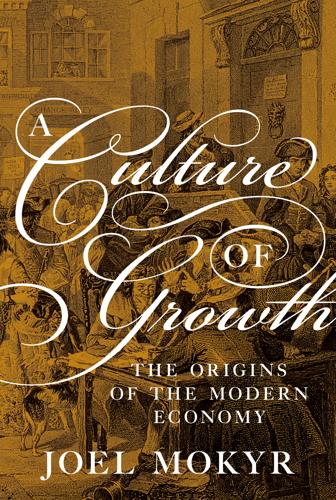
A Culture of Growth: The Origins of the Modern Economy
by
Joel Mokyr
Published 8 Jan 2016
Below I list some of the main advantages of an evolutionary approach to the history of culture.9 First, evolutionary systems are characterized by a fundamental duality of information and action, of genotype and phenotype. Distinctions between genotype and phenotype are hazardous to extend to cultural history, but all the same something can be learned from them. Culture is about matters of the mind; behavior and actions are the observable outcomes of preferences and knowledge (Mesoudi et al., 2013). But, as already noted, the mapping from beliefs to behavior is no simpler than that from genes to phenotypes; at best there are loose statistical associations masking the interactions of many variables.10 One reason is that beliefs, much like other genotypical processes, affect “adjacent” beliefs.
…
Evolutionary models are larger than Richard Dawkins, even larger than Charles Darwin (Hodgson and Knudsen, 2010). Above all, they involve selection, but the selection here is not the natural selection that occurs through population dynamics but the conscious choices made by individuals. Every person forms a unique cultural phenotype much like every person forms a unique biological genotype, but how is this phenotype formed? Cultural evolution sees this as essentially a quasi-Lamarckian process, in which individuals acquire cultural characteristics through learning and imitation during their lifetimes and pass these on to others. They choose their cultural elements (or stick to the default, which are the beliefs and preferences they acquire from their parents during socialization).
…
Much like genes, these traits are largely shared by people of the same culture; a single individual cannot have a cultural trait that is not shared by others, but each individual is unique in that it is highly unlikely that two people share precisely the same combination of cultural elements. There is no puzzle here: by analogy, all individuals have somewhat different genotypes (identical twins excluded) yet they share the vast bulk of their genes with other people and even with other mammals that have quite different phenotypes. Furthermore, this definition stresses that culture involves social learning, so that one’s beliefs, values, and knowledge are not built-up from scratch for each individual but are acquired from others. The key concepts of attitude and aptitude are contained in the larger category of culture, and they will remain at the center of the discussion.

Autistic Community and the Neurodiversity Movement: Stories From the Frontline
by
Steven K. Kapp
Published 19 Nov 2019
‘Us’ and ‘them’: The limits and possibilities of a ‘politics of neurodiversity’ in neoliberal times. Disability & Society, 29 (7), 1117–1129. 5. Bailey, A., & Parr, J. (2003). Implications of the broader phenotype for concepts of autism. In G. R. Bock & J. A. Goode (Eds.), Autism: Neural basis and treatment possibilities (Vol. 251 of Novartis Foundation Symposia). Chichester, UK: Wiley. 6. Couteur, A., Bailey, A., Goode, S., Pickles, A., Robertson, S., Gottesman, I., et al. (1996). A broader phenotype of autism: The clinical spectrum in twins. Journal of Child Psychology and Psychiatry, 37 (7), 785–801. 7. Posserud, M.-B., Lundervold, A. J., & Gillberg, C. (2006).
…
See vaccines, and autism Autism Acceptance Day/Autism Acceptance Month 12 Autism Act (2009) (UK) 15 autism advocacy 11, 14, 24, 98, 157, 306, 308 and Autism Speaks, 221, 228, 230 AutismAndRace.com 250 autism-as-tragedy paradigm 26–27, 28, 30, 33, 34, 91, 229 Autism Awareness Day 239 autism diagnosis 23, 90, 167–189, 263, 296 Autism Dividend, The 282 “autism epidemic” 92, 94, 223, 238 Autism Every Day 95, 130, 148 Autism Hub 97, 126, 129–131 Autism in Adulthood 140 Index Autism/Neurodiversity Manifesto 3, 15, 255–274 autism policy 221 autism quackery 156 autism research 151, 224, 229, 311, 312 and dehumanization, 73 ethical concerns with, 7 participatory, 13, 133, 139 problematic, 135 autism rights v, 1, 2, 8, 14, 305, 308 Autism Society of America 12, 83, 95, 180 Autism Speaks 130, 131, 221–231, 278, 279 autism spectrum 9, 169, 170, 180, 185, 248, 298 autism therapy ix, 6, 60 autism-vaccine disinformation 158 autism-vaccine litigation 96 Autistica 277–281 autistic activism 46, 75, 116, 131, 134–141, 307 autistic culture 1, 35–37 “Autistic Distinction, The” 92–93 Autistic Genocide Clock v, 13, 123–131, 307 autistic identity 134, 158, 201, 306 Autistic Passing Project 174 Autistic Pride Day 12 Autistic Self Advocacy Network (ASAN) 9, 130–131, 136, 148–150, 158, 231 DSM-5 lobbying/recommendations by, 167–189, 309 autistic space 4, 13, 35, 111–114, 117, 118, 120, 121 321 autistic spectrum (InLv), independent living on the 41–48, 109, 110 Autistics Speaking Day 12 “autistic superiority” 73, 289 autistics.org 12, 65–75, 134, 295, 307 autistic traits 26, 70, 91, 120, 126, 288, 296 and DSM-5, 172, 176, 185, 187, 189 autoethnography 216 autonomy 2, 8, 58, 198, 206, 246, 277, 305, 313 Autonomy (journal) 14, 211–219, 307 Autreat 12, 13, 24, 30, 35, 36, 48, 97, 216, 310 and Autscape, 109, 110, 112–114 Autscape 13, 48, 109–121, 282, 292, 295, 307, 310 aversives 200, 203, 205, 206 “awareness” 83, 198, 238 AWN (Autistic Women and NonBinary Network) 13, 147–154, 157 B Baggs, Mel 57, 98, 158, 198, 295, 298 Bartak, Lawrence 27 BBS (bulletin board systems) 41, 43, 44 behaviorism 58, 175, 195–196, 198, 279 Berkowitz, Lori 151, 246 Bettelheim, Bruno 68, 68n2 biology 3, 5, 46, 225, 228, 288, 297 bio-medicalization 296 322 Index biomedical model, Western 8 Birmingham, University of 57, 60, 215, 218, 280 blogging 129, 134, 161, 201, 258–260 Blume, Harvey 45, 47, 90 Booth, Janine 268–270, 274 Bovell, Virginia 58, 277 Bowen, Paul 59, 60 Breakstone, Savannah Logsdon 150, 151 Bridging the Gaps 31, 32 broad autism phenotype/broader autistic phenotype 91, 288 broader autism community vii, 15, 311 Brook, Kabie 283, 284 Brown, Lydia X.Z. 243, 310 bullying 67, 69, 70, 119, 313 Burns, Charles 110 “butterfly effect” 268–269 C CAFETY (Community Alliance for the Ethical Treatment of Youth) 202 Cal (Cal Montgomery) 65, 73, 78, 83, 198, 199, 295, 310 CARD (Center for Autism and Related Disorders) ix caregivers/caregiving 6, 311, 312 Carley, Michael John 170, 181 Carlock, William 26 CAS (Critical Autism Studies) 9, 211, 219, 307 catatonia 42, 47, 52, 55 causation, of autism 25, 26, 95, 149, 155, 238, 312 environmental, 3, 6, 8, 96 CBPR (Community Based Participatory Research) 134–137, 140 “challenging behaviors” 52 chemical restraints 237, 307 chronic illnesses 3 civil rights 41, 126, 127, 129, 134, 136, 234 civil rights movements 10, 66, 72, 147, 152 class 3, 5, 67, 167, 171, 187, 197 clinical practice 183, 189 Clinton, Hillary 237–239, 306 cognitive abilities/cognitive capabilities 185, 309, 313 cognitive demands 172, 178 cognitive differences 29, 92, 93, 99, 309 cognitive impacts 172, 178 cognitive profiles 309 cognitive variety 29, 92, 93, 99, 309 Colley, Mary 214 communication 3, 11, 26, 61, 98.
…
Dad was an analytical thinker with minimal tolerance for his own frustration or others’ emotionality; he was practical, brusque, and disinclined to social niceties. (One especially memorable phone call began in mid-sentence, as if I were mid-conversation with him a continent away.) I gradually recognized that I, too, lay somewhere along the banks of the “broader autistic phenotype”: intense focus; bluntness; anxiety and occasional sensory overload; fondness for collecting, organizing, and diving deeply into subjects that interest me. Why had nearly a decade passed before Dave and I figured out that our youngest child was on the spectrum? Perhaps because he was not so different from his grandfather, or from me.

Never Bet Against Occam: Mast Cell Activation Disease and the Modern Epidemics of Chronic Illness and Medical Complexity
by
Lawrence B. Afrin M. D.
,
Kendra Neilsen Myles
and
Kristi Posival
Published 15 Jan 2016
The curious thing about sickle cell anemia, though, is that even though every sickle cell anemia patient has exactly the same beta globin mutation, roughly 15% of such patients have a really rough course (a “poor phenotype”) of the disease, while the other 85% or so have a much easier time (though certainly no picnic), implying that there must be something else going on in the 15% that makes their course so much worse. A few years ago I began realizing that most poor-phenotype sickle cell anemia patients have symptoms that are much easier for MCAS to explain than sickle cell anemia, and when I tested them for MCAS, I found it in most of them, and I also began finding that treating such MCAS would sometimes enable a poor-phenotype sickle cell anemia patient to “transform” into a good-phenotype sickle cell anemia patient.
…
On the other hand, inflammation clearly worsens not only the vaso-occlusive crises themselves but also the risk for development of such crises, and it’s clear that some SCA patients are chronically more inflamed than others and thus have chronically worse courses of the disease – patients I will call “the poor-phenotype sicklers.” Inflammation is an awfully complex phenomenon, though, and we remain just as far from a complete understanding of why some SCA patients are chronically inflamed as we do for non-SCA patients. Regardless of why they are more inflamed, though, poor-phenotype sicklers on average clearly suffer not only more frequent and severe crises but also incur more frequently and severely the complications of SCA beyond vaso-occlusive crises, a few examples of which are strokes and other blood clots, a type of respiratory failure called acute chest syndrome, and kidney failure.
…
As mentioned earlier in this book, soon after I began recognizing MCAS in many of my chronically ill patients whose known diagnoses didn’t account for many of their symptoms, I began seeing much the same pattern in most of the poor-phenotype sicklers already under my care. Wondering if MCAS might be one significant source of inflammation in them which might be controllable to the point of turning them into good-phenotype sicklers, I began looking for MCAS in them, and the more I looked for it, the more I found it, and the more I found it, the more I treated it, and the more I treated it, the better they got. I reported my findings in 32 such patients in an article, which the American Journal of the Medical Sciences was kind enough to publish in 2014.

Mycelium Running: How Mushrooms Can Help Save the World
by
Paul Stamets
Published 14 Apr 2005
Once established, the mycelium may remain resident for decades. The forms of spawn used in the spored oil, plug, rope and sawdust all pivot around a predominant phenotype (a single individual) while the spores in the chain-saw oil provide for alternative phenotypes originating from the same mother mushroom. Having these additional phenotypes improves the adaptability of the species entering into the stump’s complex microbial universe. Which phenotype dominates is influenced by environmental factors. In the process called anastomosis or “same-self fusion,” the mycelium seeks itself and fuses with compatible substrains, and spores and mycelium marry into a single organism.
…
This variation in forms shows how mutable the phenotype can be. I most commonly find black morels in fire pits, and what may be sister species growing amongst landscaping bark, in gardens, near construction sites, and beneath fir trees. Morels growing in these varied habitats all have black ridges, although I do not know if they are different species. If morel taxonomists were to cultivate morels and fruit them, they would likely be more lenient in their efforts to strictly separate these species by morphology or habitats. I have long been curious about the differences in DNA that are expressed when one phenotype is elicited from the background habitat versus another.
…
If you are creating your own cultures, it is essential that you use mushrooms that are fresh. If fresh mushrooms are not available, you can purchase cultures (spawn) or spores from commercial sources. What are the differences between cultures created from spores and those created from tissue? Each mating of 2 spores expresses but one of several possible phenotypes from the genome of the contributing mushrooms. In contrast, using a piece of living tissue from the mushroom—cloning—captures the exact genetic composition of the contributing mushroom. Cloning usually requires knowledge of sterile tissue culture technique and a clean room laboratory. (For more information on these techniques, refer to the books listed in the paragraph below.)
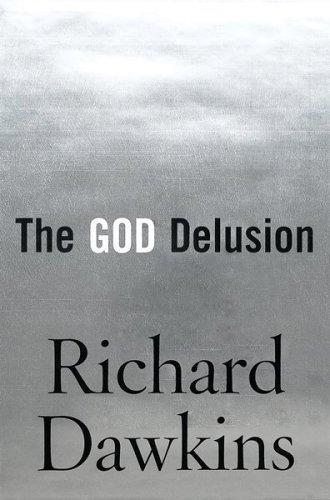
The God Delusion
by
Richard Dawkins
Published 12 Sep 2006
The second follows from the theory that I advocated in The Extended Phenotype: the individual you are watching may be working under the manipulative influence of genes in another individual, perhaps a parasite. Dan Dennett reminds us that the common cold is universal to all human peoples in much the same way as religion is, yet we would not want to suggest that colds benefit us. Plenty of examples are known of animals manipulated into behaving in such a way as to benefit the transmission of a parasite to its next host. I encapsulated the point in my ‘central theorem of the extended phenotype’: ‘An animal’s behaviour tends to maximize the survival of the genes “for” that behaviour, whether or not those genes happen to be in the body of the particular animal performing it.’
…
Not by direct molecule-to-molecule combat but by proxy. The proxies are their ‘phenotypic traits’ – things like leg length or fur colour: manifestations of genes fleshed out as anatomy, physiology, biochemistry or behaviour. A gene’s fate is normally bound up with the bodies in which it successively sits. To the extent that it influences those bodies, it affects its own chances of surviving in the gene pool. As the generations go by, genes increase or decrease in frequency in the gene pool by virtue of their phenotypic proxies. Might the same be true of memes? One respect in which they are not like genes is that there is nothing obviously corresponding to chromosomes or loci or alleles or sexual recombination.
…
If its merciless rationalism doesn’t enrage you at some point, you probably aren’t alive.” —Julian Barnes, author of Arthur and George “A magnificent book, lucid and wise, truly magisterial.” —Ian McEwan, author of Atonement Books by Richard Dawkins THE SELFISH GENE THE EXTENDED PHENOTYPE THE BLIND WATCHMAKER RIVER OUT OF EDEN CLIMBING MOUNT IMPROBABLE UNWEAVING THE RAINBOW A DEVIL’S CHAPLAIN THE ANCESTOR’S TALE THE GOD DELUSION Richard Dawkins THE GOD DELUSION A MARINER BOOK HOUGHTON MIFFLIN COMPANY Boston • New York Copyright © 2006 by Richard Dawkins Preface © 2008 by Richard Dawkins ALL RIGHTS RESERVED First published in Great Britain by Bantam Press, a division of Transworld Publishers, 2006 For information about permission to reproduce selections from this book, write to Permissions, Houghton Mifflin Company, 215 Park Avenue South, New York, New York 10003.
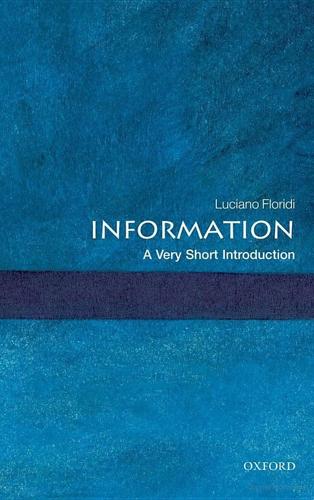
Information: A Very Short Introduction
by
Luciano Floridi
Published 25 Feb 2010
Genetic information Genetics is the branch of biology that studies the structures and processes involved in the heredity and variation of the genetic material and observable traits (phenotypes) of living organisms. Heredity and variations have been exploited by humanity since antiquity, for example to breed animals. But it was only in the 19th century that Gregor Mendel (1822-1884), the founder of genetics, showed that phenotypes are passed on, from one generation to the next, through what were later called genes. In 1944, in a brilliant book based on a series of lectures, entitled What Is Life?, the physics Nobel laureate Erwin Schrodinger (1887-1961) outlined the idea of how genetic information might be stored.
…
In the precise sense in which one may speak of semantic information, genetic information can hardly count as an instance of it. It simply lacks all its typical features, including meaningfulness, intentionality, aboutness, and veridicality. DNA contains the genetic code, precisely in the sense that it physically contains the genes which code for the development of the phenotypes. So DNA does contain genetic information, like a CD may contain some software. But the genetic code or, better, the genes, are the information itself. Genes do not send information, in the sense in which a radio sends a signal. They work more or less successfully and, like a recipe for a cake, may only partly guarantee the end result, since the environment plays a crucial role.
…
Biological information, in the predicative sense of the world, is procedural: it is information for something, not about something. Genetic information can now be placed on our map (see Figure 15). 15. Genetic information A final comment before switching to neural information. Of course, genes play a crucial role in explaining not only the development of individual organisms but also the inheritance of phenotypes across generations. Therefore, informational approaches have been adopted both in genetics and in evolutionary biology and even at the higher level of biological anthropology. Memes (alleged units or elements of cultural ideas, symbols, or practices), for example, have been postulated as cultural analogues to genes, which are transmitted from one mind to another through communication and imitable phenomena, self-replicating and responding to selective pressures.

The Impact of Early Life Trauma on Health and Disease
by
Lanius, Ruth A.; Vermetten, Eric; Pain, Clare
Published 11 Jan 2011
Taken together, these findings suggest that parental withdrawal may be particularly problematic for those vulnerable to borderline personality disorder from a point early in development. 51 Section 1: Impact on health and disease “Maternal buffering”:€does quality of early care moderate the expression of child genetic predisposition? 52 Inadequate early care is an important risk factor in human development for multiple later psychopathologies. Results from animal models are now supporting the concept of phenotypic plasticity, where offspring phenotypes are seen to vary as a function of environmental context, despite similar genotypes [55]. Studies from Meaney and colleagues have repeatedly demonstrated that maternal care behaviors in rats, such as pup licking and grooming, foster enduring alterations of offspring gene expression [43,56].
…
One could argue that the heritability estimate of phenylketonuria is 100%, since individuals who are carrying two defective copies of the gene are bound to express the phenotype (autosomal recessive heritance pattern). However, if the individual’s diet is devoid of phenylalanine, then the mutation will have no effect in practice. In this case, both the genetic vulnerability (mutation) and the environmental factor (phenylalanine) are required for the full expression of the phenotype. Unfortunately, the field of molecular genetics has only recently begun to investigate gene–environment interactions as they pertain to psychiatric disorders.
…
Our understanding of the connection between emotional trauma in childhood and the pathways to biomedical and psychopathology in adulthood is still being formed as neuroscientists begin to describe the changes that take place on the molecular level as a result of events or ongoing states of life that occurred hours, months or decades earlier. xiii Foreword The editors have paid attention to all parts of our enquiry into the significance of the earliest years of human development:€to the roles of abuse and attachment, to genetics and to the epigenetic effects of parenting and other experiences of early life that lead to phenotypic plasticity, to the distinctly partial process of resiliency, and to diagnosis and treatment. The chapter authors, a mix of the internationally distinguished and those on a clearly rising trajectory, provide a blend of clinical observation and highly specific technical information in this bold attempt to bring together what is becoming known by clinical study and by sophisticated technical approaches such as functional imaging.
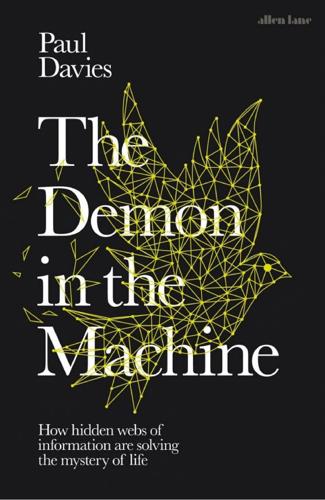
The Demon in the Machine: How Hidden Webs of Information Are Finally Solving the Mystery of Life
by
Paul Davies
Published 31 Jan 2019
By the time the embryo is fully formed, the differentiation process has created all the different cell types needed.fn12 All cells in your body have the same DNA, yet a skin cell is different from a liver cell is different from a brain cell. The information in DNA is referred to as the genotype and the actual physical cell is called the phenotype. So one genotype can generate many different phenotypes. Fine. But how do liver cells gather in the liver, brain cells in the brain, and so on – the cellular equivalent of ‘birds of a feather flock together’? Most of what is known comes from the study of the fruit fly Drosophila. Some of the morphogens are responsible for causing undifferentiated cells to differentiate into the various tissue types – eyes, gut, nervous system, and so on – in designated locations.
…
The road from an inventory of proteins to functional three-dimensional anatomy is a long one and the protein ‘parts list’ provided by the genome project is useless without the ‘assembly instructions’. Even today, in the absence of foreknowledge, nobody can predict from a genomic sequence what the actual organism might look like, let alone how random changes in the genome sequence would translate into changes in phenotype. Genes make a difference only when they are expressed (that is, switched on), and it is here, in the field of gene control and management, that the real bioinformatics story begins. This emerging subject is known as epigenetics, and it is far richer and more subtle than genetics in isolation. More and more epigenetic factors which drive the organization of biological information patterns and flows are being discovered.
…
You might expect this to rid the worm of any further two-headed aspirations, but it turns out that if the remainder of the worm is then cut in half two new two-headed worms are made! This is a dramatic example of epigenetic inheritance at work (see Box 10). The key point is that all these monster worms have identical DNA sequences yet dramatically different phenotypes. A visitor from Mars would surely classify them as different species based on their morphology. Yet, somehow, the physical properties of the organism (in this case, the stable states of the electric circuits) convey altered morphological information from one generation to the next. Fig. 12. Two-headed worm created by Michael Levin at Tufts University using manipulation of electrical polarity.

Food Allergy: Adverse Reactions to Foods and Food Additives
by
Dean D. Metcalfe
Published 15 Dec 2008
Other groups have shown the reactions were IgE mediated through prick skin tests (PSTs)[11–15,19, 25–32], leukocyte histamine release test [29], radioallergosorbent testing (RAST) [12,27,28,30–32], and immunoblotting for specific IgE [11–15]. Reactions have been reported with two common predominating phenotypes, food hypersensitivity and occupational respiratory disease. In the occupational respiratory disease phenotype, these cases involve predominately males with no atopic background. In the food hypersensitivity phenotype, all case reports have involved females, half of whom were atopic. Two of these females also showed occupational disease features, and many have described prior episodes of itching and burning with application of makeup, suspicious for contact reactions [12].
…
However, TCRγδ⫹ CD8⫺CD4⫺ cells may occur as the majority of intra-epithelial lymphocytes, which suggests that a cytokine imbalance leads to the disease phenotype [144]. CD is primarily Th1 biased, whereas cow’s milk-protein allergy in individuals with an atopic predisposition appears to be predominantly Th2 biased. This is evidenced by a high production of IL-4, IL-5, and IL-13 and a low production of IFN-γ [145,146]. However, non-atopic individuals may exhibit a Th0-like cytokine phenotype [147]. A recent study has demonstrated differences in an immune activation profile between individuals with non-IgE-mediated cow’s milk allergy and CD.
…
Lake hypothesized that food protein-induced proctocolitis may be a milder form of FPIES based on the fact that in FPIES, the maximal inflammatory response also involves the rectum [26]. Hence, proctocolitis in formula-fed infants would represent the mildest phenotype, whereas the protective effects of the breast milk such as presence of IgA antibodies and partially processed food proteins would prevent the expression of the full, more severe clinical phenotype in the breast-fed infants. Perhaps IgA or other immunologically active components of breast milk bind with the food allergens and release them in the rectum following cleavage by microbial IgA proteases or via other mechanisms [26].

The Ape That Understood the Universe: How the Mind and Culture Evolve
by
Steve Stewart-Williams
Published 12 Sep 2018
The squirrels seem to be following a second rule as well: “Be nice to individuals who are similar to you.” This strategy is known as phenotype matching. (The phenotype is the collection of observable features of an organism, shaped by the interaction of its genes with the local environment.) Phenotype matching works because the more similar an individual is to oneself, the more probable it is that that individual is a relative. (Attentive readers will notice that early-life cohabitation and phenotypic similarity are also used as kinship cues in another context: incest avoidance. In a range of species, statistical indicators of relatedness appear to upregulate altruism but downregulate sexual attraction.
…
First, like many other animals, humans seem to be especially willing to lend a helping hand to individuals they were raised with, or those they helped to raise. Second, also like many other animals, humans seem to be especially willing to help individuals who resemble them more closely than the average person in their social environment. To use the vernacular, early-life cohabitation and phenotypic similarity seem to function as kinship cues in our species, just as they do in many others. A responsiveness to these stimuli is plausibly a part of our species-typical mental architecture.29 It’s worth acknowledging that many of the research findings related to human kinship are utterly unsurprising.
…
More precisely, lactose tolerance is found in people who trace their ancestry to these parts of the world, wherever they happen to live today. These people are the exceptions, though. Almost everyone else, including most Africans, Australian Aborigines, Asians, and Native Americans, have the typical mammalian phenotype: They can only digest lactose efficiently in infancy and early childhood. The fact that people of European ancestry tend to assume that most humans are lactose tolerant reflects a kind of ethnocentrism: a biological ethnocentrism. It also reflects historical myopia. Until recently, no one could digest lactose post-weaning.
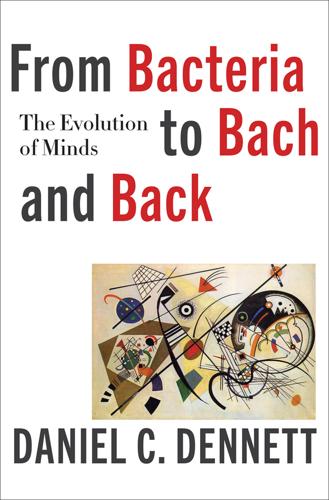
From Bacteria to Bach and Back: The Evolution of Minds
by
Daniel C. Dennett
Published 7 Feb 2017
People—real or mythical—with truly “photographic memories” are suffering from a debilitating pathology, burdening their heads with worse than useless information.28 Evolution by natural selection churns away, automatically extracting tiny amounts (not “bits”) of information from the interactions between phenotypes (whole, equipped organisms) and their surrounding environments. It does this by automatically letting the better phenotypes reproduce their genes more frequently than the less favored.29 Over time, designs are “discovered” and refined, thanks to these encounters with information. R&D happens, designs are improved because they all have to “pay for themselves” in differential reproduction, and Darwinian lineages “learn” new tricks by adjusting their form.
…
Richard Gregory, whose reflections on intelligence and equipment inspired me to name Gregorian creatures after him, emphasized that it not only took intelligence to use a pair of scissors, the pair of scissors enhanced the “intelligence” of users by giving them a large increase in available competence. These tools, like the hermit crab’s shell, the bird’s nest, the beaver’s dam, are acquired design improvements, but they are not part of our extended phenotypes (Dawkins 1982, 2004b); the general talent to recognize such things and put them to good use is the phenotypic feature that is transmitted by our genes. I sometimes suggest to my students that evolution by natural selection is nothing but “universal plagiarism”: if it’s of use to you, copy it, and use it. All the R&D that went into configuring whatever it is that you copy is now part of your legacy; you’ve added to your wealth without having to “reinvent the wheel.”
…
Some day in the future we may find that there is a natural interpretation of transmission in the nervous system that yields a measure of bandwidth or storage capacity, in bits, of an encoding of whatever is being transmitted, processed, and stored, but until then the concept of information we use in cognitive science is semantic information, that is, information identified as being about something specific: faces, or places, or glucose, for instance. In other words, cognitive scientists today are roughly in the position that evolutionary theorists and geneticists were in before the analysis of the structure of DNA: they knew that information about phenotypic features—shapes of bodily parts, behaviors, and the like—was somehow being transmitted down through the generations (via “genes,” whatever they were), but they didn’t have the ACGT code of the double helix to provide them with a Shannon measure of how much information could be passed from parent to offspring as genetic inheritance.
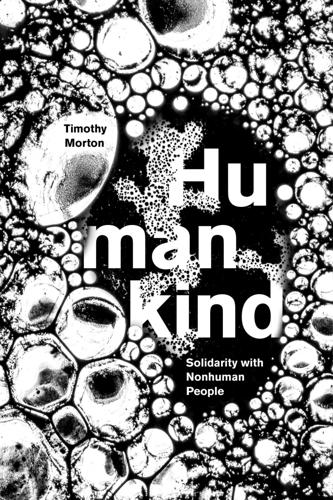
Humankind: Solidarity With Non-Human People
by
Timothy Morton
Published 14 Oct 2017
So, Milton was an “unproductive” worker because he didn’t produce any surplus value.8 Surplus value is produced when the capitalist obtains abstract homogeneous surplus labor time. Milton’s automated, nonhuman, algorithmic behavior—the poem just poured out of him—is valued, while the deliberate, “imaginative” entering into of a contract by a paid author is devalued. Paradise Lost was part of Milton the Silkworm’s “extended phenotype,” the expression of his artistic genome, just as a beaver’s genes don’t end at its whiskers but at her or his dam. This is an astounding reversal of the architect and the bee. It is the contract writer whose labor has been reduced upwards to an abstract, bland, homogeneous unit of labor time, so that it doesn’t much matter what the writer is expressing.
…
As Marx says in the chapter on machines in Capital, capitalism produces the misery of the worker and the depletion of the soil: All progress in capitalist agriculture is a progress in the art, not only of robbing the worker, but of robbing the soil; all progress in increasing the fertility of the soil for a given time is a progress towards ruining the more long-lasting sources of that fertility … Capitalist production, therefore, only develops the techniques and the degree of combination of the social process of production by simultaneously undermining the original sources of all wealth—the soil and the worker.14 Soil is decomposing life forms and the bacteria whose extended phenotype these life forms are.15 Marx implies nonhumans, yet he erases them—it’s the fertility of the soil whose loss he laments, and this fertility is keyed to human metabolism; the soil is seen as it is accessed by humans. This is anthropocentric soil. But the good news is that the implication of nonhumans means that we might be able to un-erase them within Marxism; such an action seems highly unlikely within the realm of strict capitalist economic theory.
…
Within a single page, Marx does go on to say that I differ from nonhumans in my ability to change how I participate in symbiosis, which provides the basis for the strong correlationist interpretation that unlike nonhumans, human species-being is the way in which humans create their own environment, an idea so caught in Hegelian antics that it forgets the simple fact of termites or beavers and any kind of “extended phenotype,” the fact that a spider’s genome includes not only spider legs but also spiders’ webs.21 Let’s continue exploring the phenomenology of the symbiotic real. Consider the Paris Spleen poems of Charles Baudelaire, poet-consumerist par excellence, bohemian inventor of the flâneur, or rather, the one who christened this quintessential, “Kantian” mode of consumption; the poet who originated the notion of ennui.
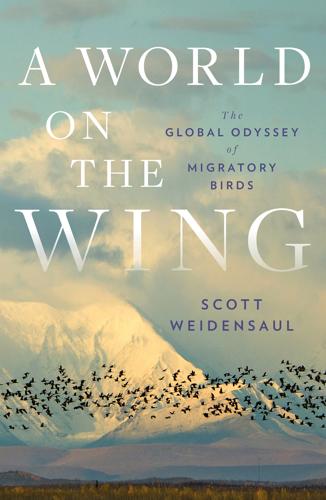
A World on the Wing: The Global Odyssey of Migratory Birds
by
Scott Weidensaul
Published 29 Mar 2021
The ability of an organism to change in the face of different environmental conditions is one aspect of a grab bag of possible modifications to a plant’s or animal’s physical form, physiology, or behavior that biologists call phenotypic plasticity. This differs from evolutionary change, which is wholly genetic and passed down through generations; an organism’s phenotype is a combination of its genetic background (its genotype) and how the expression of that genotype is affected by its environment. So far, evidence for true climate-driven evolutionary change among migratory birds is sparse, and differentiating between evolution and phenotypic plasticity has been difficult—though the difference is important. Ornithologists assume that birds will evolve in response to climate change, but will they be able to do so quickly enough to ward off its worst impacts?
…
Ornithologists assume that birds will evolve in response to climate change, but will they be able to do so quickly enough to ward off its worst impacts? Or will phenotypic changes stretch only so far, eventually snapping as climatic change accelerates? When scientists in Sweden observed great reed warblers returning from Africa six days earlier than they had two decades previously, was that evolution or plasticity? After a great many calculations, they concluded it was the latter—but admitted they could not be certain. However, researchers working with pied flycatchers in Germany were able to exactly replicate a classic experiment first carried out in 1981, in which chicks were raised in captivity and shielded from all external seasonal cues to determine the genetically based timing of migration.
…
The ever-busy Theunis Piersma was part of a team that found a surprising climate-induced change in red knots that nest in the Russian Arctic, where—as in so much of the world—the seasons are running amok, with spring advancing half a day a year over three decades. In that time, red knots have begun to physically shrink; especially in years with early snowmelt, juvenile knots weigh less, and have shorter bills, legs, and wings. This could be evolutionary or it could be (and likely is) phenotypic plasticity, since knots that are missing the Arctic insect peak and are undernourished may not grow as well as they otherwise would. But this change has life-or-death consequences for the knots once they reach their wintering grounds on the mudflats of the west African coast. Those with typically long bills can more easily reach a larger, more abundant type of clam that lives well below the surface, but the stunted knots with their shorter bills are forced to subsist on smaller, rarer clams closer to the top, and on low-quality seagrass rhizomes.

Complexity: A Guided Tour
by
Melanie Mitchell
Published 31 Mar 2009
After many bitter arguments between the early Darwinists and Mendelians, this false opposition was cleared up by the 1920s when it was discovered that, unlike the traits of Mendel’s pea plants, most traits in organisms are determined by many genes, each with several different alleles. The huge number of possible combinations of these many different alleles can result in seemingly continuous variation in an organism. Discrete variation in the genes of an organism can result in continuous-seeming variation in the organ-ism’s phenotype—the physical traits (e.g., height, skin color, etc.) resulting from these genes. Darwinism and Mendelism were finally recognized as being complementary, not opposed. One reason the early Darwinists and Mendelians disagreed so strongly is that, although both sides had experimental evidence supporting their position, neither side had the appropriate conceptual framework (i.e., multiple genes controlling traits) or mathematics to understand how their respective theories fit together.
…
Soon after this, it was worked out how the code was translated by the cell into proteins, how DNA makes copies of itself, and how variation arises via copying errors, externally caused mutations, and sexual recombination. This was clearly a “tipping point” in genetics research. The science of genetics was on a roll, and hasn’t stopped rolling yet. The Mechanics of DNA The collection of all of an organism’s physical traits—its phenotype—comes about largely due to the character of and interactions between proteins in cells. Proteins are long chains of molecules called amino acids. Every cell in your body contains almost exactly the same complete DNA sequence, which is made up of a string of chemicals called nucleotides. Nucleotides contain chemicals called bases, which come in four varieties, called (for short) A, C, G, and T.
…
The key, it turns out, is not these isolated genes, but the way different genes interact, just as has been found in real genetics. And just as in real genetics, it’s very difficult to figure out how these various interactions lead to the overall behavior or fitness. It makes more sense to look at the actual behavior of each strategy—its phenotype—rather than its genome. I wrote a graphics program to display Robby’s moves when using a given strategy, and spent some time watching the behavior of Robby when he used strategy M and when he used strategy G. Although the two strategies behave similarly in many situations, I found that strategy G employs two tricks that cause it to perform better than strategy M.
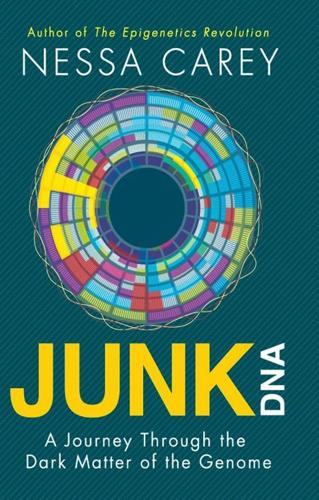
Junk DNA: A Journey Through the Dark Matter of the Genome
by
Nessa Carey
Published 5 Mar 2015
Eur J Hum Genet. 2010 Nov;18(11):1196–201 23. Sahoo T, del Gaudio D, German JR, Shinawi M, Peters SU, Person RE, Garnica A, Cheung SW, Beaudet AL. Prader-Willi phenotype caused by paternal deficiency for the HBII-85 C/D box small nucleolar RNA cluster. Nat Genet. 2008 Jun;40(6):719–21 24. For a full description see http://omim.org/entry/180860 25. For a full description see http://omim.org/entry/130650 26. Data collated in Kotzot D. Maternal uniparental disomy 14 dissection of the phenotype with respect to rare autosomal recessively inherited traits, trisomy mosaicism, and genomic imprinting. Ann Genet. 2004 Jul-Sep;47(3):251–60 27.
…
As the repeat length increases, the symptoms become more severe and are obvious at an earlier age. That’s why the disease gets worse as it passes down the generations, such as in the family that opened this chapter. It also became apparent that usually only mothers passed on the really big repeats, the ones that led to the severe congenital phenotype. This ongoing expansion of a repeated sequence of DNA was a very unusual mutation mechanism. But the identification of the expansion that causes myotonic dystrophy shone a light on something even more unusual. Knitting with DNA Until quite recently, mutations in gene sequences were thought to be important not because of the change in the DNA itself but because of their downstream consequences.
…
So some amino acids can be coded for by different three-letter combinations. At one extreme, glycine is coded for by GGA, GGC, GGG and GGT(U). At the other, the amino acid methionine is only coded for by the combination AT(U)G. But if the amino acid sequence encoded by the mutated gene doesn’t change in Hutchinson-Gilford Progeria, what causes the dramatic phenotype in this condition? Look again at Figure 17.5. The two-base sequence at the beginning of each intervening junk region within a gene is GT. In the patients where the normal GGC changes to GGT, the amino acid region gains an inappropriate extra splice signal. In the context of all the other splicing signals in that genomic region, this inappropriately positioned GT acts strongly.

Artificial Whiteness
by
Yarden Katz
As we will see throughout this book, it has been a tool in the arsenal of institutions predicated on white supremacy. But beyond that, AI also reproduced the shape of whiteness as an ideology. As an ideology, whiteness has always had a nebulous and shifting character. Who is “white,” when, where, and how is historically a contradictory and dynamic affair, one that cannot be reduced to a simple phenotypic matter of “white” versus “nonwhite.” Yet the shifting trajectory of whiteness as an ideology has been consistently steered by the aims of empire and capital. Whiteness has been shaped by the need to accumulate land, maintain the supply of unfree labor, and, in settler-colonialist societies, erase indigenous peoples.
…
But marrying my grandmother, having three light-skinned daughters, establishing a small but respected shop in his town, and wearing his racism against more marginalized nonwhites on his sleeve all got him closer. At the very least, all these made his nonwhite identity recede into the background in some contexts (after all, it was being recognized that even Ashkenazi Jews from Poland can be quite dark, especially under the sun of the Levant). Yet, in another twist, my grandmother—despite her phenotype—was actually white of a lesser shade in the eyes of the European Ashkenazi Jews that formed the elite of her society. Though born in Palestine, she was a Sephardic Jew of Bulgarian origin; a lower rank by the settler-colonialist coordinate system connecting Jewishness and whiteness. I share this anecdote to say that who is “white,” when, where, and how, is an elastic affair.
…
While the one-drop-of-blood rule made one “black” in the eyes of the law—as conducive to maintaining the supply of unfree labor—Native Americans often had to meet a more stringent criterion based on “blood quantum” in order to count as “Indian” for the U.S. government.26 This did not mean, of course, that Native Americans became fully “white” with respect to privilege and social standing, but rather that the settler-colonialist impulse to erase indigenous peoples, or violently assimilate them into white society, was the prevailing consideration—and that this was a distinct logic from that applied to enslaved Africans.27 These are some of the contingencies and contradictions that go into the making of whiteness. As Charles Mills has observed, racial categories are thus simultaneously “unreal,” in that they lack the solid grounding in phenotypic features such as light skin, and “real,” in that racial categories have “a massive effect on people’s psychology, culture, socioeconomic opportunities, life chances, civil rights.”28 The all too real consequences of whiteness come from its connection to concrete systems of power. From colonial America to the present, whiteness has been intertwined with capitalist conceptions of property inscribed into law.
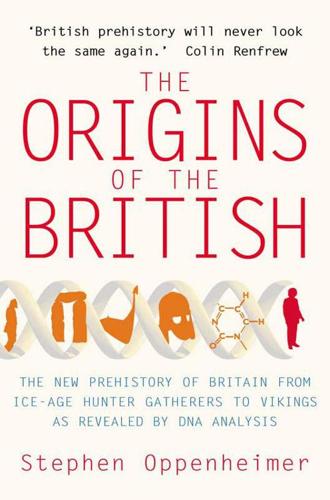
The Origins of the British
by
Stephen Oppenheimer
Published 1 Jul 2007
The answer is simply that the map is based on blood group frequencies, not on blood group gene frequencies. Our expression of blood groups in the blood typing test depends on the genes we get – one from each parent (our genotype). Blood group A is dominant, which means that the result of our blood test (our phenotype) is group A, whether we get one or two A genes from our parents. Group O is recessive, which means that we must receive both our parental genes as O to have an O blood group phenotype. If one parent gives us an O and the other gives us an A, we will test as A. Therefore analyses of blood group frequency will automatically overstate A gene frequencies if this very basic fact is overlooked.
…
These changes can lead to loss (or, alternatively, very high frequency) of certain alleles. The loss of certain alleles erodes genetic variability, and its effects are greatest in populations of small size. genotype The genetic make-up of an individual, as determined by the alleles present. In the example of blood groups, the blood group phenotype A may be the result of either AO genotype or AA genotype. Compare phenotype. glottochronology A technique in linguistics which uses vocabulary comparison (lexico-statistics) to estimate the time of divergence of two related languages by comparing the numbers of shared cognates. It is analogous to the use of radiocarbon dating in that it uses decay as a measurement of time, but has been widely rejected by linguists, owing to variation in the rate of lexical decay.
…
P-celtic Alternative name for the Brythonic branch of the insular-celtic group of languages, so called because it uses a ‘P’ sound where Q-celtic languages, in the Goidelic branch, use a ‘Q’ (or hard ‘C’) sound. phenotype The expression of the genes present in an individual. This may be directly observable (eye colour) or apparent only with specific tests (blood group). The blood group A is an example of a phenotype with several possible underlying genotypes (AO and AA), since A is dominant and O recessive. Compare genotype. phylogeography The study of the patterns of genetic differentiation on a gene tree across landscapes.

Accelerando
by
Stross, Charles
Published 22 Jan 2005
Manfred spits some virtual cash at the brutal face of the cash register, and it unfetters the suitcase, unaware that Macx has paid a good bit more than seventy-five euros for the privilege of collecting this piece of baggage. Manfred bends down and faces the camera in its handle. "Manfred Macx," he says quietly. "Follow me." He feels the handle heat up as it imprints on his fingerprints, digital and phenotypic. Then he turns and walks out of the slave market, his new luggage rolling at his heels. A short train journey later, Manfred checks into a hotel in Milton Keynes. He watches the sun set from his bedroom window, an occlusion of concrete cows blocking the horizon. The room is functional in an overly naturalistic kind of way, rattan and force-grown hardwood and hemp rugs concealing the support systems and concrete walls behind.
…
The metacortex – a distributed cloud of software agents that surrounds him in netspace, borrowing CPU cycles from convenient processors (such as his robot pet) – is as much a part of Manfred as the society of mind that occupies his skull; his thoughts migrate into it, spawning new agents to research new experiences, and at night, they return to roost and share their knowledge. While Manfred sleeps, he dreams of an alchemical marriage. She waits for him at the altar in a strapless black gown, the surgical instruments gleaming in her gloved hands. "This won't hurt a bit," she explains as she adjusts the straps. "I only want your genome – the extended phenotype can wait until … later." Blood-red lips, licked: a kiss of steel, then she presents the income tax bill. There's nothing accidental about this dream. As he experiences it, microelectrodes in his hypothalamus trigger sensitive neurons. Revulsion and shame flood him at the sight of her face, the sense of his vulnerability.
…
Lots of hard problems have proven to be tractable. The planetary genome and proteome have been mapped so exhaustively that the biosciences are now focusing on the challenge of the phenome: Plotting the phase-space defined by the intersection of genes and biochemical structures, understanding how extended phenotypic traits are generated and contribute to evolutionary fitness. The biosphere has become surreal: small dragons have been sighted nesting in the Scottish highlands, and in the American midwest, raccoons have been caught programming microwave ovens. The computing power of the solar system is now around one thousand MIPS per gram, and is unlikely to increase in the near term – all but a fraction of one percent of the dumb matter is still locked up below the accessible planetary crusts, and the sapience/mass ratio has hit a glass ceiling that will only be broken when people, corporations, or other posthumans get around to dismantling the larger planets.

The Spirit Level: Why Greater Equality Makes Societies Stronger
by
Richard Wilkinson
and
Kate Pickett
Published 1 Jan 2009
A recent 12-year study of working-age men in the USA found that if they became unemployed, they gained weight.136 When their annual income dropped they gained, on average, 5.5 lbs. THE THRIFTY PHENOTYPE One additional idea that suggests a causal link between higher levels of income inequality in a society and higher body weights is known as the ‘thrifty phenotype’ hypothesis. Put simply, this theory suggests that when a pregnant woman is stressed, the development of her unborn child is modified to prepare it for life in a stressful environment. It isn’t yet clear whether stress hormones themselves do the damage, or whether stressed foetuses are less well nourished, or both things happen, but these ‘thrifty phenotype’ babies have a lower birthweight and a lower metabolic rate.
…
In conditions of scarcity during our evolutionary past this adaptation would have been beneficial, but in our modern world, where stress during pregnancy is unlikely to be due to food shortages and babies are born into a world of plenty, it’s maladaptive. Babies with a thirfty phenotype in a world where food is plentiful are more prone to obesity, to diabetes and to cardiovascular disease. As this book shows, societies with higher levels of income inequality have higher levels of mistrust, illness, status insecurity, violence and other stressors, so the thrifty phenotype may well be contributing to the high prevalence of obesity in them. THE EQUALITY DIET It is clear that obesity and overweight are not problems confined to the poor.
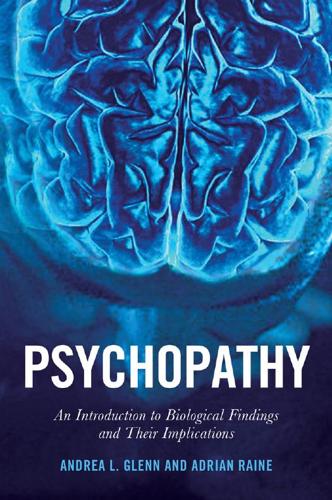
Psychopathy: An Introduction to Biological Findings and Their Implications
by
Andrea L. Glenn
and
Adrian Raine
Published 7 Mar 2014
Across large samples, statistical modeling techniques can determine the proportion of the variance in a particular trait or phenotype (in this case, psychopathy or a subcomponent of it) that is accounted for by genetic versus environmental factors. Genetic factors either can be additive or nonadditive. Additive means that genes summate to contribute to a phenotype. For example, hypothetically, alleles at five different locations may contribute to the determination of an individual’s height (the phenotype). An additive effect means that the individual’s height is the sum of the effect of each of these alleles on height.
…
Nonadditive effects mean that genes are configured in a unique way to form the personality trait, rather than simply being the cumulative 22 << Genetics effect of several genes. This means that if just one gene is different, the personality trait may not exist. Nonadditive effects come in three types—dominance, epistasis, and emergensis. Dominance means that if one of two alleles is dominant, the phenotype will reflect the dominant allele, rather than a summation of the two alleles. For example, alleles for brown eyes tend to be dominant, whereas alleles for blue eyes are recessive. If an individual has one allele for brown eyes and one allele for blue eyes, the result is that the individual will have brown eyes, rather than a mix between brown and blue.
…
If an individual has one allele for brown eyes and one allele for blue eyes, the result is that the individual will have brown eyes, rather than a mix between brown and blue. In the case of dominance, DZ twin correlations are expected to be about 25 percent of the MZ correlations. Epistatic and emergenic effects simply mean that multiple genes must interact or be configured in a specific way in order for the phenotype to be present. Because these configurations are so specific, these types of effects do not run in families and can be thought of as random; thus, the correlation between DZ twins is typically close to zero, whereas the effect will be present in MZ twins who share the exact same genes. Environmental effects can also be divided into two types—shared and nonshared.

Cognitive Gadgets: The Cultural Evolution of Thinking
by
Cecilia Heyes
Published 15 Apr 2018
Similarly, the still-thriving field of human behavioral ecology (Cronk, 1991; Laland and Brown, 2011) largely ignores the mind as it uses mathematical modeling to investigate whether distinctively human behaviors, especially foraging behaviors, are likely to be adaptive (to enhance reproductive fitness) and, if so, to be adaptations (to have evolved because they enhance reproductive fitness). Adopting a strategy that has been described as the “phenotypic gambit” (Grafen, 1984; Hoppitt and Laland, 2013) and “blackboxing” (Heyes, 2016a), human behavioral ecologists sometimes allude to the brain, but very rarely to the mind, and when they do say something about the mind, they usually reach for folk psychology. Consequently, although sociobiology and human behavioral ecology have provided valuable information about human evolution, I think evolutionary psychologists were right to point out, some twenty years ago, that it was high time the mind was taken more seriously.
…
Like evolutionary psychology at its best, cultural evolutionary psychology takes this to be a question about the mind, drawing on cognitive science, rather than folk psychology, for information about how the mind works. Like cultural evolutionary theory, cultural evolutionary psychology embraces the evidence that human phenotypes are shaped not only by genetic inheritance and learning, but also by cultural evolution. However, unlike both of its conceptual ancestors, cultural evolutionary psychology finds evidence—in social cognitive neuroscience and a broad range of other fields—that the influence of cultural evolution is not confined to the grist of human thought.
…
Current Biology, 22(21), 2059–2062. Fernald, A. (1991). Prosody in speech to children: Prelinguistic and linguistic functions. Annals of Child Development, 8, 43–80. Fernandes, H. B., Woodley, M. A., and te Nijenhuis, J. (2014). Differences in cognitive abilities among primates are concentrated on g: Phenotypic and phylogenetic comparisons with two meta-analytical databases. Intelligence, 46, 311–322. Ferrari, P. F., Rozzi, S., and Fogassi, L. (2005). Mirror neurons responding to observation of actions made with tools in monkey ventral premotor cortex. Journal of Cognitive Neuroscience, 17(2), 212–226.
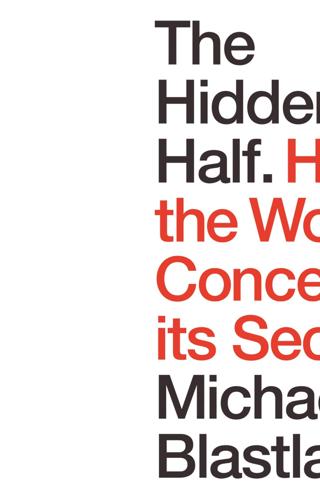
The Hidden Half: How the World Conceals Its Secrets
by
Michael Blastland
Published 3 Apr 2019
It’s tempting to speculate that one crayfish – eventually the biggest – grabbed the first food, ate more, grew bigger, then threw its weight or energy around to take the lion’s share and grow bigger still, so an initial advantage was compounded. Except that they all had more than enough to eat, all the time; the researchers made sure of it. The genetic make-up of an individual is called the genotype. How it turns out to look and behave is the phenotype. The emergence of multiple, varied phenotypes from a single genotype in the same environment is one of the latest, greatest of nature’s curiosities to crave attention. The secret life of causes We’re left to wonder if the causes lie beyond discovery, maybe hidden in the minute detail of the marmorkrebs’ experience.
…
I can also imagine a more fine-toothed classification of different types of cancer, for example, implying different treatments depending on which type we have. But ‘personalized’ in a general sense is a huge step beyond what we now know, or quite possibly can know. Even if we knew everyone’s exact genotype, we have to remember the marmorkrebs’ astonishing variation – from identical genotypes to radically different phenotypes – and rightly wonder how far knowing everyone’s personal genotype can take us in the prediction of what will happen to each person or how they will respond to treatment. My instincts – you can tell – are with the sceptics, and after waving a finger in the air of the argument I’d say that precision or personalized medicine is about one part promise to an equal part hype.
…
Scholtz et al., ‘Ecology: Parthenogenesis in an Outsider Crayfish’, Nature, vol. 421, 2003. 5 Frank Lyko, head of epigenetics at the German Cancer Research Center, in comments to Newsweek magazine, February 2018. 6 Unless there are more significant mutations which also cause marked differences, but you would not expect this to be an everyday, every-creature event. 7 G. Vogt et al., ‘Production of Different Phenotypes from the Same Genotype in the Same Environment by Developmental Variation’, Journal of Experimental Biology, vol. 211, 2008, pp. 510–523. 8 The paper is less cited than you would expect. Even Google scholar, which I’m reliably informed tends to overestimate, records 120 citations in 10 years – not nearly as often as it deserves.
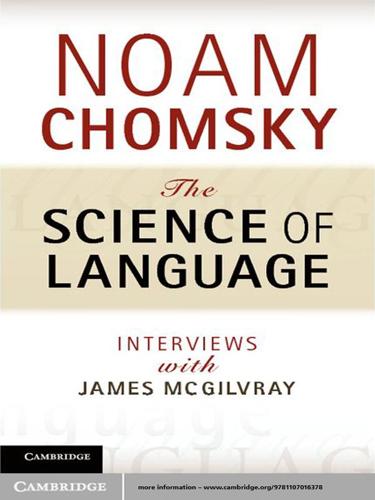
The Science of Language
by
Noam Chomsky
Published 24 Feb 2012
For one thing, there is the fact that modification requires mutation, and mutation can only proceed within the constraints set by physics and chemistry, among other sciences: possible structures and modifications of structure are limited by the laws of nature. Various structural features of organisms, for example, cannot be explained by genetic instruction sets alone, nor can the way phenotypical development takes place; ‘epigenetic’ factors play a crucial role in the latter. Scaling of skeletal structure (the genome cannot be thought to provide a complete specification of the sizes of each bone in a specific organism) and symmetry (the fact that each rib on the right has a homologue on the left, each wing of a butterfly the same pattern as the other . . .) are two examples.
…
Exploiting a connection to this view of learning is misguided strategy; one ends up defending something for which there is no warrant except that it appears to be all-encompassing. There is no modesty to this view – no recognition that selection's role is limited, if even that. Nothing is said about how evolution and phenotype development and growth must take place within the constraints set by physics, chemistry, biology, perhaps some form of information theory. There is no mention of the fact that many genes are conserved over species and clades. Epigenetic factors are ignored. ‘Happy accidents’ of the sort found in what Lewontin and Gould called “spandrels” are not mentioned.
…
Chapter 6 Page 37, On parameters and canalization I discuss variation in languages and parameters’ role in it in Appendix VIII; parameters appear too several times in the main text. Principles are the ‘natural laws’ of the language faculty, universal across the human species. Canalization – the fact that development yields a robust and distinct phenotype despite differences in gene, environment, and ‘input’ – is discussed briefly in Appendix VIII too, and is taken up again in the text below. What might parameters have to do – if anything – with canalization? Using for simplicity's sake the headedness macroparameter, assume, as is reasonable, that the child's language faculty's initial state, UG (as specified in the genome), for whatever reason, allows for either option.

Turing's Cathedral
by
George Dyson
Published 6 Mar 2012
28 Missing was the distinction between genotype (an organism’s coded genetic sequence) and phenotype (the physical expression of that sequence) that allows Darwinian selection to operate at levels above the genes themselves. In selecting for instructions at the level of phenotype rather than genotype, an evolutionary search is much more likely to lead to meaningful sequences, for the same reason that a meaningful sentence is far more likely to be constructed by selecting words out of a dictionary than by choosing letters out of a hat. To make the leap from genotype to phenotype, Barricelli concluded, “We must give the genes some material they may organize and may eventually use, preferably of a kind which has importance for their existence.”
…
“This tendency to act on any thing which can have importance for survival is the key to the understanding of the formation of complex instruments and organs and the ultimate development of a whole body of somatic or non-genetic structures.”29 Translation from genotype to phenotype was required to establish a presence in our universe, if numerical organisms were to become more than laboratory curiosities, here one microsecond and gone the next. No matter how long you wait, numbers will never become organisms, just as nucleotides will never become proteins. But they may learn to code for them. Once the translation between genotype and phenotype is launched, evolution picks up speed—not only the evolution of the resulting organisms, but the evolution of the genetic language and translation system itself.
…
In 1963, using the Atlas computer at Manchester University, at that time the most powerful computer in the world, this objective was achieved for a short time, but without further improvement, a limitation that Barricelli attributed to “the severe restrictions … concerning the number of instructions and machine time the symbioorganisms were allowed to use.”33 In contrast to the IAS experiments, in which the organisms consisted solely of genetic code, the Tac-Tix experiments led to “the formation of non-genetic numerical patterns characteristic for each symbioorganism. Such numerical patterns may present unlimited possibilities for developing structures and organs of any kind.” A numerical phenotype had taken form, interpreted as moves in a board game, via a limited alphabet of machine instructions to which the gene sequence was mapped, just as sequences of nucleotides code for an alphabet of amino acids in translating to proteins from DNA. “Perhaps the closest analogy to the protein molecule in our numeric symbioorganisms,” Barricelli speculated, “would be a subroutine which is part of the symbioorganism’s game strategy program, and whose instructions, stored in the machine memory, are specified by the numbers of which the symbioorganism is composed.”34 “Since computer time and memory still is a limiting factor, the non-genetic patterns of each numeric symbioorganism are constructed only when they are needed and are removed from the memory as soon as they have performed their task,” Barricelli explained.

Emergence
by
Steven Johnson
Run through enough cycles, and you have a recipe for engineering masterworks like the human eye—without a bona fide engineer in sight. The genetic algorithm was an attempt to capture that process in silicon. Software already has a genotype and a phenotype, Holland recognized; there’s the code itself, and then there’s what the code actually does. What if you created a gene pool of different code combinations, then evaluated the success rate of the phenotypes, eliminating the least successful strands? Natural selection relies on a brilliantly simple, but somewhat tautological, criterion for evaluating success: your genes get to pass on to the next generation if you survive long enough to produce a next generation.
…
Holland’s system revolved around a series of neat parallels between computer programs and earth’s life-forms. Each depends on a master code for its existence: the zeros and ones of computer programming, and the coiled strands of DNA lurking in all of our cells (usually called the genotype). Those two kinds of codes dictate some kind of higher-level form or behavior (the phenotype): growing red hair or multiplying two numbers together. With DNA-based organisms, natural selection works by creating a massive pool of genetic variation, then evaluating the success rate of the assorted behaviors unleashed by all those genes. Successful variations get passed down to the next generation, while unsuccessful ones disappear.
…
New York and Oxford: Oxford University Press, 1998. Corbusier, Le. Towards a New Architecture. New York: Dover Publications, 1986. Davis, Mike. City of Quartz: Excavating the Future in Los Angeles. New York: Vintage Books, 1992. Dawkins, Richard. Climbing Mount Improbable. New York and London: W. W. Norton, 1996. ———. The Extended Phenotype: The Long Reach of the Gene. New York and Oxford: Oxford University Press, 1982. ———. Unweaving the Rainbow: Science, Delusion and the Appetite for Wonder. London: Penguin Press, 1998. Dean, Katie. “Attention Kids: Play This Game.” Wired News. December 19, 2000. Dehaene, Stanislas, Michel Kerszberg, and Jean-Pierre Changeux.

Upgrade
by
Blake Crouch
Published 6 Jul 2022
The specific arrangement of these four nucleobases creates the code for all biological life on the planet. This code is the genotype, and the way it physically expresses in a life-form (eye color, for instance), combined with its interactions with the environment, is called the phenotype. But understanding the correlation between genotype and phenotype—which DNA code programs which traits—still largely eludes us. Edwin rose from the chair. Then he walked to the door, zipped it open, and stepped through to the other side. As I watched him zip me back into my universe of sealed plastic, I felt truly alone. It reminded me of my time in prison and the crushing sense that others could come and go.
…
She shrugged. “Whenever someone signs up for The Story of You, they have to complete a 350-question personality test and use our imaging app to submit a full-body scan that gives us mountains of data. I have the genomic code of seventy-nine million diverse people and more than twenty-three thousand phenotype data points for each of them. From all over the world. If I could develop a sufficiently powerful AI to handle this data set, and ask the right questions, who knows what I might accomplish.” And then she looked at me with a frightening intensity. “It’s one thing to build a new life-form, cure illness, or even attempt the work we’re doing now with our locusts.
…
“Yes, of course.” His eyes lit up, and I caught a glimpse of the scientist behind the criminal. “She had the data set. Probably built an algorithm to reverse-engineer DNA code from the physical attributes of her customers. Wow. She really did it. Actually built a program to extrapolate genotype from phenotype.” I watched him thinking it through. “People can lie on a questionnaire. She probably designed spiders to scrape public records and compare death certificates. Social media. Hack a few insurance companies and compare her data to their medical records. Get a reasonable confidence ratio.” There was jealousy behind his glee.
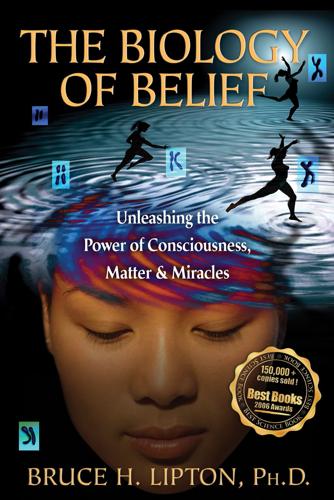
The Biology of Belief: Unleashing the Power of Consciousness, Matter & Miracles
by
Bruce H. Lipton
Published 1 Jan 2005
“A fine structural analysis of normal and modulated cells in myogenic culture.” Developmental Biology 60: 26-47. Lipton, B. H. (1977b). “Collagen synthesis by normal and bromodeoxyuri-dine- treated cells in myogenic culture.” Developmental Biology 61: 153-165. Lipton, B. H., K. G. Bensch, et al. (1991). “Microvessel Endothelial Cell Transdifferentiation: Phenotypic Characterization.” Differentiation 46: 117-133. Lipton, B. H., K. G. Bensch, et al. (1992). “Histamine-Modulated Transdif-ferentiation of Dermal Microvascular Endothelial Cells.” Experimental Cell Research 199: 279-291. Chapter One Adams, C. L., M. K. L. Macleod, et al. (2003). “Complete analysis of the B-cell response to a protein antigen, from in vivo germinal centre formation to 3-D modelling of affinity maturation.”
…
Nature 409: 141-144. Kling, J. (2003). “Put the Blame on Methylation.” The Scientist 27-28. Lederberg, J. (1994). Honoring Avery, MacLeod, And McCarty: The Team That Transformed Genetics. The Scientist 8: 11. Lipton, B. H., K. G. Bensch, et al. (1991). “Microvessel Endothelial Cell Transdifferentiation: Phenotypic Characterization.” Differentiation 46: 117-133. Nijhout, H. F. (1990). “Metaphors and the Role of Genes in Development.” Bioessays 12(9): 441-446. Pearson, H. (2003). “Geneticists play the numbers game in vain.” Nature 423: 576. Pennisi, E. (2003a). “A Low Number Wins the GeneSweep Pool.” Science 300: 1484.
…
“A Map of the Interactome Network of the Metazoan C. elegans.” Science 303: 540+. Liboff, A. R. (2004). “Toward an Electromagnetic Paradigm for Biology and Medicine.” Journal of Alternative and Complementary Medicine 10(1): 41-47. Lipton, B. H., K. G. Bensch, et al. (1991). “Microvessel Endothelial Cell Transdifferentiation: Phenotypic Characterization.” Differentiation 46: 117-133. McClare, C. W. F. (1974). “Resonance in Bioenergetics.” Annals of the New York Academy of Sciences 227: 74-97. Null, G., Ph.D., C. Dean, M.D. N.D., et al. (2003). Death By Medicine. New York, Nutrition Institute of America. Oschman, J. L. (2000).
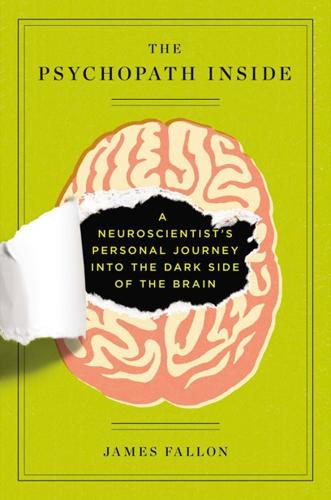
The Psychopath Inside: A Neuroscientist's Personal Journey Into the Dark Side of the Brain
by
James Fallon
Published 30 Oct 2013
The neurologist Helen Mayberg of Emory University found that you could immediately treat major depression by turning it off using deep brain stimulation (DBS), a technique that involved threading an electrode deep into the brain. Reduced activity in this area is associated with psychopathy, which may explain why you don’t see a lot of major depressives who are also psychopaths. After some anatomical slides, I presented a slide listing many of my clinical, subclinical, physical, and behavioral phenotypes (my actual traits and disorders). I also listed my risk for related illnesses through an ingenuity “network analysis” that takes into consideration all of my genetic alleles, the interaction of these genes, and what diseases and traits are inferred from this network. I had just received these results, as a more thorough follow-up to the genetic results I’d received two years prior for the Wall Street Journal article.
…
On the left of the slide were all of the syndromes I’ve had in my life, and their age of onset and age of offset where appropriate: asthma, allergies, panic attacks, OCD, hyper-religiosity, hypertension, obesity, essential tremor, addictions, hypomania, high-risk behaviors, putting others at risk, impulsivity, insomnia, flat empathy, aggression, hedonism, individualism, creative bursts, and verbosity. Next to that list of traits and clinical conditions, were statistical estimates of how at risk my genes put me for particular disorders, including various neurological, psychological, behavioral, endocrine, respiratory, and metabolic disorders. The phenotype-genotype pairings matched up very well. (After examining the nightmare combination of genes I inherited, Fabio had said, “It’s surprising that you ever made it through fetal development, let alone your adolescence.” I could have been another of my mother’s miscarriages, or a case of teenage suicide.)
…
Archives of General Psychiatry 66, no. 9 (2009): 978. Potkin, Steven G., Jessica A. Turner, Guia Guffanti, Anita Lakatos, James H. Fallon, Dana D. Nguyen, Daniel Mathalon, Judith Ford, John Lauriello, and Fabio Macciardi. “A genome-wide association study of schizophrenia using brain activation as a quantitative phenotype.” Schizophrenia Bulletin 35, no. 1 (2009): 96–108. Raine, Adrian. “From genes to brain to antisocial behavior.” Current Directions in Psychological Science 17, no. 5 (2008): 323–328. Rosell, Daniel R., Judy L. Thompson, Mark Slifstein, Xiaoyan Xu, W. Gordon Frankle, Antonia S. New, Marianne Goodman, et al.
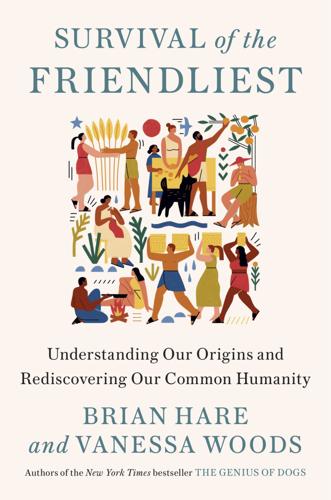
Survival of the Friendliest: Understanding Our Origins and Rediscovering Our Common Humanity
by
Brian Hare
and
Vanessa Woods
Published 13 Jul 2020
Petraglia, “Inter-continental Variation in Acheulean Bifaces,” in Asian Paleoanthropology (New York: Springer, 2011), 49–55. 27. W. Amos, J. I. Hoffman, “Evidence That Two Main Bottleneck Events Shaped Modern Human Genetic Diversity,” Proceedings of the Royal Society B: Biological Sciences (2009). 28. A. Manica, W. Amos, F. Balloux, T. Hanihara, “The Effect of Ancient Population Bottlenecks on Human Phenotypic Variation,” Nature 448, 346–48 (2007). 29. S. H. Ambrose, “Late Pleistocene Human Population Bottlenecks, Volcanic Winter, and Differentiation of Modern Humans,” Journal of Human Evolution 34, 623–51 (1998), published online Epub1998/06/01/. 30. J. Krause, C. Lalueza-Fox, L. Orlando, W.
…
Zollikofer, “Neomorphosis and Heterochrony of Skull Shape in Dog Domestication,” Scientific Reports 7, 13443 (2017). 5. E. Tchernov, L. K. Horwitz, “Body Size Diminution Under Domestication: Unconscious Selection in Primeval Domesticates,” Journal of Anthropological Archaeology 10, 54–75 (1991). 6. L. Andersson, “Studying Phenotypic Evolution in Domestic Animals: A Walk in the Footsteps of Charles Darwin” in Cold Spring Harbor Symposia on Quantitative Biology (2010). 7. Helmut Hemmer, Domestication: The Decline of Environmental Appreciation (Cambridge: Cambridge University Press, 1990). 8. Jared Diamond, “Evolution, Consequences and Future of Plant and Animal Domestication,” Nature 418, 700–707 (2002). 9.
…
Kharlamova, “Animal Evolution During Domestication: The Domesticated Fox as a Model,” Bioessays 31, 349–60 (2009). 13. A. V. Kukekova, L. N. Trut, K. Chase, A. V. Kharlamova, J. L. Johnson, S. V. Temnykh, I. N. Oskina, R. G. Gulevich, A. V. Vladimirova, S. Klebanov, “Mapping Loci for Fox Domestication: Deconstruction/Reconstruction of a Behavioral Phenotype,” Behavior Genetics 41, 593–606 (2011). 14. A. V. Kukekova, J. L. Johnson, X. Xiang, S. Feng, S. Liu, H. M. Rando, A. V. Kharlamova, Y. Herbeck, N. A. Serdyukova, Z.J.N. Xiong, “Red Fox Genome Assembly Identifies Genomic Regions Associated with Tame and Aggressive Behaviours,” Evolution 2, 1479 (2018). 15.

Beyond Bigger Leaner Stronger: The Advanced Guide to Building Muscle, Staying Lean, and Getting Strong
by
Michael Matthews
Published 15 Jun 2014
Cooling, and Neil A. King. “Differences in postprandial responses to fat and carbohydrate loads in habitual high and low fat consumers (phenotypes).” British Journal of Nutrition 88, no. 02 (2002): 125-132. 97. Cooling, J., and J. E. Blundell. “Lean male high-and low-fat phenotypes—different routes for achieving energy balance.” International Journal of Obesity & Related Metabolic Disorders 24, no. 12 (2000). 98. Blundell, John E., and John Cooling. “High-fat and low-fat (behavioural) phenotypes: biology or environment?.” Proceedings of the Nutrition Society 58, no. 04 (1999): 773-777. 99. Pittas, Anastassios G., and Susan B.
…
“Metabolic studies in human obesity during overnutrition and undernutrition: thermogenic and hormonal responses to norepinephrine.” Metabolism 35, no. 2 (1986): 166-175. 220. Keller, Andreas, Angela Graefen, Markus Ball, Mark Matzas, Valesca Boisguerin, Frank Maixner, Petra Leidinger et al. “New insights into the Tyrolean Iceman’s origin and phenotype as inferred by whole-genome sequencing.” Nature communications 3 (2012): 698. 221. http://news.nationalgeographic.com/news/2010/08/100831-cannibalism-cannibal-cavemen-human-meat-science/ 222. Cordain, Loren, Janette Brand Miller, S. Boyd Eaton, Neil Mann, Susanne HA Holt, and John D. Speth. “Plant-animal subsistence ratios and macronutrient energy estimations in worldwide hunter-gatherer diets.”

A Natural History of Beer
by
Rob DeSalle
Published 14 Jun 2019
But they much prefer to absorb fat from food because carb conversion from fat costs ten times more in energy expenditure. Some researchers contend that this insulin system evolved as a product of natural selection during times of periodic starvation. This is the basis of the so-called thrifty phenotype. Thrifty individuals have the physiological capacity to store fat very efficiently and can easily become overweight in bountiful times—although they will get by better in times of shortage. Non-thrifty phenotypes use up their fat stores more rapidly and tend to be leaner, but will starve more readily. Figure 12.2. The human gastrointestinal tract. When beer enters the mouth, its components start a circuitous route through the body (Figure 12.2).
…
Breeders continue to grapple with the same two major kinds of traits: yield and quality. Yield traits include features like numbers of seeds set, capacity to breed multiple times a year, or the brittle seed character that, if mutated, allows for more efficient harvesting. Quality traits are those that impact the protein content, oil content, or any other phenotype concerned with the nutritive content of the plant. During the twentieth century, barley breeders were still using their knowledge of classical genetics to facilitate breeding in a tedious and labor-intensive process. With the rise of genomic technology, and the ease with which it can be applied to large numbers of lines and landraces, a very different approach to barley and other grain breeding has now become possible, using cheaper and faster techniques.
…
An array of physiological responses results, the most visible being flushing of the face. People with this variant learn to shun alcohol because it causes discomfort and even pain. The CYP2E1 gene, too, has variants that have been implicated in alcohol avoidance. The protein this gene produces is active in the brain, and people with the variant phenotype become tipsy with very little alcohol in their systems. If they are smart, they stop drinking after the first couple of beers. People with variant CYP2E1 and ALDH2.2 genes tend not to become alcoholics, for obvious reasons. Among the rest of the population, any tendency toward alcoholism seems to be determined in a very complex manner.

Brief Peeks Beyond: Critical Essays on Metaphysics, Neuroscience, Free Will, Skepticism and Culture
by
Bernardo Kastrup
Published 28 May 2015
Each segment of an organism’s DNA is either associated with a functional characteristic – an aspect of anatomy or physiology – or consists of non-coding DNA with no known phenotypical role.130 This non-coding DNA accumulates over time through evolution due to certain genetic amplification processes.131 For now, let’s consider only the functionally active part of the DNA. It is mutations in this part that lead to speciation, or the creation of new species. To say that the genetic mutations at the root of evolution are random implies this: if we simply looked at the functional changes caused by each raw genetic mutation before natural selection either fixed or deleted it, we should not be able to identify any phenotypical pattern or trend. There should be no preferential direction or gradient in the kinds of functional changes caused by the raw mutations over time.
…
It isn’t representative of the original phenomenon. Because of the gaps in the data, we are unable to discern the underlying pattern and might wrongly conclude that the original phenomenon itself was random. Like the incomplete data set above, the fossil record preserves only a small amount of the raw genetic mutations – or their functional, phenotypical correlates – that occurred during the course of evolution. Of all successful and unsuccessful species that have ever lived on Earth from the dawn of life, and of the countless unique organisms with non-viable mutations that never reproduced, how many have been preserved in the fossil record? And of those preserved, how much of the full range of their anatomy and physiology can be inferred from the record?
…
Dennett, D. (1991). Consciousness Explained. London: Penguin Books. Dennett, D. (2003). The Illusion of Consciousness. TED2003. [Online]. Available from: http://www.ted.com/talks/dan_dennett_on_our_consciousness [Accessed 19 December 2014]. Doolittle, W. F. and Sapienza, C. (1980). Selfish genes, the phenotype paradigm and genome evolution. Nature, 284, pp. 601–603. Dresler, M. et al. (2011). Dreamed Movement Elicits Activation in the Sensorimotor Cortex. Current Biology, 21(21), pp. 1833–1837. Expanding the shrinks. The Economist (British Edition), 11 October 2014. [Online]. Available from: http://www.economist.com/news/britain/21623773-popularity-cbt-freezing-out-more-traditional-forms-therapy-expanding-shrinks [Accessed 23 December 2014].
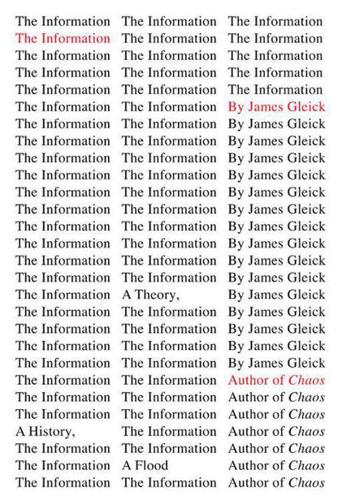
The Information: A History, a Theory, a Flood
by
James Gleick
Published 1 Mar 2011
.”♦ Such genes—these replicators, these survivors—know nothing about altruism and nothing about reading, of course. Whatever and wherever they are, their phenotypic effects matter only insofar as they help the genes propagate. Molecular biology, in its signal achievement, had pinpointed the gene in a protein-encoding piece of DNA. This was the hardware definition. The software definition was older and fuzzier: the unit of heredity; the bearer of a phenotypic difference. With the two definitions uneasily coexisting, Dawkins looked past them both. If genes are meant to be masters of survival, they can hardly be fragments of nucleic acid.
…
Loewenstein, The Touchstone of Life: Molecular Information, Cell Communication, and the Foundations of Life (New York: Oxford University Press, 1999), 93–94. ♦ “SELECTION FAVORS THOSE GENES WHICH SUCCEED”: Richard Dawkins, The Extended Phenotype, rev. ed. (Oxford: Oxford University Press, 1999), 117. ♦ DAWKINS SUGGESTS THE CASE OF A GENE: Ibid., 196–97. ♦ THERE IS NO GENE FOR LONG LEGS: Richard Dawkins, The Selfish Gene, 37. ♦ HABIT OF SAYING “A GENE FOR X”: Richard Dawkins, The Extended Phenotype, 21. ♦ “ALL WE WOULD NEED IN ORDER”: Ibid., 23. ♦ “ANY GENE THAT INFLUENCES THE DEVELOPMENT OF NERVOUS SYSTEMS”: Richard Dawkins, The Selfish Gene, 60. ♦ “IT IS NO MORE LIKELY TO DIE”: Ibid., 34
…
And it is harder still to specify genes for more complex qualities—genes for obesity or aggression or nest building or braininess or homosexuality. Are there genes for such things? Not if a gene is a particular strand of DNA that expresses a protein. Strictly speaking, one cannot say there are genes for almost anything—not even eye color. Instead, one should say that differences in genes tend to cause differences in phenotype (the actualized organism). But from the earliest days of the study of heredity, scientists have spoken of genes more broadly. If a population varies in some trait—say, tallness—and if the variation is subject to natural selection, then by definition it is at least partly genetic. There is a genetic component to the variation in tallness.
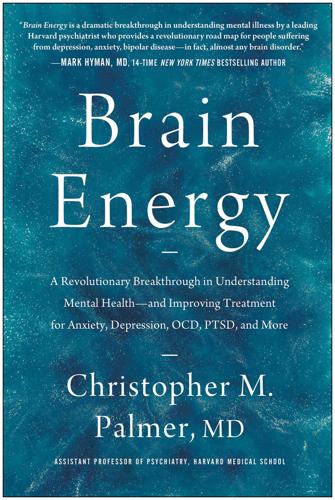
Brain Energy: A Revolutionary Breakthrough in Understanding Mental Health--And Improving Treatment for Anxiety, Depression, OCD, PTSD, and More
by
Christopher M. Palmer Md
Published 15 Nov 2022
Many in the field hold these disorders apart from things like depression and anxiety, sometimes calling these the “biological” disorders. So, what do we know about them? What makes them different from each other? A lot of money has been spent researching this question. The NIMH funded a multisite study called the Bipolar Schizophrenia Network on Intermediate Phenotypes (B-SNIP). This study included more than 2,400 people with schizophrenia, schizoaffective disorder, or bipolar disorder; their first-degree relatives; and people without these disorders (normal controls). The researchers examined key biological and behavioral measures, examining brain scans, genetic testing, EEGs, blood parameters, inflammation levels, and performance on a variety of cognitive tests.
…
Researchers have studied the babies that were conceived or carried during this famine and compared them to the general population and even their own siblings who were born when the mothers had normal access to food. The babies born during the famine were more likely to develop both metabolic and mental disorders later in life. This and other studies led to the thrifty phenotype hypothesis, which proposes that babies deprived of proper nutrition in utero are more likely to develop obesity, diabetes, and cardiovascular disease later in life. Unfortunately, this hypothesis overlooks or ignores the fact that these babies are also more likely to develop mental disorders. These babies were found to have double the risk for schizophrenia and antisocial personality disorder, as well as increased rates of depression, bipolar disorder, and addiction.12 Researchers have been studying the pancreas to understand the elevated rates of diabetes, the heart to understand the elevated rates of cardiovascular disease, and the brain to understand the psychiatric and neurological disorders but have failed to see the metabolic connection among all of them.
…
Front Neuroendocrinol 35(1) (2014): 8–30. doi: 10.1016/j.yfrne.2013.08.001. 16L. Mosconi, V. Berti, C. Quinn, P. McHugh, G. Petrongolo, R. S. Osorio, C. Connaughty, A. Pupi, S. Vallabhajosula, R. S. Isaacson, M. J. de Leon, R. H. Swerdlow, and R. D. Brinton. “Perimenopause and Emergence of an Alzheimer’s Bioenergetic Phenotype in Brain and Periphery.” PLoS One 12(10) (2017): e0185926. doi: 10.1371/journal.pone.0185926 17Y. Hara, F. Yuk, R. Puri, W. G. Janssen, P. R. Rapp, and J. H. Morrison. “Presynaptic Mitochondrial Morphology in Monkey Prefrontal Cortex Correlates with Working Memory and Is Improved with Estrogen Treatment.”

Ageless: The New Science of Getting Older Without Getting Old
by
Andrew Steele
Published 24 Dec 2020
Senescent cells do that by secreting inflammatory molecules which alert the immune system to their presence, asking to be removed. This means that an immune cell on search-and-destroy duty will be attracted over by the molecular ruckus and engulf the senescent cell, ridding your body of the problem. This molecular flag-waving is known as the SASP – the ‘senescence-associated secretory phenotype’ (secretory because the cells secrete these molecules, and phenotype is a biological term meaning an attribute or behaviour). Perversely, it’s this calling for help which provides the means for these cells to cause such damage in our bodies. If the SASP does catch the attention of a passing immune cell and secures the senescent cell a hasty removal, all is well – but, if the senescent cell survives and keeps on pumping out inflammatory chemicals, this can effectively accelerate ageing throughout the body.
…
Well, in the intervening decades since its discovery we’ve learned that PAI-1 is a protein which isn’t just involved in blood clotting; like most genes, it is involved in a number of different processes around the body. Perhaps most crucially when it comes to ageing, PAI-1 is associated with cellular senescence: it’s both involved in a cell’s internal decision-making when it considers becoming senescent, and it’s a component of the senescence-associated secretory phenotype by which senescent cells wreak their havoc around the body. Dialling down the odds of senescence and the potency of the SASP are both plausible ways to extend lifespan. While the carriers of a single copy of the mutation seem not to have any problems with blood clotting, it’s also possible that a slightly less eager clotting system might be of benefit as you get older, reducing the odds of problems like stroke.
…
DOI: 10.18632/oncotarget.23748 ageless.link/zc6zye Reprogramming biology and curing ageing A brief introduction to the idea of using systems biology for medicine can be found in Rolf Apweiler et al., ‘Whither systems medicine?’, Exp. Mol. Med. 50, e453 (2018). DOI: 10.1038/emm.2017.290 ageless.link/vfusyd … simulate … Mycoplasma genitalium Jonathan R. Karr et al., ‘A whole-cell computational model predicts phenotype from genotype’, Cell 150, 389–401 (2012). DOI: 10.1016/j.cell.2012.05.044 ageless.link/cecsmo … stop the virus rapidly evolving resistance … A. S. Perelson et al., ‘HIV-1 dynamics in vivo: Virion clearance rate, infected cell life-span, and viral generation time’, Science 271, 1582–6 (1996). DOI: 10.1126/science.271.5255.1582 ageless.link/ub43sm … train a computer model to recognise … DR mimetics … Diogo G.
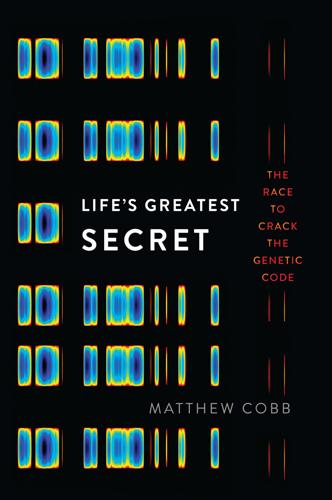
Life's Greatest Secret: The Race to Crack the Genetic Code
by
Matthew Cobb
Published 6 Jul 2015
Nearly forty years on, I am still interested in the non-genetic transmission of information down the generations and the underlying mechanisms – one of my PhD students, Becky Lockyer, has recently studied them in Drosophila.17 The existence of intergenerational transmission of environmentally induced changes is now well established, and it is known that these effects can buffer populations of organisms against rapid environmental change before new adaptations evolve.18 They form part of the complex route from DNA to phenotype, presenting biologists with fascinating examples of plasticity – how a given DNA sequence can generate a variety of different phenotypes. Some of these effects can be thought-provoking, like the study I heard about in 1977. For example, in 2009 Larry Feig’s group at Tufts University in Boston reported that if female rats were given an enriched environment during their adolescence, their offspring – conceived after the enrichment had ceased – showed an increased learning ability.
…
In his 1957 talk, Crick pointed to the handful of proteins that had thus far been sequenced in more than one organism and made a leap of the imagination that eventually transformed how we study evolution: Biologists should realise that before long we shall have a subject which might be called ‘protein taxonomy’ – the study of the amino acid sequences of the proteins of an organism and the comparison of them between species. It can be argued that these sequences are the most delicate expression possible of the phenotype of an organism and that vast amounts of evolutionary information may be hidden away within them.34 Crick was right. Today, protein fragments from the depths of time, such as bits of collagen from Tyrannosaurus rex, can be used to study evolution.35 Burnet’s contribution to evolutionary biology was less dramatic but equally insightful.
…
As a consequence, some philosophers and scientists have suggested that we need a new definition of ‘gene’, and have come up with various complex alternatives.86 Most biologists have ignored these suggestions, just as they passed over the argument by Pontecorvo and Lederberg in the 1950s that the term ‘gene’ was obsolete.87 In 2006, a group of scientists came up with a cumbersome definition of ‘gene’ that sought to cover most of the meanings: ‘A locatable region of genomic sequence, corresponding to a unit of inheritance, which is associated with regulatory regions, transcribed regions and/or other functional sequence regions.’88 In reality, definitions such as ‘a stretch of DNA that is transcribed into RNA’, or ‘a DNA segment that contributes to phenotype/function’, seem to work in most circumstances.89 There are exceptions, but biologists are used to exceptions, which are found in every area of the study of life. The chaotic varieties of elements in our genome resist simple definitions because they have evolved over billions of years and have been continually sieved by natural selection.
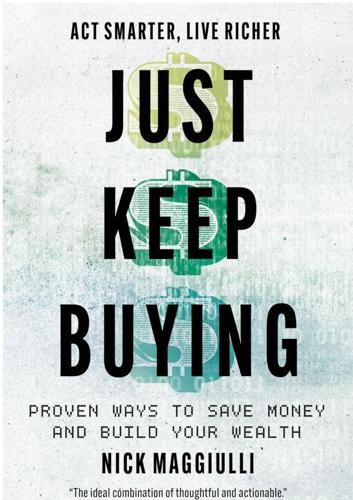
Just Keep Buying: Proven Ways to Save Money and Build Your Wealth
by
Nick Maggiulli
Published 15 May 2022
As Armstrong and his colleague Morgan Bond discovered, when food is scarce the char shrink their digestive tracts in order to use less energy. When the salmon arrive, their digestive organs grow to twice their normal size.¹ In biology this concept is called phenotypic plasticity, or the ability for an organism to change its physiology in response to its environment. Not only is phenotypic plasticity useful for understanding how plants, birds, and fish change based on their surroundings—it can also be useful when determining how much money you should save. The Problem with Most Savings Advice When you Google “how much should I save” you will get over 150,000 results.
…
In addition, their estimates show that those in the top 5% of earners saved 37% annually while those in the top 1% saved 51% of their income each year.³ Similarly, two economists at UC Berkeley found that savings rates were positively correlated with wealth in every decade in U.S. history from 1910 to 2010, with the exception of the 1930s.⁴ This is why savings rules like “save 20% of your income” are so misguided. Not only do they ignore fluctuations in income, but they also assume that everyone can save at the same rate, which is empirically false. This is where the Dolly Varden char and phenotypic plasticity come in. Instead of consuming the same number of calories throughout the year, the char change their caloric intake (and their metabolism) based on how much food is available. We should do the same thing when it comes to saving money. When we have the ability to save more, we should save more—and when we don’t, we should save less.
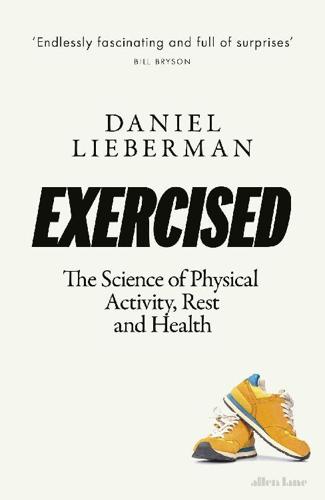
Exercised: The Science of Physical Activity, Rest and Health
by
Daniel Lieberman
Published 2 Sep 2020
N., et al. (2007), Association analysis of the ACTN3 R577X polymorphism and complex quantitative body composition and performance phenotypes in adolescent Greeks, European Journal of Human Genetics 15:88–93. 39 Pitsiladis, Y., et al. (2013), Genomics of elite sporting performance: What little we know and necessary advances, British Journal of Sports Medicine 47:550–55; Tucker, R., Santos-Concejero, J., and Collins, M. (2013), The genetic basis for elite running performance, British Journal of Sports Medicine 47:545–49. 40 Bray, M. S., et al. (2009), The human gene map for performance and health-related fitness phenotypes: The 2006–2007 update, Medicine and Science in Sports and Exercise 41:35–73; Guth, L.
…
C. (2007), T cell homing and exercise, Exercise Immunology Review 13:37–54. 62 Kruger, K., et al. (2008), Exercise-induced redistribution of T lymphocytes is regulated by adrenergic mechanisms, Brain, Behavior and Immunity 22:324–38; Bigley, A. B., et al. (2014), Acute exercise preferentially redeploys NK-cells with a highly differentiated phenotype and augments cytotoxicity against lymphoma and multiple myeloma target cells, Brain, Behavior and Immunity 39:160–71; Bigley, A. B., et al. (2015), Acute exercise preferentially redeploys NK-cells with a highly differentiated phenotype and augments cytotoxicity against lymphoma and multiple myeloma target cells. Part II: Impact of latent cytomegalovirus infection and catecholamine sensitivity, Brain, Behavior and Immunity 49:59–65. 63 Kohut, M.
…
E. (2018), Debunking the myth of exercise-induced immune suppression: Redefining the impact of exercise on immunological health across the lifespan, Frontiers in Immunology 9:648. 19 Dhabhar, F. S. (2014), Effects of stress on immune function: The good, the bad, and the beautiful, Immunology Research 58:193–210; Bigley, A. B., et al. (2014), Acute exercise preferentially redeploys NK-cells with a highly differentiated phenotype and augments cytotoxicity against lymphoma and multiple myeloma target cells, Brain, Behavior, and Immunity 39:160–71. 20 Campbell, J. P., and Turner, J. E. (2018), Debunking the myth of exercise-induced immune suppression. 21 Lowder, T., et al. (2005), Moderate exercise protects mice from death due to influenza virus, Brain, Behavior and Immunity 19:377–80. 22 Wilson, M., et al. (2011), Diverse patterns of myocardial fibrosis in lifelong, veteran endurance athletes, Journal of Applied Physiology 110:1622–26; La Gerche, A., et al. (2012), Exercise-induced right ventricular dysfunction and structural remodelling in endurance athletes, European Heart Journal 33:998–1006; La Gerche, A., and Heidbuchel, H. (2014), Can intensive exercise harm the heart?

The Book of Woe: The DSM and the Unmaking of Psychiatry
by
Gary Greenberg
Published 1 May 2013
In 2003, she and a group of colleagues tried to tease out the manic from the irritable among kids who were getting snared in Biederman’s expanded net. They looked for ways (other than the mania/irritability distinction) in which the two populations differed and proposed a “broad phenotype” that described the nonmanic patients. They called this phenotype “severe mood and behavioral dysregulation” and proposed “multisite clinical trials” to test whether the category was valid—whether, that is, the children would differ from one another not only according to their symptoms but also according to their family histories, the course of their troubles, and their response to treatment.
…
“After the third or fourth”: Herb Peyser interview, January 23, 2012. 7. Freud once said: See Freud, The Joke and Its Relation to the Unconscious. 8. “orderly and democratic process”: David Shaffer interview, December 8, 2011. 9. “David probably misinterpreted”: Allen Frances e-mail, January 23, 2012. 10. “that children with the broad phenotype”: Leibenluft et al., “Defining Clinical Phenotypes of Juvenile Mania,” 436. 11. “claim to define a new diagnosis”: Leibenluft, “Severe Mood Dysregulation,” 131. 12. “Justification for Temper Dysregulation Disorder with Dysphoria”: “Justification for Temper Dysregulation Disorder,” http://www.dsm5.org/Proposed%20Revision%20Attachments/Justification%20for%20Temper%20Dysregulation%20Disorder%20with%20Dysphoria.pdf. 13. it announced a new “naming convention”: American Psychiatric Association, “APA Modifies DSM Naming Convention to Reflect Publication Changes,” news release, March 9, 2010. 14.
…
Leibenluft, Ellen. “Severe Mood Dysregulation, Irritability, and the Diagnostic Boundaries of Bipolar Disorder in Youths.” American Journal of Psychiatry 168, no. 2 (February 2011): 129–42. Leibenluft, Ellen, Donald S. Charney, Kenneth E. Towbin, Robinder K. Banghoo, and Daniel S. Pine. “Defining Clinical Phenotypes of Juvenile Mania.” American Journal of Psychiatry 160, no. 3 (2003): 430–37. Lethem, Jonathan. The Ecstasy of Influence: Nonfictions, Etc. New York: Doubleday, 2011. LeVay, Simon. Queer Science: The Use and Abuse of Research into Homosexuality. Cambridge, MA: MIT Press, 1996. Livesley, W. John.

Unmasking Autism: Discovering the New Faces of Neurodiversity
by
Devon Price
Published 4 Apr 2022
NOTES Thomas, P., Zahorodny, W., Peng, B., Kim, S., Jani, N., Halperin, W., & Brimacombe, M. (2012). The association of autism diagnosis with socioeconomic status. Autism, 16(2), 201–213. BACK TO NOTE REFERENCE 1 Hull, L., Petrides, K. V., & Mandy, W. (2020). The female autism phenotype and camouflaging: A narrative review. Review Journal of Autism and Developmental Disorders, 1–12. BACK TO NOTE REFERENCE 2 “Interview with Temple Grandin.” January 2, 2006. Retrieved April 14, 2019. BACK TO NOTE REFERENCE 3 Petrou, A. M., Parr, J. R., & McConachie, H. (2018).
…
Journal of Autism and Developmental Disorders, 40(12), 1495–1504. BACK TO NOTE REFERENCE 46 Bora, E., Aydın, A., Saraç, T., Kadak, M. T., & Köse, S. (2017). Heterogeneity of subclinical autistic traits among parents of children with autism spectrum disorder: Identifying the broader autism phenotype with a data-driven method. Autism Research, 10(2), 321–326. BACK TO NOTE REFERENCE 47 https://www.cdc.gov/mmwr/volumes/67/ss/pdfs/ss6706a1-H.pdf. BACK TO NOTE REFERENCE 48 Mandell, D. S., et al. (2009). Racial/ethnic disparities in the identification of children with autism spectrum disorders.
…
BACK TO NOTE REFERENCE 66 https://www.nami.org/Support-Education/Publications-Reports/Public-Policy-Reports/The-Doctor-is-Out#:~:text=800%2D950%2DNAMI&text=Each%20year%20millions%20of%20Americans,States%20go%20without%20any%20treatment. BACK TO NOTE REFERENCE 67 Bora, E., Aydin, A., Saraç, T., Kadak, M. T., & Köse, S. (2017). Heterogeneity of subclinical autistic traits among parents of children with autism spectrum disorder: Identifying the broader autism phenotype with a data-driven method. Autism Research, 10(2), 321–326. BACK TO NOTE REFERENCE 68 For a state-by-state breakdown of what is covered, see here: https://www.ncsl.org/research/health/autism-and-insurance-coverage-state-laws.aspx. BACK TO NOTE REFERENCE 69 https://www.clarifiasd.com/autism-diagnostic-testing/#:~:text=There%20is%20a%20cost%20associated,more%20than%20doubles%20the%20cost.

The Vanishing Face of Gaia: A Final Warning
by
James E. Lovelock
Published 1 Jan 2009
Scientists may pretend to deplore the New Age, but that does not stop them reading its publications and in no time Gaia’s face was turned to the wall, especially in the neo‐Darwinist community of scientists. Neither Lynn Margulis nor I could make a convincing defence – partly because, as we had stated it, the Gaia hypothesis was wrong. We had said that organisms, or the biosphere, regulated the Earth’s climate and composition. Somewhat later, in his book The Extended Phenotype, Richard Dawkins showed that this was impossible. He said it so well and clearly that the subject was then regarded by the scientific community as closed. Richard Dawkins is an extraordinarily talented author and persuader and in his book he vented his scorn on the Gaia hypothesis with the powerful erudition that he now uses to censure theology.
…
He was true to his word and the next paper on the topic was one I wrote with Robert Charlson, Meinrat Andreae and Steven Warren on the connection between clouds, condensation nuclei, dimethyl sulphide and its source, ocean algae. I accepted Dawkins’ criticism that there was no way for life or the biosphere to regulate anything beyond the phenotype of its component individual organisms. So what on Earth was doing the regulating? I had no doubt that climate and chemistry were regulated, so what did it if not life? As I have explained earlier, the traditional Earth scientists, led by James Walker and H. D. Holland, were sure that regulation was done by geochemistry and geophysics alone and that life was a mere passenger or at most a contributor.
…
Kump, Dire Predictions: Understanding Global Warming (DK Publishing, Inc., New York, 2008) Millennium Ecosystem Assessment Report (Island Press, Washington, DC, 2005) Sir Crispin Tickell, Climate Change and World Affairs (Harvard University Press, Cambridge, Mass., 1986) 3 Consequences and Survival Sir David Attenborough, Life on Earth (HarperCollins, London, 1979) Richard Dawkins, The Extended Phenotype (W. H. Freeman, Oxford and San Francisco, 1982) Brian Fagan, The Long Summer (Granta, London, 2005) Richard Fortey, The Earth (Harper Collins, London, 2004) Al Gore, An Inconvenient Truth (Bloomsbury, London, 2006) Tim Lenton and W. von Bloh, ‘Biotic Feedback Extends Lifespan of Biosphere’, Geophysical Research Letters (2001) James Lovelock, The Revenge of Gaia (Allen Lane/Penguin, London, 2006) Fred Pearce, When the Rivers Run Dry (Transworld, London, 2006) H.

The Secret of Our Success: How Culture Is Driving Human Evolution, Domesticating Our Species, and Making Us Smarter
by
Joseph Henrich
Published 27 Oct 2015
One of the debates in this literature involves opposing “innate” and “learned” in explaining our abilities and behaviors. As we’ll see, much behavior is both 100% innate and 100% learned. For example, humans have clearly evolved to walk on two legs, and it’s one of our species’ behavioral signatures. Yet we also clearly learn to walk. From natural selection’s point of view, it only cares that the phenotype it “wants” emerges when it needs it. To get there, it will use learning, attention biases, motivational changes, anatomical adjustments, inferential biases, and pain responses to make sure that the required developmental processes run to completion, on schedule. Thus, showing that something is learned only tells us about the developmental process but not about whether it was favored by natural selection acting on genes.
…
Recently, the journalist Nicholas Wade (2014) has sought to argue that continental races do indeed capture behaviorally important genetic variation in humans. Wade combines three lines of evidence: (1) analyses of global genetic variation, (2) specific cases of natural selection favoring locally or regionally adaptive traits, as discussed in this chapter, and (3) phenotypic differences in behavior, psychology, or biology (IQ, Aggression, etc.). His first line of evidence uses recent analyses of global samples to establish a genetic reality for classical continental races. And, yes, there is continental-level genetic variation, but as I’ll explain, that doesn’t imply natural selection is operating to differentiate these continental populations.
…
“The hot hand in basketball: On the misperception of random sequences.” Cognitive Psychology 17 (3):295–314. Giuliano, P., and A. Alesina. 2010. “The power of the family.” Journal of Economic Growth 15 (2):93–125. Gizer, I. R., H. J. Edenberg, D. A. Gilder, K. C. Wilhelmsen, and C. L. Ehlers. 2011. “Association of alcohol dehydrogenase genes with alcohol-related phenotypes in a Native American community sample.” Alcoholism: Clinical and Experimental Research 35 (11):2008–2018. Gneezy, A., and D. M. T. Fessler. 2011. “Conflict, sticks and carrots: war increases prosocial punishments and rewards.” Proceedings of the Royal Society B: Biological Sciences. doi:10.1098/rspb.2011.0805.

Power, Sex, Suicide: Mitochondria and the Meaning of Life
by
Nick Lane
Published 14 Oct 2005
In fact, in physically stressful circumstances, bacteria can even speed up the mutation rate in their genes. So there is a dilemma in bacteria about whether selection is ‘for’ the genes or the cell as a whole. In many respects the cell is the replicator. Mutations in a gene don’t necessarily change the phenotype (the function or appearance of the organism) but by definition they must change the gene itself, perhaps even scrambling its sequence out of recognition over aeons. Mutations accumulate because many of them have little or no effect on function, and so go unnoticed by natural selection—they are said to be ‘neutral’.
…
Because genes can change, while the cell and its constituents remain essentially unchanged, the bacterial cell might be considered more stable an evolutionary unit than its genes. For example, cyanobacteria (the bacteria that ‘invented’ photosynthesis) have certainly changed their gene sequences over evolution, but if the fossil evidence can be believed, the phenotype has barely changed over billions of years. If, as Dawkins has argued, the worst enemy of the selfish gene is a competitive (polymorphic, or altered) form of the same gene, then neutral mutations are the selfish gene scrambler par excellence: gene sequences diverge over time as neutral mutations accumulate.
…
But the ideal of collaboration does not give proper weight to the conflict between the various selfish entities that make up an individual, and in particular to the cells and mitochondria within the cells. While conflict between various selfish entities is entirely in keeping with Dawkins’s philosophy, he did not develop the idea in The Selfish Gene—these ideas awaited his own later book The Extended Phenotype, and in the 1980s and 1990s the important work of Yale biologist Leo Buss and others. Thanks to the exploration of such conflicts and their resolutions, evolutionary biologists now appreciate that colonies of cells (or genes, if you like) do not constitute true individuals, but rather form a looser association, in which individual cells may still act independently.
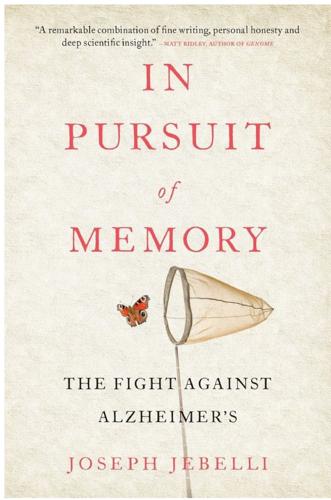
In Pursuit of Memory: The Fight Against Alzheimer's
by
Joseph Jebelli
Published 30 Oct 2017
Taylor, Moore, et al., ‘Effect of curcumin-associated and lipid ligand-functionalized nanoliposomes on aggregation of the Alzheimer’s Aβ peptide’. 10. Popper, The Logic of Scientific Discovery, p. 316. Chapter 21: Clues from Colombia 1. Lemere, Lopera, et al., ‘The E280A presenilin 1 Alzheimer mutation produces increased A beta 42 deposition and severe cerebellar pathology’. 2. Sepulveda-Falla, Glatzel, Lopera, ‘Phenotypic profile of early-onset familial Alzheimer’s disease caused by presenilin-1 E280A mutation’. 3. Belluck, ‘Alzheimer’s Stalks a Colombian Family’. Chapter 22: Alzheimer’s Legacy 1. Brookmeyer, Johnson, et al., ‘Forecasting the global burden of Alzheimer’s disease’. 2. Zissimopoulos, Crimmins, St Clair, ‘The value of delaying Alzheimer’s disease onset’. 3.
…
E., Engler, H., Nordberg, A., Wang, Y., Blomqvist, G., Holt, D. P.,… Långström, B., ‘Imaging brain amyloid in Alzheimer’s disease with Pittsburgh Compound-B’, Annals of Neurology, 55 (3), 2004, 306–19 Kondo, T., Asai, M., Tsukita, K., Kutoku, Y., Ohsawa, Y., Sunada, Y.,… Inoue, H., ‘Modeling Alzheimer’s disease with iPSCs reveals stress phenotypes associated with intracellular Abeta and differential drug responsiveness’, Cell Stem Cell, 12 (4), 2013, 487–96 Kuhn, T. S., The Structure of Scientific Revolutions, University of Chicago Press, 2012 Lambert, J. C., Ibrahim-Verbaas, C. A., Harold, D., Naj, A. C., Sims, R., Bellenguez, C.,… Amouyel, P., ‘Meta-analysis of 74,046 individuals identifies 11 new susceptibility loci for Alzheimer’s disease’, Nature Genetics, 45 (12), 2013, 1452–8 Lane, N., Power, Sex, Suicide: Mitochondria and the Meaning of Life, Oxford University Press, 2006 Lapillonne, H., Kobari, L., Mazurier, C., Tropel, P., Giarratana, M.
…
N., Baker, H. V., Xu, W.,… Host Response to Injury, L. S. C. R. P., ‘Genomic responses in mouse models poorly mimic human inflammatory diseases’, Proceedings of the National Academy of Sciences of the United States of America, 110 (9), 2013, 3507–12 Sepulveda-Falla, D., Glatzel, M., Lopera, F., ‘Phenotypic profile of early-onset familial Alzheimer’s disease caused by presenilin-1 E280A mutation’, Journal of Alzheimer’s Disease, 32 (1), 2012, 1–12 Shahim, P., Tegner, Y., Wilson, D. H., Randall, J., Skillback, T., Pazooki, D.,… Zetterberg, H., ‘Blood biomarkers for brain injury in concussed professional ice hockey players’, JAMA Neurology, 71 (6), 2014, 684–92 Shelley, M., Frankenstein: Or, the Modern Prometheus, Penguin Classics, 2003 Shen, H., ‘Studies cast doubt on cancer drug as Alzheimer’s treatment’, Nature, 23 May 2013, online: www.nature.com/news/studies-cast-doubt-on-cancer-drug-as-alzheimer-s-treatment-1.13058 Shenk, D., The Forgetting: Alzheimer’s: Portrait of an Epidemic, Anchor Books, 2001 Sherrington, R., Rogaev, E.
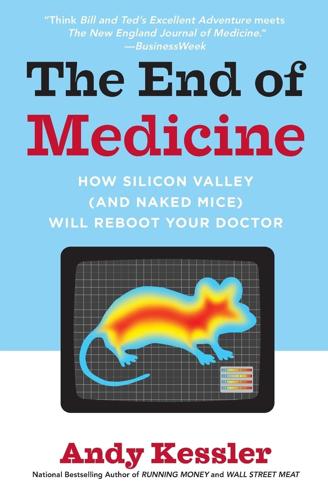
The End of Medicine: How Silicon Valley (And Naked Mice) Will Reboot Your Doctor
by
Andy Kessler
Published 12 Oct 2009
has tested POSITIVE for inactivity of the MSH2 gene. What? Positive? That’s my blood. MLH1 and MSH2 are known as “DNA mismatch repair genes” for the protein products of these genes and their responsibility in repairing mutations that occur in the genome. Inactivity is associated with mutations in other genes, a “mutator phenotype.” So I have a gene mutation that means other gene mutations don’t get repaired. What kind of circular nonsense is that? Is this a problem? Do I have colorectal cancer? It doesn’t say that. It just says my risks have gone up. What do I do? Should I become a vegan? I think I’d rather staple my eyelids to my forehead than become a vegan.
…
The proof is the predictive value. We get that, we can roll it out.” “Bleed to read, right?” I asked. “Exactly,” Lee said. It was nice to know the lingo. “And this can be a first screen?” I asked. “Someday. First, you lower false positives by narrowing down to the high risk, familial risk, genetic risk and then this phenotype risk. False positives are expensive, way more than the cost of the tests. It’s the test, and then all the back end if you show positive—scans or biopsies, whatever.” No different from what John Simpson told me. Only when the scans were reliable could they become commonplace, because the back end was expensive.
…
(patient) obesity: diets for illnesses related to “morbid” surgery for obstetrics old age ophthalmologists optics optometrists Oracle ovarian cancer over-the-wire catheters pacemakers pain relievers Palo Alto Medical Foundation pancreatic cancer pancreatitis pandemics Pap smears Pargluva patents paternity tests Pavlidis, John pediatricians Peja (resident) Penzias, Arno peptides Percutaneous Cardiovascular Procedure w/Drug-Eluting Stent with AMI Perkins, Tony Perot, Ross Personal Genome Project personal sequencing Pete, Dr. PET (positron emission tomography) scans Pfizer Inc. pharmaceuticals industry pharmacists phenotype risk Philip Morris Philips Philips Medical Systems photomasks photons physical exams physics placebos plaque, arterial plastic surgery platelet count polio polyclonal antibodies polymerase chain reaction (PCR) polymorphism polyps Popular Science positron emission tomography (PET) scans Prakash, Dr.
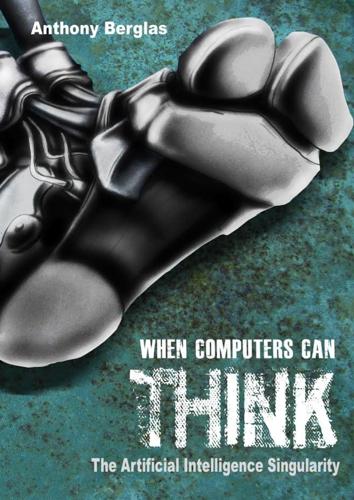
When Computers Can Think: The Artificial Intelligence Singularity
by
Anthony Berglas
,
William Black
,
Samantha Thalind
,
Max Scratchmann
and
Michelle Estes
Published 28 Feb 2015
There are also heterochromatic portions of the human genome which are so repetitive and long that they cannot be accurately sequenced with current technology. These regions contain few genes, and probably have no significant effect on an organism’s phenotype (i.e. its observable embodiment as opposed to its DNA or genotype). Non gene-producing fragments tend to be much more variable between individuals, which is what one would expect if there is no evolutionary pressure to keep them consistent. That said, more recent research (such as the ENCODE project) suggests that about 18% of the non-coding regions may indeed have some phenotypic effect. It appears that evolution takes what it finds, and if some random sequence of DNA can be interpreted in a meaningful way then that interpretation is utilized.
…
If we assume that there is a total of 700 megabytes of information in the genome, of which 20% is meaningful, 10% relates to intelligence, and 2% is different from Chimpanzees, then the total difference between human and chimpanzee intelligence forming DNA is about 0.3 megabytes of real data. In computer software terms this is very tiny indeed. Yet the difference in phenotype could not be more remarkable. While chimpanzees can be taught basic sign language skills and solve non-trivial problems, their basic intelligence seems much closer to that of dogs and horses than man’s. Chimpanzees can learn to use simple tools and form social groups, but man can solve differential equations and fly to the moon.
…
This limits the ability of similar tricks to be used in the mapping between our genome and our intelligence. Natural selection works by making small, incremental changes to an organism’s DNA, which may result in small, incremental improvements to the organism. This means there has to be a relatively direct and robust relationship between our genotype and our phenotype. Evolution just could not work with a too highly-packed, fractal-like representation because making any small change to the gene sequence would produce a radically different brain. It would require chancing upon just the right formula in one go, which is virtually impossible. Repeated patterns What does happen is that genes define a pattern that then gets replicated multiple times.

Global Catastrophic Risks
by
Nick Bostrom
and
Milan M. Cirkovic
Published 2 Jul 2008
The task of changing even a tiny fraction of these genes would be enormous, especially since each such change could lead to dangerous and unexpected side effects. It is far more likely that our growing understanding of gene function will enable us to design specific drugs and other compounds that can produce desirable changes in our phenotypes and that these changes will be sufficiently easy and inexpensive that they will not be confined to a genetic elite (Wills, 1998) . Even such milder phenotypic manipulations are fraught with danger, however, as we have seen from the negative effects that steroid and growth hormone treatments have had on athletes. Second, the likelihood that a 'genetic elite' will become established seems remote.
…
Evolution depends on the fact that genetic material does not replicate precisely, and that errors are inevitably introduced as genes are passed from one generation to the next. I n the absence o f mutation, evolutionary change would slow and eventually stop. The effects of mutations are not necessarily correlated with the sizes of the mutational changes themselves. Single changes in the base sequence of DNA can have no effect or profound effects on the phenotype - the allelic differences that affect skin colour, as discussed in Section 3 . 1 , can be traced to a single alteration in a base from G to A, changing one amino acid in the protein from an alanine to a threonine. At the other end ofthe spectrum, entire doublings of chromosome number, which take place commonly in plants and less often in animals, can disturb development dramatically - human babies who have twice the normal number of chromosomes die soon after birth.
…
The measurement of human intellectual capabilities, and their heritability, is at a primitive stage. The heritability of i Q has received a great deal of attention, but a recent meta-analysis estimates broad heritability of IQ to be 0.5 and narrow heritability (the component of heritability that measures selectable phenotypic variation) to be as low as 0.34 (Devlin et al., 1997). But IQ is only one aspect of human intelligence, and other aspects of intelligence need investigation. Daniel Goleman has proposed that social intelligence, the ability to interact with others, is at least as important as I Q (Goleman, 1995 ), and Howard Gardner has explored multiple intelligences ranging from artistic and musical through political to mechanical (Gardner, 1993).
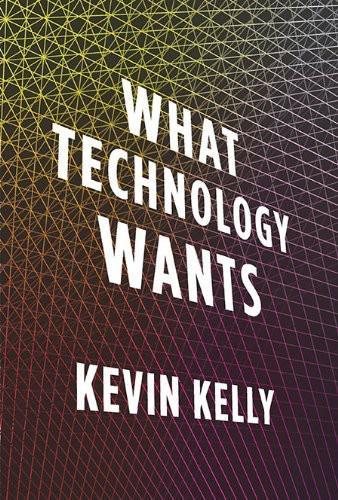
What Technology Wants
by
Kevin Kelly
Published 14 Jul 2010
What he has found is that, in general, multiple runs of evolution produced similar traits in the phenotype—the outward body of the bacteria. Changes in the genotype occurred in roughly the same places, though the exact coding was often different. This suggests a convergence of broad form with details left to chance. Lenski is not the only scientist doing experiments like this. Others’ experiments show similar results from parallel evolution: Instead of getting novelty each time, you get what one scientific paper calls “the convergence of multiple evolving lines on similar phenotypes.” As geneticist Sean Carroll concludes, “Evolution can and does repeat itself at the levels of structures and patterns, as well as of individual genes. . . .
…
New York: Basic Books, p. 130. 118 “where there is carbon-based life”: Michael Denton and Craig Marshall. (2001) “Laws of Form Revisited.” Nature, 410 (6827). http://dx.doi.org/10.1038/35068645. 120 “encoded implicitly in the genome”: Lynn Helena Caporale. (2003) “Natural Selection and the Emergence of a Mutation Phenotype: An Update of the Evolutionary Synthesis Considering Mechanisms That Affect Genomic Variation.” Annual Review of Microbiology, 57 (1). 121 from the same starting point: (2009) “Skeuomorph.” Wikipedia, Wikimedia Foundation. http://en.wikipedia.org/w/index.php?title=Skeuomorph&oldid=340233294. 122 “the embodiment of contingency”: Stephen Jay Gould. (1989) Wonderful Life: The Burgess Shale and Nature of History.
…
New York: Basic Books, pp. xv, xviii. 126 “becomes increasingly inevitable”: Simon Conway Morris. (2004) Life’s Solution: Inevitable Humans in a Lonely Universe. New York: Cambridge University Press, p. xiii. 127 with details left to chance: Richard E. Lenski. (2008) “Chance and Necessity in Evolution.” The Deep Structure of Biology, ed. Simon Conway Morris. West Conshohocken, PA: Templeton Foundation. 127 “lines on similar phenotypes”: Sean C. Sleight, Christian Orlic, et al. (2008) “Genetic Basis of Evolutionary Adaptation by Escherichia Coli to Stressful Cycles of Freezing, Thawing and Growth.” Genetics, 180 (1). http://www.genetics.org/cgi/content/abstract/180/1/431. 127 “all outcomes would be different”: Sean Carroll. (2008) The Making of the Fittest: DNA and the Ultimate Forensic Record of Evolution.
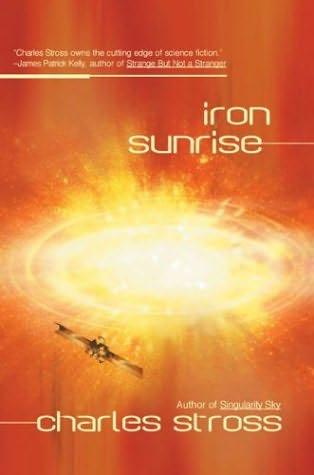
Iron Sunrise
by
Stross, Charles
Published 28 Oct 2004
There’s a release about reinterpreting the absurdist elements of the Ugandan proletarian reformation dialectic through the refracting lens of neo-Dadaist ideological situationism.” “Whatever that means. Okay. Next question, where was this guy born? Where did he come from? What does he do?” “He was born somewhere in Paraguay. He’s had extensive phenotype surgery to make himself resemble his role model, the Last King of Scotland or President of Uganda or whoever he was. Got a brochure from one of his performances here — says he tries to act as an emulation platform for the original Idi Amin’s soul.” “And now he’s gone crazy, right? Can you dig anything up about the history of the original Mister Amin?
…
His shoulder felt like a joint of uncooked meat, solid and immobile. There was a nasty stench in the air — if he’d lost bowel control already, that meant he was farther along than she’d wanted. “Witness for the Propagation, I request access to this one’s lineage. While the instance vector has proven unreliable, I believe with suitable guidance the phenotype may prove stable and effective.” Bayreuth was blinking at her in surprise. The Propagator nodded. “Your request has been received,” she said distantly. “A reproductive license is under consideration. Or were you thinking of a clone?” “No, recombination only.” Hoechst leaned closer, staring into U.
…
She watched him over the rim of her glass, green eyes narrowed. Sweat-spiked black hair, high cheekbones, full red lips, narrow waist: a warrior’s body held in a sheath of silk that had taken master couturiers a month to stitch. She had the inhumanly symmetrical features that only a first-line clade could afford to buy for the alpha instances of their phenotype. “I brought you here because I think we may have gotten off on the wrong foot when we were first introduced.” Franz sat frozen in his chair, the glass of scotch — worth a small fortune, for it had been imported across more than two hundred light years — clutched in his right hand. “I’m not sure I understand you.”

A Dominant Character
by
Samanth Subramanian
Published 27 Apr 2020
These modifications alter the selective pressures on the organism, often to its advantage. (Niche construction is a new version of an older idea; Darwin studied earthworms with keen interest and described how they reworked the soil.) A third wrinkle is phenotypic plasticity, the ability of a single species to create multiple kinds of physical phenotypes, so as to best thrive according to the environment. A smartweed plant grown in bright sunlight will have thick but narrow leaves, to maximize photosynthesis and to remain cool; a genetically identical plant grown in dimmer conditions will sprout thin, broad leaves to capture as much light as possible.
…
But the notion of the biochemical handiwork of genes had to be raised first, before it could be studied and expanded into the modern field of molecular genetics. John Innes was the ideal place to appraise the practical results of genetics and biochemistry. It held plot after plot of plants, their ancestries and breeding histories all carefully recorded, and their phenotypes—their heights or the colors of their flowers or their other features—plainly visible. Further, the institute had a crew of researchers who were adept at crossing plants for experiments. Many of these were women—unusual for the time, but Bateson had always collaborated with women, and he drafted several into John Innes from horticultural and agricultural colleges.
…
See also New College (Oxford) Oxford Preparatory School, 63 Oxford University Junior Scientific Club, 57 oxygen Haldane tasting, 319 J.S.’s scientific study, 32 shortage, vs. carbon dioxide, 37–38 paint-pot theory, 110 Paley, William, 61 Natural Theology, 330 Pandavas, 271–72 panspermia, 126, 128 Pasteur, Louis, 207–8 Patnaik, Biju, 298 patriotism, 73 Pearson, Karl, 110, 111, 131 “peasant scientists,” 14 Penrose, Lionel, 205 peppered moth (Biston betularia), 113–15 phenotypic plasticity, 314 Philby, Kim, 167, 253 pH of blood, 102 Physiological Society in London, 76–77 physiology, research on underwater, 247–51 plants chromosomes, 260 genetics, 1 Plumer, Herbert, 76 political interests, 160–61 political philosophy, and evolutionary biology, 159 politics and Haldane, 175–78 scientific advances and, 21 scientists and, 10 Pollitt, Harry, 178, 210, 218, 219, 252, 267, 268, 269, 278 Polyakov, I.

Spectrum Women: Walking to the Beat of Autism
by
Barb Cook
and
Samantha Craft
Published 20 Aug 2018
What Judith Singer articulated in 1998 with the term “neurodiversity,” expanded on later by Steve Silberman, was an idea of humanity not as a narrowly defined homogeneous being but as an ever-evolving, heterogeneous species whose evolutionary survival has been dependent on a widely diverse range of developmental phenotypes. That diversity includes what we call the autism spectrum (Silberman, 2015; Singer, 2016). Unfortunately, humans (as a whole—and, yes, I know I’m generalizing here) are not good at dealing with what they cannot categorize and contain in conceptual boxes, and they have difficulties accepting what is not “like them.”
…
What we do know is that autism is found in consistent numbers throughout the human race and that it is a genetically mediated phenomenon, which means autistic people almost certainly have been around a very, very long time. We suspect that the autistic genome—possibly in terms of a broader autism phenotype—may be responsible for, or at least contribute to, excellence in our capacities in engineering, science, math, music, IT, maybe more. So that begs the question: why is it defined as “a disorder?” Another Merriam-Webster definition of development is “leading through a succession of changes each of which is preparatory for the next.”
…
Currently, I am a detective with acute interest in research on female (mis)diagnosis. Dr. Will Mandy at University College London is the best researcher on autistic females to date. His study “The experiences of late-diagnosed women with autism spectrum conditions: An investigation of the female autism phenotype,” co-authored by autistic advocate Robyn Steward, appears in the Journal of Autism and Developmental Disorders, October 2016, Volume 46. Collecting a lot of clothes (I took up sewing to afford a wardrobe), hats, recordings, and/or books (my earliest friends) can be fine as long as it doesn’t turn into obsession.
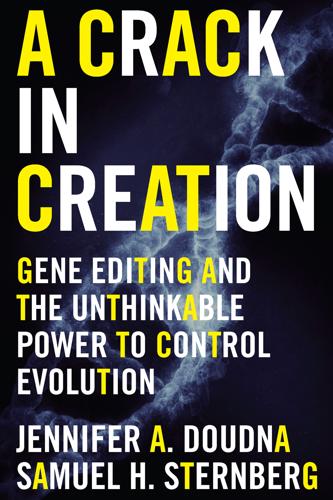
A Crack in Creation: Gene Editing and the Unthinkable Power to Control Evolution
by
Jennifer A. Doudna
and
Samuel H. Sternberg
Published 15 Mar 2017
Labradors are prone to some thirty genetic conditions, 60 percent of golden retrievers succumb to cancer, beagles are commonly afflicted with epilepsy, and Cavalier King Charles spaniels suffer from seizures and persistent pain due to their deformed skulls. These poignant medical problems haven’t kept humans from letting tastes dictate the genotype and phenotype of humankind’s best friend. Whatever one thinks of them, gene-edited cats and dogs—created with the help of biotechnology—are just around the corner. In late 2015, scientists in Guangzhou, China, reported the first application of CRISPR in beagles, using it to enhance muscle mass by knocking out the same myostatin gene linked to double muscling in whippet dogs and Belgian Blue cows.
…
Finally, enthusiasm for making changes to the DNA of future humans was a natural outgrowth of breakthroughs in human genetics, especially the sequencing of the human genome. This incredible development made many people think that geneticists would soon be able to find the root causes of once-mysterious diseases as well as the genetic code for a much broader range of human phenotypes, from physical traits to cognitive ones. Once we fully understood the genetic factors that determine human health and performance, we might be able to select for—or perhaps even engineer—embryos with a genetic composition different than that of their parents. Better than that of their parents. Or so some scientists hoped.
…
editing the myostatin gene in normal individuals to unleash enhanced, superhuman strength: E. P. Zehr, “The Man of Steel, Myostatin, and Super Strength,” Scientific American, June 14, 2013. gene-edited pigs had over 10 percent more lean meat than their unedited counterparts: L. Qian et al., “Targeted Mutations in Myostatin by Zinc-Finger Nucleases Result in Double-Muscled Phenotype in Meishan Pigs,”Scientific Reports 5 (2015): 14435. The scientists performed gene editing in a breed of goats known as Shannbei: X. Wang et al., “Generation of Gene-Modified Goats Targeting MSTN and FGF5 via Zygote Injection of CRISPR/Cas9 System,”Scientific Reports 5 (2015): 13878. so that chickens produce only females: S.

Climbing Mount Improbable
by
Richard Dawkins
and
Lalla Ward
Published 1 Jan 1996
CLIMBING MOUNT IMPROBABLE By the Same Author THE SELFISH GENE THE EXTENDED PHENOTYPE THE BLIND WATCHMAKER RIVER OUT OF EDEN Original drawings by Lalla Ward CLIMBING MOUNT IMPROBABLE Richard Dawkins W. W. Norton & Company New York London Copyright © 1996 by Richard Dawkins Original drawings copyright © 1996 by Lalla Ward All rights reserved First published as a Norton 1997 Library of Congress Cataloging-in-Publication Data Dawkins, Richard, 1941— Climbing mount improbable / Richard Dawkins; original drawings by Lalla Ward. p. cm. Includes bibliographical references.
…
They are DC8 mutations because they involve the duplication of existing complexity, not the 747 invention of new complexity. There is something that could come to the evolutionary aid of the freak macro-mutant, namely the fact that the effect of a given gene depends upon the other genes that are present in the same body. The effect of a gene on a body, its so-called phenotypic effect, is not written on its surface. There is nothing in the DNA code of the achondroplasia gene that a molecular biologist could decode as ‘short’ or ‘dwarf’. It has the effect of making limbs short only when surrounded by lots of other genes, to say nothing of other features of the environment.
…
Cambridge: Cambridge University Press. Dance, S. P. (1992) Shells. London: Dorling Kindersley. Darwin, C. (1859) The Origin of Species. Harmondsworth (1968): Penguin. Darwin, C. (1882) The Various Contrivances by Which Orchids are Fertilised by Insects. London: John Murray. Dawkins, R. (1982) The Extended Phenotype. Oxford: W. H. Freeman. Dawkins, R. (1986) The Blind Watchmaker. Harlow: Longman. Dawkins, R. (1989) ‘The evolution of evolvability’. In Artificial Life. (Ed. C. Langton.) Santa Fe: Addison-Wesley. Dawkins, R. (1989) The Selfish Gene. (2nd edn) Oxford: Oxford University Press. Dawkins, R. (1995) River Out of Eden.

The Greatest Show on Earth: The Evidence for Evolution
by
Richard Dawkins
Published 21 Sep 2009
Also by Richard Dawkins The Selfish Gene The Extended Phenotype The Blind Watchmaker River Out of Eden Climbing Mount Improbable Unweaving the Rainbow A Devil’s Chaplain The Ancestor’s Tale The God Delusion THE GREATEST SHOW ON EARTH THE EVIDENCE FOR EVOLUTION RICHARD DAWKINS For Josh Timonen FREE PRESS A Division of Simon & Schuster, Inc. 1230 Avenue of the Americas New York, NY 10020 Copyright © 2009 by Richard Dawkins Originally published in Great Britain in 2009 by Bantam Press an imprint of Transworld Publishers All rights reserved, including the right to reproduce this book or portions thereof in any form whatsoever.
…
This book is my personal summary of the evidence that the ‘theory’ of evolution is actually a fact – as incontrovertible a fact as any in science. It is not the first book I have written about evolution, and I need to explain what’s different about it. It could be described as my missing link. The Selfish Gene and The Extended Phenotype offered an unfamiliar vision of the familiar theory of natural selection, but they didn’t discuss the evidence for evolution itself. My next three books, in their different ways, sought to identify, and dissolve, the main barriers to understanding. These books, The Blind Watchmaker, River Out of Eden and (my favourite of the three) Climbing Mount Improbable, answered questions like, ‘What is the use of half an eye?’
…
Religious organizations, by contrast, are assumed to benefit humanity without any obligation to demonstrate it and even, apparently, if they are actively engaged in promoting scientific falsehood. NOTES PREFACE p. vii offered an unfamiliar vision: The Selfish Gene (1976; 30th anniversary edn 2006) and The Extended Phenotype (rev. edn 1999). p. vii My next three books: The Blind Watchmaker (1986), River Out of Eden (1995) and Climbing Mount Improbable (1996). p. vii My largest book: The Ancestor’s Tale (2004). CHAPTER 1: ONLY A THEORY? p. 5 In 2004 we wrote a joint article in the Sunday Times : ‘Education: questionable foundations’, Sunday Times, 20 June 2004.

The Pot Book: A Complete Guide to Cannabis
by
Julie Holland
Published 22 Sep 2010
The use of vegetative cuttings is used to preserve unique characteristics, as the new plant will have the same genotype (genetic composition) and thus the potential for the same phenotypic characteristics as the plant it was taken from, though a different environment may change the plant appearance and chemistry. Offspring of sexually propagated plants (those grown from seed) will have genotypes different from the parent plants, as inheritable characteristics (genes) that determine the plant phenotype come from both the male and the female plant. Planned plant crosses (mating of male and female plants by transfer of pollen from a specific male to a specific female) are used to develop new varieties.
…
Other authorities (Schultes and Hofmann 1991) insist that morphological differentiation (narrower leaflets, thinner cortex, and more branches) and lack of cannabinoids within plants of European origin, as compared with plants in India, indicate two species, C. sativa (historically identified as the source of hemp fibers) and C. indica (historically identified as the source of canabinoid-containing resin). Additional species have been distinguished: C. ruderalis (wild/naturalized accessions) and C. chinensis (currently thought to be a subset of C. indica) have been proposed due to differentiation in phenotypic traits of the plants (Schultes and Hofmann 1991). A recent investigation on allozyme (an enzyme that differs by one amino acid from other forms of the same enzyme) variation within 157 populations of Cannabis (Hillig 2005) strongly suggests that the genus Cannabis consists of only two species, C. sativa and C. indica.
…
Strains of Cannabis approved for industrial hemp production in Europe and elsewhere have been selected to produce only minute amounts of psychoactive constituents, while strains of Cannabis used for medicinal and recreational use have been selected for production of cannabinoids (Small and Marcus 2002). A study of ninety-seven Cannabis accessions (de Meijer et al. 2003) indicated that plants produced for delta-9-tetrahydrocannabidiol (THC) and cannabidiol (CBD) demonstrated a continuous variation in content of these constituents among the accessions with no phenotypic characteristic (physical appearance) that could accurately separate those with high THC from those with low THC content. All species of Cannabis can seemingly be bred to produce fiber or cannabinoids. BOTANICAL HISTORY Historically, botanical interest in Cannabis undoubtedly began as the plant became recognized as a source of food, fiber, and medicine.

Four Battlegrounds
by
Paul Scharre
Published 18 Jan 2023
Chinese state scientists have, at times, sought to combine AI with biometrics on the edge of what is scientifically possible. Scientists working with the Ministry of Public Security developed DNA-based face mapping technology, which attempts to reconstruct a digital image of a person’s face based on their DNA. The process, called DNA phenotyping, produces a rough image that is not accurate enough to identify an individual, but might help narrow down potential individuals based on approximate facial characteristics. It has been used occasionally by law enforcement in the United States, although the technique is controversial because it effectively profiles a wide swath of people.
…
dbcode=CJFQ&dbname=CJFDLAST2016&filename=GOAN201601012&v=MDk0OTdvUjhlWDFMdXhZUzdEaDFUM3FUcldNMUZyQ1VSTDJlWitSdkZ5am5XcjNQSWlMS1lMRzRIOWZNcm85RVo=. 89who “has gone to internet cafes together more than twice”: “China: Police ‘Big Data’ Systems Violate Privacy, Target Dissent.” 89synthesize data to uncover and alert police to unusual activity: “China: Police ‘Big Data’ Systems Violate Privacy, Target Dissent.” 89purchasers of new mobile phones, data plans, or SIM cards: “China Due to Introduce Face Scans for Mobile Users,” BBC News, December 1, 2019, https://www.bbc.com/news/world-asia-china-50587098; “工信部持续加强电话用户实名登记管理工作维护公民网络空间合法权益 [The Ministry of Industry and Information Technology continued to strengthen the real-name registration management of telephone users and safeguard the legitimate rights and interests of citizens in cyberspace],” Ministry of Industry and Information Technology of People’s Republic of China, September 27, 2019, http://www.miit.gov.cn/n1146285/n1146352/n3054355/n3057724/n3057728/c7448683/content.html (page discontinued). 89nationwide DNA collection program: Emile Dirks and James Leibold, Genomic Surveillance: Inside China’s DNA Dragnet (Australian Strategic Policy Institute, June 17, 2020), https://www.aspi.org.au/report/genomic-surveillance. 90the world’s largest DNA database: Wenxin Fan, Natasha Khan, and Liza Lin, “China Snares Innocent and Guilty Alike to Build World’s Biggest DNA Database,” Wall Street Journal, updated December 26, 2017, https://www.wsj.com/articles/china-snares-innocent-and-guilty-alike-to-build-worlds-biggest-dna-database-1514310353; Sui-Lee Wee and Paul Mozur, “China Uses DNA to Map Faces, With Help From the West,” New York Times, December 3, 2019, https://www.nytimes.com/2019/12/03/business/china-dna-uighurs-xinjiang.html. 90DNA phenotyping: Wee and Mozur, “China Uses DNA to Map Faces”; Christoph Lippert et al., “Identification of Individuals by Trait Prediction Using Whole-Genome Sequencing Data,” Proceedings of the National Academy of Sciences of the United States of America 114, no. 38 (September 2017): 10166-10171, https://www.pnas.org/content/114/38/10166; Yaniv Erlich, Major Flaws in “Identification of Individuals by Trait Prediction Using Whole-Genome Sequencing Data” (bioRxiv, September 7, 2017), https://www.biorxiv.org/content/10.1101/185330v3; Donald Maye, “Corsight’s Upcoming DNA to FACE: ‘Terrifying’ Warns Privacy Expert,” IPVM, January 31, 2022, https://ipvm.com/reports/corsight-dna-face; Parabon Nanolabs, “Published Police Investigations,” https://snapshot.parabon-nanolabs.com/posters#subject-identified. 90technique is controversial: Ashley Southall, “Using DNA to Sketch What Victims Look Like; Some Call It Science Fiction,” New York Times, October 19, 2017, https://www.nytimes.com/2017/10/19/nyregion/dna-phenotyping-new-york-police.html; Tate Ryan-Mosley, “This Company Says It’s Developing a System That Can Recognize Your Face from Just Your DNA,” MIT Technology Review, January 31, 2022, https://www.technologyreview.com/2022/01/31/1044576/corsight-face-recognition-from-dna/; Sense About Science, “Making Sense of Forensic Genetics,” January 25, 2017, https://senseaboutscience.org/activities/making-sense-of-forensic-genetics/. 90DNA derived from men in Xinjiang: Wee and Mozur, “China Uses DNA to Map Faces.” 90legal restraints: “China: Police ‘Big Data’ Systems Violate Privacy, Target Dissent.” 90Regional surveillance networks: “‘天网’网什么” [“Skynet” Nets What]. 90Skynet is not always connected: “‘天网’网什么” [“Skynet” Nets What]. 90Chinese police face the hurdles of incompatible databases: “China: Police ‘Big Data’ Systems Violate Privacy, Target Dissent”; Maya Wang, “China’s Bumbling Police State,” Wall Street Journal, December 26, 2018, https://www.wsj.com/articles/chinas-bumbling-police-state-11545869066. 90facial recognition sunglasses that police have used: Mozur, “Inside China’s Dystopian Dreams.” 12.
…
dbcode=CJFQ&dbname=CJFDLAST2016&filename=GOAN201601012&v=MDk0OTdvUjhlWDFMdXhZUzdEaDFUM3FUcldNMUZyQ1VSTDJlWitSdkZ5am5XcjNQSWlMS1lMRzRIOWZNcm85RVo=. 89who “has gone to internet cafes together more than twice”: “China: Police ‘Big Data’ Systems Violate Privacy, Target Dissent.” 89synthesize data to uncover and alert police to unusual activity: “China: Police ‘Big Data’ Systems Violate Privacy, Target Dissent.” 89purchasers of new mobile phones, data plans, or SIM cards: “China Due to Introduce Face Scans for Mobile Users,” BBC News, December 1, 2019, https://www.bbc.com/news/world-asia-china-50587098; “工信部持续加强电话用户实名登记管理工作维护公民网络空间合法权益 [The Ministry of Industry and Information Technology continued to strengthen the real-name registration management of telephone users and safeguard the legitimate rights and interests of citizens in cyberspace],” Ministry of Industry and Information Technology of People’s Republic of China, September 27, 2019, http://www.miit.gov.cn/n1146285/n1146352/n3054355/n3057724/n3057728/c7448683/content.html (page discontinued). 89nationwide DNA collection program: Emile Dirks and James Leibold, Genomic Surveillance: Inside China’s DNA Dragnet (Australian Strategic Policy Institute, June 17, 2020), https://www.aspi.org.au/report/genomic-surveillance. 90the world’s largest DNA database: Wenxin Fan, Natasha Khan, and Liza Lin, “China Snares Innocent and Guilty Alike to Build World’s Biggest DNA Database,” Wall Street Journal, updated December 26, 2017, https://www.wsj.com/articles/china-snares-innocent-and-guilty-alike-to-build-worlds-biggest-dna-database-1514310353; Sui-Lee Wee and Paul Mozur, “China Uses DNA to Map Faces, With Help From the West,” New York Times, December 3, 2019, https://www.nytimes.com/2019/12/03/business/china-dna-uighurs-xinjiang.html. 90DNA phenotyping: Wee and Mozur, “China Uses DNA to Map Faces”; Christoph Lippert et al., “Identification of Individuals by Trait Prediction Using Whole-Genome Sequencing Data,” Proceedings of the National Academy of Sciences of the United States of America 114, no. 38 (September 2017): 10166-10171, https://www.pnas.org/content/114/38/10166; Yaniv Erlich, Major Flaws in “Identification of Individuals by Trait Prediction Using Whole-Genome Sequencing Data” (bioRxiv, September 7, 2017), https://www.biorxiv.org/content/10.1101/185330v3; Donald Maye, “Corsight’s Upcoming DNA to FACE: ‘Terrifying’ Warns Privacy Expert,” IPVM, January 31, 2022, https://ipvm.com/reports/corsight-dna-face; Parabon Nanolabs, “Published Police Investigations,” https://snapshot.parabon-nanolabs.com/posters#subject-identified. 90technique is controversial: Ashley Southall, “Using DNA to Sketch What Victims Look Like; Some Call It Science Fiction,” New York Times, October 19, 2017, https://www.nytimes.com/2017/10/19/nyregion/dna-phenotyping-new-york-police.html; Tate Ryan-Mosley, “This Company Says It’s Developing a System That Can Recognize Your Face from Just Your DNA,” MIT Technology Review, January 31, 2022, https://www.technologyreview.com/2022/01/31/1044576/corsight-face-recognition-from-dna/; Sense About Science, “Making Sense of Forensic Genetics,” January 25, 2017, https://senseaboutscience.org/activities/making-sense-of-forensic-genetics/. 90DNA derived from men in Xinjiang: Wee and Mozur, “China Uses DNA to Map Faces.” 90legal restraints: “China: Police ‘Big Data’ Systems Violate Privacy, Target Dissent.” 90Regional surveillance networks: “‘天网’网什么” [“Skynet” Nets What]. 90Skynet is not always connected: “‘天网’网什么” [“Skynet” Nets What]. 90Chinese police face the hurdles of incompatible databases: “China: Police ‘Big Data’ Systems Violate Privacy, Target Dissent”; Maya Wang, “China’s Bumbling Police State,” Wall Street Journal, December 26, 2018, https://www.wsj.com/articles/chinas-bumbling-police-state-11545869066. 90facial recognition sunglasses that police have used: Mozur, “Inside China’s Dystopian Dreams.” 12.
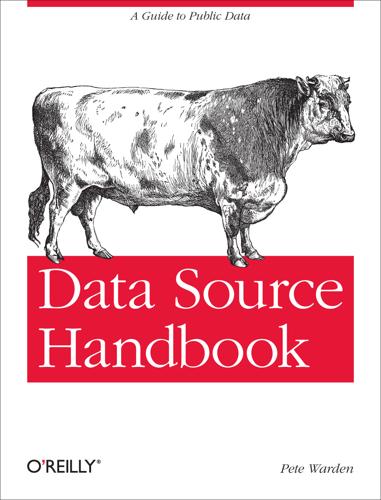
Data Source Handbook
by
Pete Warden
Published 15 Feb 2011
eBook <www.wowebook.com> "kind": "customsearch#result", "title": "mana cross pang confidante surplus fine formic beach metallurgy ...", "htmlTitle": "mana cross pang confidante surplus fine formic beach metallurgy \u003cb\u003e...\u003c/b\u003e", "link": "http://www.cs.caltech.edu/courses/cs11/material/advjava/lab4/unsorted_words.txt", "displayLink": "www.cs.caltech.edu", "snippet": "... phonic phenotype exchangeable Pete pesticide exegete exercise persuasion .... lopsided judiciary Lear proverbial warden Sumatra Hempstead confiscate ...", }, ... Wikipedia Wikipedia doesn’t offer an API, but it does offer bulk data downloads of almost everything on the site. One of my favorite uses for this information is extracting the titles of all the articles to create a list of the names of people, places, and concepts to match text against.

Unweaving the Rainbow
by
Richard Dawkins
Published 7 Aug 2011
The DNA of any one species doesn't literally come into direct contact with the DNA molecules of its predators, competitors or mutualistic partners. 'Climate' has to be understood less intimately than when the arena of gene cooperation is the interior of cells, as it is for genes within one species. In the larger arena, it is the consequences of genes in other species—their 'phenotypic effects'—that constitute an important part of the environment in which the natural selection of genes within neighbouring species goes on. A rainforest is a special kind of environment, fashioned and defined by the plants and animals that live in it. Every one of the species in a tropical rainforest consists of a gene pool, isolated from all other gene pools as far as sexual mixing is concerned, but in contact with their bodily effects.
…
The co-evolution is what may have driven the inflation of the human brain. I said that I'd return to the illusion of the 'little man in the brain'. Not to solve the problem of consciousness, which is way beyond my capacity, but to make another comparison between memes and genes. In The Extended Phenotype, I argued against taking the individual organism for granted. I didn't mean individual in the conscious sense but in the sense of a single, coherent body surrounded by a skin and dedicated to a more or less unitary purpose of surviving and reproducing. The individual organism, I argued, is not fundamental to life, but something that emerges when genes, which at the beginning of evolution were separate, warring entities, gang together in cooperative groups, as 'selfish cooperators'.
…
Cambridge: Cambridge University Press. 26. Darwin, C. (1859) On the Origin of Species. London (1968): Penguin Books. 27. Davies, N. B. (1992) Dunnock Behaviour and Social Evolution. Oxford: Oxford University Press. 28. Dawkins, M. S. (1993) Through Our Eyes Only? Oxford: W. H. Freeman. 29. Dawkins, R. (1982) The Extended Phenotype. Oxford: Oxford University Press. 30. Dawkins, R. (1986) The Blind Watchmaker. London: Penguin Books. 31. Dawkins, R. (1989) The Selfish Gene. Second Edition. Oxford: Oxford University Press. 32. Dawkins, R. (1995) River Out of Eden. London: Weidenfeld & Nicolson. 33. Dawkins, R. (1996) Climbing Mount Improbable.

The Human Age: The World Shaped by Us
by
Diane Ackerman
Published 9 Sep 2014
Now he’s among those ringing the biggest changes, including a dramatically new view of the human body and the jostles of cells that inhabit living tissues—even what a cell is and how a cell behaves. Not only do we know about stem cells, we’re starting to wield them in clever ways to mend the body, and it’s not arduous to do; it can be as simple as exposing cells to the right chemicals or stimuli. There’s been a stunning paradigm shift from the rule of phenotype—one cell type fated for one job and nothing else—to phenotypic elasticity, the idea that cells are far more versatile and can be repurposed, like a hammer used to anchor a kite. We now grasp that a wafer of skin can be retrained to do just about anything. It’s a new category of raw material, like wood or stone, with potent gifts.
…
Moreau, The (Wells), 267–68 Israel, 76 Istanbul, Turkey, 78 Italy, 88, 107 Ithaa Restaurant, 76 Ivanpah, 106 Ivins, Molly, 206 Jaguar Corridor, 123 Jamaica Bay, 119 Jamaican fruit bats, 131 Japan, 88 industrial tourism in, 23 Japan beetles, 295 Japanese honeysuckle, 132 Jarrell, Randall, 45 jellyfish, 65, 181 Jernhusen, 96–97, 98 Jerusalem, 77 Jet Propulsion Laboratory, 220 Jim River, Alaska, 40 Johansson, Klas, 96–97 Johns Hopkins University, 244 Jordan, Terry, 31–32 Jungle Waterfalls, 83 Kahn, Peter H., 196 Kalmar, Sweden, 99–100 kangaroo, 296 Kanzi (bonobo), 202 Katrina, Hurricane, 46 katydids, 173–74 Kawasaki, Japan, 23 Keating, Tim, 147 kelp, 56, 57, 58, 60, 63–64 biofuels from, 64 Kenya, 124 Khoshnevis, Behrokh, 235 Kidd, Captain, 58 kidney, 239 King, Ross, 221 Kiribati, 49 knapweed, 166 knife fish, 147–48 Knights of the Order of the Barrier, 51 koalas, 164 Kockums, 101 Kojo Moe (Ohyama), 23 Korup National Park, 126 krill, 134 Kublai Khan, 272 Kubrick, Stanley, 269 kudzu vine, 132 Kungsbrohuset office building, 96 Kurzweil, Ray, 181, 218 Lactobacillus johnsonii, 301 Lafferty, Kevin, 299 Lake Cayuga, 30–31 Lamarck, Jean-Baptiste, 276–77 Lammens, Kathy, 302 lampreys, 132 Lancet, 277, 278 landscapes, 22–23 manufactured, 23–25 language, 7, 10, 171, 191, 255, 303 of animals, 201–3 Language Research Center, 201–2 Larry (boa), 130 lead, 271 Leadership in Energy and Environmental Design (LEED), 88 Leaves of Grass (Whitman), 184 Lederberg, Joshua, 289 LED lights, 90, 103–4 Leeuwenhoek, Antonie van, 290 Leno, Jay, 235 leopards, 118 leucine, 179 Library of Congress, 59 lifespan, 13 lights, 17 Lincoln Memorial, 59 Lindholm, Bosse, 100 Linnaeus, Carl, 217 lions, 164, 273 Lipson, Hod, 208–25, 226–27, 229, 235, 247, 250 livers, 150, 248 Living Machines Conference, 218–19 local farms, 88 Lockheed Martin, 236 locusts, 41 London, 50–51 London Zoo, 159 Long Island Sound, 60 loosestrife, 132 Losiny Ostrov National Park, 78 lotusin, 91 Louisiana, 46 Louv, Richard, 196 lungs, 239, 248 Lyme disease, 121 Lyme ticks, 39 lynxes, 132 macaws, 164 Maeslantkering, 50 magnolias, 111–12 magpies, 217 Mail Online, 271 malaria, 302 Malaysia, 79 Maldives, 76–77 mallards, 117 Mall of America, 96 Mandarin Chinese, 281 mantis shrimp, 61 manufactured landscapes, 23–25 manufacturing, 12 mariculture, 56–67 pushback against, 64–65 marigolds, 90 marine transport pollution, 76 Marshall Islands, 314 marsh rabbits, 129 Marsico, Ron, 119 Masdar City, Abu Dhabi, 103–4 Masters, Jeff, 47 mastodons, 31 Mayflower, 132 McDonough, William, 87–88 McGill University, 282, 284 McKibben, Bill, 112 McMurdo Station, 88–90 Meaney, Michael, 282–84 Mecanoo, 104 medical ecology, 300 medicine, 7, 12–13 Medieval Warm Period, 43 Mehler, Mark, 282 memories, 255 Men Who Stare at Goats, The (Ronson), 146 Mercedes, 236 mercury, 271 Mesopotamia, 235 metal alloy teeth, 253 methylation, 281 Mexico, 88 Mexico City, 77, 82–83 mice, 302 Michigan, 132 microbes, 287–304 effects of, on humans, 292, 295–303 evolution affected by, 292–93 microbiome, 289 microscope, 290 microtia, 244–45 Milky Way, 176 Milton, John, 51, 212–13 mining, 11, 21, 24, 34 mitochondria, 291 Mitsuku, 317 Mohali, India, 99 moist shaded zones, 79 Mojave Desert, 22, 106 Mongolia, 132 monkeys, 146, 267 monk parakeets, 131 monkshoods, 125 monsoon season, 51, 53 Montaigne, Michel de, 63 Montana, 117 Mooallem, Jon, 139–40 moon, 306 Moorea, 158 moor frogs, 124 moose, 132 Moscow, 78 MOSE Project, 50 mosquitoes, 302 Motherwell, Robert, 218 Motley Fool, 235 multiple sclerosis, 301 Mumbai, 78 musk oxen, 132 mussels, 58, 60, 66, 78 mussel tissue, 91 Muybridge, Eadweard, 191 Nakamura, Makoto, 238 Naki’o, 256 Namibia, 180–81 nanobots, 181 Nano Impacts Intellectual Community, 183 nanoparticles, 182–83 nanotechnology, 179–87 nanotubes, 179 NASA, 204, 235, 305, 314 Nasheed, Mohamed, 76 National Academy of Science, 266–67 National Arbor Day Foundation, 38 National Institutes of Health (NIH), 285 national parks, 165 National Resources Defense Council, 316 National Zoo, 123 NATO, 237 Natural History of the Senses, A (Ackerman), 175 nature: balance of, 132–33 romance with, 126–27 as term, 25, 111–27, 171–72, 309–10 Nature, 134 nature deficit disorder, 196–97 Nature Neuroscience, 282 Navigenics, 271 Navy, U.S., 145, 147 Nazis, 273–74 Neanderthals, 162, 178, 189, 263 nearsightedness, 192 Nelson Island, 48 Nemo, Blizzard, 58 Nestlé, 212 Netherlands, 101, 124, 132 Netherlands Antilles, 88 neural implants, 253 Nevada, 106 New Forest, 174–75 Newfoundland, 42 New Jersey, 46 New Mexico, 40 Newton, Isaac, 220 New York, 38, 46, 77 New York, N.Y., 55, 73 New York University, 197–98 night fiddlers, 172–73 Nile perch, 131 Nin, Anaïs, 186 nitrogen, 36 NOAA, 210 Norrbotten, Sweden, 275–76, 277–78, 280 North Africa, 106 North Carolina, 46 northern goshawks, 132 Northwest Passage, 135 Norway, 101, 124, 132 Norway maples, 132 nuclear bomb, 191 nuclear power, 22, 100 nuclear winter, 8, 9 Obama, Barack, 177 Obama administration, 233 obesity, 196 ocean, acidification of, 65, 66, 154 octopuses, 202, 216 Ohio, 77 Ohyama, Ken, 23 oil, 99, 106 oil refineries, 22 oil spills, 300 Oman, 132 1D farming, see mariculture Operation Acoustic Kitty, 146 Operation Migration, 139–40 opossums, 129 Orangutan Awareness program, 28 Orangutan Outreach, 5, 6, 313 orangutans, 3–7, 25–28, 132, 216, 217, 231, 296 human genes shared by, 3 impending extinction of, 27–28, 313 solitary lives of, 4 tool use by, 5 orca whales, 135, 144 orchids, 206 Orff, Kate, 55 organic fertilizer, 64 Organovo, 238–39 Ornstein, Len, 54 Orthopets, 256 Oshkosh Airshow, 187 osteoarthritis, 248 otters, 124 Outer Island, 58 ovarian cancer, 281–82 Överkalix, Sweden, 279–80 oxen, 140 oxeye daisies, 132 oxygen, 41, 53 oysters, 54–55, 56, 57, 60, 61–63 Ozawa, Masakatsu, 23 P-52 (python), 128 pacemakers, 253 Panbanisha (bonobo), 201–2, 203 pancreas, 281 pansies, 90 Papua New Guinea, 72 Paradise Lost (Milton), 212–13 Paris, 95–96 Paris Habitat, 96 Parkinson’s disease, 253, 295 parks, 73–74, 78 parrots, 202 parsley, 89 Partula, 156–59 passenger pigeons, 151–52 Pasteur, Louis, 290 Patagonia National Park, 99 pathogens, 290 peacock feathers, 91 Pearce, Mick, 93–94 Pembrey, Marcus, 279, 281 penguins, 134–35 peonies, 125 People’s Daily, 146 peppers, 89 peregrine falcons, 132 periwinkles, 61–62 permafrost, 48 personality, 200, 214, 216–17, 222–23, 229, 253, 292, 297, 299, 303–4, 307 Peru, 77 pesticides, 153, 166 pets, 149–50 Pettit, Don, 16 Phelps, Michael, 258 phenotypic elasticity, 249–50 Philippines, 46 photonic clusters, 35 phytoplankton, 61 piezoelectricity, 317 pigeons, 140, 142, 144, 145–46 pigs, 71 in war, 146 Pistorius, Oscar, 258, 260 Plan Bee, 166 planes, 171, 191 planets, 220–21 Planets, The: A Cosmic Pastoral (Ackerman), 220 plankton, 134–35 PlantLab, 90 plants: in cities, 79–85 texting by, 205–7 plastic stents, 253 Pleistocene Park, 151 Pliocene, 29 PLOS ONE, 271 pneumonia, 183 Poland, 78, 132, 273 polar bears, 134 polar molecules, 35 polar T3, 90 pollution, 154 marine transport, 76 Polo, Marco, 272 polymer teeth, 253 Polynesia, 156, 157 Ponce, Brent, 260–61 ponies, 137–38 Pons, Lily, 264 poppies, 125 population growth, 10 Porter, Eliot, 25 poverty, 285, 286 Power Felt, 185 prairie dogs, 131 presence, 199 Price of Freedom: Americans at War exhibit, 145 probiotics, 300 Proceedings of the National Academy of Sciences, 129 produce, 89 Project Orcon, 145 Project Pigeon, 145 Project X-Ray, 145 proprioception, 175–76 prosthetics, 256–58 protein, 190 protozoans, 172, 289–90, 300 Przewalski’s horses, 132 Puerto Rico, 175 Puppe (orangutan), 26–27 purple finch, 137 pyrolysis technology, 76 pythons, 128–31, 133, 140, 315 Quai Branly Museum, 80–82, 84–85 quarries, 24 quasi-crystal, 34 rabbits, 126, 129, 133 rabies, 298 racoons, 129 rail trails, 77 rainforests, 79 rains, 41 Raison, Charles, 300–301 Rambuteau subway station, 95–96 Rand, Ayn, 59 rats, 282–83, 296 reading, 191–92 Reconciliation Ecology, 74 recycling, 52, 74, 78, 87, 88, 90 heat, 95–108 red clover, 166 Red Delicious, 137 red foxes, 153 red kites, 132 Red Sea Star Restaurant, 76 reef death, 36–37 refrigerators, 87 regenerative medicine, 244 Rehabilitation Institute of Chicago, 254–55 reindeer, 132 Reiss, Diana, 202, 204 religion, 176 Relman, David, 300 Renaissance, 190 Renault, 83 renewable energy, 307 restaurant rooftop farms, 88 retinas, 253 Revolutionizing Prosthetics program, 258–59 Rezwan, Mohammed, 52–53 rhododendrons, 125 rice, 71 Rice Plant Conservation Science Center, 82 Rig Veda, 257 RinkWatch.org, 40, 314 Rio de Janeiro, Brazil, 78 Ripasso Energy, 100–101, 106 roadkill, 115–16 robomoths, 146–47 RobotCub Consortium, 218–19 robot fleas, 148 robotic evolution, 210, 213, 224–25 robots, 210–25 rocketships, 171 rock strata, 31, 35 roe deer, 124 Romania, 78, 124 Romans, 185 Rome, 267 Roosevelt, Franklin D., 145 rosemary, 90 Rosenzweig, Michael, 74 roses, 125 Rotterdam, Netherlands, 77 Royal Botanic Gardens, 118 Rwanda, 46 Ryu Chan Hyeon, 102 saber-tooth tigers, 162, 163 Sagan, Carl, 220 sage, 125 Sahara Desert, 54 Sahel, 46 St.
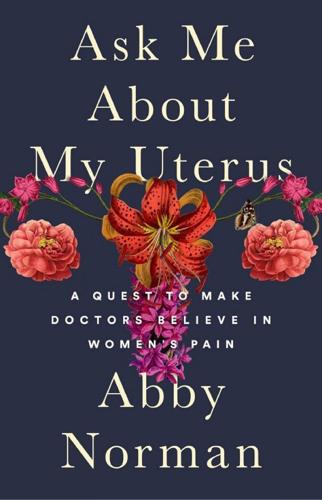
Ask Me About My Uterus: A Quest to Make Doctors Believe in Women's Pain
by
Abby Norman
Published 6 Mar 2018
Her current research project at Columbia, the development of a tracking app called Phendo, was her attempt to quantify the unquantifiable, not only for herself, but for the collective. For science, and for patients. One thing that’s missing from our understanding of endometriosis at every level, as Noémie pointed out, is its phenotype. For a disease like endo, a phenotype is the set of characteristics that can be observed: symptoms, test results, and microscopic evidence from tissue samplings, for example. Noémie and her team developed Phendo in the hope that they would be able to utilize a “citizen science” initiative to gather information about endo patients’ experiences, histology, and biomarkers.
…
Saying that endometriosis (like hysteria before it) is a disease exclusive to women, or even of uteruses, isn’t just noninclusive—it’s not true. Endometriosis has been found in men. Take this clinical portrait: an eighty-five-year-old man had an endometrioma in his abdomen, and for ten years, it was believed to be a carcinoma of the prostate. When they studied this patient’s chromosomes, he was phenotypically male, and, as it turned out, he did in fact have prostate cancer. But he also had an endometrioma that was independent of the cancer. Another more recent case involved a fifty-two-year-old man who came to the emergency room with stabbing pain in his lower abdomen and pelvis which had been ongoing for about three weeks.
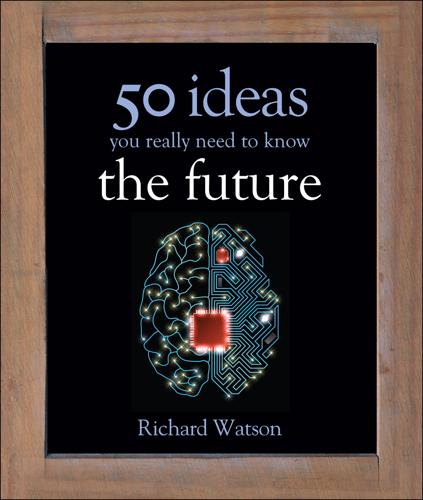
50 Future Ideas You Really Need to Know
by
Richard Watson
Published 5 Nov 2013
First, many drugs are starting to fall out of patent restrictions, and generic drug makers (particularly in Asia) are becoming more aggressive about attacking patents so that generic “lookalike” drugs are getting to be cheaper and more commonplace. The second reason for the trend is technology. Developments in areas such as genomics and personal phenotyping mean that personalized medicine is becoming a reality, and pharmaceutical companies are shifting research and development expenditure toward specialty products and therapies that target niche medical conditions and subpopulations. A 9 million euro, EU-funded project, Food4Me, is being launched to look at all aspects of personalized nutrition—namely how food intake could be tailored to suit each individual’s physical and genetic makeup.
…
A 9 million euro, EU-funded project, Food4Me, is being launched to look at all aspects of personalized nutrition—namely how food intake could be tailored to suit each individual’s physical and genetic makeup. Perhaps rather than call it personalized medicine, we should call it personalized health. There’s even a European study on delivering personalized nutrition according to phenotype. In the end, it really is up to you to look after yourself by whatever method you choose from the hundreds of possibilities available so that you don’t need medicine. Yes, patients know best and can be trusted to have access to all their data. the condensed idea Patient power timeline 2014 Apple introduce iMedic monitoring feature on iPhone 6 2018 Dunnhumby and Tesco put in charge of 25 percent of UK hospitals 2020 Launch of Medipedia, a crowd-sourced medical directory 2025 All medical records accessed via the “cloud” 2030 All hospitals rated eBay style by patients 2040 TripAdvisor launches hospital review spin-off 25 Medical data mining Medicine, like insurance, isn’t always that smart.

Superintelligence: Paths, Dangers, Strategies
by
Nick Bostrom
Published 3 Jun 2014
Genome-wide complex trait analysis, using studies with vast numbers of subjects, is just now starting to become feasible and will greatly increase our knowledge of the genetic architectures of human cognitive and behavioral traits.40 Any trait with a non-negligible heritability—including cognitive capacity—could then become susceptible to selection.41 Embryo selection does not require a deep understanding of the causal pathways by which genes, in complicated interplay with environments, produce phenotypes: it requires only (lots of) data on the genetic correlates of the traits of interest. It is possible to calculate some rough estimates of the magnitude of the gains obtainable in different selection scenarios.42 Table 5 shows expected increases in intelligence resulting from various amounts of selection, assuming complete information about the common additive genetic variants underlying the narrow-sense heritability of intelligence.
…
If one wished to speak provocatively, one could say that individuals created from such proofread genomes might be “more human” than anybody currently alive, in that they would be less distorted expressions of human form. Such people would not all be carbon copies, because humans vary genetically in ways other than by carrying different deleterious mutations. But the phenotypical manifestation of a proofread genome may be an exceptional physical and mental constitution, with elevated functioning in polygenic trait dimensions like intelligence, health, hardiness, and appearance.58 (A loose analogy could be made with composite faces, in which the defects of the superimposed individuals are averaged out: see Figure 6.)
…
A misplaced faith in the inherent beneficence of the evolutionary process can get in the way of a fair evaluation of the desirability of a multipolar outcome in which the future of intelligent life is determined by competitive dynamics. Any such evaluation must rest on some (at least implicit) opinion about the probability distribution of different phenotypes turning out to be adaptive in a post-transition digital life soup. It would be difficult in the best of circumstances to extract a clear and correct answer from the unavoidable goo of uncertainty that pervades these matters: more so, if we superadd a layer of Panglossian muck. A possible source for faith in freewheeling evolution is the apparent upward directionality exhibited by the evolutionary process in the past.
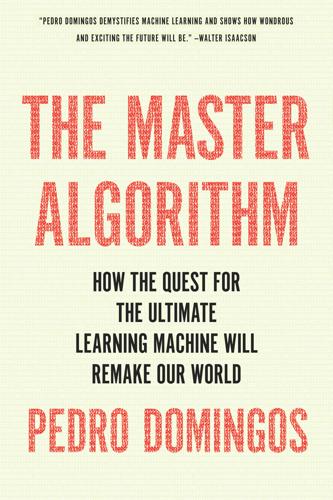
The Master Algorithm: How the Quest for the Ultimate Learning Machine Will Remake Our World
by
Pedro Domingos
Published 21 Sep 2015
But there is no necessary connection between intelligence and autonomous will; or rather, intelligence and will may not inhabit the same body, provided there is a line of control between them. In The Extended Phenotype, Richard Dawkins shows how nature is replete with examples of an animal’s genes controlling more than its own body, from cuckoo eggs to beaver dams. Technology is the extended phenotype of man. This means we can continue to control it even if it becomes far more complex than we can understand. Picture two strands of DNA going for a swim in their private pool, aka a bacterium’s cytoplasm, two billion years ago.
…
See also Cancer drugs Duhigg, Charles, 223 Dynamic programming, 220 Eastwood, Clint, 65 Echolocation, 26, 299 Eddington, Arthur, 75 Effect, law of, 218 eHarmony, 265 Eigenfaces, 215 80/20 rule, 43 Einstein, Albert, 75, 200 Eldredge, Niles, 127 Electronic circuits, genetic programming and, 133–134 Eliza (help desk), 198 EM (expectation maximization) algorithm, 209–210 Emotions, learning and, 218 Empathy-eliciting robots, 285 Empiricists, 57–58 Employment, effect of machine learning on, 276–279 Enlightenment, rationalism vs. empiricism, 58 Entropy, 87 Epinions, 231 Equations, 4, 50 Essay on Population (Malthus), 178, 235 Ethics, robot armies and, 280–281 Eugene Onegin (Pushkin), 153–154 “Explaining away” phenomenon, 163 Evaluation learning algorithms and, 283 Markov logic networks and, 249 Master Algorithm and, 239, 241, 243 Evolution, 28–29, 121–142 Baldwinian, 139 Darwin’s algorithm, 122–128 human-directed, 286–289, 311 Master Algorithm and, 28–29 of robots, 121–122, 137, 303 role of sex in, 134–137 technological, 136–137 See also Genetic algorithms Evolutionaries, 51, 52, 54 Alchemy and, 252–253 exploration-exploitation dilemma, 128–130, 221 further reading, 303–304 genetic programming and, 52 Holland and, 127 Master Algorithm and, 240–241 nature and, 137–139 Evolutionary computation, 121–142 Evolutionary robotics, 121–122, 303 Exclusive-OR function (XOR), 100–101, 112, 195 Exploration-exploitation dilemma, 128–130, 221 Exponential function, machine learning and, 73–74 The Extended Phenotype (Dawkins), 284 Facebook, 44, 291 data and, 14, 274 facial recognition technology, 179–180 machine learning and, 11 relational learning and, 230 sharing via, 271–272 Facial identification, 179–180, 182 False discovery rate, 77, 301 Farming, as analogy for machine learning, 6–7 Feature selection, 188–189 Feature template, 248 Feature weighting, 189 Ferret brain rewiring, 26, 299 Feynman, Richard, 4 Filter bubble, 270 Filtering spam, rule for, 125–127 First principal component of the data, 214 Fisher, Ronald, 122 Fitness Fisher on, 122 in genetic programming, 132 Master Algorithm and, 243 neural learning and, 138–139 sex and, 135 Fitness function, 123–124 Fitness maximum, genetic algorithms and, 127–128, 129 Fix, Evelyn, 178–179, 186 Fodor, Jerry, 38 Forecasting, S curves and, 106 Foundation Medicine, 41, 261 Foundation (Asimov), 232 Fractal geometry, 30, 300 Freakonomics (Dubner & Levitt), 275 Frequentist interpretation of probability, 149 Freund, Yoav, 238 Friedman, Milton, 151 Frontiers, 185, 187, 191, 196 “Funes the Memorious” (Borges), 71 Futility of bias-free learning, 64 FuturICT project, 258 Galileo, 14, 72 Galois, Évariste, 200 Game theory, machine learning and, 20 Gaming, reinforcement learning and, 222 Gates, Bill, 22, 55, 152 GECCO (Genetic and Evolutionary Computing Conference), 136 Gene expression microarrays, 84–85 Generalizations, choosing, 60, 61 Generative model, Bayesian network as, 159 Gene regulation, Bayesian networks and, 159 Genetic algorithms, 122–128 Alchemy and, 252 backpropagation vs., 128 building blocks and, 128–129, 134 schemas, 129 survival of the fittest programs, 131–134 The Genetical Theory of Natural Selection (Fisher), 122 Genetic programming, 52, 131–133, 240, 244, 245, 252, 303–304 sex and, 134–137 Genetic Programming (Koza), 136 Genetic search, 241, 243, 249 Genome, poverty of, 27 Gentner, Dedre, 199 Ghani, Rayid, 17 The Ghost Map (Johnson), 182–183 Gibson, William, 289 Gift economy, 279 Gleevec, 84 Global Alliance for Genomics and Health, 261 Gödel, Escher, Bach (Hofstadter), 200 Good, I.
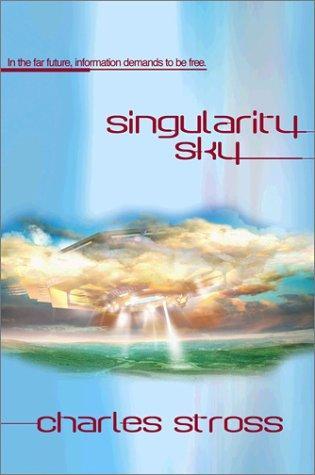
Singularity Sky
by
Stross, Charles
Published 28 Oct 2003
They are Festival's antithesis, do you not feel this in your whiskers?" Sister Seventh blinked redly at She Who Observes, pawing for the control tree of the somatic bench. "Here we see a nestdrone." The scene slewed into an enclosed space, following the abducted cobbler into the walls of the castle, "Phenotypic dispersal leads to extended specialization, as ever, with the usual degree of free will found in human civilization. But this one is structured to prevent information surge, do you not see?" "Information surge? Prevented? Life is information!" Sister Seventh farted smugly. "I have been monitoring the Festival.
…
Trees and grass had exchanged leaves, so that now they walked on a field of spiny pine needles, while flat blades waved overhead; the leaves were piebald, black and green, with the glossy black spreading. Most disturbingly of all, the shrubbery seemed to be blurring at the edges, species exchanging phenotypic traits with unnatural promiscuous abandon. "What's responsible for this?" Burya asked Sister Seventh, during one of their hourly pauses. The Critic shrugged. "Is nothing. Lysenkoist forestry fringe, recombinant artwork. Beware the Jabberwocky, my son. Are there only Earth native derivations in this biome?"
…
"You asking me?" Rubenstein snorted. "I'm no gardener." "Guesstimation implausible," Sister Seventh replied archly. "In any event, some fringeworks are recombinant. Non human-centric manipulations of genome. Elegant structures, modified for nonpurpose. This forest is Lamarckian. Nodes exchange phenotype-determinant traits, acquire useful ones." "Who determines their usefulness?" "The Flower Show. Part of the Fringe." "What a surprise," Burya muttered. At the next stop, he approached the rabbit. "How far?" he demanded. The lagomorph sniffed at the breeze. "Fifty kilometers? Maybe more?"

Neurodiversity at Work: Drive Innovation, Performance and Productivity With a Neurodiverse Workforce
by
Amanda Kirby
and
Theo Smith
Published 2 Aug 2021
Two recent papers in the past few years have exemplified the need to consider how services are delivered and are really saying we need to move away from the strict categorization and medical model of psychiatry and paediatrics. The recent consensus paper on identification and treatment of ADHD and ASD5 and the seminal paper from Thapar, Cooper and Rutter6 both highlight the real clinical conundrum of ‘the complexity of clinical phenotypes and the importance of the social context’. A phenotype means the challenges or strengths that someone can observe in someone. They go on to argue ‘the importance of viewing neurodevelopmental disorders as traits but highlight that this is not the only approach to use’. Moving away from the medical model approach to a more social model produces real emotions in both parents and adults, with some people wanting to be known as autistic and being defined as such and others not wanting a diagnosis or to be defined by one label.
…
Access to Work scheme (DWP, UK) 15, 91, 93, 99, 114, 122, 163, 183, 193 acquired brain injury (ABI) 294 ADHD (attention-deficit/hyperactivity disorder) 282–83, 294 access to support and services 41–42 hyperactive/impulsive type 70 inattentive (dreamy) type 70 male bias in diagnostic criteria 69–71 parenting style and 23 spiky profiles 45–54 adjustments see reasonable adjustments; workplace adjustments Admiral Insurance, inclusive culture (case study) 228–31 adversity, cumulative adversity over time 68–71, 84 affinity 224 AI assessment 57, 153 air traffic controllers, pre-selection testing 155 Amazon 57 Applied Behavioural Analysis (ABA) 261 apprenticeships 125–36 Argyris, Chris 263 ascertainment bias 69–70 ASD see autism spectrum disorder Asperger, Hans 32 Asperger’s syndrome (AS) 32, 128–29, 294 Aspire2inspire Dyslexia CIC 71–72 assessment (related to recruitment) 137 approach to assessments and skill tests 149–51 assessment paradigm 56–57 future developments 151–56 game-based assessments 152, 153–54, 155 use of work samples 146, 147, 149 validity of methods used 143–47 when hiring diverse talent 147–49 assessment, diagnostic see diagnosis attention deficit disorder (ADD) 294 auditory discrimination 294 Austin, Paul 193–95 autism-friendly companies, Autotrader (case study) 87–91 autism spectrum condition (ASC) 284–86 autism spectrum disorder (ASD) 32, 284–86, 294–95 male bias in diagnostic criteria 69–71 parenting style and 23 spiky profiles 45–54 stereotyping of people with 44 variability within the diagnosis 41 Autotrader (case study) 87–91 Bandura, Albert 50 Banji, Milimo 82, 237–39 Barrett, Lincoln (AKA High Contrast) 26–27, 63–66, 236 barriers to entry 62, 75, 79 Barron, Christopher 203 BBC, Cape neurodiversity initiative (case study) 203–07 Beetham, Janette 242–44 belonging and inclusion 224–25 bias awareness of developmental coordination disorder (dyspraxia) 70–71 in the recruitment process 114–15, 143–47 Billington, Paul 228–31 biopsychosocial model 33, 165–66, 295 Blau, Abram 30 blended working 114 Blume, Harvey 5, 298 Boorman, Bill 54–55, 81 brain scans 153 British Sign Language 214 Bronfenbrenner, Urie 33 Brookes vs the Government Legal Service (2017) 101 bullying in school 26, 198 Buro Harpold 249 CAI, Autism2Work (A2W) programme (case study) 128–29 camouflaging 70, 295 case studies becoming autism-inclusive at Microsoft 127 CAI Autism2Work programme 128–29 Dyllan Rafail 193–96 Elizabeth Takyi 71–72 Helen Arnold Richardson 75–77 Helen Needham (neurodiversity inclusion at work) 179–81 Hunter Hanson (perspective on interviews) 138–40 inclusive culture at Admiral Insurance 228–31 interviewing and selection methods (Kangas and Vlastelica) 143–45 Jenny McLaughlin 123–24 Leena and Sean at the BBC 203–07 Lincoln Barrett (AKA High Contrast) 63–66 Ravensbourne University 250–52 Shelley Winner 77–81 Umbrella Project, ADHD Foundation 123–24 untapped potential at IBM 193–96 categorization, implications of categorizing people 40–44 champions misuse of 261–62, 266 role of neurodiversity champions 239–42, 243–44 change management, MAD abilities and 52–53 Choudhury, Atif 268–71 chronic tic disorder (CTD) 295 Cleaton, Mary 23 Cockayne, Anne 141, 198–99, 201–02 communication, synchronous and asynchronous 134–35 communities, building and engaging with 236–39, 244 comorbidity 295 compensating 295 ComputerAid 116 conferences after the event 215 ask delegates for ideas about adjustments or specific support 212–13 break and lunch times 215 content and form of the day 214–15 data confidentiality 215 feedback from attendees after the event 215 guidance for presenters 213 key points 220 on the day 214 planning the conference 212 planning to be neuroinclusive 209–15 speakers and form of delivery 211–12 the space and the place 213 Universal Design 213 when you do not know anyone there 209–10 contract work 116 co-occurrence of medical conditions 43, 295 Cooper, Ross 254 Corrie, Clare 202–03 Covey, Stephen 28 Covid-19 pandemic, impacts of 13, 119–20, 153 creative industries, neurological diversity in 236–37 creative thinking, spiky profiles and 44, 52 Crenshaw, Kimberlé 84 criminal activity, loss of potential talents to 74–75 culture add 147–48 culture fit 147–48 Deficits in Attention, Motor Control and Perception (DAMP) 43 Delaney, Diane 195 Deloitte 12 developmental coordination disorder (DCD) 70–71, 288–89, 295 developmental dyscalculia see dyscalculia developmental dyslexia see dyslexia developmental language disorder (DLD) 73–74, 289–90, 295–96, 296–97 diagnosis access to support and services 31, 41–43 challenging the validity and usefulness of labels 29 cumulative lifetime effects of lack of identification 71–72 heterogeneity within labels 43 homeless people and rough sleepers 73 impact of a later diagnosis 34–36, 71–72 implications of categorizing people 40–44 male bias in diagnostic criteria 69–71 medical versus social model 22–23 positive and negative aspects of 32–34 reasons for missed diagnosis in childhood 72–74 reasons why people miss out on 68 uncertainty and diversity within categories 41 under-represented groups 72–73 undiagnosed people in prisons 73–74 waiting times for diagnostic assessments 42 why we like labels 28–29 Diagnostic and Statistical Manual of Mental Disorders (DSM) 31–32, 296 diagnostic classification systems 31–32 digital assessment technology 154–55 digital poverty 154–55 direct discrimination 100, 101–02 disability concept in the social model 95–96 definition in the Equality Act (2010) 97–98 disclosure of 98–99, 160–61, 197–98, 199 Disability Confident employers 121 Disability Discrimination Act (1995) 95 disability employment gap 12–13 disclosure of disability 98–99, 160–61, 197–98, 199 discrimination by association 102 direct discrimination 100, 101–02 Human Rights Act (1998) 104 indirect discrimination 101–02 key legislation against 95–99 diversity 225 business case for 225 business performance and 12 definition of 222–23 Diversity and Ability (D&A) 268–71 diversity policy 117 DNA assessments 153 Do-IT Neurodiversity Profiler 45–46, 56, 76–77 Doyle, Nancy 257–68 Drucker, Peter 16 DSM see Diagnostic and Statistical Manual of Mental Disorders dyscalculia 176, 287–88, 296 dysgraphia 296 dyslexia 286–87, 296 assessment paradigms and 56–57 diagnostic uncertainties 41 Elizabeth Takyi (case study) 71–72 rates among people in prisons 48, 50 spiky profiles 45–54 stereotyping of people with 44 dyspraxia 296 see also developmental coordination disorder (DCD) Early Symptomatic Syndromes Eliciting Neurodevelopmental Clinical Examinations (ESSENCE) 43 education reasons for lack of educational progress 72 reasons why people miss out on 68–71 ‘school to prison’ pipeline 73–74 Education, Health and Care Plan (ECH) 296 Edwards, Rob 253–54 eliminating kryptonite (removing barriers to entry) 62 elitism 258–59, 263 emotional intelligence 224 empathy 114–15, 118, 224 employers ‘ban the box’ campaign 75 criminal record background checks 75, 79–80 duty under the Equality Act (2010) 96 equality provision legislation 13–14 ethical, moral and legal responsibilities 12–13 job adverts and attracting new talent 14 neuro-complementary teams 16 neurodiversity among your current employees 117–18 positive action 99 responsibility to make workplace adjustments 163 retaining the talent that you have 14–15 scenarios to test neurodiversity knowledge and actions 109–10 untapped potential of neurodiverse talent 15–16 why they should be more neuro-inclusive 12–16 see also reasonable adjustments; workplace adjustments employment see recruitment entrepreneurs, neurodiverse talent 15, 252–55 Equal Pay Act (1970) 95 equality definition of 158, 222 distinction from equity 158, 222 Equality Act (2010) UK 13, 92, 95–99, 160–61 disclosure of disability 98–99 duty of employers 96 harassment 102–03 main features of 96–97 protected characteristics 96–97 reasonable adjustments 96 victimization 103–04 what is included as a disability 97–98 equity 158, 222, 225 Evenbreak 116 Exceptional Individuals 116 executive function 296 executive function deficit 296 expressive language 296 expressive language disorder 296–97 eye contact 114–15, 141 Facebook 261 family life, strain of long waiting times for diagnostic assessments 42 Fitzgerald, F Scott 22 Fraser, Keith 34–36, 72 future of work 247–55 balancing out neurodivergent strengths and challenges 254–55 educational preparation for 250–52 entrepreneurship and neurodiversity 252–55 inclusive environments and accessibility 249–50 key points 255 Ravensbourne University (case study) 250–52 Gallup vs Newport City Council (2013) 92 game-based assessments 152, 153–54, 155 gender bias consequences for many undiagnosed adult females 71–72 diagnosis of neurodivergent traits 69–71 language used in job descriptions 118–19 perceived differences in neurodivergent traits 69–71 view of divergent behaviours in others 70 Genius Within CIC 257, 263–64 Google, Project Aristotle 228 Grant, Adam 156 Grayling, Chris 50 groupthink 148 Hacking, Ian 30 Hanson, Hunter, perspective on interviews (case study) 138–40 harassment 102–03 Health and Safety at Work etc Act (1974) 104–05 Heathrow Airport, Disability Network 123–24 Hewitt, Jean 249–50 Hewlett, Katherine 254 hidden disability sunflower scheme 90 High Contrast (electronic music producer and DJ) see Barrett, Lincoln Highhouse, Scott 144 hiring managers, supporting those with spiky profiles 55 hiring schemes 125–36 Hobbs, Lucy 236 homeless people and rough sleepers 73, 81 hot desking 120, 169 Human Rights Act (1998) 104 hyperactivity 297 IBM, untapped potential (case study) 193–96 ICD see International Classification of Diseases impulsive behaviours 297 inclusion Alan Kriss and inclusive talent management 271–73 Atif Choudhury and Diversity and Ability (D&A) 268–71 changing concept of neurodiversity 256–57 definition of 221–22 diversity and 222–23 diversity and inclusion champion Paul Sesay 273–78 Nancy Doyle on neurodiversity at work 257–68 Inclusive Companies 273, 274, 275 inclusive workplace 221–44 Admiral Insurance (case study) 228–31 all-inclusive approach 223–25 belonging and inclusion 224–25 big companies and small companies 242–44 bringing your whole self to work 228 building and engaging with communities 236–39, 244 business case for diversity 225 caring has currency 225 defining inclusion 221–23 future of 247–55 how to be inclusive 227 how to succeed as 225–28 influence on employee wellbeing 224–25 neurodiversity awareness training 242–44 neurodiversity champions 239–42, 243–44 neurodiversity networks 231–35, 243–44 recruitment and 224 support groups 227 valuing and respecting differences 223–25 indirect discrimination 101–02 individual development plan (IDP) 297 induction 183–96 Access to Work scheme 193 appropriate and timely support 183–85 changes over time 192 clarify what the job is and what the rules are 190–91 considerations when carrying out 190 finding your way around 191–92 getting started 190 getting support in place 192 integration into the workplace 188–89 key points 196 level of involvement of the new employee 193 mentoring support 192–93 neurodiversity awareness training 189–90 neurodiversity champions 192–93 ‘non-rules’ (unspoken rules) of the organization 191 preparation for the start of a new job 183–85 purpose of 185–88 see also onboarding induction meeting 167 intellectual disability (ID) 297 International Classification of Diseases (ICD), WHO 31, 297 International Classification of Functioning, Disability and Health (ICF), WHO 33, 166 International Labour Organization 95 internships 125–36 intersectionality 29, 84 interviewers, check your internal dialogue 150–51 interviews 137–56 designing the interview process 137–38 future developments 151–56 hurdles faced by candidates 137–38 identifying the important skills for a role 142–45 myth of the perfect candidate 140–41 perspective of Hunter Hanson (case study) 138–40 remote interviewing 138 structured interviews 146 validity of interviewing and selection methods 143–47 IQ (intelligence quotient) 297 job adverts 118–20, 122 job crafting 202 Kangas, Mathea 142–45 Kanner, Leo 23 Kelly, Kirstie 1–2 kinaesthesia 297 Klass, James 274 Kriss, Alan 271–73 Kumulchew v Starbucks Coffee Company UK Ltd (2017) 101 labels 21–37 access to support and 22 biases relating to 23 challenging the terminology 27–28 challenging the validity and usefulness of 29 changes over time 31–32 changing perceptions of human variability 30–31 definition and scope of neurodiversity 24–27 diagnostic classification systems 31–32 enabling conversations about neurodiversity 22–24 getting the terminology right or wrong 23–24 impact of a later diagnosis 34–36 positive and negative aspects of diagnosis 32–34 social perceptions of 32–33 why we like them 28–29 see also categorization; diagnosis language changing perceptions of human variability 30–31 different meanings of words to different people 27–28 labels 21–37 learning disabilities and difficulties (LDD) 297 learning disability (LD) 297 left-handedness, changing perceptions of 30–31 legislation equality provision 13–14 importance that employers know about 96 workplace policies and procedures 86–111 Leonard, Jamie 1 line management BBC neurodiversity initiative (case study) 203–07 confidentiality issue 200–01 discussion with the wider team 200–01 employee decision about disclosure to 197–98 employee diagnosis disclosure and access to support 199 having good conversations with employees 197–207 key points 207 learning from shared experiences 203 making reasonable adjustments 201–02 role of HR in guiding the manager 200 starting a conversation and getting it right 198–207 support for managers 199–200 training in relation to neurodiversity 107, 201–03 LinkedIn 202–03 literacy difficulties, factors contributing to 50 MAD abilities (Moving Attitudes towards Diverse abilities) 46–53 managers see line management masking 70 McDowall, Almuth 264 McGrath, James 44 McLaughlin, Jenny (case study) 123–24 McLeod vs Royal Bank of Scotland plc (2016) 100 medical model 22–23, 31, 43, 298 meetings consider recording meetings 219 consider who has not participated and the reasons why 219 copies of meeting notes or presentations 219 face-to-face meetings 216–17 gain feedback about being inclusive 219 have a facilitator 218–19 key points 220 length of the meeting 218 offer closed captioning 219 offer different ways to ask questions 219 online meetings 217–19 planning to be neuroinclusive 209–10, 216–20 provide information before the meeting 218 set the ground rules at the start 218 webinars 217–19 mental health first aiders (MHFAs) 242, 266 mental retardation 298 Microsoft 91 becoming autism-inclusive (case study) 127 Milton, Damian 114 Minimal Brain Dysfunction 43 misophonia 298 mixed receptive-expressive language disorder 298 Muench, Nick, Autism2Work programme (case study) 128–29, 130 multiple tic disorder 290–92 music industry, neurological diversity in 236–37 National Autistic Society (NAS) 87–91 National Diversity Awards 273, 274–75 Needham, Helen (case study) 179–81 neurodevelopmental disorders (NDD) 298 neurodisability (ND) 298 neurodivergence 25, 298 neurodiversity 298–99 as variability of human brains 40 categorization and 40 changing concept of 256–57 definition and scope of the concept 24–27 diagnostic uncertainties 41 Judy Singer’s concept of 278 origin and meaning of the term 2–6 prospects for the future 279 scenarios to test employer knowledge and actions 109–10 strengths and challenges approach 42–44 understanding among university students 82–83 what the concept means to different people 16–19 why it is important for organizations 10–19 neurodiversity policy 117 neuroqueer 299 neurotypical 25 NICE (National Institute for Health and Care Excellence), UK 164, 227 non-stimulant medicines 299 Nothing About Us Without Us 239 obsessive-compulsive disorder (OCD) 299 Offord, Jennifer 231–33 onboarding 133–34, 183–85, 196 see also induction parenting and neurodiversity in children 23 PAS 6463: ‘Design for the Mind: Neurodiversity and the built environment’ (BSI) 250 performance appraisals 105–08 adaptations for a dyslexic employee (possible scenario) 110 dealing with poor work performance (possible scenario) 109 person-centred approach 165–66 personality assessments 146 pervasive developmental disorder – not otherwise specified (PDD-NOS) 299 phenotypes 43 phoneme 299 phonology 299 pragmatics 299 pre-employment stage, loss of cognitively diverse demographics 68–84 prison population employment challenges after release 74–75, 79 Helen Arnold Richardson (case study) 75–77 levels of undiagnosed DLD 73–74 rates of neurodiverse traits 48, 50 ‘school to prison’ pipeline 73–74 Shelley Winner (case study) 77–81 Pritchard, Gary 250–52 proprioception 299 psychological safety 228 psychometric assessments 53–54, 101, 147 psychostimulant medicines 299 PwC 223 Race Relations Act (1976) 95 Rafail, Dyllan (case study) 193–96 Ravensbourne University (case study) 250–52 reasonable adjustments (made by employers) 15, 24–25, 100, 103, 116, 117, 121 duty of employers 96 individual situations 201–02 performance appraisals and 105–07, 110 see also workplace adjustments receptive language 299 Recruiting Toolbox 142–45, 148 recruitment process accessibility of the application process 120 alternative application process 120 alternative working arrangements 119–20 alternatives to a CV 121 assessment paradigms 56–57 attracting neurodiverse talent 113–24 bias in 114–15 bidirectional communication strategy 114–15 candidate experience 114–15 candidates’ confidence to sell their strengths and abilities 56 challenges for neurodiverse candidates 129–30 challenges for people with spiky profiles 53–58 challenges of looking for a job 113 check for inadvertent bias in job adverts 122 disability employment gap 12–13 general guidelines 117–22 impact of having a criminal record 74–75, 79 inclusion and 224 information about your company 122 job descriptions 113 key points 124 language used in job adverts 118–20, 122 language used relating to work 113 making workplaces more inclusive 1–2 means of disclosure of support needs 121 recognition of different strengths 54–58 rethinking how we recruit 151–56 supporting those with spiky profiles 55 technology to support recruitment and HR 122 Umbrella Project (case study) 123–24 untapped potential at IBM (case study) 193–96 use of consultants and advisory/support groups 118 validity of interviewing and selection methods 143–47 ways to encourage neurodiverse applicants 116 website accessibility 120 why some people are excluded 11–12 working from home 119–20 see also apprenticeships; hiring schemes; internships; interviews; work placements references, writing for an employee with disabilities (possible scenario) 109–10 referral, gender bias in 69–70 Richardson, Helen Arnold (case study) 75–77 Right Resources 242 Robbins, Mike 228 Robison, John Elder 114–15 rough sleepers 73 Saxon, Yvonne 92–94 Sayers, Dorothy L 40 self-confidence 26, 56 self-efficacy 50 self-stimulatory behaviour 300 semantics 300 seminars, neuroinclusive 209–10, 217–19, 220 Sesay, Paul 273–78 Sex Discrimination Act (1975) 95 Singer, Judy 5, 262, 278, 298 Skarsgård, Stellan 154 small and medium-sized enterprises (SMEs), entrepreneurship and neurodiversity 252–55 social identity, intersectionality and cumulative adversity 84 social media, building and engaging with communities 236–39, 244 social model 22–23, 43, 95–96, 300 Sonne, Thorkil 194 Specialisterne Foundation 116, 193–96, 271–73 specific communication and language needs (SCLN) 289, 296 specific language impairment (SLI) 289, 296, 300 specific learning disability/difficulty (SpLD) 300 spiky profiles 45–58 challenge of the traditional recruitment process 53–58 creative thinking and 44, 52 definition of 40, 45 Do-IT Neurodiversity Profiler 45–46 MAD abilities 46–53 recognition of different strengths 54–58 staff networks 231–35, 243–44 stereotyping 33, 44, 70 stigma 6–8 stimming 300 strengths and challenges, enabling strengths 62–66 see also spiky profiles Sun Tzu 3 sunflower lanyards 123 superheroes, enabling neurodiverse abilities 61–67 superpowers, view of neurodiversity 61–62 support, access to 41–43, 62–84 synesthesia 65–66, 300 Takyi, Elizabeth (case study) 71–72 TapIn organization 82, 237 team working 16, 113–14, 147–48, 228 technology assistive technology 162 IT support strategies 178 opportunities for workplace adjustments 161–62 tools to support recruitment and HR 122 terminology see labels Thompson, Ed 1–2 tic disorders 300 tic spectrum disorder 290–92 tics 301 tokenism 262–63, 264–65 Tourette’s syndrome (TS) 290–92, 301 training champions training 243–44 neurodiversity awareness training 189–90, 201–03, 242–44 staff networks training and support 243–44 traumatic brain injury (TBI) 301 TRUFeeds case study 81 Tsaprounis, Christos 87–91 Umbrella Project, ADHD Foundation 123–24 United Nations, Agenda for Sustainable Development 3–4 Universal 236–37 Universal Design principles 199, 213 universities, understanding of neurodiversity 82–83 van de Haterd, Bas 151–54 Vermeesch, Michael 127 Veulliet, Yves 195, 196 victimization 103–04 Vlastelica, John 142–45, 148 von Koëttlitz, Raphaele 268 webinars 217–19 websites, readability of 170–73 Welch, Florence 236 Wells v the Governing Body of Great Yarmouth High School (2017) 102 Whyte, William H 17 Williams, Andrew 193–95 Williams, Robin 48, 154 Winner, Shelley (case study) 77–81 Wolchin, Rachel 57, 164 work placements 122, 125–36 working from home, neurodiverse advantages and disadvantages 248–49 working memory 301 working memory deficit 301 working remotely 16, 119–20, 170, 247–48 workplace bidirectional communication strategy 114–15 in-work support, Access to Work scheme 122 onboarding processes 113–14 understanding the ‘social rules’ 113–14 see also inclusive workplace workplace adjustments 158–81, 260, 262 Access to Work scheme (UK) 163 arriving at work 168 aspects to consider 164–65 biopsychosocial approach 165–66 consider the individual context 166–67 determining what is reasonable 162–63 distinction between equality and equity 158 employer awareness of duty under the Equality Act (2010) 160–61 examples of 161–62 generic principles 167–81 getting started 163–64 Helen Needham (case study) 179–81 helpful apps and software 178 home working 170 induction meeting 167 IT support strategies 178 key points 181 neurodiversity inclusion at work (case study) 179–81 office working 169 opportunity for innovation and inclusion 159–60 person-centred approach 165–66 responsibility to make the adjustments 163 supporting someone with coordination challenges 176–77 supporting someone with literacy-related challenges 177–78 supporting someone with numeracy challenges 176 supporting someone with organizational challenges 174 supporting someone with social, language and communication challenges 174–76 thinking about accessibility in all that you do 170–73 timely placement of 173 travel to work 168 Universal Design principles 170 use of technology 161–62 websites and written materials 170–73 what they are 160–65 wider positive impacts of 159–60 wording of statements about 164 work environment 168–70 see also reasonable adjustments workplace policies and procedures approach to putting in place 100–05 Autotrader (case study) 87 focus on individual needs 91 key legislation 95–99 key points 110–11 legal issues 86–111 performance appraisals 105–08 putting the policies and procedures in place 92–94 written materials, readability of 170–73 YouTube, ‘The Life Autistic’ video diaries (Hunter Hanson) 138 Publisher’s note Every possible effort has been made to ensure that the information contained in this book is accurate at the time of going to press, and the publishers and authors cannot accept responsibility for any errors or omissions, however caused.
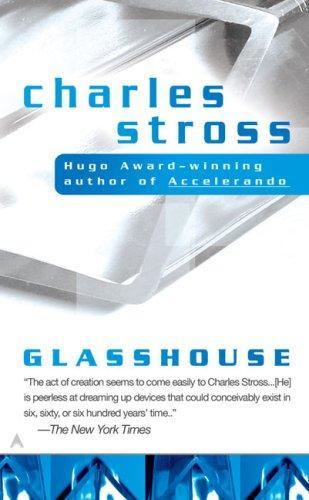
Glasshouse
by
Charles Stross
Published 14 Jun 2006
There's a certain type of look some postrehab cases get while they're in the psychopathic dissociative stage, still reknitting the raveled threads of their personality and memories into a new identity. The insensate anger at the world, the existential hate—often directed at their previously whole self for putting them into this world, naked and stripped of memories—generates its own dynamic. Wild blackeyed hatred and the perfect musculature of the optimized phenotype combine to lend Blondie an intimidating, almost primal presence. Nevertheless, she's got enough self-control to issue a challenge before she attacks. Kay, shy and much further advanced in recovery than either of us, cowers in her seat as Blondie glares at me. That annoys me—Blondie's got no call to intimidate bystanders.
…
Reeve, are you having another fugue?" Things are going gray around me. He leans close, and I whisper, "* * *," in his ear. Then— DESPERATION is the engine of necessity. It's two hundred megs since that committee meeting with Al and Sanni and a lot of things have changed. Me, for example: I'm not in military phenotype anymore. Neither is Sanni. We're civilians now, corpuscles of military experience discharged into the circulating confusion of reconstruction that has become the future of Is. I'm not used to being human again, ortho or otherwise—bits of me are missing. When the war exploded, trapping me on the MASucker for almost a generation, I was reduced to what I was carrying on my person and in my head.
…
Her name's Andy—short for Andromeda. She swears she wants to be a boy when she grows up; she isn't going to hit puberty for another six years, and she may change her mind when her body starts changing. The important thing is we live in a society where she can be whatever she wants. She looks like a random phenotypic cross between Reeve and Sam, and sometimes when I see her in the right light, just catching her profile, my breath catches in my throat as I see him diving off that cliff. Did he know I was already pregnant when he carefully made sure I was out of harm's way, then jumped? It shouldn't be possible, but sometimes I wonder if he suspected.
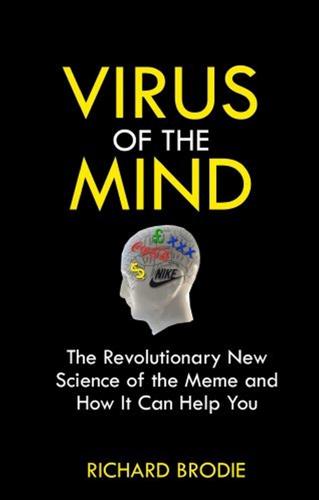
Virus of the Mind
by
Richard Brodie
Published 4 Jun 2009
But we want to be clear that memes are internal representations, as in the psychological definition. And we want to look at memes as ideas— as our software, our own internal programming—that produce an effect on the outside world, as in the cognitive definition. The result is the definition I use in this book, a definition similar to the one Dawkins adopted in his 1982 book The Extended Phenotype: Definition of Meme A meme is a unit of information in a mind whose existence influences events such that more copies of itself get created in other minds. Now, with this definition, we can answer the questions I asked Charles Simonyi and Greg Kusnick back at Microsoft. Is a yawn a meme? No, a yawn is behavior and, as far as I know, has nothing to do with an internal representation of any information.
…
See gambling, psychology of 237 virus of the mind brains changing world and, 83–84 purposes of, 69–71 Bulgatz, Joseph, 197 Buss, David: Evolution of Desire, 99 Butler, Samuel, 17 button-pushing memes advertising and, 152–53 birds of a feather and, 116 cheap insurance and, 118–19, 121, 122, 181 crisis and, 146, 188 dominance and, 189 elitism and, 116 food and, 188 helping children and, 115–16, 120, 146, 160 problems and, 189 racism and, 116 security and, 188 sex and, 189 special interests and, 176–77 windows of opportunity and, 107, 130, 146, 172, 198 buttons, second-order, 77–79 approval and, 78 belonging and, 77–78, 189 caring and, 78 distinguishing yourself and, 78 obeying authority and, 78 Celestine Prophecy (Redfield), 208 chain letters, 85–87 children, 67 altruism and, 115–16 consciousness and, 228–29 education and, 223–29 mind viruses and, xix, 46, 145 operant conditioning and, 129 238 Index religion and, 128 See also under button-pushing memes Cleary, Thomas, 217 Coca-Cola, 21, 129, 153 cognitive dissonance, 126–27, 130–31, 143, 203 cognitive therapy, 8 communication, evolution of, 71–72 confidence games, 140–42 Congreve, William, 81 consciousness, 76–77, 228–29 conspiracy theories, 162–64 crisis meme, 72–73 Crossfire, 161 cults key elements of, 201 mission and, 202 cultural viruses conspiracy theories and, 162–64 government and, 170–79 institutions and, 147–48 journalism and, 159–61, 164–67 panhandling and, 169–70 pets and, 168–69 television and advertising and, 149–51 danger meme, 73 Darwin, Charles, xiii, xxi, 111 Dawkins, Richard, 47 Blind Watchmaker, 191 Extended Phenotype, 11 Selfish Gene, 4–5 selfish-gene theory and, 51 Dennett, Daniel, 8–9 Diet Pepsi, 153–54 distinction-memes, 19–21 money and, 27 239 virus of the mind perception and, 29–30 distinguishing yourself, 78 DNA genetic evolution and, 53–56, 58–59 viruses and, 40–41 drives, basic. See basic drives education, reinvention of, 225–29 Ellis, Albert, 8 Emerson, Ralph Waldo, 147, 205 Self-Reliance, 81–82 est, 208–9 ethical questions, 211–12 evangelism, 80, 146, 183, 187, 200, 205 virus shells and, 207 evolution battle for sex and, 90–91 communication and, 71–72 concept of, xvi consciousness and, 76–77 definition of, 49 direction of, 56, 67, 85–86 engineering and, 57–59 entropy and, 48–49 fitness and, 50–51 general tendencies versus specific individuals and, 95 human eye and, 57, 58 memes and, 85–86 natural selection and, 48–49 replicators and, 49–50 selfish gene and, 51–53, 55, 62 selfish meme and, 67–68 sex characteristics and, 91–95 evolutionary psychology, 18, 88, 89 concept of, xvi exponential growth, 39 240 Index faith meme, 81 familiarity meme, 81 fear altruism and, 115–17 bad decisions and, 123 evolution and, 112–14 modern life and, 114–15 overcoming of, 123–24 revulsion and, 112 superstition and, 121–23 urban legends and, 120–21 Feynman, Richard, 89 fitness evolution and, 50–51 memes and, 71–74 Forum, The, 208–9 four F’s.

Life at the Speed of Light: From the Double Helix to the Dawn of Digital Life
by
J. Craig Venter
Published 16 Oct 2013
34 Artificial life as originally conceived has had a new virtual life in the form of games and movies, with the murderous Hal 9000 of 2001: A Space Odyssey, the genocidal Skynet of the Terminator films, and the malevolent machines of The Matrix. However, the reality still lags far behind. In computer-based artificial life there is no distinction between the genetic sequence or genotype of the manufactured organism and its phenotype, the physical expression of that sequence. In the case of a living cell, the DNA code is expressed in the form of RNA, proteins and cells, which form all of the physical substances of life. Artificial life systems quickly run out of steam, because genetic possibilities within a computer model are not open-ended but predefined.
…
The more DNA we added, the greater the number of transplant colonies that resulted. So what was it, exactly, that we now had? Was it M. capricolum cells that contained only the M. mycoides DNA, including the added lacZ and antibiotic-resistance tetracycline resistance tetM genes? What had changed in the wake of the genome transplant? What was the phenotype of cells derived from the transplanted DNA? We subjected the blue cells to a number of complex analytical procedures to find out what proteins were present. Using antibodies that were exquisitely sensitive to proteins in each parent-cell type, we investigated what the new transplant cells had on their cell surface.

The Autistic Brain: Thinking Across the Spectrum
by
Temple Grandin
and
Richard Panek
Published 15 Feb 2013
One reason is that even when the genotype—the DNA at conception—is identical in both twins, the genes might work differently inside the cell. The other reason is that the genotypes might not be identical at birth, due to spontaneous mutations in the DNA of one or both of the twins. Both sets of genetic differences contribute to an individual’s phenotype—the person’s physical appearance, intellect, and personality. Knowing that genetics plays a role in autism, of course, is only a start. The next question is, Which gene or genes? Even into the early years of the twenty-first century, some researchers held out hope that autism might be the result of one or just a handful of gene deviations in an individual’s DNA.
…
See pervasive developmental disorders (PDD) pervasive developmental disorders (PDD), [>]–[>], [>]. See also Asperger syndrome; autism spectrum disorder (ASD) pervasive developmental disorders not otherwise specified (PDD-NOS), [>], [>]–[>], [>], [>], [>] pesticide exposure, [>] pharmacological treatment. See antidepressants; drugs phenotype, [>] Physical Therapy (journal), [>] picture thinking. See also pattern thinking; verbal (word-fact) thinking; visual (picture) thinking education and, [>]–[>] employment and, [>], [>], [>], [>]–[>] plasticity of brain, [>]–[>] Pollock, Jackson, [>] prefrontal cortex, [>] psychoanalytic approach to diagnosis, [>]–[>] public views of autism, [>], [>]–[>] Pythagorean theorem, 147–[>], [>] Rajarshi Mukhopadhyay, Tito, [>]–[>], [>]–[>], [>], [>] Raven’s Progressive Matrices, [>]–[>], [>]–[>] reading.

Culture Warlords: My Journey Into the Dark Web of White Supremacy
by
Talia Lavin
Published 14 Jul 2020
A third posted six pictures of me, juxtaposed against a crude diagram of homo neanderthalus. They were mostly old Twitter profile pictures: one from a photo session I’d done for a small Brooklyn blog and another from a 2015 appearance on Jeopardy!, my awkward smile inches from Alex Trebek’s weathered, handsome face. “Neanderthal phenotype certainly isn’t defined by the skull shape alone,” wrote the anonymous user, below the photos of me. “Their body tended to be wide and broad and robust in comparison to more modern types such as Cro-Magnon.” I looked down at myself and wondered if this was the reason I’d had so little success dieting.
…
In a similar incident in June and July of 2018, students at Yeshiva University, an Orthodox Jewish university in New York City, were horrified to find that thousands of their photos had been harvested from YU’s Flickr page and other public sources and posted on the neo-Nazi site Vanguard News Network. In sprawling threads, commenters on the Vanguard News Network sought to determine the “phenotype” of the Jew, used racially disparaging terms like Juden, and added pictures of students from Yeshiva University–affiliated high schools. According to the YU Commentator, the university’s student paper, “There are countless photos of babies, couples and the elderly on the thread.” One female student at Stern College, Yeshiva University’s all-women sister school, told the Commentator that finding her photo being mocked by neo-Nazis made her feel targeted, unsafe, and small—a feeling I knew well.
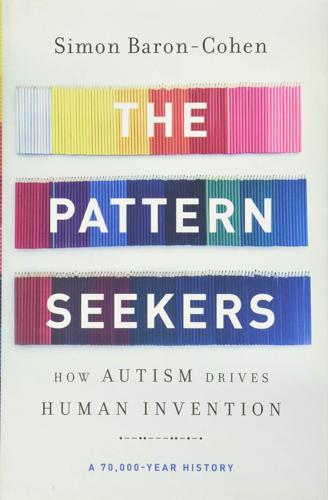
The Pattern Seekers: How Autism Drives Human Invention
by
Simon Baron-Cohen
Published 14 Aug 2020
,” Autism 1, 101–108; and R. Grove et al. (2015), “Exploring the quantitative nature of empathy, systemising, and autistic traits using factor mixture modelling,” British Journal of Psychiatry 207, 400–406. 3. See S. Baron-Cohen and J. Hammer (1997), “Parents of children with Asperger syndrome: What is the cognitive phenotype?,” Journal of Cognitive Neuroscience, 9, 548–554; G. Windham et al. (2009), “Autism spectrum disorders in relation to parental occupation in technical fields,” Autism Research 2(4), 183–191. 4. Jim Simons became chair of Stony Brook University’s math department at age thirty. He and Shiing-Shen Chern published the landmark Chern-Simons invariants, which have applications in quantum field theory, condensed-matter physics, and even string theory.
…
Note that all three of these explanations for assortative mating in autism could be correct and be happening simultaneously: hyper-systemizers of opposite sexes could be moving to the same location and find themselves in a smaller pool of possible mates because of social skills and be attracted to a like-minded person who loves details and if-and-then pattern seeking, just as they do. 17. See S. Baron-Cohen and J. Hammer (1997), “Parents of children with Asperger syndrome: What is the cognitive phenotype?,” Journal of Cognitive Neuroscience 9, 548–554; T. Jolliffe and S. Baron-Cohen (1997), “Are people with autism or Asperger syndrome faster than normal on the Embedded Figures Task?,” Journal of Child Psychology and Psychiatry 38, 527–534. CHAPTER 9: NURTURING THE INVENTORS OF THE FUTURE 1.

The Cult of Smart: How Our Broken Education System Perpetuates Social Injustice
by
Fredrik Deboer
Published 3 Aug 2020
Unfortunately for Palmer, he made a number of obvious errors and was forcefully rebutted in an open letter signed by a half-dozen eminent researchers in the relevant fields.11 Most importantly, if copy-number variation reduces the genetic similarity between identical twins, it suggests that genetic similarity is even more powerful, given the remarkable phenotypic similarity between such twins. Though committed hereditarians can be rather strident, especially online, established researchers arguing for the power of genetic influence tend to be quite forthcoming about legitimate methodological issues. In the same article in which he coined the Three Laws, Turkheimer expresses the basic challenge succinctly: Human developmental social science is difficult—equally so for the genetically and environmentally inclined—because of the (methodologically vexing, humanistically pleasing) confluence of two conditions: (a) Behavior emerges out of complex, nonlinear developmental processes, and (b) ethical considerations prevent us from bringing most human developmental processes under effective experimental control.
…
A major study utilizing a data set of thousands of test subjects revealed 52 variations in genotype that were associated with differences in intelligence.12 The actual effect sizes of the identified variations are tiny, accounting for fractions of IQ points. This lends further evidence to the notion that intelligence is a polygenic trait, with probably thousands upon thousands of variations contributing to observed differences in phenotype, and makes it even less likely that we will have a genetic test for (a predisposition toward) intelligence anytime soon. But the mere existence of statistically significant relationships between genotype and intelligence lends powerful validating evidence to kinship studies. In light of this study and others like it, Turkheimer, Kathryn Paige Harden, and Richard E.

Stamping Butterflies
by
Jon Courtenay Grimwood
Published 1 Jan 2004
Tapping the nearest, Chuang watched it open, waiting while the semiAI ran a self test. "Functioning," the pod announced as a glass square lit red. "Preparing for Koebe process." Slots opened on the inside of the pod to reveal simple claws; attached to those claws were clear tubes already filled with oily liquid. "Please enter phenotype." "What?" "Enter phenotype." "Human," Chuang Tzu said. The animals were long since dead. The glass square turned orange. "Enter seven-digit genotype," demanded the pod. "Shit." Chuang Tzu ripped open the front of the Doctor's blue uniform, looking for dog tags. "I don't know it," he said. "It's not for me."
…
Slicing the monofilament which bound Dr. Yuan's hands, he spun her round and sliced between her ankles. "Prepare to receive the body," he said. On the side of the pod the orange square reverted to red as the semiAI reset itself. "Functioning," the pod announced. "Preparing for Koebe process. Please enter phenotype." "Stupid fucking--" Chuang began but stopped himself. "Promote me," he said loudly, simultaneously reopening his comms channel. "What?" "Promote me," Navigator Chuang said fiercely, "while there's still time to save the Doctor." Two decks above, Colonel Commissar Lan Kuei sighed. Sleeping with junior officers always produced these kinds of problems.

The Journey of Humanity: The Origins of Wealth and Inequality
by
Oded Galor
Published 22 Mar 2022
Lycett, ‘Global geometric morphometric analyses of the human pelvis reveal substantial neutral population history effects, even across sexes’, PloS One 8, no. 2 (2013): e55909. Betti, Lia, François Balloux, William Amos, Tsunehiko Hanihara and Andrea Manica, ‘Distance from Africa, not climate, explains within-population phenotypic diversity in humans’, Proceedings of the Royal Society B: Biological Sciences 276, no. 1658 (2009): 809–14. Bignon, Vincent, and Cecilia García-Peñalosa, ‘Protectionism and the education-fertility trade-off in late 19th century France’ (2016). Bisin, Alberto, and Thierry Verdier, ‘The economics of cultural transmission and the dynamics of preferences’, Journal of Economic Theory 97, no. 2 (2001): 298–319.
…
Magga, Ole Henrik, ‘Diversity in Saami terminology for reindeer, snow, and ice’, International Social Science Journal 58, no. 187 (2006): 25–34. Maloney, William, and Felipe Valencia Caicedo, ‘Engineering Growth: Innovative Capacity and Development in the Americas’, no. 6339, CESifo Group Munich (2017). Manica, Andrea, William Amos, François Balloux and Tsunehiko Hanihara, ‘The Effect of Ancient Population Bottlenecks on Human Phenotypic Variation’, Nature 448, no. 7151 (2007): 346–8. Murtin, Fabrice, and Romain Wacziarg, ‘The democratic transition’, Journal of Economic Growth 19, no. 2 (2014): 141–81. Mathieson, Iain, Iosif Lazaridis, Nadin Rohland, Swapan Mallick, Nick Patterson, Songül Alpaslan Roodenberg, Eadaoin Harney et al., ‘Genome-Wide Patterns of Selection in 230 Ancient Eurasians’, Nature 528, no. 7583 (2015): 499–503.

Thinking in Bets
by
Annie Duke
Published 6 Feb 2018
But this comparison of our results to others isn’t confined to zero-sum games where one player directly loses to the other (or where one lawyer loses to opposing counsel, or where one salesperson loses a sale to a competitor, etc.). We are really in competition for resources with everyone. Our genes are competitive. As Richard Dawkins points out, natural selection proceeds by competition among the phenotypes of genes so we literally evolved to compete, a drive that allowed our species to survive. Engaging the world through the lens of competition is deeply embedded in our animal brains. It’s not enough to boost our self-image solely by our own successes. If someone we view as a peer is winning, we feel like we’re losing by comparison.
…
Published information about the Bartman play and its aftermath is plentiful, and the game and the play are available on YouTube. The behavior of the fans at Wrigley Field and the quotes appear in Alex Gibney’s 2014 ESPN Films documentary, Catching Hell. Other people’s outcomes reflect on us: For some of the places in which Dawkins has written about natural selection proceeding by competition among the phenotypes of genes, see Current Problems in Sociobiology and The Greatest Show on Earth, cited in the Selected Bibliography and Recommendations for Further Reading. For an examination of whether people would choose to earn $70,000 in 1900 or in 2010, see (and listen to) “Would You Rather Be Rich in 1900, or Middle-Class Now?

Immigration and Ethnic Formation in a Deeply Divided Society: The Case of the 1990s Immigrants From the Former Soviet Union in Israel
by
Majid Al Haj
Published 20 Nov 2003
One of the most widely cited definitions of ethnic group is that of Schermerhorn (1970: 12): An ethnic group is defined here as a collectivity within a larger society having real or putative common ancestry, memories of a shared historical past, and a cultural focus on one or more symbolic elements 15 defined as the epitome of their peoplehood. Examples of such symbolic elements are: kinship patterns, physical contiguity (as in localism or sectionalism), religious affiliation, language or dialect forms, tribal affiliation, nationality, phenotypic features, or any combination of these. A necessary accompaniment is some consciousness of kind among members of the group (also cited by Hutchinson and Smith 1996: 6). This definition involves both objective elements (shared historical memories, cultural focus, and group affiliation) and subjective feeling, as reflected in ethnic consciousness.
…
Hence assimilation is largely the outcome of costbenefit considerations by the members of the group (ibid.: 257). Van den Berghe offers a model for assimilation that delineates the conditions favoring ethnic assimilation, based mainly on cost-benefit considerations. According to this model, the greater the phenotypic and cultural resemblance between groups, the more likely is assimilation to take place. Likewise, smaller groups and those that are territorially dispersed are more likely to assimilate, because they have fewer resources relative to the rest of society and because territorial dis- 19 persion reduces the benefits of nepotism.
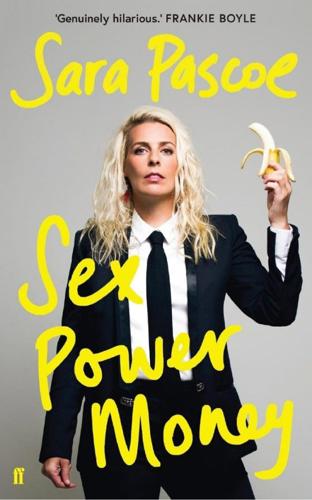
Sex Power Money
by
Sara Pascoe
Published 26 Aug 2019
By the time I started secondary school I’d also heard some confusing stuff about ‘penis envy’, because my dad was studying Freud, and ‘bleeding from the site of a torn-off organ’, because my mum liked quoting Germaine Greer. I was informed, explicitly and implicitly, that there were two kinds of human: the haves and have-nots. And unless you’re reading this in a distant genderless future, so were you. In the broadest sense Homo sapiens is composed of two phenotypes, two biological sexes. There are arguably many more sexes: people with extra chromosomes, solo chromosomes, intersex genitalia, etc. But for most intents and purposes humans are divided in two, and this is due to how we reproduce. We’re split into As and Bs because that’s how Cs are made. A + B = C.
…
It’d be like a very long, very creepy episode of Quantum Leap, which is why I’ve decided against having kids via hermaphrodite gene replication. Also, did you know mushrooms have thirty-six thousand sexes? It’s incredible but, as this book isn’t about the interrelation of economics, autonomy and sex in mushrooms, not especially relevant. The reason most animals are As and Bs is because having two phenotypes ensures the jumbling of DNA with each coupling. Asexual reproduction makes evolution much, much slower. In Ikea terms, dual-sexed breeding gives the possibility of moving around the bits and pieces; you can make mutant tables with legs on the top or with doors and drawers attached to them. Being asexual means following the instructions very closely every time.

The Perfect Police State: An Undercover Odyssey Into China's Terrifying Surveillance Dystopia of the Future
by
Geoffrey Cain
Published 28 Jun 2021
“But it came back in the 1990s with the rise of forensic genetics.” For fifteen years, Munsterhjelm had followed the work of one researcher, Kenneth Kidd, a genetics professor at the Yale School of Medicine. “After 9/11, there was something called the President’s DNA Initiative. It identified genetic research on ethnicity, phenotype and ancestry. The idea was to distinguish friend from enemy, or the airplane hijackers from the victims.” Kidd emerged as a global leader in the field of using ancestry markers to figure out the ancestral origins of a person’s genetic sample. He ran a genetic database at Yale, and was on the initiative’s Kinship and Data Analysis Panel.13 “I noticed some of the genetic research that was going on in China,” Munsterhjelm told me.
…
After their collaboration ended, Kidd says he asked the Chinese ministry of public security to stop using the genetic samples he had provided to them. “I’ve gotten no reply,” he admitted. In June 2020, after the controversy calmed down, I loaded the online genetic database at Yale to check whether the questionable Uyghur phenotype had been removed. Kidd had indeed taken out the samples provided to him by the Chinese ministry of public security. Yale University, however, had many other Uyghur samples not obtained by Kidd. “This sample of Uyghur individuals were [sic] collected from Xinjiang Uyghur Autonomous Region,” read one entry.

2312
by
Kim Stanley Robinson
Published 22 May 2012
But Swan could tell he was distracted. Extracts (17) As many people have significant lifelong quantities of male and female hormones and phenotypically are bisexual, intersex, or indeterminate, the pronouns “he” and “she” are often avoided, or when used are a matter of self-designation, sometimes changing according to situation. Referring to someone else with such pronouns is the equivalent of using “tu” rather than “vous” in French, indicating familiarity with the person deepest phenotypic signals of gender appear to be waist-to-hip ratio, and waist height relative to total height, usually a matter of proportionately longer female femurs and wider female pelvic bones such as French, Turkish, or Chinese.
…
Clearly, a new kind of psychic exposure distinctions can be pretty fine, with some claiming that gynandromorphs do not look quite like androgyns, nor like hermaphrodites, nor eunuchs, and certainly not like bisexuals—that androgyns and wombmen are quite different—and so on. Some people like to tell that part of their story; others never mention it at all. Some dress across gender and otherwise mix semiotic gender signals to express how they are feeling in that moment. Outrageous macho and fem behaviors, either matched with phenotype and semiotic indicators or not, create performance art ranging from the kitschy to the beautiful as there are now people close to three meters tall, and others less than a meter tall, gender may no longer be the greatest divide in human even approaching the size of spider monkeys, a modification that was severely censured by larger people, until longevity statistics kept reaffirming the association between smaller sizes and longer lifetimes, especially in light gravities.
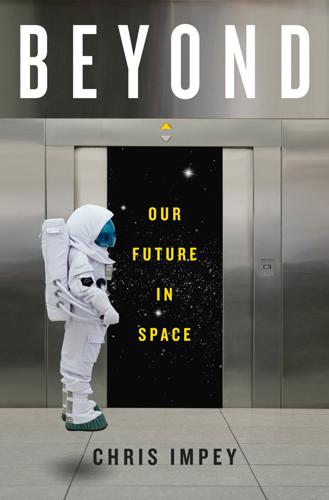
Beyond: Our Future in Space
by
Chris Impey
Published 12 Apr 2015
If the genetic code were perfectly transcribed and expressed, there would be no evolution and life would be, well, boring. It would also be a dead end, since it couldn’t adapt and survive over time. One type of variation occurs when the genetic blueprint, the genotype, is expressed in a particular environment, the phenotype. Two cloned seedlings will develop quite differently when one grows in loamy soil and the other grows on a windswept mountain. A second type of variation occurs over time when the genetic material is altered by mutation or imperfect copying. Biodiversity cascades as variations grow over time and are culled by natural selection.
…
Mex., 239 Los Angeles Times, 71 Losing My Virginity (Branson), 86, 87 Louis IX, king of France, 23 Louis XVI, king of France, 68 Lovelock, James, 286 Lowell, Percival, 163–64 Lucian of Samosata, 20 Lucretius, 18–19 Luna program, 50–51 Lunar and Planetary Laboratory, 156 Lunokhod rover, 143 Lynx rocket plane, 101 M5 fiber, 161 McAuliffe, Christa, 55, 74 Mack 3 Blackbird, 69 McKay, Chris, 173 McLellan, William, 283 magnetic implants, 207 magnetic resonance imaging (MRI), 190 magnetic sails, 186, 223 magnitude of time, 248–50, 249 Manhattan Project, 36, 221 Manifest Destiny, applied to space, 146–47, 199 Manned Habitat Unit, 169 many worlds concept, 17–20, 17, 49, 267 Mao Zedong, 141 Marconi, Guglielmo, 237 Mariner 2, 51 Mariner 4, 164 Marino, Lori, 190 Marriott hotels, 145 Mars, 28, 237, 270 challenges of travel to, 166–70 distance from Earth to, 50, 148, 166 Earth compared to, 171–72, 216 establishing a colony on, 166–71, 169, 192, 195, 200–201, 203, 214, 248 evidence of water on, 124–25, 163–66, 165, 173 fly-bys of, 51, 170 imaginative perceptions of, 163–65 latency on, 178 map of, 163 obstacles to exploration of, 66–67, 148 one-way journey to, 166, 170–71, 200 as potentially habitable, 124–25, 163, 165–66, 171, 172–74, 234, 278 privately funded missions to, 170–71 probes to, 40, 51, 52, 164–65, 176, 246 projected exploration of, 94–98, 101, 104, 115, 119, 157, 161, 163–74, 178, 181, 182 property rights on, 145, 198–99 sex and reproduction on, 200 simulated journey to, 169–70 soil of, 170 staging points for, 161 terraforming of, 172–74, 182, 216, 227 tests for life on, 52 Mars Direct, 169 Mars500 mission, 169 Mars One, 170–71, 198–201 Mars Society, 166 Mars 3 lander, 51 Masai people, 120 Massachusetts General Hospital, 250 Masson-Zwaan, Tanja, 199 mathematics, 19 as universal language, 236–37 Matrix, The, 260 matter, manipulation of, 258 matter-antimatter annihilation, 220, 220, 221–22 Mavroidis, Constantinos, 182 Max-Q (maximum aerodynamic stress), 46 Maxwell, James Clerk, 183 Mayor, Michel, 126–28, 133 medicine: challenges and innovation in, 92–93, 263 cyborgs in, 205 medicine (continued) as lacking in space, 200 in life extension, 259 nanotechnology in, 225, 259 robots in, 180, 181, 182, 205 mediocrity, principle of, 261 Mendez, Abel, 278 mental models, 13–17, 18–19 Mercury: orbit of, 126, 215 property rights on, 145 as uninhabitable, 124 mercury poisoning, 118 Mercury program, 41, 42, 71, 74, 272 meta-intelligence, 94 meteorites, 152, 160, 160, 164, 195 methane, 52–53, 125, 132, 278 as biomarker, 217–18 methanogens, 217 “Method of Reaching Extreme Altitudes, A” (Goddard), 30, 31 Methuselah, 131 mice, in scientific research, 48–49, 250–51 microbes, microbial life, 97–98, 173, 174, 217, 241, 246, 286 habitable environments for, 122–25, 165–66, 186 microcephaly, 203 microgravity, 115 microsatellites, 90 Microsoft, 84, 188 microwaves: beaming of, 223–24 signals, 187 Microwave Sciences, 223 Middle East, population dispersion into, 8, 118 migration: early human population dispersion through, 5–9, 9, 15, 19 motivation for, 9–12, 11 military: covert projects of, 69–72 Eisenhower’s caveat about, 79 in Internet development, 77, 78–79 nanotechnology in, 180–81, 225 in rocket development, 30, 32–39, 55–56, 71 in space programs, 73, 76, 79, 144, 153 Milky Way galaxy, 227, 240, 253, 263, 270 ancient Greek concept of, 18 Drake equation for detectable life in, 188, 233–35 Earth-like exoplanets in, 129–33, 233, 291 formation and age of, 235 size of, 242 Millis, Marc, 290 mind control, 245 mind uploading, 259 miniaturization, see nanotechnology minimum viable population, 201, 251 mining: of asteroids, 155–56, 182, 214 of Enceladus, 227 on Moon, 214 by robots, 178, 182 Minsky, Marvin, 177, 179 MirCorp, 75 mirrors, 173 Mir Space Station, 75, 115, 167–68 Miss Baker (monkey), 47–48, 48 Mission Control, 43, 100, 158, 269 MIT, 38, 77, 90, 141, 226, 257 mitochondrial DNA, 6, 9 Mittelwerk factory, 33, 35 Mojave Desert, 71, 82, 83 population adaptation to heat in, 118–19 molecules, in nanotechnology, 151 Mongols, 23, 24 monkeys, in space research, 47–48, 48 Montgolfier brothers, 68 Moon: age of, 50 ancient Greek concept of, 18 in asteroid capture, 156 distance from Earth to, 49–50, 150, 166, 267 first animals on, 49 first man on, 71, 158 latency on, 178 lunar base proposed for, 157–63, 158, 160, 195, 214, 248 manned landings on, 44–45, 49–50, 54, 56, 63, 71, 84, 99, 104, 108, 143, 157, 158, 176, 219, 270, 272 obstacles to exploration of, 66 orbit of, 25 probes to, 40, 51, 129, 140, 143 projected missions to, 92, 143, 157–63, 166, 214, 275 property rights on, 145–47, 198–99 proposed commercial flights to, 102 in science fiction, 20, 26 soil of, 159, 160, 162 as staging point for Mars, 161 staging points for, 148 telescopic views of, 31, 49–50 as uninhabitable, 124, 166 US commitment to reach, 41–45 Moon Treaty (1979), 146 Moon Treaty, UN (1984), 279 Moore, John, 203 Moravec, 259–60 Morgan, Barbara, 74 Morrison, Philip, 187, 239 Mosaic web browser, 79 Moses, 148 motion, Newton’s laws of, 25, 67–68 multistage rockets, 29 multiverse, 252–57, 255 Musk, Elon, 94–98, 97, 100–101, 112–13, 148, 205 mutation, 6–7 cosmic rays and, 204 7R, 10–12, 11, 15 mutually assured destruction, 42 Mylar, 184, 225 N1/L3 rocket, 44, 54 nanobots, 179–82, 181, 224–28 NanoSail-D, 184, 185 nanosponges, 180 nanotechnology, 151–52, 179–82, 208, 214, 245, 280, 283 projected future of, 257–59 see also nanobots National Aeronautics and Space Administration (NASA), 83, 90, 96, 97–98, 114, 116–17, 128, 144, 153, 156, 176, 178, 182, 184–85, 185, 195, 200, 205, 206, 216, 224, 226, 271, 275, 280, 290 and Air Force, 71 artistic depiction of space colonies by, 196, 196 budget of, 39, 42, 43, 49, 54, 64, 75, 99, 104, 140, 144, 158, 166, 188, 238, 270, 272, 284 cut back of, 45, 49, 54, 188 formation of, 38–39, 145, 269 private and commercial collaboration with, 99–102, 104 revival of, 103–5 space program of, 51, 55–56, 71–76, 92, 157–58, 285–86 stagnation of, 63–67, 141, 147, 166 National Geographic Society, 7, 265 National Radio Astronomy Observatory, 187–88 National Science Foundation (NSF), 78–79 Native Americans, 118 naturalness, 256 natural selection, 6, 16, 123, 164, 251, 291 Nature, 187 Naval Research lab, 37 Navy, US: Bureau of Aeronautics, 30 in rocket development, 36–37 Nayr, Ernst, 238 Nazis, 48 Propaganda Ministry of, 32 von Braun and, 32–34, 141, 269 NBC, 75 Nedelin, Mitrofan, 43 “needle in a haystack” problem, 188–89, 242–43 “Nell” (rocket), 29 Neptune, 127, 131, 225 as uninhabitable, 125 Nergal, 163 Netscape, 80 New Mexico, 88, 88, 105 Newton, Isaac, 24–25, 25, 30, 67–68, 110, 262, 267 New York Times, 30, 94 Nicholas, Henry, 214 Niven, Larry, 198, 253 Nixon, Richard, 108, 167 Nobel Prize, 126, 180, 214 nomad planets, 128 Noonan, James, 266 nuclear fission, 220, 220, 221 nuclear fusion, 110, 161–62, 220, 221, 221, 222 nuclear reactors, 224 nuclear weapons, 36, 42, 78, 129, 146, 197–98, 222, 234–35, 244, 245, 246, 286 Nuremberg Chronicles, 17 Nyberg, Karen, 200 Obama, Barack, 104 Oberth, Hermann, 28, 31–32, 36, 268 oceans: acidification of, 195 sealed ecosystem proposed for, 197 Oculus Rift, 176 Ohio, astronauts from, 74 Okuda, Michael, 228 Olsen, Ken, 213 100 Year Starship project, 224 100 Year Starship Symposium, 229 101955 Bennu (asteroid), 156 O’Neill, Gerard, 196, 251–52 Opportunity rover, 165 optical SETI, 190, 243 Orbital Sciences Corporation, 100–101, 275 orbits: concept of, 25 geostationary, 149–50, 150 legislation on, 146 low Earth, 49, 54, 63, 70–71, 70, 74–75, 97, 100, 110, 113–14, 151, 155, 184 manned, 40–41, 141–42 staging points from, 148 orcas, 190 Orion spacecraft, 104 Orteig, Raymond, 90 Orteig Prize, 90–91 Orwell, George, 35 OSIRIS-REx, 156 Outer Space Treaty (1967), 145–47, 198–99 “Out of the Cradle, Endlessly Rocking” (Clarke), 201 oxygen, 156, 159, 161, 170, 172, 173–74, 182, 193–95, 214 Oymyakon, Siberia, population adaptation to cold in, 119–20 ozone, as biomarker, 217 Pacific Ocean, 9, 224 Pac-Man, 175 Page, Larry, 92 Paine, Thomas, 167 Pale Blue Dot (Sagan), 121 “Pale Blue Dot,” Earth as, 53, 118–22, 121, 130 Paperclip, Operation, 141 parabolic flight, 93 paradox, as term, 241 Paratrechina longicornis (crazy ant), 193 Parkinson’s disease, 202–3 particle physics, standard model of, 256 Pascal, Blaise, 120 Pauley, Phil, 196–97 PayPal, 95, 97 Pensées (Pascal), 120 People’s Daily, 162 People’s Liberation Army, 144 Pericles, 18 Pettit, Don, 100, 273 phenotype, 6 philanthropy, 95 PhoneSat, 185 photons, 183, 186 in teleportation, 229, 230, 231 photosynthesis, as biomarker, 217 pigs, 250 Pinker, Steven, 16 Pioneer probes, 50, 51–52 piracy, 24 Pitcairn Island, 202 planetary engineering, 172 Planetary Resources, 156 planetary science, 51–52, 176 Planetary Society, 184 planets: exploration of, 49–53 formation of, 156 plate techtonics, 132, 241 play, imagination in, 10, 14 pluralism, 17–20, 17, 49 plutonium, 66 poetry, space, 272–73 politics, space exploration and, 63–64, 104, 141, 214, 238 Polyakov, Valeri, 115, 167–68 population bottleneck, 201–2, 287 Poynter, Jane, 193 Princess of Mars, A (Burroughs), 164 Principia (Newton), 25 Project Orion, 221, 221 Project Ozma, 187–88, 237, 253 prokaryotes, 172 property rights, in space, 145–47, 198 Proton rockets, 65, 113 proton scoop, 222–23 Proxmire, William, 238 Puerto Rico, 239, 243 pulsar, 131 Pythagorean Theorem, 238 Qian Xuesen, 141 Qi Jiguang, 24 Qualcomm Tricorder X Prize, 92 quantum entanglement, 230–32, 230 quantum genesis, 255 quantum mechanics, 258 quantum teleportation, 230–32, 230 quantum theory, 189 qubits, 230 Queloz, Didier, 126–28, 133 R-7 rocket, 37 R-16 rocket, 43 radiation, infrared, 109, 253–54, 254 radioactivity, as energy source, 124, 181 radio waves, 66, 187, 189, 242 ramjets, 222–23 RAND Corporation, 222 Rare Earth hypothesis, 241 RCS Energia, 106 RD-180 engine, 72 Reagan, Ronald, administration of, 167, 271 reality TV, 75, 171, 214, 282 “Realm of Fear,” 229 reasoning, human capacity for, 13–17, 18–19 red dwarfs, 131 Red Mars (Stanley), 174 Red Scare, 141 Redstone rocket, 36–37, 71 reindeer, 119–20 remote sensing, 175–91, 224 RepRap Project, 227 reproduction, sexual, 6, 172 Ride, Sally, 74 “Right Stuff,” as term, 71, 114 Right Stuff, The (Wolfe), 272 Ringworld series (Niven), 253 risk: as basic to human nature, 9, 262 genetic factor in, 10–12 of living on Mars, 167–70 in pushing human limits, 120 of space tourism, 102, 105–9, 155 of space travel, 42–43, 55–56, 56, 106–9, 152–53 Robinson, Kim Stanley, 174 robonaut project, 179 robots, robotics: as aids to humans, 249, 250 in asteroid redirection, 104 commercial, 178 ethical issues of, 179 nanotechnology in, 179–82, 181 remote control of, 177–78 remote sensing through, 176 self-assembly and self-replication by, 226–28, 258, 259 in spacecraft, 50, 100, 100 space exploration by, 53–57, 66, 98, 133, 161, 177–79, 179, 208, 224–28 see also cyborgs; nanobots Rocketdyne, 112 rocket equation, 27, 53, 72–73, 110–11, 111, 148, 220, 268 rocket fuel, 110–13, 148, 156, 159, 161 comparison of efficiency of, 219–24 Rocket Performance Calculator, 222 rockets: alternatives to, 148–53 “bible” of, 267 challenges in launching of, 43–44, 46–49, 106, 107, 111–12, 148 comparison of US and Soviet, 44 cost of, 112–13, 113 developing technology of, 21–39, 43, 101, 103, 112–13, 183, 262 fuel for, 110–13, 148, 156, 159, 161, 220–21 launched from planes, 84 liquid-fueled, 28–29, 29 physics and function of, 110–14 proposed energy technologies for, 220–24 reusable, 101, 103, 111, 112, 113 solar sails compared to, 183 as term, 23 visionaries in development of, 26–30, 94 in warfare, 22–24, 30, 32–34 see also specific rockets “Rockets to the Planets in Space, The” (Oberth), 28 Rogers Commission, 271 Rohrabacher, Dana, 284 Rome, ancient, 18, 67, 163 Rovekamp, Roger, 207 rovers, 66–67, 92, 125, 140, 143, 158, 165, 167 nanotechnology in, 181–82 remote sensing through, 176 Rozier, Jean-François de, 68 RP-1 kerosine, 110 RS-25 rocket, 112 Russia, 23, 26–27, 149, 178 space program of, 37, 65–66, 72, 75, 84, 91, 104, 106, 107–8, 113, 114, 140, 143, 168, 184, 195, 200, 271 space tourism by, 75, 102 tensions between US and, 72 see also Soviet Union Russian Revolution, 27, 47 Russian Space Agency, 102 Rutan, Burt, 72, 82–86, 85, 88, 88, 89, 91, 97–98, 105–6, 214 Rutan, Dick, 83–84 Rutan Aircraft Factory, 83 Saberhagen, Fred, 177, 259 Sagan, Carl, 53, 121–22, 121, 176–77, 184, 198, 234–35, 238, 240 Sahakian, Barbara, 98 Sahara Desert, 238 sails: solar, 183–86, 185 wind-driven, 67–68, 183, 262 Salyut space station, 54, 108 satellites: artificial Earth, 36–39, 37, 40, 65, 71, 106 commercial, 96, 105 communications, 101, 142, 153 in energy capture, 253 geostationary, 149 GPS, 144 launching of, 154, 154 miniature, 90, 184–85 Saturn: moon of, 125, 227 probes to, 52–53 as uninhabitable, 125 Saturn V rocket, 43, 44, 46, 54, 83, 104, 111, 113, 113, 166 Scaled Composites, 83, 89 science fiction, 192, 196, 222, 223, 239, 250, 253 aliens in, 186–87 in film, 28, 204 Mars in, 164, 174 roots of, 20 technologies of, 228–32, 259 see also specific authors and works scientific method, 213 Search for Extraterrestrial Intelligence (SETI), 187–90, 234, 239, 254 evolution and technology of, 237–39, 242–43, 242 lack of signals detected by, 236–37, 240–44 new paradigms for, 258 “Searching for Interstellar Communications” (Cocconi and Morrison), 187 sea travel: early human migration through, 8, 9 exploration by, 109, 262 propulsion in, 67–68 self-replication, 226–28, 258, 259 Senate, US, Armed Services Preparedness Committee of, 39 SETI Institute, 188 78–6 (pig), 250 sex: promiscuous, 12 in reproduction, 6, 172 in space, 200, 214 Shackleton Energy Company, 161 Shane, Scott, 98 Shatner, William, 88–89 Shelley, Mary, 206 Shenlong (“Divine Dragon”), 145 Shenzhou 10, 142–43 Shepard, Alan, 41, 84 Shostak, Seth, 243 Siberia, 65, 119–20, 238 population dispersion into, 8, 118, 218 Sidereal Messenger, The (Galileo), 270 Siemienowicz, Kazimierz, 267 Simonyi, Charles, 75 Sims, 175 simulation: infinite regression in, 261 living in, 257–62 simulation hypothesis, 261 Sinatra, Frank, 45 singularity, 207 in origin of cosmos, 255 and simulation, 257–62 technological, 258–59 Singularity University, 94, 259 Skylab space station, 54, 116 Skype video, 176 smart motes, 181, 225 smartphones, 92, 185 Smithsonian Institution, 30, 81 Smithsonian National Air and Space Museum, 85, 91, 271 Snow Crash (Stephenson), 103 Snowden, Edward, 178 social media, 195 Sojourner rover, 165 SolarCity, 96–97 solar flares, 167 solar power, 96, 181, 183–86 solar sails, solar sailing, 183–86, 185, 223, 225, 227 Solar System: discovery of first planet beyond, 126–27 edge of, 50, 53, 121 formation of, 156 habitability potential in, 122, 124–26 latency variations in, 178 probes into, 51–52, 66, 177, 185–86, 208, 270 projected travel within, 248–49, 263 property rights in, 145–47, 198 worlds beyond, 126–29, 156, 208, 215, 250, 263 solar wind, 162, 223 sound barrier, breaking of, 69, 71 South America, 11, 202, 218 Soviet Union, 30, 34, 37, 141 fall of, 47, 65, 75, 197, 271–72 rocket development in, 35–39 space program failures and losses of, 43, 47, 50–51, 54, 269 space program of, 37–39, 40–43, 141, 149, 237, 271 Soyuz spacecraft, 43, 55, 75, 84, 91, 102, 106, 113, 143 crash of, 107–8 space: civilians in, 55, 74 civilian vs. military control of, 37–39, 69–71, 79, 153 commercialization of, 55, 63, 73–76, 79–80, 88–89, 92, 97, 99–109, 100, 110, 147, 153–56, 154, 199, 214, 249, 275 debris in, 144, 152 first American in, 41 first man in, 40–41, 41 first women in, 40, 74 as infinite, 18, 19, 22 as inhospitable to human beings, 53–54, 114–17, 121 legislation on, 39, 78, 90, 144, 145–47, 198–200 living in, 192–208 “living off the land” in, 166, 200 peaceful exploration of, 39 potential for human habitabilty in, 123 prototype for sealed ecosystem in, 192–97 Space Act (1958), 39, 90 Space Adventures, 102, 275 space colonization: challenges of, 197–201 cyborgs in, 204–8 evolutionary diversion in, 201–4 legal issues in, 198–200 of Mars, 166–71, 169, 192, 195, 203 off-Earth human beings in, 215, 250–51 prototype experiments for, 192–97 space elevators, 27, 148–53, 150, 160–61, 185, 280 “Space Exploration via Telepresence,” 178 Spaceflight Society, 28 space hotels, 102–3 Space Launch System (SLS), 104 space mining, 155–56, 161–62 “Space Oddity,” 142 spaceplanes, 71–72, 85, 144 Spaceport America, 1–6, 105 Space Race, 35–39, 37, 40–43, 50, 55, 139 SpaceShipOne, 72, 85, 85, 88–89, 88, 91 SpaceShipTwo, 88, 101, 105 Space Shuttle, 45, 46, 49, 64, 72, 84, 85, 111–13, 112, 159, 167, 194, 219–20, 222, 275 disasters of, 55–56, 56, 74–75, 107, 111–13 final flight of, 271 limitations of, 55–56, 64–65 as reusable vehicle, 54–55 space sickness, 114 spacesuits, 89, 182, 195–96 space-time, 255, 255 manipulation of, 258 space tourism, 63, 73, 75–76, 79–80, 88–89, 91, 101–3, 154, 170, 214 celebrities in, 88, 101–2 revenue from, 154–55, 155 risks of, 102, 105–9, 155 rules for, 105 space travel: beyond Solar System, see interstellar travel bureaucracy of, 105–10, 271 cost of, 39, 42, 45, 49, 54, 55, 66, 75, 81–82, 91, 112–14, 113, 139–49, 153, 155–56, 158–59, 161, 166, 179, 183, 198, 214, 217, 222, 224–26, 252, 270, 275, 284 early attempts at, 21–22, 22 effect of rocket equation in, see rocket equation entrepreneurs of, 81–98 erroneous predictions about, 214 failures and disasters in, 21–22, 22, 38, 43, 47, 50–51, 54–56, 56, 63–64, 68, 72, 74–75, 101, 102, 107, 142, 184, 269, 271, 275 fatality rate of, 107–9 fictional vignettes of, 1–4, 59–62, 135–38, 209–12 Internet compared to, 76–80, 77, 80 life extension for, 250–51 lifetimes lived in, 251 living conditions in, 114–17 new business model for, 99–105 Newton’s theories as basis of, 25 obstacles to, 21, 63, 66–67, 105–109 space travel (continued) as part of simulation, 261–62 public engagement in, 45, 73, 85, 93, 162, 177, 217 remote sensing vs., 175–91 risks of, 43–44, 83, 89, 93, 105–9 speculation on future of, 76–80, 133, 213–32, 248–52 suborbital, 84 telescopic observation vs., 49–50 visionaries of, 26–39, 80, 94, 109 SpaceX, 96, 97, 100–103, 113–14, 275 SpaceX Dragon spacecraft, 96, 100, 100, 102, 170 special theory of relativity, 228, 231 specific impulse, 220 spectroscopy, 127, 165, 176 spectrum analyzer, 237 Speer, Albert, 34 Spielberg, Steven, 238 Spirit of St.
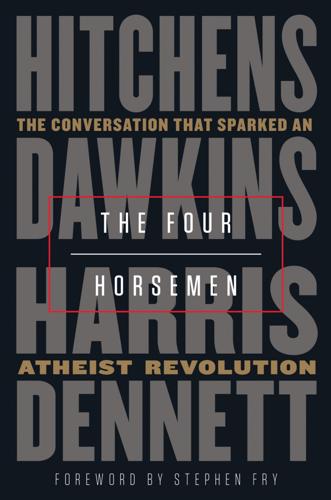
The Four Horsemen
by
Christopher Hitchens
,
Richard Dawkins
,
Sam Harris
and
Daniel Dennett
Published 19 Mar 2019
As the first holder of Oxford University’s Simonyi Professorship for the Public Understanding of Science, he acquired a worldwide reputation as a sceptic, ‘passionate rationalist’, ‘proud atheist’, and witty exposer of charlatanism and fakery couched in pseudoscientific language. In all that time, he has pursued an academic career as a leading ethologist and biologist. He gave our language the word ‘meme’, and in his work as a scientist has hugely expanded our understanding not just of the genotype but of the whole evolutionary package that makes life, the phenotype. His Richard Dawkins Foundation for Reason and Science stands as a global cynosure for free thought. CHRISTOPHER HITCHENS (Porthos) was – and how it will always grieve me to have to use the past tense – a journalist, essayist, polemicist, contrarian, debater, political historian, author and thinker.
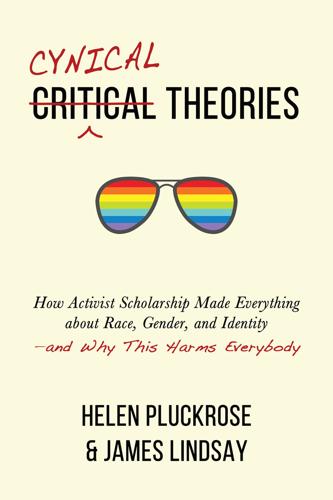
Cynical Theories: How Activist Scholarship Made Everything About Race, Gender, and Identity―and Why This Harms Everybody
by
Helen Pluckrose
and
James A. Lindsay
Published 14 Jul 2020
: A Systematic Review and Meta-analysis,” Annals of Internal Medicine 159 no. 11 (December 03, 2013), annals.org/aim/article-abstract/1784291/metabolically-healthy-overweight-obesity-benign-conditions-systematic-review-meta-analysis?doi=10.7326/0003-4819-159-11-201312030-00008; Lara L. Roberson et al., “Beyond BMI: The ‘Metabolically Healthy Obese’ Phenotype and Its Association with Clinical/Subclinical Cardiovascular Disease and All-Cause Mortality—A Systematic Review,” BMC Public Health 14, no. 1 (2014): article 14. 33.The ASDAH website states that its commitment to inclusion encompasses diversity based on ethnicity, race, nationality, immigration status, gender identity, sexual orientation, age, spirituality, abilities, education, economic class, social class, body shape and size, and others.
…
Oxford: Oxford University Press, 1999. Rich, Adrienne. Compulsory Heterosexuality and Lesbian Existence. Denver, CO: Antelope Publications, 1982. Riley, Donna. Engineering and Social Justice. San Rafael, CA: Morgan & Claypool Publishers, 2008. Roberson, Lara L., et al. “Beyond BMI: The ‘Metabolically Healthy Obese’ Phenotype and Its Association with Clinical/Subclinical Cardiovascular Disease and All-Cause Mortality—A Systematic Review.” BMC Public Health 14, no. 1 (2014): Article 14. Rorty, Richard. Philosophy and the Mirror of Nature. Princeton, NJ: Princeton University Press, 1979. ———. Contingency, Irony, and Solidarity.
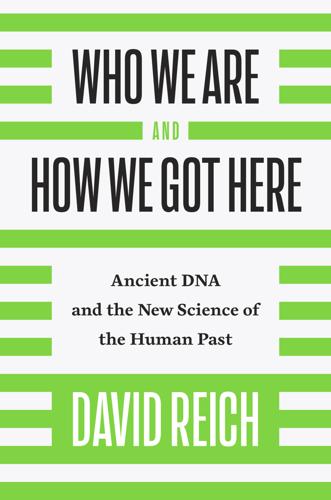
Who We Are and How We Got Here: Ancient DNA and the New Science of the Human Past
by
David Reich
Published 22 Mar 2018
Stephens, “Interpreting Principal Component Analyses of Spatial Population Genetic Variation,” Nature Genetics 40 (2008): 646–49. 7. O. François et al., “Principal Component Analysis Under Population Genetic Models of Range Expansion and Admixture,” Molecular Biology and Evolution 27 (2010): 1257–68. 8. A. Keller et al., “New Insights into the Tyrolean Iceman’s Origin and Phenotype as Inferred by Whole-Genome Sequencing,” Nature Communications 3 (2012): 698; P. Skoglund et al., “Origins and Genetic Legacy of Neolithic Farmers and Hunter-Gatherers in Europe,” Science 336 (2012): 466–69; I. Lazaridis et al., “Ancient Human Genomes Suggest Three Ancestral Populations for Present-Day Europeans,” Nature 513 (2014): 409–13. 9.
…
Allentoft et al., “Population Genomics of Bronze Age Eurasia,” Nature 522 (2015): 167–72. 37. Templeton, “Biological Races.” 5 The Making of Modern Europe 1. B. Bramanti et al., “Genetic Discontinuity Between Local Hunter-Gatherers and Central Europe’s First Farmers,” Science 326 (2009): 137–40. 2. A. Keller et al., “New Insights into the Tyrolean Iceman’s Origin and Phenotype as Inferred by Whole-Genome Sequencing,” Nature Communications 3 (2012): 698. 3. W. Muller et al., “Origin and Migration of the Alpine Iceman,” Science 302 (2003): 862–66. 4. P. Skoglund et al., “Origins and Genetic Legacy of Neolithic Farmers and Hunter-Gatherers in Europe,” Science 336 (2012): 466–69. 5.

The Telomere Effect: A Revolutionary Approach to Living Younger, Healthier, Longer
by
Dr. Elizabeth Blackburn
and
Dr. Elissa Epel
Published 3 Jan 2017
One other common cause of inflamm-aging involves telomere damage. When a cell’s genes are damaged or its telomeres are too short, that cell knows its precious DNA is in danger. The cell reprograms itself so that it emits molecules that can travel to other cells and call for help. These molecules, together called senescence-associated secretory phenotype, or SASP, can be useful. If a cell has become senescent because it’s been wounded, it can send signals to neighboring immune cells and other cells with repair functions, to call in the squads that can get the healing process going. And here’s where things go terribly wrong. Telomeres have an abnormal response to DNA damage.
…
Wang, “The Effects of Mind-Body Therapies on the Immune System: Meta-analysis,” PLOS ONE 9, no. 7 (2014): e100903, doi:10.1371/journal.pone.0100903. 2. Conklin, Q., et al., “Telomere Lengthening After Three Weeks of an Intensive Insight Meditation Retreat,” Psychoneuroendocrinology 61 (November 2015): 26–27, doi:10.1016/j.psyneuen.2015.07.462. 3. Epel, E., et al. “Meditation and Vacation Effects Impact Disease-Associated Molecular Phenotypes,” Translational Psychiatry (August 2016): 6, e880, doi: 10.1038/tp.2016.164. 4. Kabat-Zinn, J., Full Catastrophe Living: Using the Wisdom of Your Body and Mind to Face Stress, Pain, and Illness, rev. ed. (New York: Bantam Books, 2013). 5. Lengacher, C. A., et al., “Influence of Mindfulness-Based Stress Reduction (MBSR) on Telomerase Activity in Women with Breast Cancer (BC),” Biological Research for Nursing 16, no. 4 (October 2014): 438–47, doi:10.1177/1099800413519495. 6.
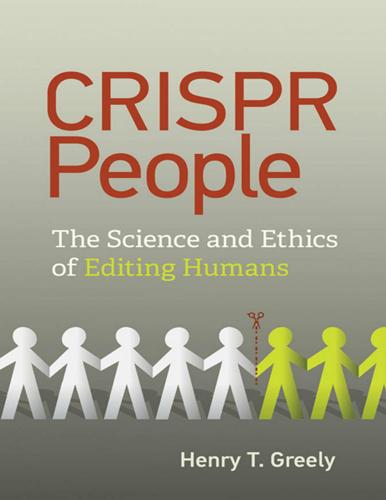
CRISPR People: The Science and Ethics of Editing Humans
by
Henry T. Greely
Published 22 Jan 2021
(It may also make some nongenetic methods of enhancement relatively more attractive, like hair dye, colored contact lenses, or intensive Scrabble training.) Knowledge of some sets of genomic variations that enhance traits may ultimately come from the simple availability of more genotypic and associated phenotypic data. If we had the genomes of the world’s 1,000 top Scrabble players, maybe some genomic associations would be found. Knowledge of other causal factors may, or may not, come from research into diseases or conditions that cause well below average performance, which may provide some clues about DNA locations that might be associated with better performance.
…
Still, if one wants to use that definition, it might well be possible for a clever scientist to engineer human embryos genetically so that they could only have children (without resorting again to gene editing) with similarly modified humans, perhaps by changing some of the characteristics of eggs and sperm or, as Lee Silver suggested over 20 years ago, by changing in the number of their chromosomes.32 Such people could be, in every respect except their potential reproductive partners, exactly the same as the rest of humanity, but, by the interbreeding definition, this would be a speciation event. That said, why would anyone want to do it? One might instead mean by a speciation event a change that produced living people who were substantially different from contemporary Homo sapiens in phenotype or in genotype—as different, or more, as Neanderthals were from us. That is also plausible, sometime, but no time soon. Just as we know next to nothing about genetic variations that cause more limited enhancement, we know even less about variants with such great effect as to make an entirely new species.
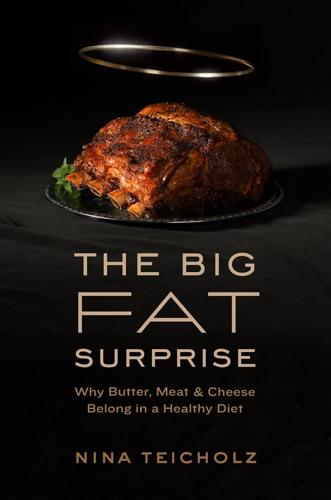
The Big Fat Surprise: Why Butter, Meat and Cheese Belong in a Healthy Diet
by
Nina Teicholz
Published 12 May 2014
“of all the lipoproteins”: Tavia Gordon et al., “High Density Lipoprotein as a Protective Factor Against Coronary Heart Disease: The Framingham Study,” American Journal of Medicine 62, no. 5 (1977): 707. The correlation was “striking”: Ibid., 707. “most important finding”: William P. Castelli et al., “HDL Cholesterol and Other Lipids in Coronary Heart Disease: The Cooperative Lipoprotein Phenotyping Study,” Circulation 55, no. 5 (1977): 771. By 2002, the NCEP was calling: National Cholesterol Education Program, Third Report of the National Cholesterol Education Program (NCEP). Expert Panel on Detection, Evaluation, and Treatment of High Blood Cholesterol in Adults: (Adult Treatment Panel III) Final Report.
…
Ray et al., “Statins and All-Cause Mortality in High-Risk Primary Prevention: A Meta-Analysis of 11 Randomized Controlled Trials Involving 65,229 Participants,” Archives of Internal Medicine 170 (2010): 1024–1031; Castelli et al., “HDL Cholesterol and Other Lipids,” in “Coronary Heart Disease: The Cooperative Lipoprotein Phenotyping Study,” Circulation 55, no. 5 (1977): 771. the AHA journal Circulation: Rodney A. Hayward and Harlan M. Krumholz, “Three Reasons to Abandon Low-Density Lipoprotein Targets: An Open Letter to the Adult Treatment Panel IV of the National Institute of Health,” Circulation 5 (2012): 2–5. See also Harlan M.
…
Nutrition & Metabolism 4, no. 23 (October 31, 2007). doi:10.1186/1743-7075-4-23. Castelli, William P. “Concerning the Possibility of a Nut . . .” Archives of Internal Medicine 152, no. 7 (July 1992): 1371–1372. Castelli, William P., Joseph T. Doyle, Tavia Gordon, et al. “HDL Cholesterol and Other Lipids in Coronary Heart Disease: The Cooperative Lipoprotein Phenotyping Study.” Circulation 55, no. 5 (May 1977): 767–772. Center for Food Safety and Applied Nutrition, US Food and Drug Administration. “FDA Issues Draft Guidance for Industry on How to Reduce Acrylamide in Certain Foods.” CFSAN Constituent Update, November 14, 2013, http://www.fda.gov/Food/NewsEvents/ConstituentUpdates/ucm374601.htm.
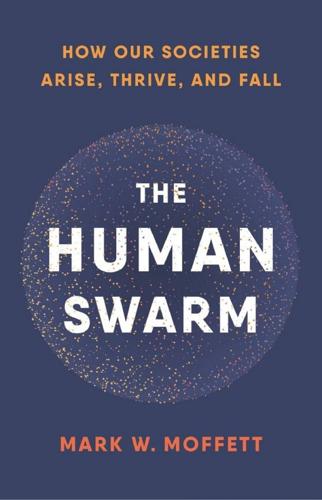
The Human Swarm: How Our Societies Arise, Thrive, and Fall
by
Mark W. Moffett
Published 31 Mar 2019
On the Origin of Species by Means of Natural Selection, or the Preservation of Favoured Races in the Struggle for Life. London: John Murray. . 1871. The Descent of Man. London: John Murray. . 1872. The Expression of the Emotions in Man and Animals. London: John Murray. Davis G. 2009. Vikings in America. Edinburgh: Berlinn Ltd. Dawkins R. 1982. The Extended Phenotype. San Francisco: WH Freeman. Dawson J. 1881. Australian Aborigines: The Languages and Customs of Several Tribes of Aborigines in the Western District of Victoria. Melbourne: George Robertson. DeCasien AR, et al. 2017. Primate brain size is predicted by diet but not sociality. Nature Ecol Evol 1:112.
…
Vocal, gestural and locomotor responses of wild chimpanzees to familiar and unfamiliar intruders: A playback study. Anim Behav 78:1389–1396. Hernandez-Aguilar RA, J Moore, TR Pickering. 2007. Savanna chimpanzees use tools to harvest the underground storage organs of plants. Proc Nat Acad Sci 104:19210–19213. Heth G, J Todrank, RE Johnston. 1998. Kin recognition in golden hamsters: Evidence for phenotype matching. Anim Behav 56:409–417. Hewlett BS. 1991. Intimate Fathers: The Nature and Context of Aka Pygmy Paterna Infant Care. Ann Arbor: University of Michigan Press. Hewlett BS, JMH van de Koppel, LL Cavalli-Sforza. 1986. Exploration and mating range of Aka Pygmies of the Central African Republic.
…
Synonyms for “marker” include words like “label” and “tag.” 4 de Waal & Tyack (2003); Fiske & Neuberg (1990); Machalek (1992). 5 For details on different levels of human social connections, see Buys & Larson (1979); Dunbar (1993); Granovetter (1983); Moffett (2013); Roberts (2010). 6 This is the cultural version of the idea of an extended phenotype proposed by Dawkins (1982). 7 Wobst (1977). 8 Alessia Ranciaro, pers. comm.; Tishkoff et al. (2007). 9 Simoons (1994). 10 Wurgaft (2006). 11 Baumard (2010); Ensminger & Henrich (2014). 12 Poggi (2002). 13 Iverson & Goldin-Meadow (1998). 14 Darwin (1872). 15 Marsh et al. (2003). People in prolonged social contact can converge in facial appearance as well, perhaps through repeated similar use of the same facial muscles (Zajonc et al. 1987). 16 Marsh et al. (2007). 17 Sperber (1974). 18 Eagleman (2011). 19 Bates et al. (2007). 20 Allport (1954), 21. 21 Watanabe et al. (1995). 22 Nettle (1999). 23 Pagel (2009), 406. 24 Larson (1996). 25 Tajfel et al. (1970). 26 Dixon (2010), 79. 27 Sometimes the language spoken by a Pygmy group does not correspond to the farmers to which they are currently connected, suggesting the Pygmies sometimes migrate (Bahuchet 2012 & 2014).

Robot Futures
by
Illah Reza Nourbakhsh
Published 1 Mar 2013
Kanji?” She smiles—he could see this from behind, just from the movement of her cheekbone—and shakes her head. “Have you heard of symbox? This is the character I designed for it.” “Very cool. I read something in the New Yorker—this is a classification for species, right?” “No, it’s a description for phenotypes. You know biology? I proposed this for Rhesus monkeys and it was accepted.” “And, but, you’re a botanist too—I’m guessing. Sorry—I don’t see any leaf sketchers at the other tables . . .” Katy takes another sip of mint tea and tries to reason with her mother again. “All I am saying is, you can’t mark the message as urgent if it’s not urgent.

Permafrost
by
Alastair Reynolds
Published 19 Mar 2019
He means a different kind of upset. I gathered. “It was getting harder for the time-probes to get a positive lock,” Antti went on. “Even when we managed to inject, the telemetry was much too noisy to be sure who we were in. We couldn’t analyse the biochemical environment properly, couldn’t get a clear phenotypic signature. With you, Cho knew you were going to mesh with a female host subject. With me, it was more a question of taking our chances.” He paused. “I’m all right. I got used to this body pretty quickly. It works for me.” “Who are you? Downstream, I mean.” “Tibor’s my host.” “And this . . . Tibor.
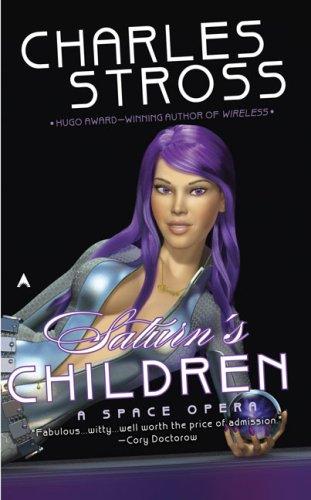
Saturn's Children
by
Charles Stross
Published 30 Jun 2008
“I’d be very happy to offer any advice I can,” I agree cautiously. “Yes.” Ichiban nods thoughtfully. “You are very big.” He looks up at me. It’s true: I’m almost a hundred and seventy centimeters tall. An idealized replica of our Creators’ kind, in fact, unlike the super-deformed midgets who are the commonest phenotype of the nouveau riche these days. “Good thermal inertia,” adds Ichiban, unexpectedly. “And you were designed for Earth, before the emancipation.” Good thermal inertia? I smile as my biomimetic reflexes cut in: my cheeks flush delicately, signaling mild embarrassment or confusion. Emancipation? What’s he talking about?
…
And so I emerged blinking into the steamy overcast haze of a world I never asked for, indentured to a performing troupe of jongleurs. I played helplessly with the orchestra for my first five years, but there was no future in it for them, or for me. The musical fad was already fading, and besides, phenotypic drift was becoming a political issue. The race to pick up the pieces in the wake of our Creators’ death was won by those who were least attached to the past—and they tend to dislike reminders of their former servitude. Folks such as I, molded in the near-perfect shape of our Creators, are distasteful to some, and I was eventually bought out of my servitude by my sisters, who had made a minor fetish of tracking down their lost orphan sibs.

Wireless
by
Charles Stross
Published 7 Jul 2009
At the same time we got the NOAA to increase their mapping-launch frequency, and pointed the increased level of Soviet activity out to our sources in SAC. It doesn’t take much to get the human hives buzzing with positive feedback.” Of course, Brundle and Gregor aren’t using words for this incriminating exchange. Their phenotypically human bodies conceal some useful modifications, knobby encapsulated tumors of neuroecto derm that shield the delicate tissues of their designers, neural circuits that have capabilities human geneticists haven’t even imagined. A visitor from a more advanced human society might start chattering excitedly about wet-phase nanomachines and neural-directed broadband packet radio, but nobody in New York on a sunny day in 1979 plus one million is thinking in those terms.
…
Like Wei, and the other Stasis agents who had silently liquidated the camp guards and stolen their identities three nights before, Pierce was disguised as a Benzin warrior. He wore the war paint and beaten-aluminum armbands, bore the combat scars. He carried a spear tipped with a shard of synthetic diamond, mined from a deep seam of prehistoric automobile windshields. He even wore a Benzin face: the epicanthic folds and dark skin conferred by the phenotypic patches had given him food for thought, an unfamiliar departure from his white-bread origins. Gramps (he shied from the memory) would have died rather than wear this face. Pierce was not yet even a twelve-year trainee: he’d been in the service for barely four years-subjective. But he was ready to be sent out under supervision, and this particular operation called for warm bodies rather than retrocausal subtlety.

T: The Story of Testosterone, the Hormone That Dominates and Divides Us
by
Carole Hooven
Published 12 Jul 2021
The writer Andrew Sullivan told readers of New York Magazine that he got “a real sense of what being a man is … [with] the rush of energy, strength, clarity, ambition, drive, impatience, and, above all, horniness” from his biweekly testosterone injections. A Psychology Today article suggests that “women are attracted to toxic masculine male phenotypes that correlate with testosterone … and who exhibit patterns of behavior that will allow them to ascend the social hierarchy and defend their positions from encroachers.” According to the left-wing Huffington Post, Trump’s presidency is “testosterone-fueled,” making it “an extremely dangerous one” that could lead to war.
…
“good numbers”: Danielle Kurtzleben, “Trump and the Testosterone Takeover of 2016,” National Public Radio, October 1, 2016, https://www.npr.org/2016/10/01/494249104/trump-and-the-testosterone-takeover-of-2016. “rush of energy, strength, clarity, ambition, drive, impatience and, above all, horniness”: Andrew Sullivan, “#MeToo and the Taboo Topic of Nature,” New York Magazine, January 19, 2018. “women are attracted to toxic masculine male phenotypes”: Gad Saad, “Is Toxic Masculinity a Valid Concept?,” Psychology Today blog, March 8, 2018, https://www.psychologytoday.com/us/blog/homo-consumericus/201803/is-toxic-masculinity-valid-concept. Trump’s presidency is “testosterone-fueled”: Neal Gabler, “The Testosterone Fueled Presidency,” Huffington Post, August 16, 2017, https://www.huffpost.com/entry/the-testosterone-fueled-presidency_b_59949cd3e4b056a2b0ef029c.

The Code of Capital: How the Law Creates Wealth and Inequality
by
Katharina Pistor
Published 27 May 2019
A few years later, he suggested linking the Utah Mormon Genealogy to the Utah Cancer Registry to facilitate the process of identifying genes.64 After Myriad had identified the BRCA sequence and patented it, the company did not just offer the test, but it collected detailed data from every patient, including her specific variation of the defective gene, the manifestation or phenotype of the cancer, her family history, and the gene pool to which she belonged. This database became Myriad’s greatest asset. In 2005, the company stopped contributing information to public databases and stopped sharing its own data with others.65 As Simon and Sichelman observed, “[w]hat began with patent protection over genetic information now includes trade secret protection for Myriad’s databases of patients’ full genetic sequences and phenotypic information, as well as correlations and algorithms resulting from access to that wealth of data.”66 In essence, “data-generating patents” give the patentee a head start over others in building a huge, private database that will be enforced through trade secrecy law long after the patent itself has expired.

Visual Thinking: The Hidden Gifts of People Who Think in Pictures, Patterns, and Abstractions
by
Temple Grandin, Ph.d.
Published 11 Oct 2022
“Brain Activities of Visual and Verbal Thinkers: A MEG Study.” Neuroscience Letters 594 (2015): 155–60. Nishimura, K., et al. “Individual Differences in Mental Imagery Tasks: A Study of Visual Thinkers and Verbal Thinkers.” Neuroscience Communications (2016). Pant, R., S. Kanjlia, and M. Bedny. “A Sensitive Period in the Neural Phenotype of Language in Blind Individuals.” Developmental Cognitive Neuroscience 41 (2020). https://www.sciencedirect.com/science/article/pii/S1878929319303317#sec0010. Park, C. C. Exiting Nirvana: A Daughter’s Life with Autism. New York: Little, Brown, 2001. Pashler, H., et al. “Learning Styles: Concepts and Evidence.”
…
British Journal of Psychiatry 199, no. 5 (2011): 373–79. doi: 10.1192/bjp.bp.110.085316. Larsen, S. A. “Identical Genes, Unique Environments: A Qualitative Exploration of Persistent Monozygotic Twin Discordance in Literacy and Numeracy.” Frontiers in Education (2019). doi.org/10.3389/feduc.2019.00021. Le Couteur, A, et al. “A Broader Phenotype of Autism: The Clinical Spectrum in Twins.” Journal of Child Psychology and Psychiatry 37, no. 7 (1996). doi.org/10.1111/j.1469-7610.1996.tb01475.x. Lehman, C. “Interview with a Software Engineer.” Quillette.com. January 5, 2018. Leibowitz, G. “Steve Jobs Might Have Never Started Apple If He Didn’t Do This 1 Thing.”
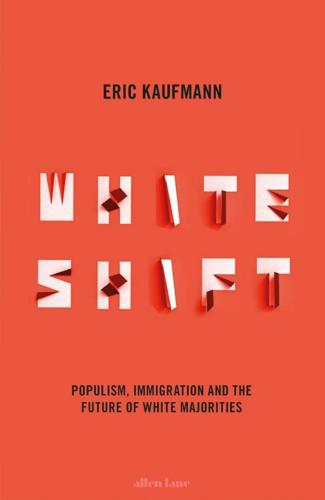
Whiteshift: Populism, Immigration and the Future of White Majorities
by
Eric Kaufmann
Published 24 Oct 2018
I don’t think evolutionary psychology on its own can tell us much about why group boundaries take the form they do. True, certain physical characteristics, such as white skin and blue eyes, co-occur together more often than black skin and blue eyes. But this clustering comes in the form of gradations from North to South, or East to West. Blood types and other genetic traits cut across these phenotypical traits, and there has been considerable gene flow since the Dawn of Man some 100,000 years ago. Cultural tradition, not genes, tells us which markers matter and which don’t. On the other hand, the view that groups like the antebellum Irish ‘became white’ when they served political purposes such as the interests of the southern Democrats is, in my opinion, overstated.42 The Irish or Jews in America, though outside the Anglo-Protestant ethnic core, were distinguished from African-Americans or Chinese in daily social interactions.
…
More problematic were Catholics, who represented a seemingly indigestible element. Catholicism represented what the Czech-British sociologist of nationalism, Ernest Gellner, calls a ‘counter-entropic’ trait.7 That is, retained through generations and resisting decomposition over time. Whereas language or accent tends to fade in the second generation, religion and phenotype are often inherited and therefore endure. The share of foreign-born in the United States has fluctuated, but, apart from the earliest years of British and Scotch–Irish colonization in the seventeenth and early eighteenth centuries, never exceeded 15 per cent of the total. Immigration slowed during the early years of the American republic between 1776 and 1820, contributing just 3 per cent of population growth in 1810.
…
Humans have mapped the genome, have cloned animals and are selecting against embryos with genetic errors that produce cystic fibrosis, sickle-cell anaemia, and early-onset Alzheimer’s disease. The next stage, which may be no more than a decade or two away, is to use biotechnology to design our offspring. This has implications for ethnic movements because ethnicity concerns ancestry, which has a basis in genetic traits that manifest themselves as phenotypical markers. The genetic frequencies of ethnic groups have been extensively mapped.27 Like many, I’ve done a cheek swab to find out more about my ancestors. While some of the ones I expected – South American Indian, Chinese, Jewish – appeared, many others, such as Swedish, Hungarian and Lowland Scots, surprised me.
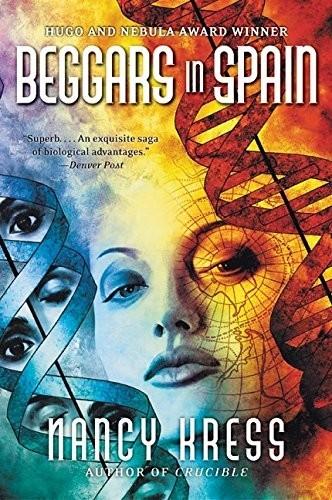
Beggars in Spain
by
Nancy Kress
Published 23 Nov 2004
Her lab rats, their brains confused by what was supposed to be the answer to Miri’s experiment, stood irresolutely in their brain-scan stalls. The smallest of the three gave up: He lay down and went to sleep. “T-t-t-terrific,” Miri muttered. What ever made her think she was a biochemical researcher? “Super”—yeah. Sure. Super-incompetent. Strings of genetic code, phenotypes, enzymes, receptor sites formed and reformed in her head. None of it was any good. Waste, waste. She threw a calibration instrument clear across the lab, guaranteeing it would have to be recalibrated. “Miri!” Joan Lucas stood in the doorway, her pretty face twisted as rope. She and Miri had not talked in years.
…
Nikos then created a string in his own program and converted it to Miri’s, still the format most accessible to the group as a whole. The twenty-seven children crowded near. Sharifi Labs had developed and synthesized an instantly fatal, airborne, highly communicable genemod organism, built from the code of a virus but highly different in important phenotypes. Packets of the organism, in a frozen state that could be unfrozen and dispersed by remote control from Sanctuary, had been installed in the United States by selected Sleepless graduate students studying on Earth. There were packets secreted in New York, Washington, Chicago, Los Angeles, and on Kagura orbital, which Sharifi Labs now owned.

Wilding: The Return of Nature to a British Farm
by
Isabella Tree
Published 2 May 2018
Though still a good eight to twelve inches shorter than the massive aurochs of old, and, with a Heck bull typically weighing in at 1,300lb, at least 220lb lighter than a bull aurochs, they are, nevertheless, imposing animals. Konik ponies, a short, stocky breed with dun coats and a dorsal stripe, originally from the Biłgoraj region of Poland, were chosen for the Oostvaardersplassen experiment for their hardiness and their supposed phenotypical resemblance to the extinct tarpan. They, too, had been the subject of a ‘breed-back’ experiment, started by a Polish count in 1936. Roe deer were already naturally present in the Oostvaardersplassen in small numbers, and red deer were added to the mix. ‘We wanted to introduce the kind of grazing variation you find in Africa and that would once have prevailed in Europe.
…
Whether or not these claims are valid (Joep is dubious), he feels there is a strong genetic and ecological argument for using more than one breed in conservation grazing projects as a replacement for the extinct wild horse – Hucul horses in the Carpathians, for example; Norwegian Fjord ponies or Swedish Gotlandruss ponies in Northern Europe, Koniks in lowland Eastern Europe; and Exmoors in Western Europe. There is little doubt about the Exmoor’s credentials as an equine aboriginal. Fossil remains have been found in the area of Exmoor dating back to around 50,000 BC . Roman carvings in Somerset depict ponies phenotypically similar to Exmoors, and the Domesday Book records ponies on Exmoor in 1086. Whether Exmoors have been pure-bred since the ice age remains a subject of debate. The DNA evidence is inconclusive and there are stories of domesticated stallions over the centuries breaking out onto the moor to breed with wild Exmoor mares – one is said to have been an Arab, Katerfelto, who swam ashore after the wrecking of the Spanish Armada.
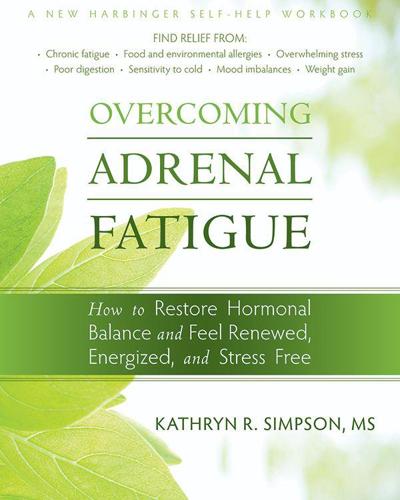
Overcoming Adrenal Fatigue: How to Restore Hormonal Balance and Feel Renewed, Energized, and Stress Free
by
Kathryn Simpson
Published 1 May 2011
Chronic insomnia and activity of the stress system: A preliminary study. Journal of Psychosomatic Research 45(1):21-31. Vicennati, V., L. Ceroni, L. Gagliardi, A. Gambineri, and R. Pasquali. 2002. Response of the hypothalamic-pituitary-adrenocortical axis to high-protein/fat and high-carbohydrate meals in women with different obesity phenotypes. Journal of Clinical Endocrinology and Metabolism 87(8):3984-3988, Virchow, R. 1860. Cellular Pathology as Based upon Physiological and Pathological Histology. London: Churchill. Weill, S., D. Chesneau, and L. Safraou. 2002. Effects of introducing linseed in livestock diet on blood fatty acid composition of consumers of animal products.

The Red Queen: Sex and the Evolution of Human Nature
by
Matt Ridley
Published 14 Aug 1993
Johnson, London Davison, G. W. H., 1983, ‘The Eyes Have It: Ocelli in a Rainforest Pheasant’, Animal Behaviour, 31:1037–42 Dawkins, M. and Guilford, T., 1991, ‘The Corruption of Honest Signalling’, Animal Behaviour, 41:865–73 Dawkins, R., 1976, The Selfish Gene, Oxford University Press, Oxford —1982, The Extended Phenotype, Oxford University Press, Oxford —1986, The Blind Watchmaker, Longman, London —1990, ‘Parasites, Desiderata Lists and the Paradox of the Organism’, Parasitology, 100: S63–S73 —1991, ‘Darwin Triumphant: Darwinism as a Universal Truth’, Man and Beast Revisited, ed. M. H. Robinson and L. Tiger, Smithsonian, Washington, DC, pp. 23–39 —and Krebs, J.
…
M., 1991a, ‘Borrowed Sexual Ornaments’, Nature, 349:105 —1991b, The Rise and Fall of the Third Chimpanzee, Radius, London Dickemann, M., 1979, ‘Female Infanticide and Reproductive Strategies of Stratified Human Societies’, Evolutionary Biology and Human Social Behavior, ed. N. Chagnon and W. Irons, Duxbury, North Scituate, Massachusetts, pp. 321–67 —1992, ‘Phylogenetic Fallacies and Sexual Oppression’, Human Nature, 3:71–87 Doolittle, W. F. and Sapienza, C., 1980, ‘Selfish Genes, the Phenotype Paradigm and Genome Evolution’, Nature, 284:601–3 Dörner, G., 1985, ‘Sex-specific Gonadotrophin Secretion, Sexual Orientation and Gender Role Behaviour’, Endokrinologie, 86:1–6 Dörner, G., 1989, ‘Hormone-dependent Brain Development and Neuroendocrine Prophylaxis’, Experimental and Clinical Endocrinology 94:4–22 Dugatkin, L., 1992, ‘Sexual Selection and Imitation: Females Copy the Mate Choice of Others’, American Naturalist, 139:1384–9 Dunbar, R.
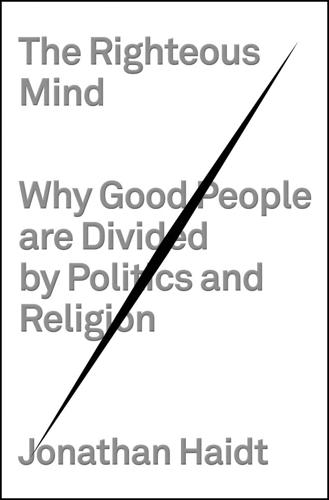
The Righteous Mind: Why Good People Are Divided by Politics and Religion
by
Jonathan Haidt
Published 13 Mar 2012
Sanford. 1950. The Authoritarian Personality. New York: Harper and Row. Alford, J. R., C. L. Funk, and J. R. Hibbing. 2005. “Are Political Orientations Genetically Transmitted?” American Political Science Review 99:153–67. ______. 2008. “Beyond Liberals and Conservatives to Political Genotypes and Phenotypes.” Perspectives on Politics 6:321–28. Allen, E., et al. 1975. “Against ‘Sociobiology.’ ” New York Review of Books 22:43–44. Almas, I., A. W. Cappelen, E. O. Sorensen, and B. Tungodden. 2010. “Fairness and the Development of Inequality Acceptance.” Science 328:1176–8. Ambrose, S. H. 1998. “Late Pleistocene Human Population Bottlenecks, Volcanic-Winter, and the Differentiation of Modern Humans.”
…
Descartes’ Error: Emotion, Reason, and the Human Brain. New York: Putnam. ______. 2003. Looking for Spinoza. Orlando, FL: Harcourt. Darwin, C. 1998/1871. The Descent of Man and Selection in Relation to Sex. Amherst, NY: Prometheus Books. Dawkins, R. 1976. The Selfish Gene. New York: Oxford University Press. ______. 1999/1982. The Extended Phenotype: The Long Reach of the Gene. New York: Oxford University Press. ______. 2006. The God Delusion. Boston: Houghton Mifflin. Decety, J. 2011. “The Neuroevolution of Empathy.” Annals of the New York Academy of Sciences 1231:35–45. De Dreu, C. K., L. L. Greer, M. J. Handgraaf, S. Shalvi, G. A. Van Kleef, M.

Science Fictions: How Fraud, Bias, Negligence, and Hype Undermine the Search for Truth
by
Stuart Ritchie
Published 20 Jul 2020
Ceci et al., (Frontiers Research Topics: Frontiers Media SA, 2018); https://doi.org/10.3389/978-2-88945-434-1 104. Jill B. Becker et al, ‘Female Rats Are Not More Variable than Male Rats: A Meta-Analysis of Neuroscience Studies’, Biology of Sex Differences 7, no. 1 (Dec. 2016): 34; https://doi.org/10.1186/s13293-016-0087-5 105. International Mouse Phenotyping Consortium, Natasha A. Karp, et al., ‘Prevalence of Sexual Dimorphism in Mammalian Phenotypic Traits’, Nature Communications 8, no. 1 (Aug. 2017): 15475; https://doi.org/10.1038/ncomms15475 106. Rebecca M. Shansky, ‘Are Hormones a “emale Problem” for Animal Research?’, Science 364, no. 6443 (31 May 2019): pp. 825–6; https://doi.org/10.1126/science.aaw7570, p. 826.
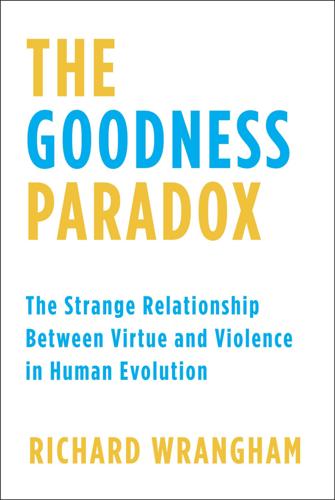
The Goodness Paradox: The Strange Relationship Between Virtue and Violence in Human Evolution
by
Richard Wrangham
Published 29 Jan 2019
Preventing Deadly Conflict: Final Report. Washington, D.C.: Carnegie Commission on Preventing Deadly Conflict. Carneiro, Miguel, Carl-Johan Rubin, Federica Di Palma, Frank W. Albert, Jessica Alföldi, Alvaro Martinez Barrio, Gerli Pielberg, et al. 2014. “Rabbit genome analysis reveals a polygenic basis for phenotypic change during domestication.” Science 345: 1074–79. Carré, Justin M., and Cheryl M. McCormick. 2008. “In your face: Facial metrics predict aggressive behavior in the laboratory and in varsity and professional hockey players.” Proceeding of the Royal Society B 275: 2651–56. Carré, Justin M., Cheryl M.
…
Larson. 2000. “Dysfunction in the neural circuitry of emotion regulation—a possible prelude to violence.” Science 289: 591–94. Davie, Maurice R. 1929. The Evolution of War: A Study of Its Role in Early Societies. New Haven, Conn.: Yale University Press. Dawkins, Richard. 1982. The Extended Phenotype. Oxford, U.K.: Oxford University Press. de Almeida, Rosa Maria Martins, João Carlos Centurion Cabral, and Rodrigo Narvaes. 2015. “Behavioural, hormonal and neurobiological mechanisms of aggressive behaviour in human and nonhuman primates.” Physiology & Behavior 143: 121–35. de Boer, S. F., B.
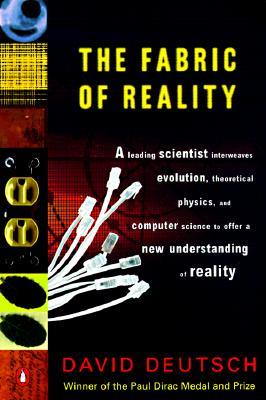
The Fabric of Reality
by
David Deutsch
Published 31 Mar 2012
This gene-based understanding of life - regarding organisms as part of the environment of genes - has implicitly been the basis ol biology since Darwin, but it was overlooked until at least the 1960s, and not fully understood until Richard Dawkins published The Selfish Gene (1976) and The Extended Phenotype (1982). I now return to the question whether life is a fundamental phenomenon of nature. I have warned against the reductionist assumption that emergent phenomena, such as life, are necessarily less fundamental than microscopic physical ones. Nevertheless, everything I have just been saying about what life is seems to poini to its being a mere side-effect at the end of a long chain of side-effects.
…
Ekert, 'Quantum Cryptography', Scientific American, October 1992. {367} Jacob Bronowski, The Ascent of Man, BBC Publications, 1981, Little Brown, 1976. Julian Brown, 'A Quantum Revolution for Computing', New Scientist, 24 September 1994. Paul Davies and Julian Brown, The Ghost in the Atom, Cambridge University Press, 1986. Richard Dawkins, The Extended Phenotype, Oxford University Press, 1982. Daniel C. Dennett, Darwin's Dangerous Idea: Evolution and the Meanings of Life, Allen Lane, 1995; Penguin Books, 1996. Bryce S. DeWitt and Neill Graham (eds), The Many-Worlds Interpretation of Quantum Mechanics, Princeton University Press, 1973. Artur K. Ekert, 'Quantum Keys for Keeping Secrets', New Scientist, 16 January 1993.

Clock of the Long Now
by
Stewart Brand
Published 1 Jan 1999
It would take centuries of imaginative curating and uses for a Millennial Library to acquire unique value. The value could lie in providing civilizations with a wisdom line: slow, robust, apparently inefficient. In this respect it might be like a species’ genotype, which contains much more hidden diversity (in recessive genes, mutations, etc.) than what is expressed in the current bodily phenotypes. By its very inefficiency the genotype preserves tremendous adaptivity in the species. Dark ages come to everyone’s mind when thinking about very long-term libraries—at least everyone in the West, because Europe had one. After the fall of Rome formal learning disappeared for half a millennium.

Green Mars
by
Kim Stanley Robinson
Published 23 Oct 1993
That was analogy rather than homology. What in the humanities they would call a heroic simile, if he understood the term, or a metaphor, or some other kind of literary analogy. And analogies were mostly meaningless— a matter of phenotype rather than genotype (to use another analogy). Most of poetry and literature, really all the humanities, not to mention the social sciences, were phenotypic as far as Sax could tell. They added up to a huge compendium of meaningless analogies, which did not help to explain things, but only distorted perception of them. A kind of continuous conceptual drunkenness, one might say.
…
They were huge people, and yet still very light on their feet, doing a kind of boulder ballet over the scattered rocks of this empty shore. Maya watched them, marveling again at the new species. Behind her Sax and Spencer were coming along, and she even said something about it over the old First Hundred band. But Spencer only said something about phenotype and genotype, and Sax ignored the remark, and took off down the slope of the plain. Spencer went with him, and Maya followed them, moving slowly over all the other new species: there were grass tufts dotting the sand between the rocks of the rubble, also low flowering plants, weeds, cacti, shrubs, even some very small gnarled trees, tucked into the sides of rocks.
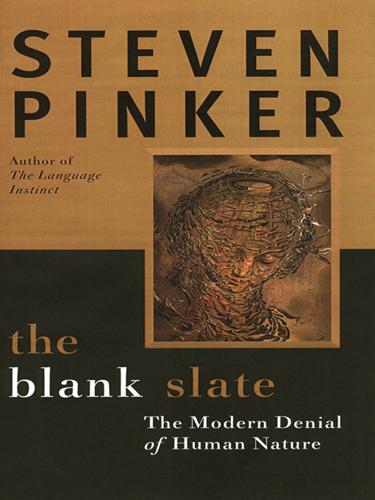
The Blank Slate: The Modern Denial of Human Nature
by
Steven Pinker
Published 1 Jan 2002
The things children experience while they are growing up are just as important as the things they are born with. Even when a behavior is heritable, an individual’s behavior is still a product of development, and thus it has a causal environmental component…. The modern understanding of how phenotypes are inherited through the replication of both genetic and environmental conditions suggests that…cultural traditions—behaviors copied by children from their parents—are likely to be crucial. If you think these are innocuous compromises that show that everyone has outgrown the nature-nurture debate, think again.
…
Now that I have tried to convince you that the slate is not blank, it is time to put culture back into the picture. That will complete the consilience that runs from the life sciences through the sciences of human nature to the social sciences, humanities, and arts. In this chapter I will lay out an alternative to the belief that culture is like a lottery. Culture can be seen instead as a part of the human phenotype: the distinctive design that allows us to survive, prosper, and perpetuate our line-ages. Humans are a knowledge-using, cooperative species, and culture emerges naturally from that lifestyle. To preview: The phenomena we call “culture” arise as people pool and accumulate their discoveries, and as they institute conventions to coordinate their labors and adjudicate their conflicts.
…
Krebs (Eds.), Handbook of evolutionary psychology: Ideas, issues, and applications. Mahwah, N.J.: Erlbaum. Krech, S. 1994. Genocide in tribal society. Nature, 371, 14–15. Krech, S. 1999. The ecological Indian: Myth and history. New York: Norton. Krubitzer, L., & Huffman, K. J. 2000. A realization of the neocortex in mammals: Genetic and epi-genetic contributions to the phenotype. Brain, Behavior, and Evolution, 55, 322–335. Krueger, R. F., Hicks, B. M., & McGue, M. 2001. Altruism and antisocial behavior: Independent tendencies, unique personality correlates, distinct etiologies. Psychological Science, 12, 397–402. Kubovy, M. 1981. Concurrent pitch segregation and the theory of indispensable attributes.

The Driver in the Driverless Car: How Our Technology Choices Will Create the Future
by
Vivek Wadhwa
and
Alex Salkever
Published 2 Apr 2017
Lamar Parker, Jeffrey Wentworth, et al., “DNA sequencing versus standard aneuploidy screening,” New England Journal of Medicine 2014;370:799– 808, http://www.nejm.org/doi/full/10.1056/NEJMoa1311037 (accessed 21 October 2016). 2. Jessica X. Chong, Kati J. Buckingham, Shalini N. Jhangiani, et al., “The genetic basis of Mendelian phenotypes: Discoveries, challenges, and opportunities,” American Journal of Human Genetics 2015;97(2):199– 215, http://www.cell.com/ajhg/abstract/S0002-9297%2815%2900245-1 (accessed 21 October 2016). 3. Aleksandar D. Kostic, Dirk Gevers, Heli Siljander, et al., “The Dynamics of the Human Infant Gut Microbiome in Development and in Progression toward Type 1 Diabetes,” Cell Host & Microbe 2015;17(2):260– 273, http://dx.doi.org/10.1016/j.chom.2015.01.001 (accessed 21 October 2016). 4.
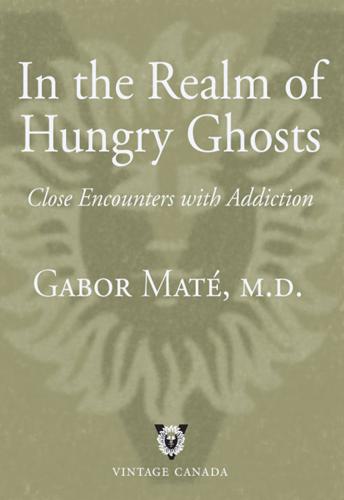
In the Realm of Hungry Ghosts: Close Encounters With Addiction
by
Gabor Mate
and
Peter A. Levine
Published 5 Jan 2010
Blum et al., “Reward Deficiency Syndrome,” American Scientist, 1 March 1996, 132–46. 3. K. Blum, “Allelic Association of Human Dopamine D2 Receptor Gene in Alcoholism,” JAMA 263(15) (18 April 1990): 2055–60. 4. J. Gelernter and H. Kranzler, “D2 Dopamine Receptor Gene (DRD2) Allele and Haplotype Frequencies and Control Subjects: No Association with Phenotype or Severity of Phenotype,” Neurospsychopharmacology 20(6) (1999): 642–49. 5. L. Dodes, The Heart of Addiction (New York: HarperCollins, 2002), 81. 6. R.E. Tarter and M. Vanyukov, “Alcoholism, a Developmental Disorder,” Journal of Consulting and Clinical Psychology, Vol. 62, No. 6 (1994): 1096–1107. 7. M.A.

Lifespan: Why We Age—and Why We Don't Have To
by
David A. Sinclair
and
Matthew D. Laplante
Published 9 Sep 2019
Cuiling, et al., “Impaired DNA Damage Response, Genome Instability, and Tumorigenesis in SIRT1 Mutant Mice,” Cancer Cell 14, no. 4 (October 7, 2008): 312–23, https://www.cell.com/cancer-cell/fulltext/S1535-6108(08)00294-8. 28. R. Mostoslavsky, K. F. Chua, D. B. Lombard, et al., “Genomic Instability and Aging-like Phenotype in the Absence of Mammalian SIRT6,” Cell 124 (January 27, 2006): 315–29, https://doi.org/10.1016/j.cell.2005.11.044. 29. The treatments work better in male mice, for reasons that are not yet known, but my former postdoc Haim Cohen at Bar-Ilan University in Israel wins the award for the best-ever name given to a transgenic mouse strain: MOSES.
…
“Senolytic Drugs Reverse Damage Caused by Senescent Cells in Mice,” National Institutes of Health, July 9, 2018, https://www.nih.gov/news-events/news-releases/senolytic-drugs-reverse-damage-caused-senescent-cells-mice. 5. R.-M. Laberge, Y. Sun, A. V. Orjalo, et al., “MTOR Regulates the Pro-tumorigenic Senescence-Associated Secretory Phenotype by Promoting IL1A Translation,” Nature Cell Biology 17, no. 8 (July 6, 2015): 1049–61, https://www.ncbi.nlm.nih.gov/pmc/articles/PMC4691706/. 6. P. Oberdoerffer, S. Michan, M. McVay, et al., “DNA Damage–Induced Alterations in Chromatin Contribute to Genomic Integrity and Age-Related Changes in Gene Expression,” Cell 135, no. 5 (November 28, 2008): 907–18, https://www.ncbi.nlm.nih.gov/pmc/articles/PMC2853975/. 7.

Good Calories, Bad Calories: Challenging the Conventional Wisdom on Diet, Weight Control, and Disease
by
Gary Taubes
Published 25 Sep 2007
“Commemorative Tribute: Edwin B. Astwood.” Endocrinology. Nov.; 99(3):1155–60. Cassidy, M. 1946. “Coronary Disease: The Harveian Oration of 1946.” Lancet. Oct. 26;248(6426):587–90. Castelli, W. P., J. T. Doyle, T. Gordon, et al. 1977. “HDL Cholesterol and Other Lipids in Coronary Heart Disease: The Cooperative Lipoprotein Phenotyping Study.” Circulation. May; 55(5):767–72. Castetter, E. F., and W. H. Bell. 1942. Pima and Papago Indian Agriculture. Albuquerque: University of New Mexico Press. Catt, K. J. 1971. An ABC of Endocrinology. London: Lancet. Cederquist, D. C., W. D. Brewer, A. N. Wagoner, D. Dunsing, and M. A. Ohlson. 1952.
…
“Jean Mayer 1920–1993.” Journal of Nutrition. June; 131(6):1651–54. Gilmore, C. P. 1977. “Taking Exercise to Heart.” New York Times. March 27; 211. Giorgino, F., A. Belfiore, G. Milazzo, et al. 1991. “Overexpression of Insulin Receptors in Fibroblast and Ovary Cells Induces a Ligand-Mediated Transformed Phenotype.” Molecular Endocrinology. March; 5(3):452–59. Giovannucci, E. 2001. “Insulin, Insulin-Like Growth Factors, and Colon Cancer: A Review of the Evidence.” Journal of Nutrition. Nov.; 131(11 suppl.):3109S–20S. ———. 1995. “Insulin and Colon Cancer.” Cancer Causes and Control. March; 6(2):164–79. Giovannucci, E., E.
…
“Estimation of Contribution of Changes in Classic Risk Factors to Trends in Coronary-Event Rates Across the WHO MONICA Project Populations.” Lancet. Feb. 26; 355(9205):675–87. Kuusisto, J., K. Koivisto, L. Mykkanen, et al. 1997. “Association Between Features of the Insulin Resistance Syndrome and Alzheimer’s Disease Independently of Apolipoprotein E4 Phenotype: Cross Sectional Population Based Study.” British Medical Journal. Oct. 25; 315(7115):1045–49. Lampedusa, G. di 1988. The Leopard. Trans. A. Colquhoun. New York: Random House. [Originally published 1958.] Landé, K. E., and W. M. Sperry. 1936. “Human Atherosclerosis in Relation to the Cholesterol Content of the Blood.”

The Stack: On Software and Sovereignty
by
Benjamin H. Bratton
Published 19 Feb 2016
In software, the design of a program both enables and configures the quality of a User's agency in relation to particular hardware and sets of actions that might be taken with it.28 For architecture, program entails a predictive determination of spatial habit sorted and staged in advance by a site's plan. The proposed design of a social organization in space is a techno-anthropological diagram of work, play, violence, and collective phenotypical embodiment, all modeled as functions of particular strategies of sorting, partition, enveloping, interfacing, planning, and sectioning. For the architect, to posit a particular arrangement of activities, of collective access points—of privacy and subjectivity and agency—is to set the stage for some desired organizational-behavioral outcome, including even serendipitous encounters.
…
For carbon-intensive products such as cars, a very large-scale shift toward using but not owning would at once save resources and offer greater end User convenience, not to mention the benefit to urban planners no longer having to waste valuable land on parking lots to store cars that will sit idle.59 The mass medium of swirling textures of robotic computational exoskeletons would also suggest innovations in the phenotypical outer surfaces of the devices themselves. They can in principle touch, connect, and intersect with one another, switching from singular to plural according to circumstances, and so the rather rigid shell and chassis form we know today could give way to other flexible morphologies. At the very least, as we are shuttled here and there in the vast multitudes of such machines, how human Users are physically positioned and what we spend our time doing will certainly not be the same as it is now.60 As discussed in the Interfaces chapter, as the “car” becomes a Cloud platform, it becomes available to an Apps economy, and to the extent that the Google Car is just a very large Android device with a very large, next generation Google Glass display, there is much for designers to work with.
…
This is the primal scene that should have been on display at the Shanghai Expo as the root pedagogy of the universal User, not the mannequin zoology of the Reids and the Hagens. This dissolution of the private human User comes not through the white noise of absolute quantification or mathematically guaranteed withdrawal from appearance, but through the plodding evolution toward alternative phenotypes in relation to manic apparatuses, both internal and external. The dispersant is not thanatos, a slouching toward deliquesce, but an activist attentiveness to the more open geographies available to our composite inhuman alternatives. So, again, forget human-centered design; we need to design for what comes next, what comes outside, what has already arrived, for the synthetic User-subjects for which another geopolitics is derived.
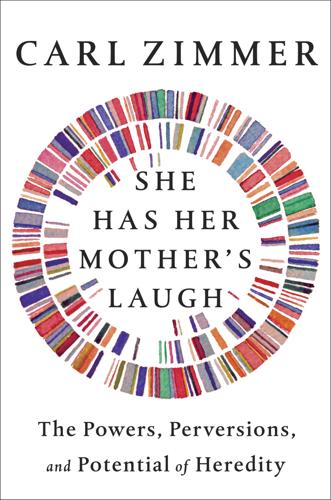
She Has Her Mother's Laugh
by
Carl Zimmer
Published 29 May 2018
The Nazi Doctors: Medical Killing and the Psychology of Genocide. New York: Basic Books. Ligon, Azra H., Steven D. P. Moore, Melissa A. Parisi, Matthew E. Mealiffe, David J. Harris, Heather L. Ferguson, Bradley J. Quade, and Cynthia C. Morton. 2005. “Constitutional Rearrangement of the Architectural Factor HMGA2: A Novel Human Phenotype including Overgrowth and Lipomas.” American Journal of Human Genetics 76:340–48. Lim, Jana P., and Anne Brunet. 2013. “Bridging the Transgenerational Gap with Epigenetic Memory.” Trends in Genetics 29:176–86. Lindholm, Anna K., Kelly A. Dyer, Renée C. Firman, Lila Fishman, Wolfgang Forstmeier, Luke Holman, Hanna Johannesson, and others. 2016.
…
“Homage to Theodor Boveri (1862–1915): Boveri’s Theory of Cancer as a Disease of the Chromosomes, and the Landscape of Genomic Imbalances in Human Carcinomas.” Environmental and Molecular Mutagenesis 50:593–601. Rietveld, Cornelius A., Tõnu Esko, Gail Davies, Tune H. Pers, and others. 2014. “Common Genetic Variants Associated with Cognitive Performance Identified Using the Proxy-Phenotype Method.” Proceedings of the National Academy of Sciences of the United States of America 111:13790–94. ———, Sarah E. Medland, Jaime Derringer, Jian Yang, Tõnu Esko, Nicolas W. Martin, Harm-Jan Westra, and others. 2013. “GWAS of 126,559 Individuals Identifies Genetic Variants Associated with Educational Attainment.”
…
“Inversions in the Third Chromosome of Wild Races of Drosophila pseudoobscura, and Their Use in the Study of the History of the Species.” Proceedings of the National Academy of Sciences 22:448–50. Sudik, R., S. Jakubiczka, F. Nawroth, E. Gilberg, and P. F. Wieacker. 2001. “Chimerism in a Fertile Woman with 46,XY Karyotype and Female Phenotype: Case Report.” Human Reproduction 16:56–58. Sung, Patrick, and Hannah Klein. 2006. “Mechanism of Homologous Recombination: Mediators and Helicases Take on Regulatory Functions.” Nature Reviews Molecular Cell Biology 7: 739–50. Sweet, James H. 1997. “The Iberian Roots of American Racist Thought.”
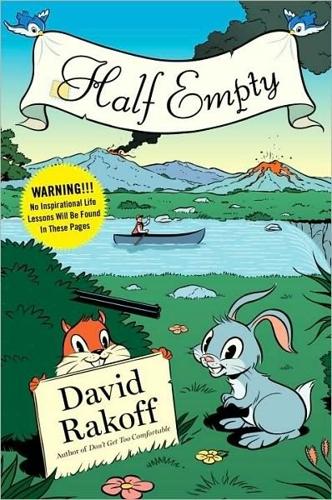
Half Empty
by
David Rakoff
Published 20 Sep 2010
It’s a little like being given a toy castle and realizing in short order that the flags on top of the turrets don’t move, and the gothic windows, blue-water moat, drawbridges, all of it, is one piece: a dead end of rigid, injection-mold plastic. Eventually, some 1,500 people arrive (that’s the estimate of the organizers; eyeballing the crowd, I’d put it at about half that number), almost all men. They run a not terribly broad gamut of exurban-straight-white-guy phenotypes. There are outer-borough packs like the cast of Entourage, minus a famous meal ticket (sample T-shirt, YOU BETTER BUY ME ANOTHER BEER BECAUSE YOUR [sic] STILL UGLY). There’s a cadre of tattooed motorcycle types, one of whose jacket reads IF YOU CAN READ THIS THE BITCH FELL OFF. Their dynamic is frosted with a homoerotic, gay-bashy, date-rapey menace.

How to Be Black
by
Baratunde Thurston
Published 31 Jan 2012
My family came over on the Mayflower and then left the United States to stay loyal to England and moved to Canada during the Revolutionary War. As his is the most expert opinion I could find on the subject, I also asked him about notions of “whiteness,” especially since most of the Stuff White People Like checklist is based on beliefs, values, and tastes, not phenotypical traits. At my high school, anyone who liked something on the list and was not white was called white, was accused of acting white. • A “coconut” is brown on the outside and white on the inside. You could use that for Indian, you could use that for Latino, too. It’s your choice of which ethnicity you wish to disparage
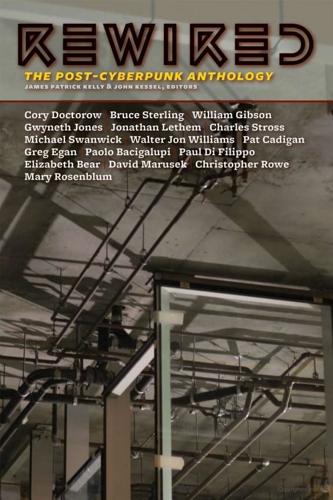
Rewired: The Post-Cyberpunk Anthology
by
James Patrick Kelly
and
John Kessel
Published 30 Sep 2007
Clients did not store their files on the net. Not if they were paying Search Engine’s fees. The disk clicked into place and Aman’s desktop lit up. A man’s head and shoulders appeared in the holofield, turning slowly. Medium-dark, about twenty, mixed Euro/African and Hispanic genes, Aman noted. About the same phenotype as New Kid—Jimi — a history of war, rape, and pillage made flesh. The Runner’s scalp gleamed naked, implanted with fiberlight gang-sign. Aman read it and sighed, thinking of his fight with Avi over his fiberlights. Tattoo your political incorrectness on your body for the cops, son. Just in case they don’t notice you on their own.
…
Who cares about the reason, as long as there’s money?” “He’s government.” Aman blinked the display away, ignored Jimi’s boot. Why in the name of everyone’s gods had Raul hired this wet-from-birth child? Well, he knew why. Aman eyed the kid’s slender, androgynous build. His boss had a thing for the African/Hispanic phenotype. Once, he’d kept it out of the business. Aman suppressed a sigh, wondering if the kid had figured it out yet. Why Raul had hired him. “How much of the data-dredging that you do is legal?” He watched Jimi think about that. “You think we’re that good, huh? That nobody ever busts us? There is always a price, kid, especially for success.”
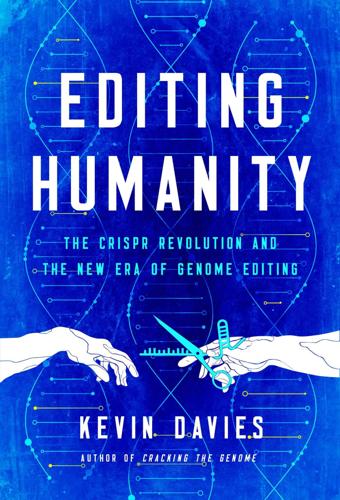
Editing Humanity: The CRISPR Revolution and the New Era of Genome Editing
by
Kevin Davies
Published 5 Oct 2020
Understandably, Barrangou calls this his favorite experiment of all time. “When you swap the two immune systems between two strains, you swap their resistance to some of these sensitivities to viruses. That was essentially the proof that there is a direct link between the CRISPR genotype and the antiviral phenotype.” The third experiment, Barrangou admits, was a bit lucky. Adjacent to the CRISPR motifs are the CRISPR-associated, or Cas, genes, which encode the nucleases that actually cleave the viral DNA. Inactivating the two biggest Cas genes had a major impact on the CRISPR system: knocking out Cas9 abolished the immune potential, whereas inactivating another gene, Csn2, left the immune potential intact but scrapped the ability of the CRISPR array to acquire new spacers.
…
Once, when asked to give his view of a superior human intelligence, Hsu offered as an example John von Neumann, the 20th-century polymath, developer of game theory, and computer science, who was capable of total recall and a photographic memory. “In my opinion,” Hsu says, “genotypes exist that correspond to phenotypes as far beyond von Neumann as he was beyond a normal human.” Hsu cofounded a PGT clinic called Genomic Prediction, located in an unremarkable office park off the New Jersey Turnpike, a short drive from Manhattan. Dressed in a T-shirt and torn genes, Nathan Treff, the company’s chief medical officer, met me in his small office decorated with framed posters of Pearl Jam and Iron Man.28 Genomic Prediction offers the usual menu of PGT services—tests for chromosomal abnormalities and genetic diseases such as CF, Tay-Sachs, and Huntington’s disease.

The Magic of Reality: How We Know What's Really True
by
Richard Dawkins
Published 3 Oct 2011
Dave McKean has illustrated and designed many award-winning books and graphic novels. He has created hundreds of album, comic and book covers, and has designed characters for two of the Harry Potter films. He has also directed two feature films, MirrorMask and Luna. Also by Richard Dawkins The Selfish Gene The Extended Phenotype The Blind Watchmaker River Out of Eden Climbing Mount Improbable Unweaving the Rainbow A Devil’s Chaplain The Ancestor’s Tale The God Delusion* The Greatest Show on Earth* * and published by Black Swan TRANSWORLD PUBLISHERS 61–63 Uxbridge Road, London W5 5SA A Random House Group Company www.transworldbooks.co.uk THE MAGIC OF REALITY A BLACK SWAN BOOK: 9780552778053 Version 1.0 Epub ISBN 9781409011415 First Published in Great Britain Black Swan edition published 2012 Copyright © Richard Dawkins 2011 Illustrations copyright © Dave McKean 2011 Richard Dawkins has asserted his right under the Copyright, Designs and Patents Act 1988 to be identified as the author of this work.
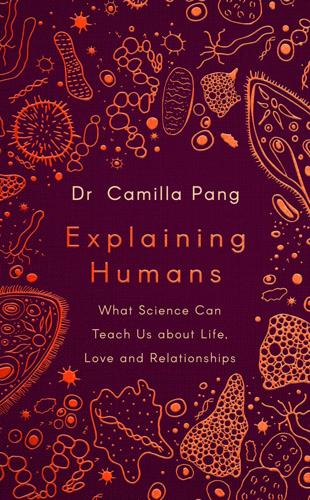
Explaining Humans: What Science Can Teach Us About Life, Love and Relationships
by
Camilla Pang
Published 12 Mar 2020
The primary structure is set by the unique order of amino acid codes predetermined by the gene sequences in our DNA – the essential coding of our physiology. Even a few amino acid variations in the hundreds that make up a single protein molecule can make a significant difference in what it will become in the cell and its external expression to others (known as the phenotype), such as eye colour. Like us as people, the fate of a protein is to some extent coded into it from the moment of creation. And just as we adapt and change as we grow, products of both our genetics and our upbringing, so too do proteins. A protein fold and a human mind both emerge as a delicate balance of biochemical interactions, determined by a combination of the inherent sequence and the surrounding environment: the intersection of nature and nurture.
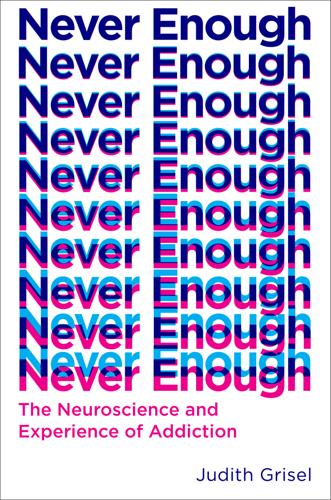
Never Enough: The Neuroscience and Experience of Addiction
by
Judith Grisel
Published 15 Feb 2019
Daniel Morales Guzmán and Aaron Ettenberg, “Runway Self-Administration of Intracerebroventricular Cocaine: Evidence of Mixed Positive and Negative Drug Actions,” Behavioral Pharmacology 18, no. 1 (2007). 4. World No Tobacco Day 2017, “Tobacco Threatens Us All: Protect Health, Reduce Poverty, and Promote Development” (Geneva: World Health Organization, 2017). 5. L. Cinnamon Bidwell et al., “Genome-Wide SNP Heritability of Nicotine Dependence as a Multidimensional Phenotype,” Psychological Medicine 46, no. 10 (2016), doi:10.1017/S0033291716000453. 6. Mariella De Biasi and John A. Dani, “Reward, Addiction, Withdrawal to Nicotine,” Annual Review of Neuroscience 34 (2011), doi:10.1146/annurev-neuro-061010–113734. 7. Aaron Ettenberg, “Opponent Process Properties of Self-Administered Cocaine,” Neuroscience and Biobehavioral Reviews 27, no. 8 (2004). 8.
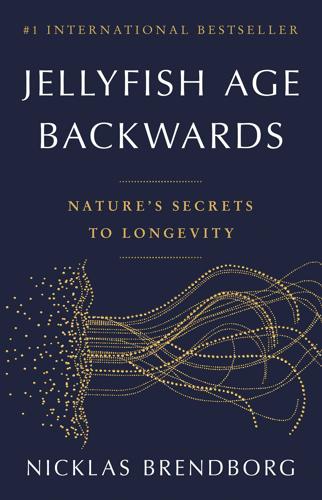
Jellyfish Age Backwards: Nature's Secrets to Longevity
by
Nicklas Brendborg
Published 17 Jan 2023
‘Naturally occurring p16 Ink4a-positive cells shorten healthy lifespan’, Nature, vol. 530, no. 7589, 2016, pp. 184–189. Xu, M., Pirtskhalava, T., Farr, J.N. ‘Senolytics improve physical function and increase lifespan in old age’, Nature Medicine, vol. 24, 2018, pp. 1246–1256. Coppé, J., Patil, C. et al. ‘Senescence-associated secretory phenotypes reveal cell-nonautonomous functions of oncogenic RAS and the p53 tumor suppressor’, PLOS Biology, vol. 6, no. 12, 2008. Muñoz-Espín, D. et al. ‘Programmed cell senescence during mammalian embryonic development’, Cell, vol. 155, no. 5, 2013, p. 1104. Demaria, M. et al. ‘An essential role for senescent cells in optimal wound healing through secretion of PDGF-AA’, Developmental Cell, vol. 31, no. 6, 2014, pp. 722–733.

How Emotions Are Made: The New Science of the Mind and Brain
by
Lisa Feldman Barrett
Published 6 Mar 2017
“Inherent (Gender) Unreasonableness of the Concept of Reasonableness in the Context of Manslaughter Committed in the Heat of Passion.” William and Mary Journal of Women and the Law 17: 249. Miller, Gregory E., and Edith Chen. 2010. “Harsh Family Climate in Early Life Presages the Emergence of a Proinflammatory Phenotype in Adolescence.” Psychological Science 21 (6): 848–856. Mitchell, Robert W., Nicholas S. Thompson, and H. Lyn Miles. 1997. Anthropomorphism, Anecdotes, and Animals. Albany, NY: SUNY Press. Mobbs, Dean, Hakwan C. Lau, Owen D. Jones, and Christopher D. Frith. 2007. “Law, Responsibility, and the Brain.”
…
Current Directions in Psychological Science 13 (1): 5–8. Turcsán, Borbála, Flóra Szánthó, Ádám Miklósi, and Enikő Kubinyi. 2015. “Fetching What the Owner Prefers? Dogs Recognize Disgust and Happiness in Human Behaviour.” Animal Cognition 18 (1): 83–94. Turkheimer, Eric, Erik Pettersson, and Erin E. Horn. 2014. “A Phenotypic Null Hypothesis for the Genetics of Personality.” Annual Review of Psychology 65: 515–540. U.S. Census Bureau. 2015. “Families and Living Arrangements.” http://www.census.gov/hhes/families. Vallacher, Robin R., and Daniel M. Wegner. 1987. “What Do People Think They’re Doing? Action Identification and Human Behavior.”

Architects of Intelligence
by
Martin Ford
Published 16 Nov 2018
The dumb algorithm works by having you adjust one of the weights slightly, followed by you measuring to see how well the network does. For evolution, that’s what you’ve got to do because the process that takes you from your genes to the finished product depends on the environment you’re in. There’s no way you can predict exactly what the phenotype will look like from the genotype, or how successful the phenotype will be because that depends on what’s going on in the world. In a neural net, however, the processor takes you from the input and the weights to how successful you are in producing the right output. You have control over that whole process because it’s all going on inside the neural net; you know all the weights that are involved.
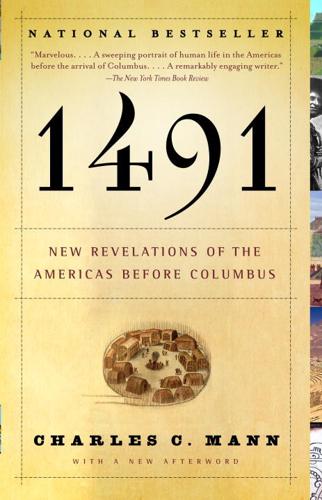
1491
by
Charles C. Mann
Published 8 Aug 2005
There followed a century of intermittent strife, which slowly drove the Botocudo to extinction. With their slightly bulging brows, deepset eyes, and square jaws, the Botocudo were phenotypically different (that is, different in appearance) from their neighbors—a difference comparable to the difference between West Africans and Scandinavians. More important, some Brazilian scientists believe, the Botocudo were phenotypically similar to the Lagoa Santa people. If the similarity was due to a genetic connection—that is, if the Botocudo were a remnant of an early non-Indian population at Lagoa Santa—studying Botocudo DNA should provide clues to the genetic makeup of the earliest Americans.
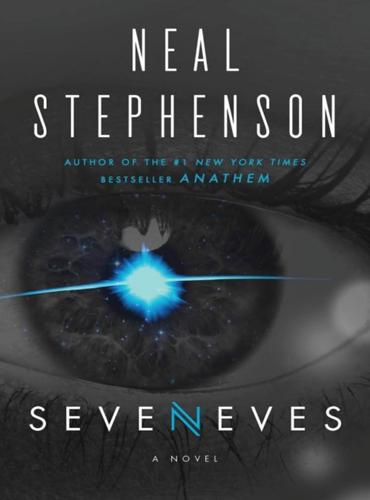
Seveneves
by
Neal Stephenson
Published 19 May 2015
But that picture had changed during the first part of the twenty-first century, as more sophisticated analysis had revealed that much of that so-called junk actually performed important roles in the functioning of cells by regulating the expression of genes. Even simple organisms, it turned out, possessed many genes that were suppressed, or silenced altogether, by such mechanisms. The central promise of genomics—that by knowing an organism’s genome, scientists could know the organism—had fallen far short as it had become obvious that the phenotype (the actual creature that met the biologist’s eye, with all of its observable traits and behaviors) was a function not only of its genotype (its DNA sequences) but also of countless nanodecisions being made from moment to moment within the organism’s cells by the regulatory mechanisms that determined which genes to express and which to silence.
…
Kath Two herself, no model, was frequently complimented on the lightness of her eyes, which were closer to green than yellow. But modern, appearance-conscious Moirans were frequently startled when they saw photographs of their Eve with her eyes that were merely greenish-brown. The shift in Moiran eye color was obvious and easily documented, but the same thing, mutatis mutandis, had happened with scores of other phenotypes among all the races. Selective mating had the power to wreak impressive changes over time, without any artificial meddling. In some cases, though, racial isolates had acquired genetic labs of their own. These had been used for many purposes, usually considered benign. In some cases, they had been used for Enhancement, which meant deliberate genetic manipulation for the purpose of rendering racial characteristics more pronounced—the artificial acceleration of what was happening “naturally” in the way of Caricaturization.
…
This was military jargon for post-traumatic epigenetic shift. “That is confirmed,” said Hope, who seemed to have finished an initial scan of Kath’s vital signs. “Higher metabolism and hyperacute senses are observable. Her microbiome is a mess; I’m tuning it up with probiotic supplements that’ll be a better fit with her new phenotype. Suggested by the nausea are big hormone shifts. Possibly predictive of some future . . .” “Testosterone poisoning?” Ty suggested, finishing Hope’s thought. Hope responded with a diffident nod of the head. Ty turned his attention back to Arjun. “So three billion people just learned that the Diggers exist.

The Bend of the World: A Novel
by
Jacob Bacharach
Published 13 Apr 2014
How much booze have you stolen from her since you and Lauren Sara contracted a bad case of each other? I can’t believe you don’t even know what she looks like. I guess she looks like the girl driving my car around like a maniac. I didn’t think she looked particularly Greek, but I’m not sure what a Greek woman looks like. Do they have a phenotype? I imagine they pop out as spry nonagenarians with a single hair on their chin and a single eyebrow on their forehead. We should ask Spiro about her. He knows all the Greeks. I can totally imagine what he’d say, too. Oh, Johnny, she ees artist. She never cumss to church. She ees twenty-fife and hass no babees.
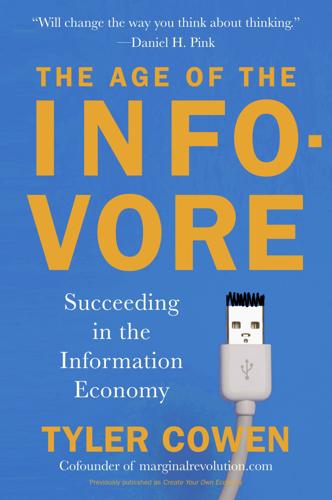
The Age of the Infovore: Succeeding in the Information Economy
by
Tyler Cowen
Published 25 May 2010
On how parents of autistic children show some partially autistic traits, see the work of Simon Baron-Cohen, for instance Simon Baron-Cohen, Sally Wheelwright, Amy Burtenshaw, and Esther Hobson, “Mathematical Talent is Linked to Autism,” in Human Nature, forthcoming; it is currently on the web at www.autismresearchcentre.com/docs/papers/2007_BC_etal_maths.pdf. The Centre for Autism Research is a good source for many of Baron-Cohen’s papers on related topics. See also on genetics J. Briskman, U Frith, and F. Happé, “Exploring the Cognitive Phenotype of Autism: Weak ‘Central Coherence’ in Parents and Siblings of Children with Autism: II. Real-life Skills and Preferences,” Journal of Child Psychology and Psychiatry and Allied Disciplines 42 (2001), 309–16. On some of the genetic issues behind autism, see Michael Rutter, “Genetic Influences and Autism,” Handbook of Autism and Pervasive Developmental Disorders (cited above), 425–52.

The Serengeti Rules: The Quest to Discover How Life Works and Why It Matters
by
Sean B. Carroll
Published 16 Feb 2016
Journal of Biological Chemistry 198: 173–178. Addis, J. T. (1992) “Policy and Practice in UW-WDNR Collaborative Programs.” In J. F. Kitchell (ed.), Food Web Management: A Case Study of Lake Mendota. New York: Springer-Verlag: 7–16. Alfirevic, A., D. Neely, J. Armitage, H. Chinoy, et al. (2014) “Phenotype Standardization for Statin-Induced Myotoxicity.” Clinical Pharmacology & Therapeutics 96(4): 470–476. Anderson, N. L., and N. G. Anderson (2002) “The Human Plasma Proteome: History, Character, and Diagnostic Prospects.” Molecular and Cellular Proteomics 1: 845–867. Anker, P. (2001) Imperial Ecology: Environmental Order in the British Empire, 1895–1945.
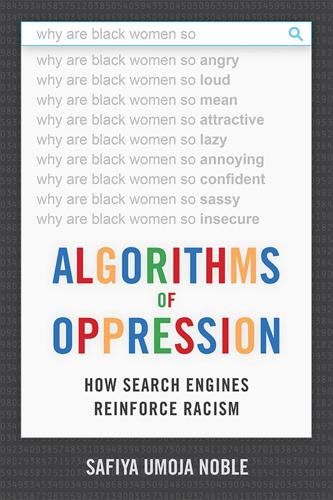
Algorithms of Oppression: How Search Engines Reinforce Racism
by
Safiya Umoja Noble
Published 8 Jan 2018
For Treitler, theories of racial formation are less salient—it does not matter whether one believes in race or not, because it is a governing paradigm that structures social logics. Race, then, is a hierarchical system of privilege and power that is meted out to people on the basis of perceived phenotype and heritage, and ethnic groups work within the already existent racial hierarchy to achieve more power, often at the expense of other ethnic groups. In Treitler’s careful study of racialization, she notes that the racial binary of White versus Black is the system within which race has been codified through legislation and economic and public policy, which are designed to benefit White Americans.

The New Nomads: How the Migration Revolution Is Making the World a Better Place
by
Felix Marquardt
Published 7 Jul 2021
For Natsuno, it was freeing herself from patriarchy and living her African dream. For Jamie, it was about transcending professional boundaries and exploring his sexuality. For Lulu, it was about following her dreams rather than conforming to those of her parents. For Thomas, it was about escaping a society that viewed his phenotype as his paramount defining feature. For Charlotte, it was about escaping the suffocating French bourgeoisie. Growing up in Le Vesinet, a posh suburb of Paris, Charlotte de Casablanca had all the accoutrements of an aristocratic lifestyle. The women of her parents’ set lived in large, gated homes, were members of the opera society and drank their lunches in chic Parisian restaurants.

Chasing My Cure: A Doctor's Race to Turn Hope Into Action; A Memoir
by
David Fajgenbaum
Published 9 Sep 2019
I know she never imagined it would be her son who was doing the research or her baby boy who could benefit from the information contained in her blood samples, but I don’t think either of us expected most of what has happened to our family over the last decade and a half. One way to try to figure out when rare variations are predisposing us to or causing a particular disease is to introduce the exact genetic change found in the human with the disease into mouse embryos. Once the mice are born, we can compare their phenotypes or particular features with those of mice that are genetically identical except for the mutation. If the mice with the particular mutation demonstrate features similar to those of the humans with the disease, but the nonmutant mice don’t, then you’ve nailed it. Ruth-Anne Langan, a PhD student in my lab, is currently studying mice with my exact mutations to investigate the gene’s possible role in iMCD.

User Stories Applied: For Agile Software Development
by
Mike Cohn
Published 1 Mar 2004
Naturally some domains are harder to understand than others. I used to write a lot of software for attorneys and paralegals, and while the software was sometimes complex, I could usually understand what they were asking for. Much later, I was involved with writing software for statistical geneticists. This domain was filled with words like phenotype, centimorgan, and haplotype. These were words I had never heard before, which made the domain much harder to grasp. This made each of the developers much more reliant on a domain expert to help us understand what we were developing. While domain experts are great resources, their usefulness is really dependent upon whether they are current or former users of the software type you are building.
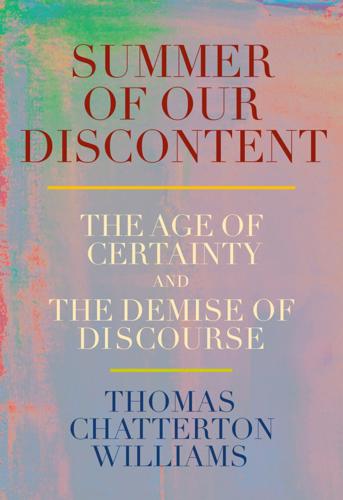
Summer of Our Discontent: The Age of Certainty and the Demise of Discourse
by
Thomas Chatterton Williams
Published 4 Aug 2025
While it is true that in 2020, according to research conducted by Pew, 92 percent of so-called single-race black, non-Hispanic voters would go on to vote for Biden, and just 8 percent backed Trump, the outright statement that racial authenticity dictates this pattern is not only insulting; it indicates a deeper mode of thinking and prejudice that contributes to a constrictive speech culture—one that is counterproductive and untenable in an increasingly mixed and dynamic society. When we profess to care about diversity—a value it would be exceedingly difficult to find a prestigious institution not openly pledging allegiance to—what do we even mean by the term? Do we mean, effectively, that the same slate of views ought to be expressed by increasingly phenotypically varied, uniformly arrived, or upwardly mobile speakers with equal access to a set of preferences, dispositions, and tastes they were socialized into through exclusionary educational filters? Is that the mountaintop we are so assiduously climbing toward? Are we saying—as was the implication of the criticism that met Jennifer Finney Boylan and that was amplified in her swift capitulation—that there really are specific ideas and associations certain identity categories are required to shun or embrace in lockstep?

Protocol: how control exists after decentralization
by
Alexander R. Galloway
Published 1 Apr 2004
XML-based efforts in Foreword: Protocol Is as Protocol Does xxi molecular biology and biochemistry have been one area of concern. But agreeing upon what exactly that standard code will be is another matter. Should the hierarchy of tags for GEML (Gene Expression Markup Language) go by <chromosome>, <phenotype>, or <gene>? There are a range of vested interests (commercial, ideological, institutional, methodological, disciplinary), and the mere decision about standards becomes a discourse on “ontology” in the philosophical sense. If layering is dependent upon portability, then portability is in turn enabled by the existence of ontology standards.

The End of Pain: How Nutrition and Diet Can Fight Chronic Inflammatory Disease
by
Jacqueline Lagace
Published 7 Mar 2014
Dijkmans et al., “The relationship between disease-related characteristics and conduction disturbances in ankylosing spondylitis,” Scand J Rheumatol, vol. 39, 2010, p. 38–41. M.A. Brown, S.H. Laval, S. Brophy et al., “Recurrence risk modelling of the genetic susceptibility to ankylosing spondylitis,” Ann Rheum Dis, vol. 59, 2000, p. 883–86. M.H. Sombekke, D. Arteta, M.A. van de Wiel et al., “Analysis of multiple candidate genes in association with phenotypes of multiple sclerosis,” Mult Scler, vol. 16, 2010, p. 652–59. R.A. Marrie, N. Yu, J. Blanchard et al., “The rising prevalence and changing age distribution of multiple sclerosis in Manitoba,” Neurology, vol. 74, 2010, p. 465–71. A. Ebringer, T. Rashid and C. Wilson, “Bovine spongiform encephalopathy, multiple sclerosis, and creutzfeldt-jakob disease are probably autoimmune diseases evoked by Acinetobacter bacteria,” Ann ny Acad Sci, vol. 1050, 2005, p. 417–28. 10 Seignalet’s Theory on the Phenomenon of Tissue Deposition as the Cause of Certain Chronic Inflammatory Diseases 1. 2. 3. 4. 5. 6.
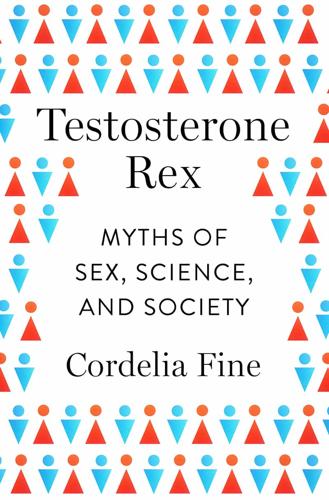
Testosterone Rex: Myths of Sex, Science, and Society
by
Cordelia Fine
Published 13 Jan 2017
This is also well summarized in Oliveira, R. F. (2009). Social behavior in context: Hormonal modulation of behavioral plasticity and social competence. Integrative and Comparative Biology, 49(4), 423–440. See also Cardoso et al. (2015), who categorize three different types of social plasticity: fixed alternative phenotypes (not applicable in the case of humans, but in other species); developmental plasticity (such as the transition between pre- and postpubescence), and behavioral flexibility. To focus on the two categories relevant to humans, developmental plasticity is proposed to involve (re)organization of structures (including the brain) and epigenetic effects, while behavioral flexibility is activational and involves biochemical switching at the neural level, and transient changes in gene expression at the genomic level.

Mind Wide Open: Your Brain and the Neuroscience of Everyday Life
by
Steven Johnson
Published 2 Jan 1999
New York: HarperCollins, 1994. – -. The Feeling of What Happens. New York: Harcourt, 1999. Darwin, Charles. The Expression of the Emotions in Man and Animals. New York: Oxford University Press, 1998. Dawkins, Richard. Climbing Mount Improbable. New York and London: W.W. Norton, 1996. – -. The Extended Phenotype: The Long Reach of the Gene. New York: Oxford University Press, 1982. – -. Unweaving the Rainbow: Science, Delusion and the Appetite for Wonder. London: The Penguin Press, 1998. De Waal, Franz. Chimpanzee Politics. Baltimore: Johns Hopkins University Press, 1982. Dean, Katie. “Attention Kids: Play this Game.”

A Brief History of Neoliberalism
by
David Harvey
Published 2 Jan 1995
Finally, the market administration of purchasing power would periodically liquidate business enterprise, for shortages and surfeits of money would prove as disastrous to business as floods and droughts in primitive society.18 The damage wrought through the ‘floods and droughts’ of fictitious capitals within the global credit system, be it in Indonesia, Argentina, Mexico, or even within the US, testifies all too well to Polanyi’s final point. But his theses on labour and land deserve further elaboration. Individuals enter the labour market as persons of character, as individuals embedded in networks of social relations and socialized in various ways, as physical beings identifiable by certain characteristics (such as phenotype and gender), as individuals who have accumulated various skills (sometimes referred to as ‘human capital’) and tastes (sometime referred to as ‘cultural capital’), and as living beings endowed with dreams, desires, ambitions, hopes, doubts, and fears. For capitalists, however, such individuals are a mere factor of production, though not an undifferentiated factor since employers require labour of certain qualities, such as physical strength, skills, flexibility, docility, and the like, appropriate to certain tasks.
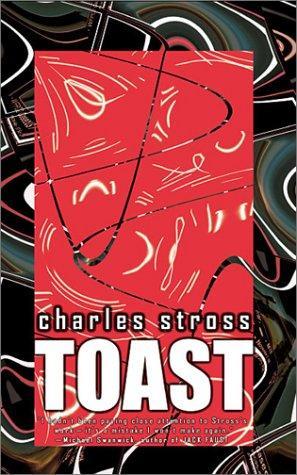
Toast
by
Stross, Charles
Published 1 Jan 2002
Leaning over the bed she dribbles acetone onto the fingers of his left hand, then unlocks the cuff: puts the bottle conveniently close to hand so he can untangle himself. “See you tomorrow. Remember, after breakfast.” She's in the doorway when he calls: “but you didn't say why!” “Your memes are just a product of your extended phenotype; if you like you can think of it as a new way of spreading your memes around,” she says. She blows him a kiss and closes the door: bends down and carefully places another cardboard box containing an uploaded kitten right outside it. Then she returns to her suite to make arrangements for the alchemical wedding.

The Estrogen Fix: The Breakthrough Guide to Being Healthy, Energized, and Hormonally Balanced
by
Mache Seibel
Published 18 Sep 2017
Schmidt et al., “Treatment of Skin Aging with Topical Estrogens,” International Journal of Dermatology 35, no. 9 (September 1996): 669–74. Chapter 9: The Estrogen Fix for a Fit, Energized Body 1“Obesity and Overweight,” World Health Organization, last modified January 2015, who.int/mediacentre/factsheets/fs311/en. 2P. Pajunen et al., “Metabolically Healthy and Unhealthy Obesity Phenotypes in the General Population: The FIN-D2D Survey,” BMC Public Health 11 (2011): 754. 3Ibid. 4C. C. Wee, R. B. Davis, and M. B. Hamel, “Comparing the SF-12 and SF-36 Health Status Questionnaires in Patients with and without Obesity,” Health and Quality of Life Outcomes 6 (2008): 11. 5M. Bogenrief, “Retailers Can’t Ignore 100 Million Plus-Size American Women Forever,” Business Insider, December 21, 2012, businessinsider.com/why-isnt-plus-size-bigger-2012-12. 6B.

Empire of Ants: The Hidden Worlds and Extraordinary Lives of Earth's Tiny Conquerors
by
Susanne Foitzik
and
Olaf Fritsche
Published 5 Apr 2021
—a new slave-making species of the tribe Formicoxenini from North America (Hymenoptera, Formicidae). Zookeys, 368, 65–77. genetic variations turn ants into slave-makers, enslaving closely related species Alleman, A. et al. (2018). Comparative analyses of co-evolving host-parasite associations reveal unique gene expression patterns underlying slavemaker raiding and host defensive phenotypes. Scientific Reports, 8, 1951. Feldmeyer, B. et al. (2017). Species-specific genes under selection characterize the co-evolution of slavemaker and host lifestyles. BMC Evolutionary Biology, 17, 237. host species develop defensive strategies against attacks by slave-makers Jongepier, E. et al. (2014).

Why We Run: A Natural History
by
Bernd Heinrich
Published 6 May 2002
Chapter 16 Allport, S. 1999. The Primal Feast. New York: Harmony Books. Battley, P. F., T. Piersma, M. W. Dietz, S. Tang, A. Dekinga, and K. Hulsman. 1999. Empirical evidence for differential organ reductions during trans-oceanic bird flight. Proc. Royal Soc. London B 267:191–95. Biebach, H. 1998. Phenotypic organ flexibility in garden warbler Sylvia borin during long-distance migration. J. Avian Biol. 29: 529–35. Karasov, W. H., and B. Pinshow. 1998. Changes in lean mass and in organs of nutrient assimilation in long-distance passerine migrant at a spring-time stopover site. Physiol. Zool. 71:435–48.

The Thinking Machine: Jensen Huang, Nvidia, and the World's Most Coveted Microchip
by
Stephen Witt
Published 8 Apr 2025
This was expensive; using a cluster of two thousand CPUs, Ng had fed thumbnails from ten million YouTube videos into a neural network in an attempt to teach it how to identify a cat. The project was costly, and the power draw was ruinous, but at the end of the training cycle, Ng’s neural net had synthesized a striking internal conception of the feline phenotype, which Ng extracted and distributed to the press. The computer’s impression of a cat was featured in a widely circulated article in The New York Times in June 2012. For Dally, the interesting finding was not that the neural network could recognize animals but that it had taken so much computation to get there.

Blink: The Power of Thinking Without Thinking
by
Malcolm Gladwell
Published 1 Jan 2005
Friesen, Facial Action Coding System, parts 1 and 2 (San Francisco: Human Interaction Laboratory, Dept. of Psychiatry, University of California, 1978). Klin has written a number of accounts of his research using Who’s Afraid of Virginia Woolf? The most comprehensive is probably Ami Klin, Warren Jones, Robert Schultz, Fred Volkmar, and Donald Cohen, “Defining and Quantifying the Social Phenotype in Autism,” American Journal of Psychiatry 159 (2002): 895–908. On mind reading, see also Robert T. Schultz et al., “Abnormal Ventral Temporal Cortical Activity During Face Discrimination Among Individuals with Autism and Asperger’s Syndrome,” Archives of General Psychiatry 57 (April 2000). Dave Grossman’s wonderful video series is called The Bulletproof Mind: Prevailing in Violent Encounters...and After.
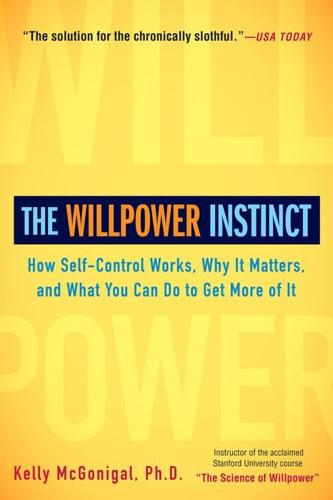
The Willpower Instinct: How Self-Control Works, Why It Matters, and What You Can Doto Get More of It
by
Kelly McGonigal
Published 1 Dec 2011
Georgiou. “Effects of Thought Suppression on Eating Behaviour in Restrained and Non-Restrained Eaters.” Appetite 54 (2010): 499–503. Page 222—Chocolate cravers study: Rezzi, S., Z. Ramadan, F. P. Martin, L. B. Fay, P. van Bladeren, J. C. Lindon, J. K. Nicholson, and S. Kochhar. “Human Metabolic Phenotypes Link Directly to Specific Dietary Preferences in Healthy Individuals.” Journal of Proteome Research 6 (2007): 4469–77. Page 223—Dieting and thought suppression: Barnes, R. D., and S. Tantleff-Dunn. “Food for Thought: Examining the Relationship between Food Thought Suppression and Weight-Related Outcomes.”

Who Are We—And Should It Matter in the 21st Century?
by
Gary Younge
Published 27 Jun 2011
This means there is greater genetic variation within ‘racial’ groups than between them.” In short, we really are more alike than we are unalike. If race is an arbitrary fiction, then “race-mixing” is a conceptual absurdity. “In neighboring populations there is much overlapping of genes and their phenotypic (physical) expressions,” the AAA continues. “Throughout history whenever different groups have come into contact they have interbred. The continued sharing of genetic materials has maintained all of humankind as a single species.” Put simply, to the extent to which “mixed race” makes any sense at all, we are all mixed race.
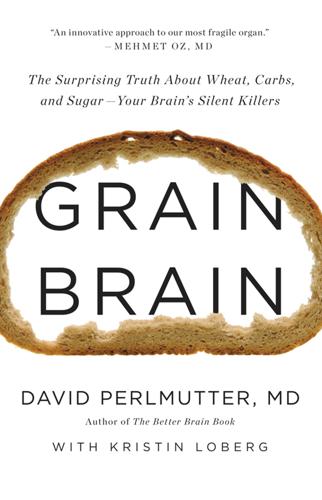
Grain Brain: The Surprising Truth About Wheat, Carbs, and Sugar--Your Brain's Silent Killers
by
David Perlmutter
and
Kristin Loberg
Published 17 Sep 2013
I’ll be covering these connections later in the book. For now, I want you to get a scope of the problem, with a firm understanding that gluten can exert effects not only on the normal brain but also on the vulnerable abnormal brain. It’s also important to keep in mind that each one of us is unique in terms of our genotype (DNA) and phenotype (how genes express themselves in their environment). Unchecked inflammation in me could result in obesity and heart disease, whereas the same condition in you could translate to an autoimmune disorder. Once again, it helps to turn to the literature on celiac disease, since celiac reflects an extreme case; it allows us to identify patterns in the course of the disorder that can have implications for anyone who consumes gluten, regardless of celiac.
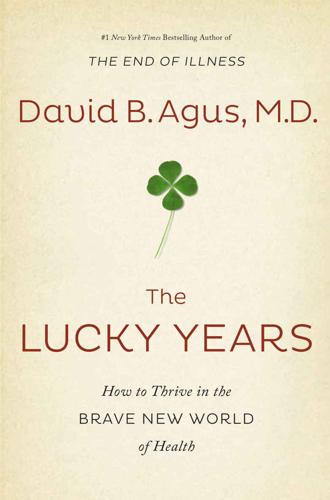
The Lucky Years: How to Thrive in the Brave New World of Health
by
David B. Agus
Published 29 Dec 2015
Chassaing, “Dietary Emulsifiers Impact the Mouse Gut Microbiota Promoting Colitis and Metabolic Syndrome,” Nature 519, no. 7541 (March 5, 2015): 92–96, doi:10.1038/nature14232, Epub February 25, 2015. 12. Multiple studies now demonstrate an association between the state of the gut microbiome and depression. Here’s one: G. De Palma et al., “Microbiota and Host Determinants of Behavioural Phenotype in Maternally Separated Mice,” Nature Communications 6 (July 28, 2015): 7735, doi:10.1038/ncomms8735. 13. Anna Azvolinsky, “Gut Microbes Influence Circadian Clock,” Scientist, April 16, 2014. 14. S. DeWeerdt, “Microbiome: A Complicated Relationship Status,” Nature 508, no. 7496 (April 17, 2014): S61–63, doi:10.1038/508S61a.

Alpha Girls: The Women Upstarts Who Took on Silicon Valley's Male Culture and Made the Deals of a Lifetime
by
Julian Guthrie
Published 15 Nov 2019
The women of Alpha Girls just happen to be great at math, engineering, finance, computers, and business. But like the fictional characters of Sex and the City, the real-life Alpha Girls were also trying to find their way in the world. When women see other women in positions of leadership or success, it reframes what they think is possible for them. Alpha Girls gives us the female phenotypes we need. These are regular women: daughters of immigrants, dentists, teachers, and merchants. They are women who invented, funded, and helped build companies that changed industries. They are women who made bucketloads of their own money. Now they are working to rewrite the rules for women in venture and beyond.

Been There, Done That: A Rousing History of Sex
by
Rachel Feltman
Published 14 May 2022
Even if we’re closer to understanding why sex happens in the first place, the reason why sex, once evolved, tends to become a species’ exclusive reproductive strategy remains murky. One of the most perplexing aspects of doing the deed is that it often (though not always) means that a species will be split into different sexes, only some of which have the ability to create new offspring. In theory, a single hermaphroditic phenotype could handily cover both sides of the sexual equation. So why waste energy on having males at all? WHY EVEN ARE MEN? The question of why males even exist is an ongoing and completely straight-faced field of study. Still, I’ll grant you that it sounds like more of a misandrist Twitter rant.

The Transhumanist Reader
by
Max More
and
Natasha Vita-More
Published 4 Mar 2013
But let me clarify that the issue is not just about body enhancement and life expansion. It concerns the larger environment in which enhancement takes place and the idea that humans might and can append their bodies and expand their lives. If our ancestors augmented the body for millions of years, since the Homo habilis and the Oldowan people and their tools, then the phenotype of appending the body is an innate and/or a learned expression. This interrelationship between the organism, the appendage, and the environment is an evidenced observation that needs to be understood, whether accepted or not, by all sides engaged in the socio-economics and biopolitics of body enhancement issues.
…
Hence, the unstoppable human motivation to invent something as amazing as a cyber-conscious mind will result in the creation of countless partially successful efforts that would be unethical if accomplished in flesh. Can cyber-embryos be ethically terminated for much the same reason so many XX chromosome embryos (i.e., anatomically phenotypic females) are terminated – because of a belief that their costs of upkeep are not worth their value as adults (Rothblatt 1997: 11–17)? By having a different form from males, women have undergone an unimaginable amount of suffering (Rothblatt 1995: 39–43). The prevailing view is that because someone has the form of software or computer hardware they are unfeeling and can thus be disposed of at will.
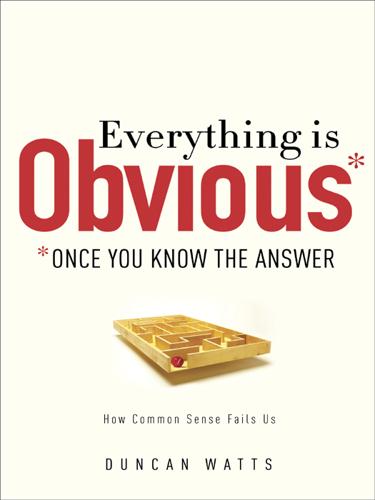
Everything Is Obvious: *Once You Know the Answer
by
Duncan J. Watts
Published 28 Mar 2011
Knowing everything about the behavior of individual neurons, for example, would be of little help in understanding human psychology, just as a complete knowledge of particle physics would be of little use in explaining the chemistry of synapses.6 Increasingly, however, the questions that scientists find most interesting—from the genomics revolution to the preservation of ecosystems to cascading failures in power grids—are forcing them to consider more than one scale at a time, and so to confront the problem of emergence head-on. Individual genes interact with each other in complex chains of activation and suppression to express phenotypic traits that are not reducible to the properties of any one gene. Individual plants and animals interact with each other in complex ways, via prey-predator relations, symbiosis, competition, and cooperation, to produce ecosystem-level properties that cannot be understood in terms of any individual species.

Singularity Rising: Surviving and Thriving in a Smarter, Richer, and More Dangerous World
by
James D. Miller
Published 14 Jun 2012
A biographer of John von Neumann wrote, “The cheapest way to make the world richer would be to get lots of his like.”21 A world with a million Johnnies, cooperating and competing with each other, has a reasonable chance of giving us something spectacular, beyond what even science fiction authors can imagine—at least if mankind survives the experience. Von Neumann’s existence highlights the tremendous variance in human intelligence, and so illuminates the minimum potential gains of simply raising a new generation’s intelligence to the maximum of what our species’ current phenotype can sustain. John von Neumann and a few other Hungarian scientists who immigrated to the United States were jokingly called “Martians” because of their strange accents and seemingly superhuman intelligence.22 If von Neumann really did have an extraterrestrial parent, whose genes arose, say, out of an advanced eugenics program that Earth couldn’t hope to replicate for a million years, then I wouldn’t infer from his existence that we could get many of him.

Scratch Monkey
by
Stross, Charles
Published 1 Jan 2011
She straightened up, and left the room as fast as possible. Which was why she wasn't there when the control system spoke quietly to the empty air: "Alert. There is an error condition associated with subject Raisa Marikova. Codon error: illegal nanostructure is associated with subject's homoeobox structure. Phenotype error: subject homoeobox specification contains abnormal neurological structure. Do you want me to proceed ..?" There was no reply. The Gatecoder waited for a long time, repeating the message occasionally. Finally, when it received no further instructions and could wait no longer, it resolved the problem by checking its default decision set.
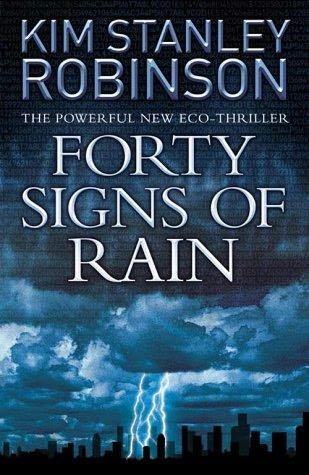
Forty Signs of Rain
by
Kim Stanley Robinson
Published 29 May 2004
When I don’t understand the rimpoche, translating him gets harder.” “So you make it up!” Frank laughed. His spirits were still high, Anna saw. “That’s what I’ve been saying all along.” He settled back against the side of the couch next to her. But Drepung shook his head. “Not making things up. Re-creation, maybe.” “Like DNA and phenotypes.” “I don’t know.” “A kind of code.” “Well, but language is never just a code.” “No. More like gene expression.” “You must tell me.” “From an instruction sequence, like a gene, to what the instruction creates. Language to thought. Or to meaning, or comprehension. Whatever! To some kind of living thought.”

The Rapture of the Nerds
by
Cory Doctorow
and
Charles Stross
Published 3 Sep 2012
The. Cloud. Full stop. If you’re feeling different about this sort of thing, it’s down to your own stimuli and how you’ve reacted to them. Far as I’m concerned, it makes no difference, but I suppose it might give you an edge here—after all, the cloud is the apex expression of humanity’s extended phenotype: you’re its ambassador, don’t you think it might help to actually like and respect it?” Huw ponders the possibility that his father-thing isn’t lying. He contemplates the contrafactual world in which he can treat the uploaded as being worthy of the same respect and compassion as meatpeople. From this, his treacherous skullfat leaps nimbly of its own accord to the potential future in which humanity—all humanity, embodied and virtual—is annihilated.
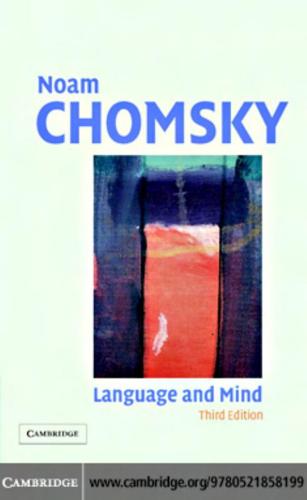
Language and Mind
by
Noam Chomsky
Published 1 Jan 1968
In a classic contemporary paper, Maynard Smith and associates trace the post-Darwinian version back to Thomas Huxley, who was struck by the fact that there appear to be “predetermined lines of modification” that lead natural selection to “produce varieties of a limited number and kind” for every species. They review a variety of such constraints in the organic world and describe how “limitations on phenotypic variability” are “caused by the structure, character, composition, or dynamics of the developmental system.” They also point out that such “developmental constraints undoubtedly play a significant role in evolution” though 180 Language and Mind there is yet “little agreement on their importance as compared with selection, drift, and other such factors in shaping evolutionary history.”

The Nocturnal Brain: Nightmares, Neuroscience, and the Secret World of Sleep
by
Dr. Guy Leschziner
Published 22 Jul 2019
O., Sun, Y., Zhou, J., Ren, R., Li, T., Tang, X., ‘Insomnia with physiological hyperarousal is associated with hypertension’, Hypertension, March 2015, 65(3): 644—50. Vgontzas, A. N., Fernandez-Mendoza, J., Liao, D., Bixler, E. O., ‘Insomnia with objective short sleep duration: the most biologically severe phenotype of the disorder’, Sleep Мed Rev, August 2013, 17(4): 241—54. Mitchell, M. D., Gehrman, P., Perlis, M., Umscheid, C. A., ‘Comparative effectiveness of cognitive behavioral therapy for insomnia: a systematic review’, BMC Fam Pract, 25 May 2012, 13: 40. Jarrin, D. C., Alvaro, P. K., Bouchard, M. A., Jarrin, S.
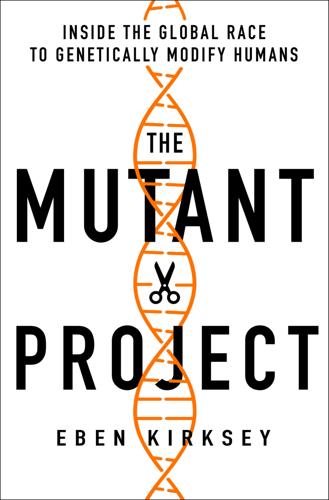
The Mutant Project: Inside the Global Race to Genetically Modify Humans
by
Eben Kirksey
Published 10 Nov 2020
Certain diseases, like sickle cell anemia and hemophilia, can be identified with a simple genetic test. As science advances, though, it has become clear that genes are small pieces of very complex puzzles. Some traits that might seem simple, like height, may be shaped more by the food we eat than by genetics. One study published in Nature found that genes only explain about “10% of the phenotypic variation in height.” Older questions about the human condition—such as whether a given behavior is a result of nature or more a product of nurture—are getting definitively resolved as more evidence is published. Researchers have been unable to find a “gay gene.” While psychiatrists with a biological bent continue to suggest that genes play a role in mental illness, scientists have not been able to develop reliable DNA tests for conditions like schizophrenia, depression, and bipolar disorder.

Decoding the World: A Roadmap for the Questioner
by
Po Bronson
Published 14 Jul 2020
Together, the Dogma RNA and the antisense strip cancel each other out, so nothing happens. Twenty years ago, this field of small-RNA interference was on the brink of being the kind of REALLY BIG NEWS that CRISPR is today. It seemed to explain a really big hole in science, which was that we couldn’t reliably match genotype to phenotype. In so many ways, DNA didn’t predict what we saw in real life, and we didn’t know why. Maybe it was that small RNA was mucking it up!! Quickly, a couple dozen leading small-RNA scientists built a public database of what all these RNA fragments did. Anyone who had studied a fragment shared their work.

A New History of the Future in 100 Objects: A Fiction
by
Adrian Hon
Published 5 Oct 2020
Two years ago, the Project worked out how to reliably make induced pluripotent stem cells—reprogrammed adult cells that can differentiate into specialized cells—from fibroblast cell cultures. They use them to create germ cells for the de-extinction process, but the same technique can also help increase genetic variability among highly endangered species. Sometimes the help travels the other way: cellular reprogramming and phenotypic simulation tools developed by the conservation community gave the Project a vital breakthrough in devising optimal surrogate chains. Likewise, improvements in the Project’s captive breeding programs, taken from the conservation community, have reduced deaths in revived species when they’re released into the environment.

We're Not Broken: Changing the Autism Conversation
by
Eric Garcia
Published 2 Aug 2021
“My mom pretty much viewed me being autistic as her fault”: Eryn Star, interview with the author, 2018. surveyed fourteen women who were diagnosed with autism later in life: Sarah Bargiela, Robyn Steward, and William Mandy, “The Experiences of Late-Diagnosed Women with Autism Spectrum Conditions: An Investigation of the Female Autism Phenotype,” Journal of Autism and Developmental Disorders 46, no. 10 (July 25, 2016): 3281–94, https://link.springer.com/article/10.1007/s10803-016-2872-8. “feeling obliged”: Bargiela, Steward, and Mandy, “Experiences of Late-Diagnosed Women,” 3288. “Whatever they told me”: Liane Holliday Willey, interview with the author, 2015.
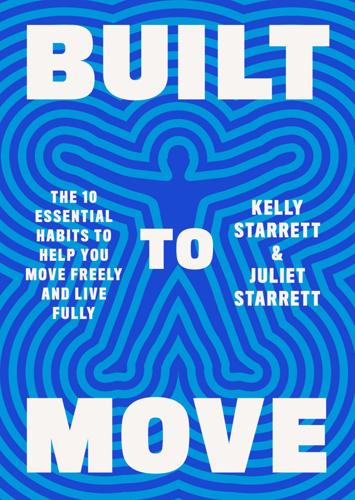
Built to Move: The Ten Essential Habits to Help You Move Freely and Live Fully
by
Kelly Starrett
and
Juliet Starrett
Published 3 Apr 2023
SPECIAL SECTION: WHAT TO DO WHEN YOU HURT Dubois, Blaise, and Jean-Francois Esculier. “Soft-Tissue Injuries Simply Need PEACE and LOVE.” British Journal of Sports Medicine 54, no. 2 (2020): 72–73. Kawashima, Masato, Noriaki Kawanishi, Takaki Tominaga, et al. “Icing after Eccentric Contraction-Induced Muscle Damage Perturbs the Disappearance of Necrotic Muscle Fibers and Phenotypic Dynamics of Macrophages in Mice.” Journal of Applied Physiology (1985) 130, no. 5 (2021): 1410–1420. St. Sauver, Jennifer L., David O. Warner, Barbara P. Yawn, et al. “Why Patients Visit Their Doctors: Assessing the Most Prevalent Conditions in a Defined American Population.” Mayo Clinic Proceedings 88, no. 1 (2013): 56–67.

Skyfaring: A Journey With a Pilot
by
Mark Vanhoenacker
Published 1 Jun 2015
Doha, Athens, Kiev, Ankara, Tripoli, Buenos Aires, Zagreb; I have landed in these cities and then flown away, without ever leaving the airport. Sometimes I have not even left my seat. In this category of cities it’s Moscow that I’ve flown to most often. I could tell you how unusually round Moscow looks, the metropolitan phenotype that is the privilege of cities born in flat and landlocked places. I might mention Moscow’s multiple, concentric ring roads—one of which roughly corresponds to the city’s medieval boundaries and gates—that glow in the pitch-black winter nights like the rings of an electric cooktop. When I flew the Airbus and went often to Moscow we were not permitted to fly over the city center, nor were we usually permitted to fly around it in a counterclockwise direction, and so we would fly nearly three-quarters of a circle around the city, as if it were an aerial traffic circle.

The Cancer Chronicles: Unlocking Medicine's Deepest Mystery
by
George Johnson
Published 26 Aug 2013
Natalie Angier told Weinberg’s story in Natural Obsessions: Striving to Unlock the Deepest Secrets of the Cancer Cell (New York: Warner Books, 1989), and Weinberg gave his own account in Racing to the Beginning of the Road: The Search for the Origin of Cancer (New York: Harmony, 1996). 22. they were named proto-oncogenes: C. Shih, R. A. Weinberg, et al., “Passage of Phenotypes of Chemically Transformed Cells via Transfection of DNA and Chromatin,” Proceedings of the National Academy of Sciences 76, no. 11 (November 1979): 5714–18 [http://www.ncbi.nlm.nih.gov/pubmed/230490]; and C. J. Tabin, R. A. Weinberg, et al., “Mechanism of Activation of a Human Oncogene,” Nature 300, no. 5888 (November 11, 1982): 143–49.
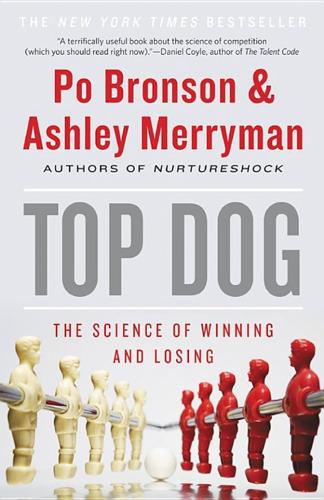
Top Dog: The Science of Winning and Losing
by
Po Bronson
and
Ashley Merryman
Published 19 Feb 2013
Onyut, Stephan Kolassa, & Thomas Elbert, “Spontaneous Remission from PTSD Depends on the Number of Traumatic Event Types Experienced,” Psychological Trauma: Theory, Research, Practice, & Policy 2, vol. 3, pp. 169–174 (2010) Kolassa, Iris-Tatjana, Stephan Kolassa, Verena Ertl, Andreas Papassotiropoulos, & Dominique J.-F. De Quervain, “The Risk of Posttraumatic Stress Disorder after Trauma Depends on Traumatic Load and the Catechol-O-Methyltransferase Val158Met Polymorphism,” Biological Psychiatry, vol. 67(4), pp. 304–308 (2010) Lachman, Herbert, “Does COMT Val158Met Affect Behavioral Phenotypes: Yes, No, Maybe?,” Neuropsychopharmacology, vol. 33(13), pp. 3027–3029 (2008) Lonsdorf, Tina B., Christian Rück, Jan Bergström, Gerhard Andersson, Arne Öhman, Nils Lindefors, & Martin Schalling, “The COMTVal158Met Polymorphism Is Associated with Symptom Relief During Exposure-Based Cognitive-Behavioral Treatment in Panic Disorder” BMC Psychiatry, vol. 10, pp. 99 et seq. (2010) Reuter, Martin, Clemens Frenzel, Nora T.

The End of Doom: Environmental Renewal in the Twenty-First Century
by
Ronald Bailey
Published 20 Jul 2015
“ecologists have come to understand the reality”: John Kricher, “Nothing Endures but Change: Ecology’s Newly Emerging Paradigm.” Northeastern Naturalist 5.2 (1998): 165–174. biophilosophy.ca/Teaching/2070papers/kricher.pdf. Ecological fitting is the process: Salvatore J. Agosta and Jeffrey A. Klemens, “Ecological Fitting by Phenotypically Flexible Genotypes: Implications for Species Associations, Community Assembly and Evolution.” Ecology Letters 11.11 (November 2008): 1123–1134. onlinelibrary.wiley.com/doi/10.1111/j.1461-0248.2008.01237.x/abstract;jsessionid=A431ABA8A6A229AFA3B54DE9747AD57D.f01t01. Species don’t need to coevolve: David M.

Origins: How Earth's History Shaped Human History
by
Lewis Dartnell
Published 13 May 2019
Bowen, G. J., W. C. Clyde, P. L. Koch, S. Ting, J. Alroy, T. Tsubamoto, Y. Wang and Y. Wang (2002). ‘Mammalian Dispersal at the Paleocene/Eocene Boundary’, Science 295(5562): 2062–5. BP (2017). BP Statistical Review of World Energy, June 2017. Bradley, B. J. (2008). ‘Reconstructing phylogenies and phenotypes: a molecular view of human evolution’, Journal of Anatomy 212(4): 337–53. Bramble, D. M. and D. E. Lieberman (2004). ‘Endurance running and the evolution of Homo’, Nature 432(7015): 345–52. Braudel, F. (1995). A History of Civilizations, Penguin. Brison, D. N. (2005). Caves in the Odyssey, 14th International Congress of Speleology.
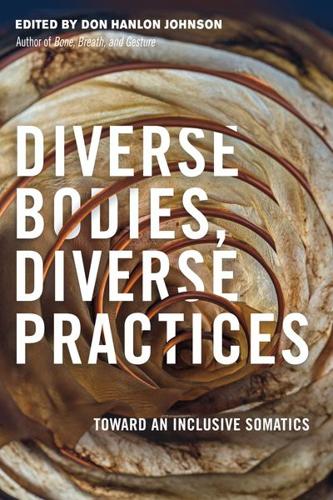
Diverse Bodies, Diverse Practices: Toward an Inclusive Somatics
by
Don Hanlon Johnson
Published 10 Sep 2018
There has been a long and ongoing discussion about the origins and validity of homosexuality as a genetic and naturally occurring phenomenon.18 Theories from both the nature and nurture domains have continuously striven to ascribe gayness to a single causative factor as opposed to a more complex source in which multiple factors in relationship are responsible for homosexuality and its theoretical natural place in genetic difference—in other words, epigenetic factors.19 The neurobiology of sexuality and orientation is still a young science, with theories ranging from the effects of prenatal hormonal disturbances to the influence of number of siblings and other epigenetic changes, and studies remain inconclusive as to any single causative agent.20 A number of researchers have conjectured that homosexuality occurs through a process termed “canalized sexual development.”21 A simple way to state the theory is that it takes a quantity of genetic material and environmental factors to collectively create a threshold point, after which the genes are then channeled into a phenotypical sexual orientation. How that person expresses his or her identity is still a matter of some choice, depending on the person’s environment (nurture) and resiliency. 18 Kinsey et al., 1948; Mondimore, 1996; G. D. Wilson and Rahman, 2005. 19 Hamer and Copeland, 1994; Rice, Friberg, and Gavrilets, 2012; Roughgarden, 2005. 20 Ngun, Ghahramani, Sánchez, Bocklandt, and Vilain, 2011. 21 Rice, Friberg, and Gavrilets, 2012.
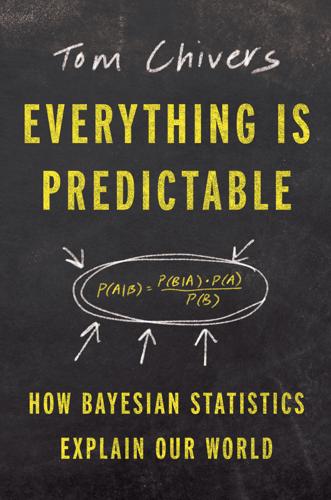
Everything Is Predictable: How Bayesian Statistics Explain Our World
by
Tom Chivers
Published 6 May 2024
It’s obviously true that frequentist methods are perfectly good in lots of scenarios—Lakens is right that it would have been pointless including prior probabilities on the search for the Higgs boson, for instance, when you’re dealing with p-values that you’d only see one time in 11 million or something if there wasn’t a Higgs to find. DNA sequencing in biology—genome-wide association studies looking at the entire length of the genome in hundreds of thousands of people, and comparing them with phenotypic outcomes like diseases, height, intelligence, whatever—might not need Bayes either. It’s also obviously true that taking a Bayesian approach wouldn’t, on its own, solve the problems that science faces. If journals still preferentially publish novel, surprising results over unsurprising ones, and if academics are still operating on a publish-or-perish model and need to get papers into journals if they’re going to succeed, then there will still be perverse incentives in academia.

Empireland: How Imperialism Has Shaped Modern Britain
by
Sathnam Sanghera
Published 28 Jan 2021
As Andrew Porter concedes in an essay in The Cambridge Illustrated History of the British Empire, ‘racialist attitudes, with their elements of hostility, unthinking abuse, and aggression, existed before “races” were scientifically identified or classified.’ And as Patrick Wolfe stresses in Traces of History: Elementary Structures of Race, even though it was only in the later eighteenth century that ‘race’ became a distinctive concept, ‘this is not to suggest that Europeans failed to recognise and act on observable phenotypic differences until the 1780s. Precursors, “blackmores” and their ilk, are legion. Nor is it to pretend that an overland journey from, say, Botswana to Finland would fail to disclose a significant degree of anatomico-geographical correlation.’ George Best, an Elizabethan sea captain, in 1578 described Africans as being ‘black and loathsome’.
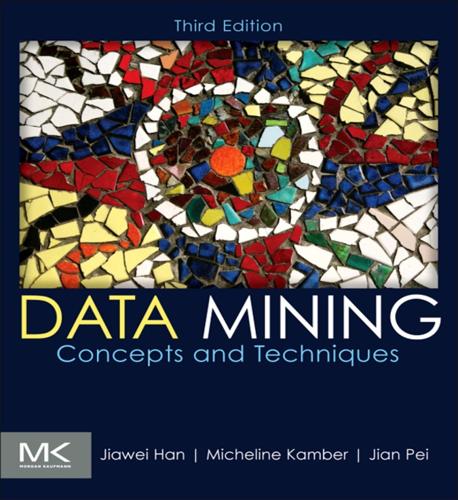
Data Mining: Concepts and Techniques: Concepts and Techniques
by
Jiawei Han
,
Micheline Kamber
and
Jian Pei
Published 21 Jun 2011
They hold the information to build and maintain a living organism's cells and pass genetic traits to offspring. Synthesis of a functional gene product, either RNA or protein, relies on the process of gene expression. A genotype is the genetic makeup of a cell, an organism, or an individual. Phenotypes are observable characteristics of an organism. Gene expression is the most fundamental level in genetics in that genotypes cause phenotypes. Using DNA chips (also known as DNA microarrays ) and other biological engineering techniques, we can measure the expression level of a large number (possibly all) of an organism's genes, in a number of different experimental conditions.

Palo Alto: A History of California, Capitalism, and the World
by
Malcolm Harris
Published 14 Feb 2023
Fearing the quota consequences, growers began importing Filipino workers in large numbers starting in 1923, and they attracted over 30,000 workers to the state by the end of the decade.46 As American nationals (the Philippines was a U.S. territory at the time), Filipinos were entitled to travel freely within the American empire; as phenotypically distinguishable from whites and Mexicans, they could be relegated by growers to a lower wage tier. It didn’t seem to hurt that most Filipinos spoke English and were familiar with American customs and culture. With racial wage scales came a segregated production process: lower-wage Mexican and Filipino workers were overused in the fields, while higher-wage whites worked in the packing sheds and canneries.
…
Though anti-miscegenation laws still technically applied, racial formation remained undercooked in this period and in practice enforcement was left up to clerks, who filled out a blank field on the marriage license marked “race.” Rather than the more detailed categories we’ll see established, clerks used skin phenotype descriptions like “white,” “black,” and “brown,” all three of which could apply and were applied to Punjabis. As long as they matched their proposed spouse, the marriage fulfilled racial requirements. See Karen Leonard, Making Ethnic Choices: California’s Punjabi Mexican Americans (Temple University Press, 2010), 68.

We Were Eight Years in Power: An American Tragedy
by
Ta-Nehisi Coates
Published 2 Oct 2017
Pilgrims and revolutionaries fled oppression and dreamed of a world where they might be free. And to pull the dream out of their imaginings, to bring the theory into reality, they broke our backs, taking up the very cudgel of oppression that had first sent them to flight. And I now knew that the line dividing black and white America was neither phenotypical, nor cultural, nor even genetic. In fact, there was no line at all, no necessary division of any kind. We were not two sides of a coin. We were not the photonegative of each other. To be black in America was to be plundered. To be white was to benefit from, and at times directly execute, this plunder.
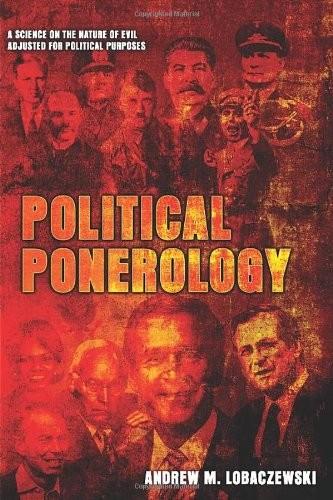
Political Ponerology (A Science on the Nature of Evil Adjusted for Political Purposes)
by
Andrew M. Lobaczewski
Published 1 Jan 2006
Many features of human character have a hereditary bases in genes located in the same X chromosome; although it is not a rule. Something similar could apply to the majority of the psychological anomalies to be discussed below. Significant progress has recently been made in cognition of a series of chromosomal anomalies resulting from defective division of the reproductive cells and their phenotypic psychological symptoms. This state of affairs enables us to initiate studies on their ponerogenetic role and to introduce conclusions which are theoretically valuable, something which is in effect already being done. In practice, however, the majority of chromosomal anomalies are not transferred to the next generation; furthermore, their carriers constitute a very small proportion of the population at large, and their general intelligence is lower than the social average, so their ponerological role is even smaller than their statistical distribution.

Nerds on Wall Street: Math, Machines and Wired Markets
by
David J. Leinweber
Published 31 Dec 2008
Think of flipping the switches to maximize payoff. The switches are bits, binary digits; and in real problems, there are many more of them, representing complex solutions as binary chromosomes. Start with an initial population, random for purists, with known good solutions included for engineers. Let the programs (phenotypes) 1 1 1 1 1 1 1 0 0 0 0 0 0 0 Output Signal Binary Chromosome Coding of Model Parameters Payoff (e.g., profit, predictive power) Adjust these . . . to maximize this. Figure 8.1 Payoff drives the genetic algorithm. Source: Adapted from Genetic Algorithms in Search, Optimization and Machine Learning by Dave Goldberg (Addison-Wesley, 1989), 8. 186 Nerds on Wall Str eet N Chromosomes 1 2 3 4 5 6 Create Initial Population N Fitness 1 10 1' 2 20 2' 3 60 3' 4 3 Select Best 5 0 Individuals for 6 50 ‘Breedingí Evaluate Fitness Yes Keep on Breeding N 1' 2' 3' 4' 1' 2' 3' 4' Crossover to Create Hybrids in New Population, Mutate.

10% Human: How Your Body's Microbes Hold the Key to Health and Happiness
by
Alanna Collen
Published 4 May 2015
Science Translational Medicine 5: 1–11. Chapter 3 1. Sessions, S.K. and Ruth, S.B. (1990). Explanation for naturally occurring supernumerary limbs in amphibians. Journal of Experimental Biology 254: 38–47. 2. Andersen, S.B. et al. (2009). The life of a dead ant: The expression of an adaptive extended phenotype. The American Naturalist 174: 424–433. 3. Herrera, C. et al. (2001). Maladie de Whipple: Tableau psychiatrique inaugural. Revue Médicale de Liège 56: 676–680. 4. Kanner, L. (1943). Autistic disturbances of affective contact. Nervous Child 2: 217–250. 5. Centers for Disease Control and Prevention (2014).

Seventeen Contradictions and the End of Capitalism
by
David Harvey
Published 3 Apr 2014
For example, gender relations such as patriarchy underpin contradictions to be found in ancient Greece and Rome, in ancient China, in Inner Mongolia or in Ruanda. The same applies to racial distinctions, understood as any claim to biological superiority on the part of some subgroup in the population vis-à-vis the rest (race is not, therefore, defined in terms of phenotype: the working and peasant classes in France in the mid-nineteenth century were openly and widely regarded as biologically inferior beings – a view that was perpetuated in many of Zola’s novels). Racialisation and gender discriminations have been around for a very long time and there is no question that the history of capitalism is an intensely racialised and gendered history.

The Diet Myth: The Real Science Behind What We Eat
by
Tim Spector
Published 13 May 2015
Oral, capsulized, frozen, fecal microbiota transplantation for relapsing Clostridium difficile infection. 3 http://www.openbiome.org/practitioner-map/ 4 Alang, N., OFID.2015.http://ofid.oxfordjournals.org/content/2/1/ofv004.full.pdf+html. Weight gain after Fecal Microbial Transplant; http://www.scientificamerican.com/article/fecal-transplants-may-up-risk-of-obesity-onset/ 5 Charakida, M., Lancet Diabetes Endocrinol (Aug 2014); 2(8): 648–54. Lifelong patterns of BMI and cardiovascular phenotype in individuals aged 60–64 years in the 1946 British birth cohort study: an epidemiological study. 6 Everard, A., Proc Natl Acad Sci (28 May 2013); 110(22): 9066–71. Crosstalk between Akkermansia muciniphila and intestinal epithelium controls diet-induced obesity. 7 Zimmermann, A., Microbial Cell (2014); 1(5): 150–3.

The Case Against Sugar
by
Gary Taubes
Published 27 Dec 2016
Some of us have been passed genes that predispose us to get fat and/or diabetic in the world in which we now live, or to get fat and diabetic at younger ages than others, and these are the genes we pass on to our children. Geneticists would say some of us have susceptible “genotypes” that respond to our environment—sugar-rich, as I’m suggesting—and this is why we manifest the obese and diabetic phenotype, or manifest it at younger ages than others. Some of us don’t. Researchers studying the Pima and other Native American tribes have assumed that their genes, for whatever reason, make them particularly susceptible to diabetes and obesity when they eat modern Western diets and live modern Western lifestyles.

The Evolution of Everything: How New Ideas Emerge
by
Matt Ridley
The calculations as to the numbers of events happening inside the human body at any one time are mine but based on information supplied by Patrick Cramer and Venki Ramakrishnan. On selfish DNA, Dawkins, R. 1976. The Selfish Gene. Oxford University Press; Doolittle, W.F. and Sapienza, C. 1980. Selfish genes, the phenotype paradigm and genome evolution. Nature 284:601–603; and Crick, F.H.C. and Orgel, L. 1980. Selfish DNA: the ultimate parasite. Nature 284:604–607. On ‘junk DNA’, Brosius, J. and Gould, S.J. 1992. On ‘genomenclature’: A comprehensive (and respectful) taxonomy for pseudogenes and other ‘junk DNA’. PNAS 89:10706–10710.

Bread, Wine, Chocolate: The Slow Loss of Foods We Love
by
Simran Sethi
Published 10 Nov 2015
Regardless of the source, the diversity within those seeds has progressively diminished as researchers and farmers have selected crops exhibiting the small number of traits needed to sustain production. As Aaron and Peter explained, global production of arabica (and robusta) depends on just a handful of cultivated varieties, with little difference at the genetic level or in their physical (phenotypic) characteristics. This is a problem for all the reasons we now know: Reduced diversity equals increased risk. Coffee trees grow best between 19 and 25 degrees Celsius (66 and 77 degrees Fahrenheit). The productivity of arabica, as Tadesse Woldemariam Gole from the Ethiopian Coffee Forest Forum (ECFF) and Aaron Davis of Kew Royal Botanic Gardens explain in their study on coffee and climate change, is “tightly linked to climatic variability, and is thus strongly influenced by natural climatic oscillations.”50 Since 1960, the average temperature in Ethiopia has increased by 1.3 degrees Celsius (2.3 degrees Fahrenheit).51 Drought and erratic rainfall have severely compromised coffee production in the southern part of the country.52 The climate modeling done by Kew Gardens and ECFF estimates that, as a result of a warming planet, the areas that contain the highest concentration of coffee diversity could be reduced by 65 to nearly 100 percent by 2080.53 Not only would the country that gave the world coffee no longer be able to produce it, but the diversity we need to be able to access it would also be lost.
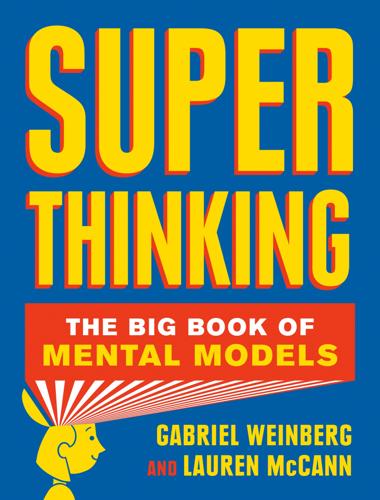
Super Thinking: The Big Book of Mental Models
by
Gabriel Weinberg
and
Lauren McCann
Published 17 Jun 2019
You should also know that there are other personality dimensions besides introversion versus extroversion, though we find that one to be the most actionable on a day-to day basis. There is no widespread agreement on the aspects of personality to focus on, but Lewis Goldberg presented one leading theory in “The Structure of Phenotype Personality Traits” that suggests there are five key factors: Extroversion (outgoing versus reserved) Openness to experience (curious versus cautious) Conscientiousness (organized versus easygoing) Agreeableness (compassionate versus challenging) Neuroticism (nervous versus confident) Beyond personality, you’re probably familiar with IQ (intelligent quotient), a measure of general intelligence.

Green Philosophy: How to Think Seriously About the Planet
by
Roger Scruton
Published 30 Apr 2014
The equilibrium solution to such a game is not ‘always defect’ but rather ‘tit-for-tat’, that is to say, co-operate at first, and then respond to whatever the other does by doing the same – defecting if the other defects, cooperating otherwise. This result has surprising consequences, first in showing that rational beings have a spontaneous disposition to evolve co-operative strategies in response to situations of potential conflict;157 secondly, in suggesting that genes that produce co-operative dispositions in their phenotypes will be selected for, so that a spirit of ‘altruism’ will be the norm in social animals.158 Those results, put to fertile use by Robert Axelrod and John Maynard Smith, have transformed both the social and the biological sciences in recent decades. They have also been extended into the domain of ‘common pool resources’ by Elinor Ostrom, in a striking book that backs up a far-reaching a priori account of equilibrium solutions to multi-player games with finely observed empirical studies of successfully managed commons.159 The sharing of water among farmers in arid regions of Spain, for example, has been managed over centuries by locally constituted rules and courts established under local jurisdiction.

The Great Experiment: Why Diverse Democracies Fall Apart and How They Can Endure
by
Yascha Mounk
Published 19 Apr 2022
“I don’t think they have any bearing on how a person defines their racial identity.” But since she didn’t want to throw away her shot, she dutifully submitted her answers. After scrutinizing her photo and her questionnaire, the committee decided to disqualify Araújo. Though she had identified as pardo all her life, she supposedly lacked the requisite “Afro-descendant phenotype.” Araújo sued to be reinstated. She won, but this only gave her an opportunity to take part in another humiliating round of the application process: an in-person verification of her racial credentials. Like dozens of other job candidates, Araújo flew to Salvador at short notice. She made her way to a government office in which five experts were perched atop a platform, scrutinizing a parade of job candidates.
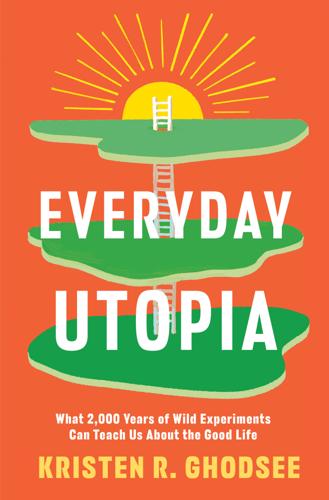
Everyday Utopia: What 2,000 Years of Wild Experiments Can Teach Us About the Good Life
by
Kristen R. Ghodsee
Published 16 May 2023
Chapter 2: Home Is Where the Walls Are 1 “Combatting Loneliness One Conversation at a Time: A Call to Action,” Jo Cox Commission on Loneliness, April 2018, https://www.ageuk.org.uk/globalassets/age-uk/documents/reports-and-publications/reports-and-briefings/active-communities/rb_dec17_jocox_commission_finalreport.pdf. 2 “Loneliness at Epidemic Levels in America,” Cigna, https://www.newsroom.cigna.com/loneliness-in-america. 3 Elisheva Levy, “Beyond Monogamous Architecture; Rebellious Homes for Communism,” From the Margins podcast, May 24, 2020, https://www.anchor.fm/from-the-margins-arch/episodes/Elisheva-Levy—-Beyond-Monogamous-architecture-Rebellious-homes-for-communism-eee948. 4 “Neolithic Site of Çatalhöyük,” World Heritage List, UNESCO, https://www.whc.unesco.org/en/list/1405/. 5 Marin A. Pilloud and Clark Spencer Larsen, “ ‘Official’ and ‘Practical’ Kin: Inferring Social and Community Structure from Dental Phenotype at Neolithic Çatalhöyük, Turkey,” Physical Anthropology 145, no. 4 (August 2011): 519–30. 6 Pilloud and Larsen, “ ‘Official’ and ‘Practical’ Kin,” 527–28. 7 Plato, Republic, Book III, 417a. 8 James 1: 27 (New International Version). 9 George W. Bernard, “The Dissolution of the Monasteries,” History 96, no. 324 (September 2011): 390. 10 “Heaven on Earth: The Plan of St.

Why Machines Learn: The Elegant Math Behind Modern AI
by
Anil Ananthaswamy
Published 15 Jul 2024
If we plot the height on the x-axis and the weight on the y-axis, we’ll have three points, each representing one person. For argument’s sake, consider a plot of 500 such persons. The data would be represented by a 500×2 matrix (500 rows, 2 columns). If all the people in the dataset were men of similar phenotype and genotype, from the same geographical region and ethnicity, who ate the same kind of food and had much the same behaviors regarding exercise, you’d expect their heights and weights to be related. As the height increases, so does the weight. But what if the data included people who were heavier or skinnier?

Warnings
by
Richard A. Clarke
Published 10 Apr 2017
Christina Larson, “China’s Bold Push into Genetically Customized Animals,” Scientific American, Nov. 17, 2015, www.scientificamerican.com/article/china-s-bold-push-into-genetically-customized-animals (accessed Oct. 11, 2016). 8. Hao Yin, Wen Xue, et al., “Genome Editing with Cas9 in Adult Mice Corrects a Disease Mutation and Phenotype,” Nature Biotechnology 32, no. 6 (Mar. 30, 2014): 551–53, DOI:10.1038/nbt.2884. 9. Chengzhu Long, Leonela Amoasii, et al., “Postnatal Genome Editing Partially Restores Dystrophin Expression in a Mouse Model of Muscular Dystrophy,” Science 351, no. 6271 (Jan. 22, 2016): 400–403, DOI: 10.1126/science.aad5725. 10.

Innovation and Its Enemies
by
Calestous Juma
Published 20 Mar 2017
Additionally, the scientific assessments required by the current FDA regulatory process for transgenic animals are heavily focused on the potential risks, but do not pay sufficient attention to the benefits of the new technology over existing products. There are two issues with the FDA approach to transgenic animals. First, if the process for producing the technology changes without changing the product (such as the phenotype of the transgenic organism), a new risk assessment becomes necessary even though there is no substantial difference in the product. Second, the evaluation of process-based risks fails to compare the risks and benefits associated with the new product to those of existing production systems, even though it is precisely this difference that should form the basis of a regulatory decision on new technologies.26 This distorts public perceptions of the hazards of animal biotechnology.
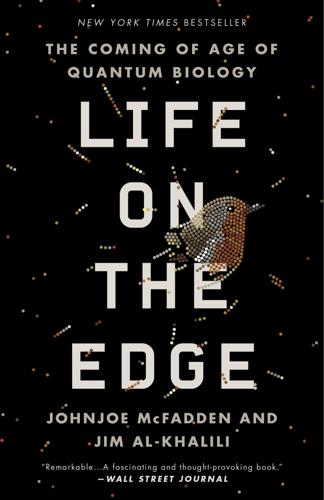
Life on the Edge: The Coming of Age of Quantum Biology
by
Johnjoe McFadden
and
Jim Al-Khalili
Published 14 Oct 2014
*4 Of course, it could as easily be called Wallace’s theory of natural selection, after the great British naturalist and geographer Alfred Russel Wallace who, during a bout of malarial fever while traveling in the tropics, came up with virtually the same idea as Darwin. *5 The term “genetics” was coined in 1905 by William Bateson, an English geneticist and a proponent of Mendel’s ideas; the term “gene” was suggested four years later by Danish botanist Wilhelm Johannsen to distinguish between the outward appearance of an individual (its phenotype) and its genes (its genotype). *6 The alternative tautomeric forms of guanine and thymine are known as enol or keto, depending on the position of the coding protons; whereas cytosine and adenine tautomers are known as keto or amino forms. *7 Escherichia coli. *8 By which we mean one lacking a rigorous mathematical framework

What to Think About Machines That Think: Today's Leading Thinkers on the Age of Machine Intelligence
by
John Brockman
Published 5 Oct 2015
As it stands, comparisons are invariably biased in our favor. In particular, we underestimate the role that “smart environments” play in enabling displays of human cognitive prowess. From the design of roads and buildings to the user-friendly features of consumer goods, the technologically extended phenotype has created the illusion that reality is inherently human-shaped. To be sure, we’re quickly awakened from the dogmatic slumbers of universal mastery as soon as our iPhone goes missing. By comparison, even the cleverest machine is forced to perform in a relatively dumb (judged by its own standards) environment—namely, us.

Giving the Devil His Due: Reflections of a Scientific Humanist
by
Michael Shermer
Published 8 Apr 2020
(Ed Wilson was the previous year’s winner and was there to co-present the award, along with Walter Kistler, to Richard.) Dawkins was awarded a gold medal and a check for his work “that redirected the focus of the ‘levels of selection’ debate away from the individual animal as the unit of evolution to the genes, and what he has called their extended phenotypes.” Simultaneously, the award description continues, Dawkins “applied a Darwinian view to culture through the concept of memes as replicators of culture.” Finally, “Dr. Dawkins’ contribution to a new understanding of the relationship between the human genome and society is that both the gene and the meme are replicators that mutate and compete in parallel and interacting struggles for their own propagation.”

Invisible Women
by
Caroline Criado Perez
Published 12 Mar 2019
Jones, Betsy G. and Casanova, Robert A. (2016), ‘Auditing sex- and gender-based medicine (SGBM) content in medical school curriculum: a student scholar model’, Biology of Sex Differences, 7:Suppl 1, 40 10 Marts and Keitt (2004) 11 Karp, Natasha A. et al (2017), ‘Prevalence of sexual dimorphism in mammalian phenotypic traits’, Nature Communications, 8:15475 12 Martha L. Blair (2007), ‘Sex-based differences in physiology: what should we teach in the medical curriculum?’, Advanced Physiological Education, 31, 23–5 13 Ibid. 14 https://www.ncbi.nlm.nih.gov/pmc/articles/PMC4800017/ Jan 2016 15 https://theconversation.com/man-flu-is-real-but-women-get-more-autoimmune-diseases-and-allergies-77248 16 https://www.washingtonpost.com/national/health-science/why-do-autoimmune-diseases-affect-women-more-often-than-men/2016/10/17/3e224db2-8429-11e6-ac72-a29979381495_story.html?
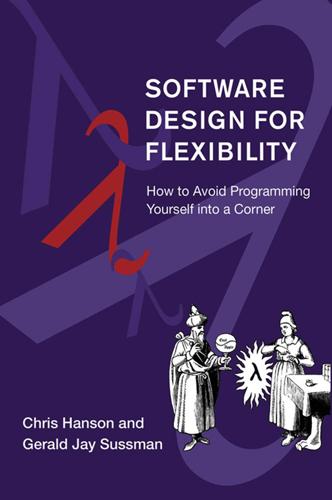
Software Design for Flexibility
by
Chris Hanson
and
Gerald Sussman
Published 17 Feb 2021
As a consequence, many point mutations (changes of a single nucleotide) do not change the protein specified by a coding region. Also, quite often the substitution of one amino acid with a similar one does not impair the biological activity of a protein. These degeneracies provide ways that variation can accumulate without obvious phenotypic consequences. Furthermore, if a gene is duplicated (not an uncommon occurrence), the copies may diverge silently, allowing the development of variants that may become valuable in the future, without interfering with current viability. In addition, the copies can be placed under different transcriptional controls.

Ultra-Processed People: The Science Behind Food That Isn't Food
by
Chris van Tulleken
Published 26 Jun 2023
A description of an “obesogenic” eating style that promotes higher energy intake and is associated with greater adiposity in 4.5-year-old children: results from the GUSTO cohort. Physiology & Behavior 2017; 176: 107–16. 22 Llewellyn CH, van Jaarsveld CHM, Boniface D, et al. Eating rate is a heritable phenotype related to weight in children. American Journal of Clinical Nutrition 2008; 88: 1560–66. 23 de Wijk RA, Zijlstra N, Mars M, et al. The effects of food viscosity on bite size, bite effort and food intake. Physiology & Behavior 2008; 95: 527–32. 24 Forde CG, Mars M, de Graaf K. Ultra-processing or oral processing?
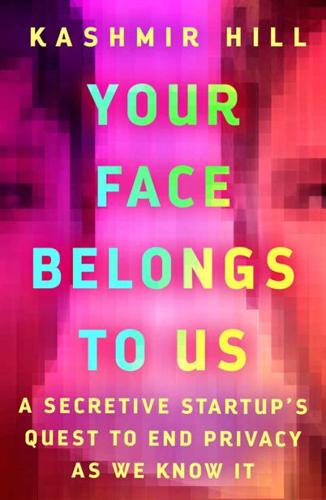
Your Face Belongs to Us: A Secretive Startup's Quest to End Privacy as We Know It
by
Kashmir Hill
Published 19 Sep 2023
GO TO NOTE REFERENCE IN TEXT “the sweet spot”: Facial Recognition Technology: Part I: Its Impact on Our Civil Rights and Liberties, Hearing before the Committee on Oversight and Reform, House of Representatives, 116th Cong., May 22, 2019, https://docs.house.gov/meetings/GO/GO00/20190522/109521/HHRG-116-GO00-Transcript-20190522.pdf, 29. GO TO NOTE REFERENCE IN TEXT She had discovered: Joy Buolamwini, “How I’m Fighting Bias in Algorithms” (video), TEDxBeaconStreet, March 9, 2017. GO TO NOTE REFERENCE IN TEXT investigated products: Joy Buolamwini, “Gender Shades: Intersectional Phenotypic and Demographic Evaluation of Face Datasets and Gender Classifiers,” MIT Media Lab, September 2017. GO TO NOTE REFERENCE IN TEXT “Our faces may well be”: Facial Recognition Technology: Part I: Its Impact on Our Civil Rights and Liberties, 5. GO TO NOTE REFERENCE IN TEXT “private companies from collecting”: Written testimony of Joy Buolamwini, May 22, 2019, https://www.congress.gov/116/meeting/house/109521/witnesses/HHRG-116-GO00-Wstate-BuolamwiniJ-20190522.pdf.

These Strange New Minds: How AI Learned to Talk and What It Means
by
Christopher Summerfield
Published 11 Mar 2025
The human eye was not hand-designed by a benevolent creator, but emerged via natural selection, as small light-sensitive patches of skin (eye spots) were incrementally refined over countless generations into a powerful ocular device. Natural selection is a blind computational process in which genetic code for successful phenotypes is more likely to be propagated down the lineage. Invoking Paley, the biologist Richard Dawkins has called evolution ‘the blind watchmaker’. The recipe for intelligent computation thus relies on a few surprisingly simple ingredients. These ingredients are the processes that teach a gargantuan neural network what goes with what in a stream of input data, in order to predict which token comes next.

Liars and Outliers: How Security Holds Society Together
by
Bruce Schneier
Published 14 Feb 2012
So while these seem like possible evolutionary explanations, there is still controversy in evolutionary biology over the levels of selection at work in any given instance. Certainly not all evolutionary biologists would accept these necessarily simple descriptions, although they would concur with the general outline that there was some evolutionary advantage to the possession of certain genes manifesting certain phenotypes in certain populations. (7) Among other things, human intelligence is unique in the complexity of its expression, and its ability to comprehend the passage of time. More related to security, humans are vastly ahead of even chimpanzees in their ability to understand cause and effect in the physical world

The Rise and Fall of the Third Chimpanzee
by
Jared Diamond
Published 2 Jan 1991
Nance et al, 'A model for the analysis of mate selection in the marriages of twins', Acta Geneticae Medicae Gemellologiae 29, pp. 91-101 (1980); D. Thiessen and B. Gregg, 'Human assortative mating and genetic equilibrium: an evolutionary perspective', Ethology and Sociobiology 1, pp. 111—40 (1980); D.M. Buss, 'Human mate selection', American Scientist 73, pp. 47–51 (1985); A.C. Heath and L.J. Eaves, 'Resolving the effects of phenotype and social background on mate selection', Behavior Genetics 15, pp. 75–90 (1985); and A.C. Heath et al, 'No decline in assortative mating for educational level', Behavior Genetics 15, pp. 349-69 (1985). Also relevant is a book by B.I. Murstein, Who Will Marry Whom? Theories and Research in Marital Choice (Springer, New York, 1976).

Sacred Economics: Money, Gift, and Society in the Age of Transition
by
Charles Eisenstein
Published 11 Jul 2011
Separation is not an ultimate reality, but a human projection, an ideology, a story. As in all cultures, our defining Story of the People has two deeply related parts: a Story of Self, and a Story of the World. The first is the discrete and separate self: a bubble of psychology, a skin-encapsulated soul, a biological phenotype driven by its genes to seek reproductive self-interest, a rational actor seeking economic self-interest, a physical observer of an objective universe, a mote of consciousness in a prison of flesh. The second is the story of Ascent: that humanity, starting from a state of ignorance and powerlessness, is harnessing the forces of nature and probing the secrets of the universe, moving inexorably toward our destiny of complete mastery over, and transcendence of, nature.
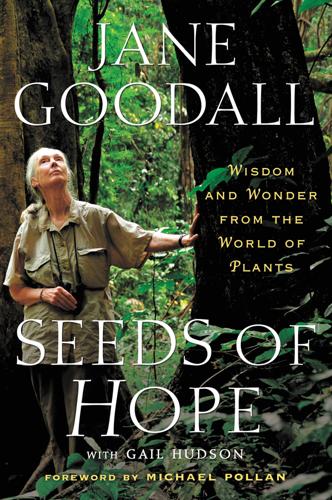
Seeds of Hope: Wisdom and Wonder From the World of Plants
by
Jane Goodall
Published 1 Apr 2013
John Roach, “2000-Year-Old Seed Sprouts, Sapling Is Thriving,” National Geographic News, November 22, 2005, http://news.nationalgeographic.com/news/2005/11/1122_051122_old_seed.html 4. “Noah’s grandfather” Sallon, op. cit. Roach, op. cit. Gen. 5:27–29 (New Standard Revised Version). 5. “carbon-dated at about 1,300 years” J. Shen-Miller et al., “Long-Living Lotus: Germination and Soil Gamma-Irradiation of Centuries-Old Fruits, and Cultivation, Growth, and Phenotypic Abnormalities of Offspring,” American Journal of Botany 89 (2002): 236–47. J. Shen-Miller et al., “Exceptional Seed Longevity and Robust Growth: Ancient Sacred Lotus from China,” American Journal of Botany 82 (2005): 1367–80. Ray Ming et al., “Genome of the Long-Living Sacred Lotus (Nelumbo nucifera Gaertn.),” Genome Biology 14 (2013): in press, doi:10.1186/gp-2013-14-5-r41. 6.

Water: A Biography
by
Giulio Boccaletti
Published 13 Sep 2021
Religion mattered, and the deep past held both justification and worrying omens for Britain. Science was not on their side in the nineteenth century either. Darwin’s Origin of Species disposed of the need for higher intelligence. In particular, natural selection appeared to provide a plausible explanation for different human phenotypes, at a time when biblical polygenic theory—the idea that humans belonged to different races as they descended separately from Noah’s children Shem, Japhet, and Ham—was the dominant, slavery-supporting theory. If the morality of empire was to survive the onslaught of Darwinism, physical evidence for biblical narratives was badly needed.
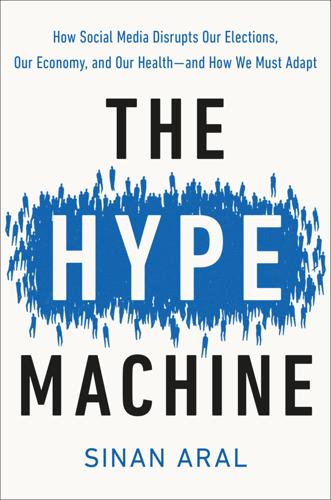
The Hype Machine: How Social Media Disrupts Our Elections, Our Economy, and Our Health--And How We Must Adapt
by
Sinan Aral
Published 14 Sep 2020
Norton, 2008). “chronic disease without redeeming features”: R. S. Weiss, Loneliness: The Experience of Emotional and Social Isolation (Cambridge, Mass.: MIT Press, 1973). loneliness motivates us to create, repair, and maintain our social relationships: John T. Cacioppo and Stephanie Cacioppo, “The Phenotype of Loneliness,” European Journal of Developmental Psychology 9, no. 4 (2012): 446–52. It modulates the dopamine reward system in our brains: Naomi I. Eisenberger, Matthew D. Lieberman, and Kipling D. Williams, “Does Rejection Hurt? An fMRI Study of Social Exclusion,” Science 302, no. 5643 (2003): 290–92.

Doppelganger: A Trip Into the Mirror World
by
Naomi Klein
Published 11 Sep 2023
many more people deciding to get tested: Steve Silberman, Neurotribes: The Legacy of Autism and the Future of Neurodiversity (New York: Penguin Random House, 2015), 41–43, 421. better at recognizing autism in girls … Black, Indigenous, and Latino boys: Laura Hull, K. V. Petrides, and William Mandy, “The Female Autism Phenotype and Camouflaging: A Narrative Review,” Review Journal of Autism and Developmental Disorders 7, no. 4 (2020): 306–317; Terra Vance, “What’s in a Word: Autism and White Privilege,” Neuroclastic: The Autism Spectrum According to Autistic People, June 2, 2019; David S. Mandell et al., “Race Differences in the Age at Diagnosis Among Medicaid-Eligible Children with Autism,” Journal of the American Academy of Child & Adolescent Psychiatry 41, no. 12 (2002): 1447–1453.

The Age of Spiritual Machines: When Computers Exceed Human Intelligence
by
Ray Kurzweil
Published 31 Dec 1998
New York: McGraw-Hill, 1980. Dawkins, Richard. The Blind Watchmaker: Why the Evidence of Evolution Reveals a Universe Without Design. New York: W W Norton and Company, 1986. ————. “The Evolution of Evolvability.” Artificial Life, edited by Christopher G. Langton. Reading, MA: Addison-Wesley, 1988. ————. The Extended Phenotype. San Francisco: Freeman, 1982. _______. River out of Eden: A Darwinian View of Life. New York: Basic Books, 1995. _______. “Universal Darwinism.” Evolution from Molecules to Men, edited by D. S. Bendall. Cambridge: Cambridge University Press, 1983. ________. The Selfish Gene. Oxford: Oxford University Press, 1976.

The Rational Optimist: How Prosperity Evolves
by
Matt Ridley
Published 17 May 2010
For Palaeolithic hominids, hand-axe making was like walking, something you grew good at through practice and never thought about again. It was almost a bodily function. It was no doubt passed on partly by imitation and learning, but unlike modern cultural traditions it showed little regional and local variation. It was part of what Richard Dawkins called ‘the extended phenotype’ of the erectus hominid species, the external expression of its genes. It was instinct, as inherent to the human behavioural repertoire as a certain design of nest is to a certain species of bird. A song thrush lines its nest with mud, a European robin lines its nest with hair and a chaffinch lines its nest with feathers – they always have and they always will.

The Zero Marginal Cost Society: The Internet of Things, the Collaborative Commons, and the Eclipse of Capitalism
by
Jeremy Rifkin
Published 31 Mar 2014
Taking the analogy one step further, if we were to print out the data on all human diversity, the database would be at least four orders of magnitude bigger—or 10,000 times the size of the first database. Mapping and sequencing the genomes is just the beginning. Understanding and chronicling all the relationships between genes, tissues, organs, organisms, and external environments, and the perturbations that trigger genetic mutations and phenotypical responses, is so far beyond any kind of complex system ever modeled that only an interdisciplinary approach, leaning heavily on the computational skills of the information scientists, can hope to accomplish the task. Titans in the computer field like Bill Gates and Wall Street insiders like Michael Milken poured funds into the new field of bioinformatics in hopes of advancing the collaborative partnership of the information and Life Sciences.
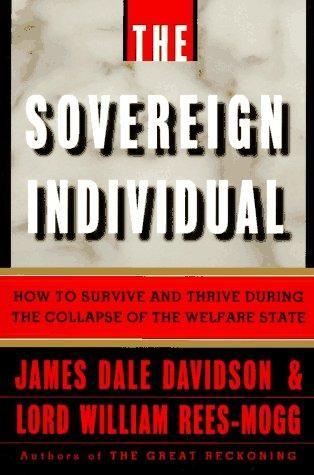
The Sovereign Individual: How to Survive and Thrive During the Collapse of the Welfare State
by
James Dale Davidson
and
William Rees-Mogg
Published 3 Feb 1997
The identification mechanism employed to harness emotional loyalty to the nationstate makes use of various devices that would have been markers of kinship in the primitive past "to link the individual's inclusive fitness concerns" with the interests of the state.63 For example, Shaw and Wong focus on five identification devices used by modern nationstates to mobilize their populations against out-groups. These are: 1. a common language 2. a shared homeland 3. similar phenotypic characteristics 4. a shared religious heritage and 5. the belief of common descent64 Such characteristics, of course, would have distinguished the nucleus ethnic group in the primitive past. Much of the appeal of nationalism can be traced to the way that these identification devices have been adopted and dressed up in the language of kinship, as illustrated in the French soldiers' chant quoted above.
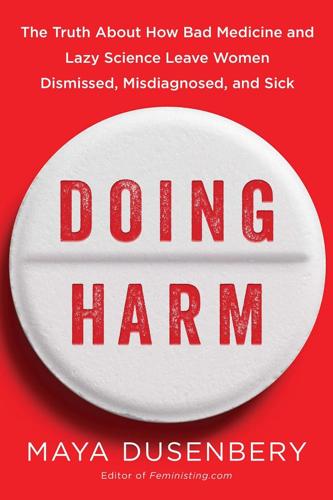
Doing Harm: The Truth About How Bad Medicine and Lazy Science Leave Women Dismissed, Misdiagnosed, and Sick
by
Maya Dusenbery
Published 6 Mar 2018
Tomiyama et al., “Misclassification of Cardiometabolic Health When Using Body Mass Index Categories in NHANES 2005–2012,” International Journal of Obesity 40, no. 5 (May 2016), doi:10.1038/ijo.2016.17. A 2008 study found that 57 percent of overweight women . . . Rachel P. Wildman et al., “The Obese Without Cardiometabolic Risk Factor Clustering and the Normal Weight with Cardiometabolic Risk Factor Clustering: Prevalence and Correlates of 2 Phenotypes Among the US Population (NHANES 1999–2004),” Archives of Internal Medicine 168, no. 15 (August 2008), doi:10.1001/archinte.168.15.1617. According to a 2016 nationally representative survey . . . American College of Cardiology, “Many Women Not Properly Informed of Heart Risk by Their Doctors: Survey Shows Women Are Less Likely to Get Recommended Monitoring, Often Told to Lose Weight,” ScienceDaily, March 23, 2016, www.sciencedaily.com/releases/2016/03/160323185532.htm.
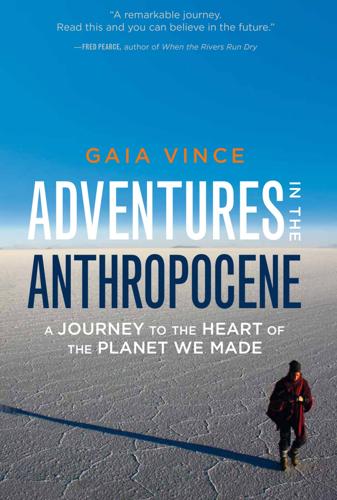
Adventures in the Anthropocene: A Journey to the Heart of the Planet We Made
by
Gaia Vince
Published 19 Oct 2014
C., ‘Anthropogenic noise decreases urban songbird diversity and may contribute to homogenization, Global Change Biology 19(4) (2013), 1075–84. doi:10.1111/gcb.12098 Miranda, A. C., Schielzeth, H., Sonntag, T., & Partecke, J., ‘Urbanization and its effects on personality traits: a result of microevolution or phenotypic plasticity?’, Global Change Biology 19(9) (2013), 2634–4. doi:10.1111/gcb.12258 Snell-Rood, E. C., & Wick, N., ‘Anthropogenic environments exert variable selection on cranial capacity in mammals’, Proceedings of the Royal Society B: Biological Sciences 280(1769) (2013), 20131384. doi:10.1098/rspb.2013.1384 Harris, S.

Model Thinker: What You Need to Know to Make Data Work for You
by
Scott E. Page
Published 27 Nov 2018
Of the resulting six pairs—bananas and pickles, pickles and chicken, caramel and pickles, bananas and chicken, caramel and bananas, and caramel and chicken—only one sounds remotely appealing. We only need choose that option. We enjoy the caramel bananas. We ignore the rest.4 A similar logic applies in evolutionary systems. Phenotypic combinations that produce positive interactions—a hard shell and short sturdy legs—remain in the population, while survival of the fittest works against combinations that produce negative interactions. We do not encounter many slow-footed, tasty animals with vibrant colors. If they ever existed, they have been caught and eaten.

Transcend: The New Science of Self-Actualization
by
Scott Barry Kaufman
Published 6 Apr 2020
The influence of temperament and mothering on attachment and exploration: An experimental manipulation of sensitive responsiveness among lower-class mothers with irritable infants. Child Development, 65(5), 1457–1477. 47. Belsky, J., & Pluess, M. (2013). Beyond risk, resilience, and dysregulation: Phenotypic plasticity and human development. Development and Psychopathology, 25(4, part 2), 1243–1261. 48. Influenced by Adler’s perspective—after informally studying with him in the 1930s—Maslow wrote a brief unpublished essay in 1957 called “Limits, Controls, and the Safety Need in Children.” In the essay, Maslow points out that young children need external controls and can even feel “contempt, scorn, and disgust for their weak parents.”

The Quiet Coup: Neoliberalism and the Looting of America
by
Mehrsa Baradaran
Published 7 May 2024
The logic and practice of empire that justified hundreds of years of ruthless exploitation abroad until it became “a permanent, supreme aim of politics” was eventually—inevitably—imported back to Europe, a phenomenon Arendt called “the imperial boomerang.” It was colonialism, Arendt believed, that was the “true origins of totalitarianism.”6 The era of empire thus fell at the hands of its own logic. The racial myths that justified the slaughter and enslavement of people based on nothing more than phenotypes had become embedded into law, thanks in part to John Locke’s theories that held that God had granted the “wild” and “uncultivated” blank land “to the use of the Industrious and Rational,” which were white men like him. This hierarchy was “natural” and thereby fixed. After industrial cultivation, aided by the slave trade, bore new fortunes in cotton, sugar, tobacco, and rubber, the rational and the industrious did what was rational and industrious.
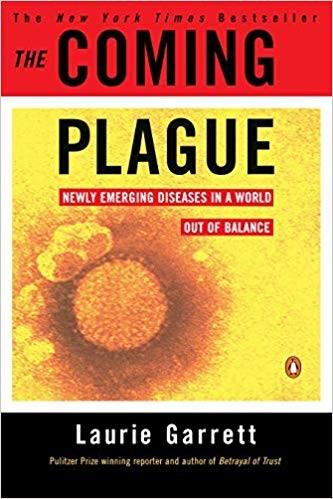
The Coming Plague: Newly Emerging Diseases in a World Out of Balance
by
Laurie Garrett
Published 31 Oct 1994
Meyerhans, et al., “Genetic Organization of a Chimpanzee Lentivirus Related to HIV-1,” Nature 345 (1990): 356–58. The details were presented as follows: This showed that over two-thirds of the chimpanzee viral genes and HIV-1 were the same, versus far less commonality between SIVcpz and the other simian viruses or HIV-2. 196 J. N. Nkengasong, M. Peeters, B. Willems, et al., “Phenotypic and Antigenic Properties of HIV-1 Isolates from Cameroon,” I International Conference on Human Retroviruses and Related Infections, Washington, D.C., December 12–16, 1993. 197 G. Myers, K. Maclnnes, and L. Myers, “Phylogenetic Moments in the AIDS Epidemic,” Chapter 12 in S. S. Morse, ed., Emerging Viruses (Oxford, Eng.: Oxford University Press, 1993). 198 There are about 9,700 nucleotides, or discrete bits of genetic information, inside an HIV virus.
…
Ewald, Evolution of Infectious Disease (New York: Oxford University Press, 1993). 120 In Robert Gallo’s lab at the National Cancer Institute researchers showed in 1990 that mixing different HIV-1 quasispecies and a mouse retrovirus resulted in an expansion of the range of cell types the viruses were able to infect, suggesting that the various viral strains swapped useful genes. See P. Lusso, M. di Veronese, B. Ensoli, et al., “Expanded HIV-1 Cellular Tropism by Phenotypic Mixing with Murine Endogenous Retroviruses,” Science 247 (1990): 848–52. 121 R. M. Anderson, R. M. May, M. C. Boily, et al., “The Spread of HIV-1 in Africa: Sexual Contact Patterns and the Predicted Demographic Impact of AIDS,” Nature 352 (1991): 581–89. 122 P. W. Ewald, “Transmission Modes and the Evolution of Virulence,” Human Nature 2 (1990): 1–30; and P.

Year's Best SF 15
by
David G. Hartwell; Kathryn Cramer
Published 15 Aug 2010
I marvel at the speed of this creature’s thoughts: almost as fast as Eri flies, orders of mag faster than any mammalian nerve impulse. Some kind of organic superconductor perhaps, something that passes chilled electrons almost resistance-free out here in the freezing void. I acquaint myself with phenotypic plasticity and sloppy fitness, that fortuitous evolutionary soft-focus that lets species exist in alien environments and express novel traits they never needed at home. Perhaps this is how a life form with no natural enemies could acquire teeth and claws and the willingness to use them. The Island’s life hinges on its ability to kill us; I have to find something that makes it a threat.

The Body Keeps the Score: Brain, Mind, and Body in the Healing of Trauma
by
Bessel van Der Kolk M. D.
Published 7 Sep 2015
Application of Sensory Modulation Principles in the Treatment of Traumatized Adolescents in Residential Settings,” Journal of Family Violence 28, no. 7 (2003): 729–38. CHAPTER 8: TRAPPED IN RELATIONSHIPS: THE COST OF ABUSE AND NEGLECT 1. W. H. Auden, The Double Man (New York: Random House, 1941), 2. S. N. Wilson, et al., “Phenotype of Blood Lymphocytes in PTSD Suggests Chronic Immune Activation,” Psychosomatics 40, no. 3 (1999): 222–25. See also M. Uddin, et al., “Epigenetic and Immune Function Profiles Associated with Posttraumatic Stress Disorder,” Proceedings of the National Academy of Sciences of the United States of America 107, no. 20 (2010): 9470–75; M.
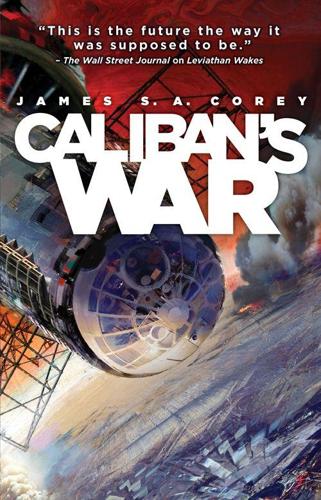
Caliban's War
by
James S. A. Corey
Published 6 Jun 2012
To his left, the scientific group was dressed in the best clothes they had, dress jackets that had fit ten years before, and suits representing at least half a dozen different design seasons. Earthers and Martians and Belters all mixed in that group, but the talk was just as exclusionary: nutrient grades, adjustable permeability membrane technologies, phenotypic force expressions. Those were both his people from the past and his future. The shattered and reassembled society of Ganymede. If it hadn’t been for the middle table with Bobbie and the crew of the Rocinante, he would have been there, talking about cascade arrays and non-visible-feeding chloroplasts.
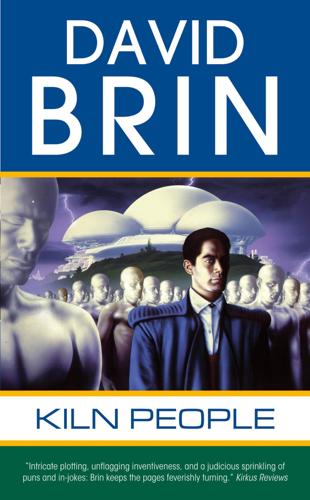
Kiln People
by
David Brin
Published 15 Jan 2002
Enthusiasts promised new-improved minds, telepathic perception, even transcendent power. But cyberstuff fell short of opening grand portals. It became another useful tool set, just another incremental brick in the arch. Back in Grandma's time, biology was the queen science. Decipher the genome, the proteome, and their subtle interplay with phenotype! Solve ecology's riddle and achieve sustainability in nature! These were attainments every bit as vital as harnessing flame or kicking the habit of all-out war. Yet where were answers to the truly deep questions? Religion promised those, though always in vague terms, while retreating from one line in the sand to the next.

The Climate Book: The Facts and the Solutions
by
Greta Thunberg
Published 14 Feb 2023
In spite of the intimidation and death threats I continue to face, my calling to protect and fight against this company has become vital, not only in an attempt to save my people and my homeland, but because there is only one Kavango, only one Okavango Delta. What happens in Kavango will not stay in Kavango! Ayisha Siddiqa I was born in the northern region of Pakistan and was raised with the belief that, just as your phenotype is composed of DNA from your parents, your spirit is made up of the spirits that came before you. My grandparents don’t watch over me, they live within me. That’s why the fight for climate justice is, for me, a fight for love. This world is held together by memories of the ones we love and I am trying to preserve them while I still have time.

Nexus: A Brief History of Information Networks From the Stone Age to AI
by
Yuval Noah Harari
Published 9 Sep 2024
Stauffer, “ ‘On the Origin of Species’: An Unpublished Version,” Science 130, no. 3387 (1959): 1449–52. 22. Britannica, s.v. “Homo erectus—Ancestor, Evolution, Migration,” accessed Jan. 4, 2024, www.britannica.com/topic/Homo-erectus/Relationship-to-Homo-sapiens. 23. Michael Dannemann and Janet Kelso, “The Contribution of Neanderthals to Phenotypic Variation in Modern Humans,” American Journal of Human Genetics 101, no. 4 (2017): 578–89. 24. Ernst Mayr, “What Is a Species, and What Is Not?,” Philosophy of Science 63, no. 2 (1996): 262–77. 25. Darren E. Irwin et al., “Speciation by Distance in a Ring Species,” Science 307, no. 5708 (2005): 414–16; James Mallet, Nora Besansky, and Matthew W.
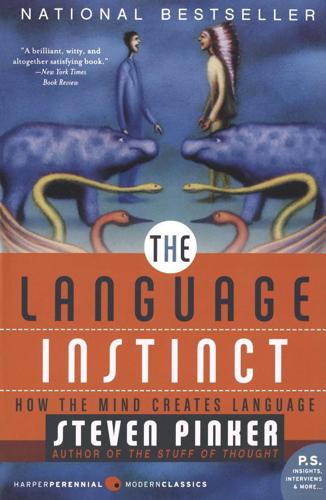
The Language Instinct: How the Mind Creates Language
by
Steven Pinker
Published 1 Jan 1994
Third, because an organism is a complex, self-preserving system, it is governed by dynamic physiological processes that are lawful even when hidden. For example, the biochemical organization of an organism enables it to grow and move, and is lost when it dies. Fourth, because organisms have separate genotypes and phenotypes, they have a hidden “essence” that is conserved as they grow, change form, and reproduce. For example, a caterpillar, chrysalis, and butterfly are in a crucial sense the same animal. Remarkably, people’s unschooled intuition about living things seems to mesh with these core biological facts, including the intuitions of young children who cannot read and have not set foot in a biology lab.
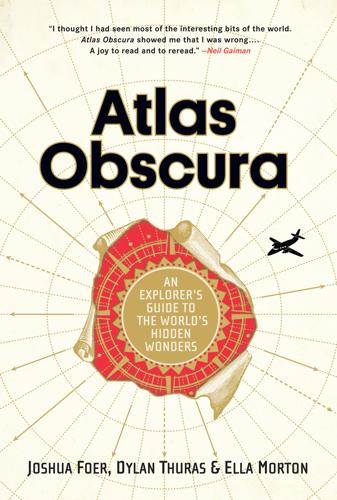
Atlas Obscura: An Explorer's Guide to the World's Hidden Wonders
by
Joshua Foer
,
Dylan Thuras
and
Ella Morton
Published 19 Sep 2016
From this moment of clarity came Lombroso’s theory of anthropological criminology, which posited that lawbreakers were born “savage,” physically reminiscent of apes and lower primates. Large protruding jaws; low, sloping foreheads; high cheekbones; flattened or upturned noses; handle-shaped ears; large chins; hawk-like noses; fleshy lips; hard shifty eyes; scanty beard; and baldness were all evidence of the “criminaloid” phenotype. As part of his studies, Lombroso collected biological and criminological specimens, including hundreds of skulls from soldiers, civilians, natives from “far-off lands,” criminals, and madmen. In 1892, he opened a museum in Turin, displaying the skulls and skeletons of murderers as well as wax models of their heads and the weapons used in their crimes.

Deep Nutrition: Why Your Genes Need Traditional Food
by
Catherine Shanahan M. D.
Published 2 Jan 2017
In vivo dedifferentiation of adult adipose cells, Liao, Yunjun et al, Guillermo López Lluch (editor), PLoS ONE 10.4 (2015): e0125254, PMC, web, April 15, 2016. “Adipocytes can highly express embryonic stem cell markers, such as October 4, Sox2, c-Myc, and Nanog, after dedifferentiating [34]. Thus, they may represent a reservoir of pluripotent cells in dynamic equilibrium with organ-specific cellular components and be capable of phenotypic transformation.” 553. Changes in nerve cells of the nucleus basalis of Meynert in Alzheimer’s disease and their relationship to ageing and to the accumulation of lipofuscin pigment, Mann DM, Mech Ageing Dev, April-May 1984, 25(1-2):189-204. 554. Mechanisms of disease: is osteoporosis the obesity of bone?
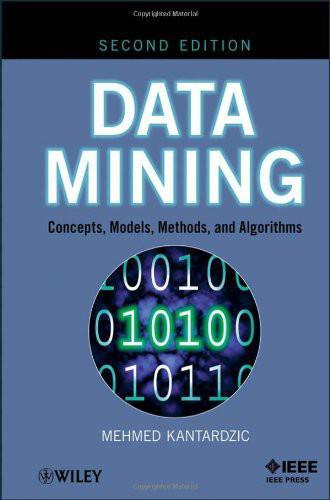
Data Mining: Concepts, Models, Methods, and Algorithms
by
Mehmed Kantardzić
Published 2 Jan 2003
Members with higher fitness values are more likely to survive and participate in mating or crossover operations. TABLE 13.1. Basic Concepts in Genetic Algorithms Concept in Natural Evolution Concept in Genetic Algorithms Chromosome String Gene Features in the string Locus Position in the string Allele Position value (usually 0 or 1) Genotype String structure Phenotype Set of characteristics (features) As a general-purpose optimization tool, GAs are moving out of academia and finding significant applications in many other venues. Typical situations where GAs are particularly useful are in difficult optimization cases for which analytical methods do not work well.
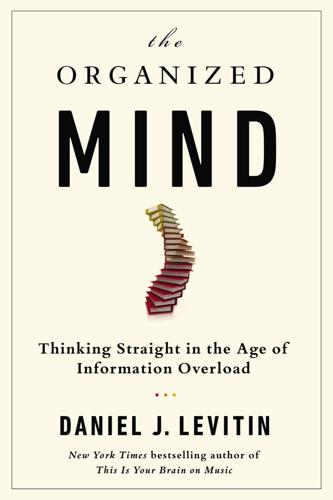
The Organized Mind: Thinking Straight in the Age of Information Overload
by
Daniel J. Levitin
Published 18 Aug 2014
Psychological Science, 14(1), 74–76. and, Nadel, L., Samsonovich, A., Ryan, L., & Moscovitch, M. (2000). Multiple trace theory of human memory: computational, neuroimaging, and neuropsychological results. Hippocampus, 10(4), 352–368. openness to new experience, conscientiousness Goldberg, L. R. (1993). The structure of phenotypic personality traits. American Psychologist, 48(1), 26–34, p. 26. predictor of many important human outcomes Schmidt, F. L., & Hunter, J. E. (1998). The validity and utility of selection methods in personnel psychology: Practical and theoretical implications of 85 years of research findings. Psychological Bulletin, 124(2), 262–274, p. 262.

Energy and Civilization: A History
by
Vaclav Smil
Published 11 May 2017
Jane’s Encyclopedia of Aviation. New York: Portland House. Taylor, F. S. 1972. A History of Industrial Chemistry. New York: Arno Press. Taylor, F. W. 1911. Principles of Scientific Management. New York: Harper & Brothers. Taylor, N. A. S. 2006. Ethnic differences in thermoregulation: Genotypic versus phenotypic heat adaptation. Journal of Thermal Biology 31:90–104. Taylor, N. A. S., and C. A. Machado-Moreira. 2013. Regional variations in transepidermal water loss, eccrine sweat gland density, sweat secretion rates and electrolyte composition in resting and exercising humans. Extreme Physiology & Medicine 2:1–29.
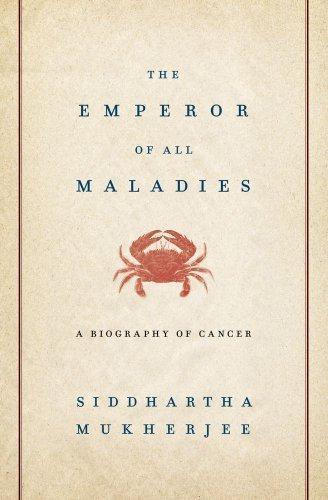
The Emperor of All Maladies: A Biography of Cancer
by
Siddhartha Mukherjee
Published 16 Nov 2010
King et al., Science 229 (1985): 974–76. 415 In the summer of 1986: Bazell, Her-2, and Dennis Slamon, interview with author, April 2010. 415 Dennis Slamon, a UCLA oncologist: Ibid. 415 a “velvet jackhammer”: Eli Dansky, “Dennis Slamon: From New Castle to New Science,” SU2C Mag, http://www.standup2cancer.org/node/194 (accessed January 24, 2010). 415 “a murderous resolve”: Ibid. 415 In Chicago, Slamon had performed a series: See, for example, I. S. Chen et al., “The x Gene Is Essential for HTLV Replication,” Science 229, no. 4708 (1985): 54–58; W. Wachsman et al., “HTLV x Gene Mutants Exhibit Novel Transcription Regulatory Phenotypes,” Science 235, no. 4789 (1987): 647–77; C. T. Fang et al., “Detection of Antibodies to Human T-Lymphotropic Virus Type 1 (HTLV-1),” Transfusion 28, no. 2 (1988): 179–83. 415 If Ullrich sent him the DNA probes: Details of the Ullrich and Slamon collaboration are outlined in Bazell, Her-2, and from Slamon, interview with author. 416 In a few months: D.
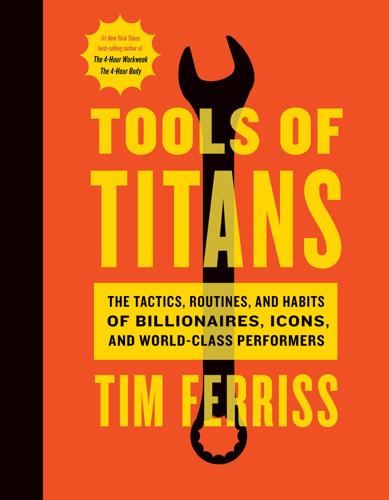
Tools of Titans: The Tactics, Routines, and Habits of Billionaires, Icons, and World-Class Performers
by
Timothy Ferriss
Published 6 Dec 2016
APOE Genotype: “This informs my thinking on a person’s risk for Alzheimer’s disease (AD). The gene is far from causal, meaning, having it does not cause AD, but it increases risk anywhere from a bit to a lot, depending on which variant you have and how many copies you have. For what it’s worth, the apoE phenotype (i.e., the actual amount of the lipoprotein in circulation in your body) is more predictive of AD than the gene and is obviously a better marker to track, however [a test is] not yet commercially available. Stand by, though. I’m working on it.” LDL Particle Number via NMR (technology that can count the number of lipoproteins in the blood): “This counts all of the LDL particles, which are the dominant particles that traffic cholesterol in the body, both to and from the heart and to and from the liver.

The Singularity Is Near: When Humans Transcend Biology
by
Ray Kurzweil
Published 14 Jul 2005
Anne-Mari Hakelien et al., "Reprogramming Fibroblasts to Express T-Cell Functions Using Cell Extracts," Nature Biotechnology 20.5 (May 2002): 460–66; Anne-Mari Hakelien and P. Collas, "Novel Approaches to Transdifferentiation," Cloning Stem Cells 4.4 (2002): 379–87. See also David Tosh and Jonathan M. W. Slack, "How Cells Change Their Phenotype," Nature Reviews Molecular Cell Biology 3.3 (March 2002): 187–94. 64. See the description of transcription factors in note 21, above. 65. R. P. Lanza et al., "Extension of Cell Life-Span and Telomere Length in Animals Cloned from Senescent Somatic Cells," Science 288.5466 (April 28, 2000): 66–9.

The Portable Atheist: Essential Readings for the Nonbeliever
by
Christopher Hitchens
Published 14 Jun 2007
But I happen to know exactly how life arose; it’s brand-new news, at least to the average layman like yourself. Clay. Clay is the answer. Crystal formation in fine clays provided the template, the scaffolding, for the organic compounds and the primitive forms of life. All life did, you see, was take over the phenotype that crystalline clays had evolved on their own, the genetic pass-down factor being entirely controlled by the crystal growth and epitaxy, and the mutation factor deriving from crystal defects, which supply, you don’t need me to tell you, the stable alternative configurations you need for information storage.

Merchants of Truth: The Business of News and the Fight for Facts
by
Jill Abramson
Published 5 Feb 2019
The celebrity stunt garnered a massive audience, earning Vice its biggest mainstream breakthrough to date. Vice was scoring cool points like its business depended upon it, which was true. Besides focusing on the weekly HBO show, Smith diversified Vice’s offerings, establishing new topical sections or verticals on the website that he hoped would win the loyalty of the growing number of hipster phenotypes appearing on its radar. The verticals included music, technology, food, and health and were given hip names like Noisey, Motherboard, Munchies, and Tonic. They were driven by advertising and optimized for it too. Brands preferred to make their buys for targeted audiences rather than a single general audience, and Vice wanted to please its clients.

How to Survive a Pandemic
by
Michael Greger, M.D., FACLM
id=dn8686. 3432. U.S. Department of the Interior, U.S. Geological Survey. 2005. The avian influenza H5N1 threat. August. www.nwhc.usgs.gov/publications/fact_sheets/pdf.s/ai/HPAI082005.pdf. 3433. Gambaryan A, Tuzikov A, Pazynina G, Bovin N, Balish A, Klimov A. 2005. Evolution of the receptor binding phenotype of influenza A (H5) viruses. Virology 344(2):432–8. 3434. Davis M. 2005. The Monster at Our Door: The Global Threat of Avian Flu (New York, NY: The New Press). 3435. Myers KP, Olsen CW, Setterquist SF, et al. 2006. Are swine workers in the United States at increased risk of infection with zoonotic influenza virus?

Wasps: The Splendors and Miseries of an American Aristocracy
by
Michael Knox Beran
Published 2 Aug 2021
As for their other defects—where does one begin? And yet they were pretty nearly alone, among Americans, in pursuing the purposes they did. For all their arrogance and resentment, they sought a path to a new life. I. The word “race” was, when Lodge wrote, used to describe not only what observers took to be each of several large phenotypical divisions among human beings, but smaller groups descended from common ancestors. When Lodge called America’s “well-to-do classes” of primarily New England stock a “dying race,” he was describing what today would be called a social group. II. His son Henry Cabot Lodge, a product of the WASP revival, did make a mark.
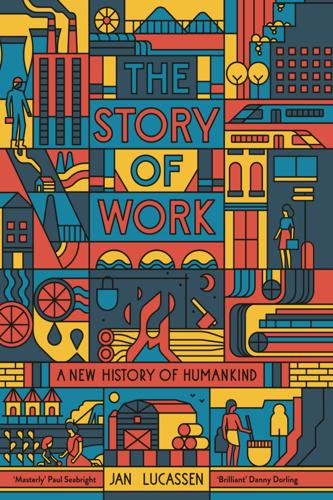
The Story of Work: A New History of Humankind
by
Jan Lucassen
Published 26 Jul 2021
The domestication process continues to this day: ‘Humans and their domesticates exist in the symbiotic relationship of mutualism, as each species benefits from the other, in terms of its reproductive success. . . . It continues with each generation, as humans, plants and animals interact and certain phenotypic forms and behaviors are selected for.’15 Farming was only able to develop on the basis of all these steps, encompassing all the activities to obtain food by means of cultivating plants and the controlled herding of animals. Today, we know of at least twelve different places in the world where agriculture developed independently.16 It is simply not feasible to deal with all these fascinating innovations, even briefly.

On the Edge: The Art of Risking Everything
by
Nate Silver
Published 12 Aug 2024
Kenney is a terrific player; a few months after the WSOP, she’d go on to cash two high-roller events in Cyprus for a combined total of almost $2 million. I mostly found the Ebony Kenney Show entertaining. But I also thought, “Holy shit, this is a lot of work!” As a balding, bearded forty-something white guy—basically the modal poker player phenotype—I always have the option of just sitting back and becoming part of the furniture. That’s not a choice for Black women like Kenney or Persinger. “I don’t know if I put undue pressure on myself as a result of the fact that there are so few women that look like me,” said Persinger. “Even when we went to Commerce, there’s a ballroom of easily over eight hundred people and I did not see even a handful of Black women there.”

Growth: From Microorganisms to Megacities
by
Vaclav Smil
Published 23 Sep 2019
Pubertal growth is a hormonally induced acceleration that slows down when reaching genetic limits and that is well described by a logistic growth function: annual additions peak at 8–9 cm between the ages of 13 and 14 and slow down to 1 cm between 17 and 18. Each of these curves is determined by the three parameters of the dynamic phenotype: initial length at birth, genetic limits of body length, and maximum velocity of length growth. Not surprisingly, examinations of specific populations show nonnegligible deviations from WHO’s global growth standards. A recent study in the world’s most populous nation—based on the growth of nearly 95,000 Chinese urban children and young adults (0–20 years of age)—showed that all measured variables differed from those standards at nearly all ages, with the most notable differences in height and body mass index (BMI) (Zong and Li 2013).
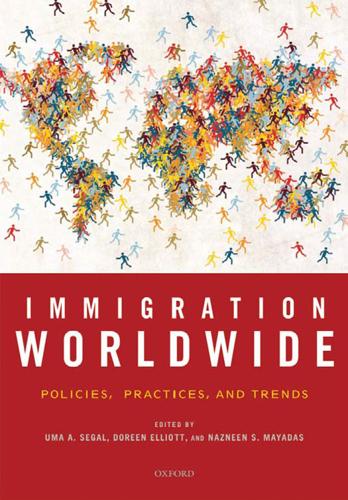
Immigration worldwide: policies, practices, and trends
by
Uma Anand Segal
,
Doreen Elliott
and
Nazneen S. Mayadas
Published 19 Jan 2010
Second, a phenomenon of relative integration-accommodation. This phenomenon applies to the group of immigrants composed of nationals from Cape Verde, Angola and Guinea Bissau. This group is integrated but at the same time accommodated and not assimilated. This is the result of, broadly speaking, phenotypes and prejudice of race and also of sex (especially in the case of the Brazilians) commonly shared by Portuguese nationals. Third, a phenomenon of integrationassimilation, applicable in the case of nationals from Brazil. This penetration of the Brazilian culture in Portugal, especially through TV programs and soap operas, has played a role in the relative knowledge, if not valorization, of the Brazilian way of life and of the Brazilian nationals as such.
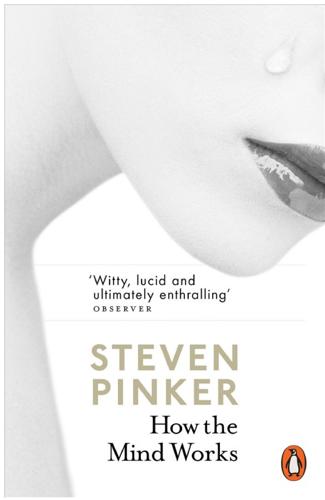
How the Mind Works
by
Steven Pinker
Published 1 Jan 1997
Preparedness and phobias: Specific evolved associations or a generalized expectancy bias? Behavioral and Brain Sciences, 18, 289–325. Davies, P. 1995. Are we alone? Implications of the discovery of extraterrestrial life. New York: Basic. Dawkins, R. 1976/1989. The selfish gene. New edition. New York: Oxford University Press. Dawkins, R. 1982. The extended phenotype. New York: Oxford University Press. Dawkins, R. 1983. Universal Darwinism. In D. S. Bendall (Ed.), Evolution from molecules to man. New York: Cambridge University Press. Dawkins, R. 1986. The blind watchmaker: Why the evidence of evolution reveals a universe without design. New York: Norton. Dawkins, R. 1995.

Blue Mars
by
Kim Stanley Robinson
Published 23 Oct 2010
The distances from spine to sternum in Andean natives are nearly twice as large as they are in people who live at sea level.” “Really! Like the chest cavities of birds, eh?” “I suppose.” “Then add big pecs, and big breasts. . . .” He didn’t reply. “So we’re evolving into something like birds.” He shook his head. “It’s phenotypic. If you raised your kids on Earth, their chests would shrink right back down.” “I doubt I’ll have kids.” “Ah. Because of the population problem?” “Yes. We need you issei to start dying. Even all these new little worlds aren’t helping that much. Earth and Mars are both turning into anthills. You’ve taken our world from us, really.

Why the West Rules--For Now: The Patterns of History, and What They Reveal About the Future
by
Ian Morris
Published 11 Oct 2010
Earth and Planetary Science Letters 235 (2005), pp. 741–51. ———. “Persistent Influence of the North Atlantic Hydrography on Central European Winter Temperature During the Last 9000 Years.” Geophysical Research Letters 34 (2007), pp. 10.1029/2006GL028600. Manica, Andrea, et al. “The Effect of Ancient Population Bottlenecks on Human Phenotypic Variation.” Nature 448 (2007), pp. 346–48. Mann, James. Rise of the Vulcans: The History of Bush’s War Cabinet. New York: Penguin, 2004. ———. The China Fantasy. New York: Penguin, 2008. Manning, J. G., and Ian Morris, eds. The Ancient Economy: Evidence and Models. Stanford: Stanford University Press, 2005.

Anathem
by
Neal Stephenson
Published 25 Aug 2009
So these characters may speak of carrots, potatoes, dogs, cats, etc. This doesn’t mean that Arbre has exactly the same species. Naturally, Arbre has its own plants and animals. The names of those species’ rough Earth equivalents have been swapped in here to obviate digressions in which, e.g., the phenotype of the Arbre-equivalent-of-a-carrot must be explained in detail. A very sparse chronology of Arbre’s history follows. None of this will make very much sense until one has read some pages into the book, but after that it may be useful for reference. -3400 TO-3300: Approximate era of Cnoüs and his daughters Deät and Hylaea
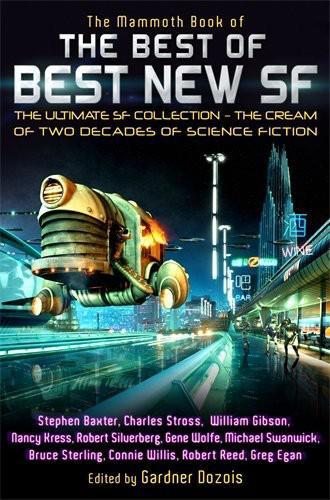
The Best of Best New SF
by
Gardner R. Dozois
Published 1 Jan 2005
She was ancestor-shaped, but obviously cheating; she spoke with perfect clarity, and no air bubbles at all. “Late sleeper! I’ve been waiting seven weeks for this!” Paolo feigned indifference, but he was fast running out of breath. He had his exoself convert him into an amphibious human variant – biologically and historically authentic, if no longer the definitive ancestral phenotype. Water flooded into his modified lungs, and his modified brain welcomed it. He said, “Why would I want to waste consciousness, sitting around waiting for the scout probes to refine their observations? I woke as soon as the data was unambiguous.” She pummeled his chest; he reached up and pulled her down, instinctively reducing his buoyancy to compensate, and they rolled across the bottom of the pool, kissing.

Betrayal of Trust: The Collapse of Global Public Health
by
Laurie Garrett
Published 15 Feb 2000
Russian Journal of HIV/AIDS and Related Problems 1 (1997): 225; Nabatov, A. a., Marsharsky, A. E., Emeljanov, A. V., et al., “HIV/AIDS epidemic among IVDUs in Ukraine: Different HIV-1 subtypes in different cities.” Russian Journal of HIV/AIDS and Related Problems 1 (1997): 253; Pashkova, T. A., Shchelkanov, M. Y., Sakhuria, I. B., et al., “Phenotypic features and AZT-susceptibility of HIV-1 isolates from Russian patients.” Russian Journal of HIV/AIDS and Related Problems 1 (1997): 254; Yaroslavtseva, N. G., Shchelkanov, M. Y., Er-emin, V. P., et al., “Serological Homogeneity of HIV-1 from Svetlogorsk epidemic source (1996) in Byelarus.” Russian Journal of HIV/AIDS and Related Problems 1 (1997): 257; Expert Group of the Joint United Nations Programme on HIV/AIDS.